
Special Thanks to. Group Programmes Unit, United Nations Department of Global Communications



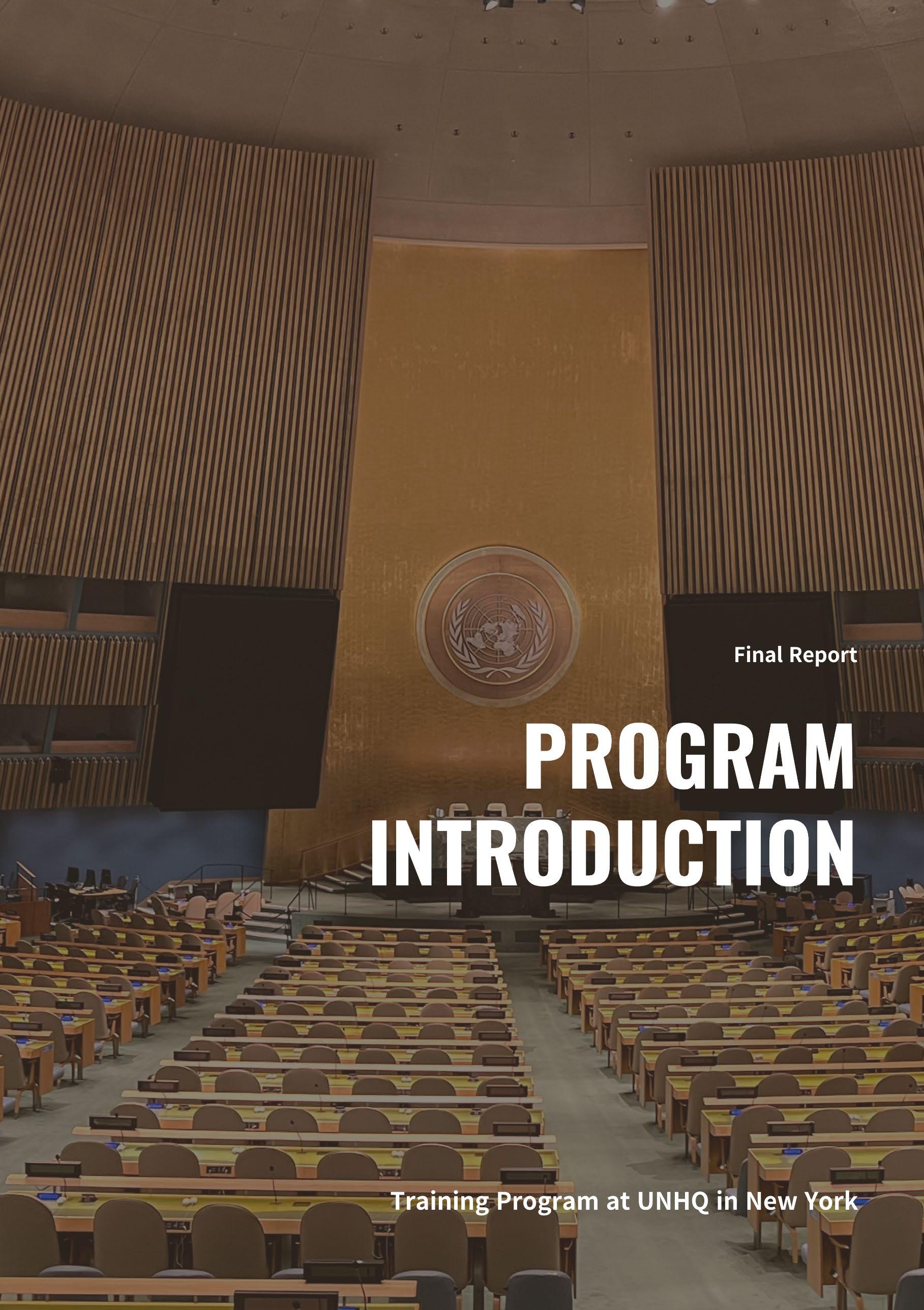


Special Thanks to. Group Programmes Unit, United Nations Department of Global Communications




The United Nations has been emphasizing the importance of youth empowerment and their engagement in global issues through various initiatives and programs. One of the most significant initiatives in this regard is the UN Youth Strategy, launched in 2018, which recognizes the critical role of youth in achieving the Sustainable Development Goals (SDGs). The strategy aims to empower youth and promote their participation in decision-making processes at all levels, from local to global.

The 'Training Program at UN Headquarters in New York' is an immersive and dynamic program designed to empower and engage global youth with the United Nations' agenda. As the world faces increasingly complex and interconnected challenges, the program seeks to equip the next generation of leaders with the knowledge, skills, and networks needed to address these pressing issues.
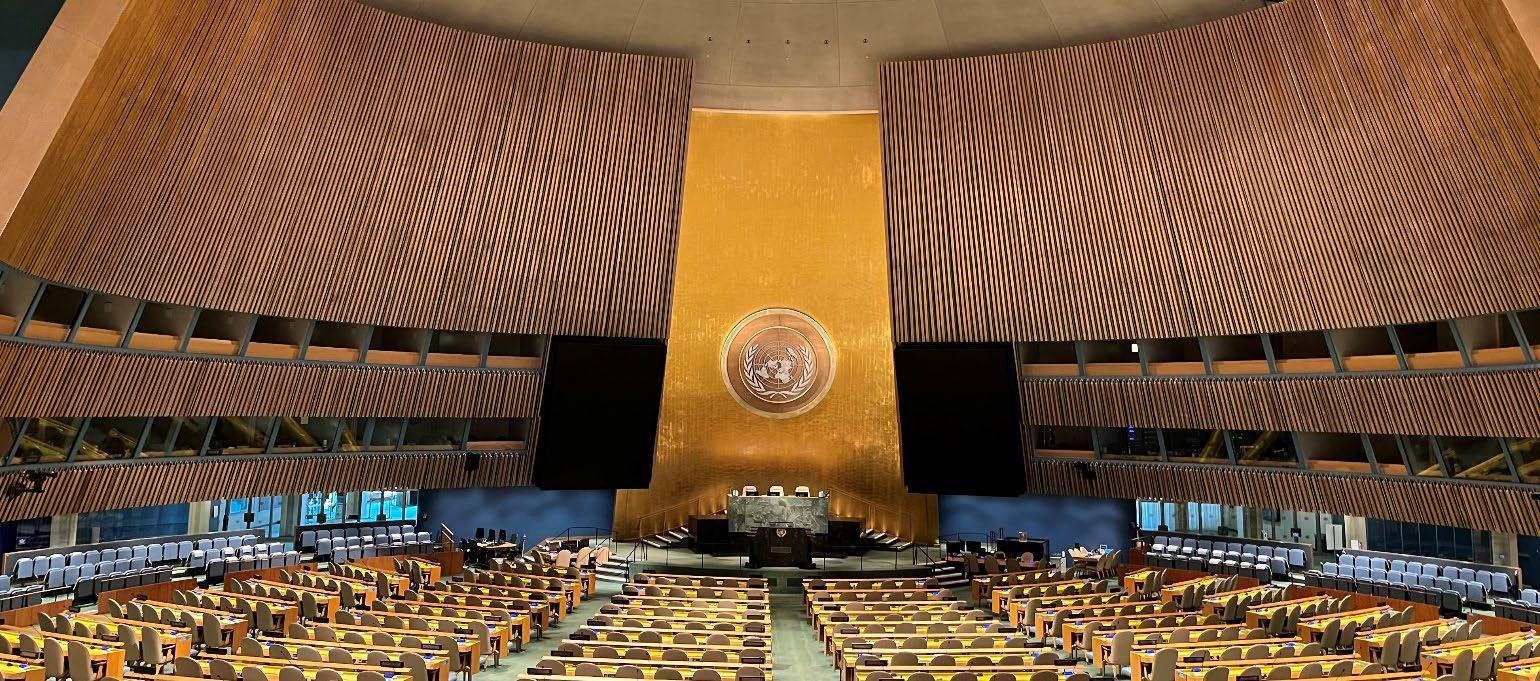
Hosted by Hope to the Future Association, a civil society representative associated with UN DGC, the program mainly focuses on the global matters dealt by the UN organizations and the member states. The program offers a comprehensive curriculum on the Sustainable Development Goals and the work of the UN, delivered by highlevel UN officials and subject matter experts. Through interactive workshops, lectures, and networking opportunities, participants will develop a multi-perspective understanding of the UN's role in addressing global challenges, as well as hone their critical thinking, public speaking, and leadership skills. Whether you aspire to work for the UN or simply seek to make a positive impact in your community, this program provides a unique opportunity to learn, grow, and connect with like-minded peers and UN officials. Join us in New York and become part of a global network of changemakers committed to building a more sustainable and just world for all.
Particularly, the 20th training program provides an opportunity to examine how well the United Nations carries out its stated aims to maintain international peace and security, protect human rights, deliver humanitarian aid, promote sustainable development, and uphold international law. In addition, students learn about not only the United Nations but also South Korea’s relationship with the United Nations as they build professional knowledge on pending issues of the international society.

On August 8th, 2017, Hope to the Future Association and the Yale MUN Secretariat signed an official MoU and agreed to a collaborative partnership that allowed the establishment of a team of representatives from South Korea. Based on this agreement, the association provides students with opportunities to participate in an international MUN conference and to receive training at the UN Headquarters.
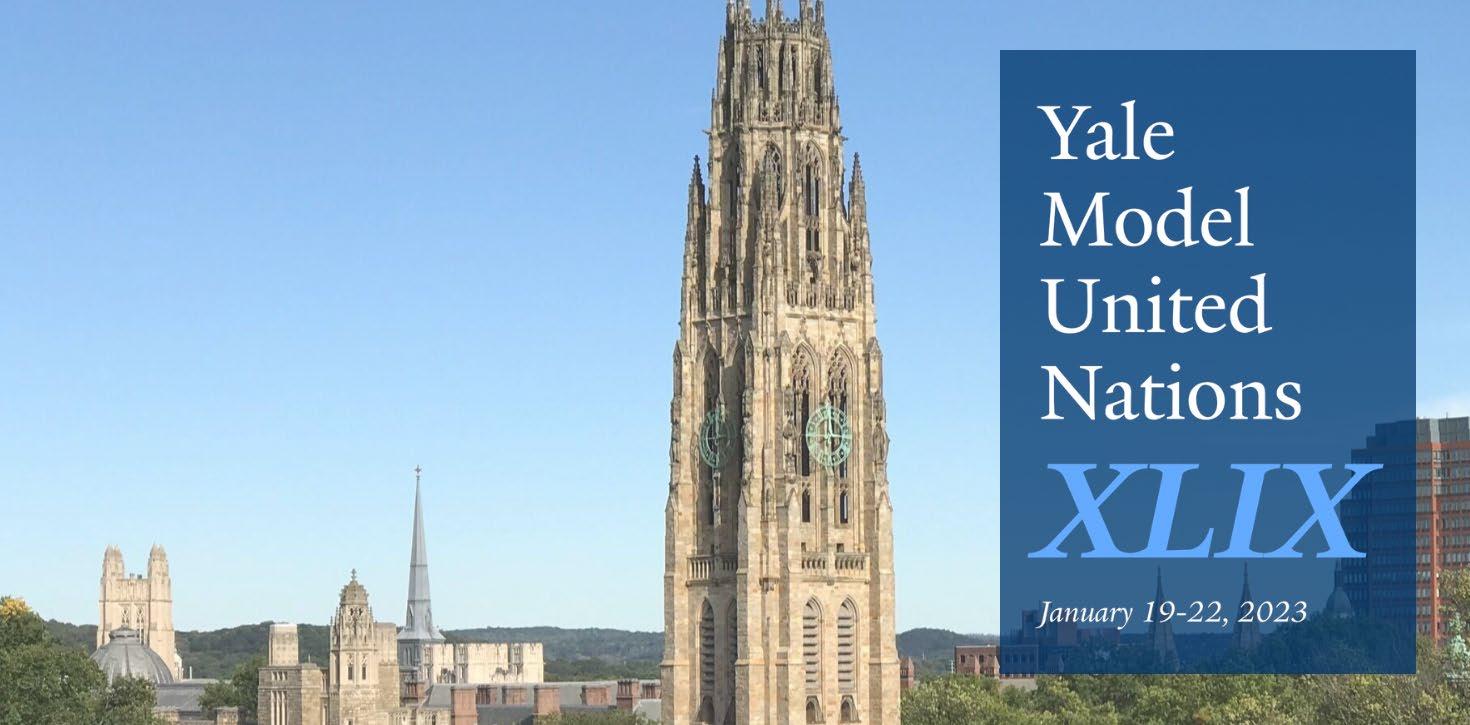
Yale Model United Nations (YMUN) is a four-day international relations simulation for high school students held annually at Yale University. Delegates from all over the world interact with one another through debate and diplomacy to solve complex challenges facing the world today. At YMUN, delegates take part in a simulation of the United Nations or another international body and gain better insight into the subtleties of international affairs. Students take on the roles of UN representatives and members of other international bodies and national cabinets allowing them to learn about the workings of international politics and problem-solving.
By engaging in topics concerning security, economic development, and social progress, delegates learn to navigate the complexities of international negotiation and teamwork, adopt new perspectives and develop comprehensive resolutions to pressing global issues. Building upon forty-six years of experience, YMUN XLVI strives to provide every delegate with a dynamic and enriching opportunity. This year’s YMUN had an organ dedicated to the NGO Programme, crisis committees and the traditional YMUN committee organs to embrace the diverse skill sets and interests that delegates bring to the conference.
The SDGs, build on the success of the Millennium Development Goals (MDGs) and aim to go further to end all forms of poverty. The new Goals are unique in that they call for action by all countries, poor, rich and middle-income to promote prosperity while protecting the planet. They recognize that ending poverty must go hand-in-hand with strategies that build economic growth and addresses a range of social needs including education, health, social protection, and job opportunities, while tackling climate change and environmental protection. While the SDGs are not legally binding, governments are expected to take ownership and establish national frameworks for the achievement of the 17 Goals. Countries have the primary responsibility for follow-up and review of the progress made in implementing the Goals, which will require quality, accessible and timely data collection.

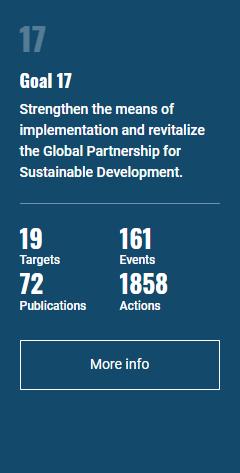
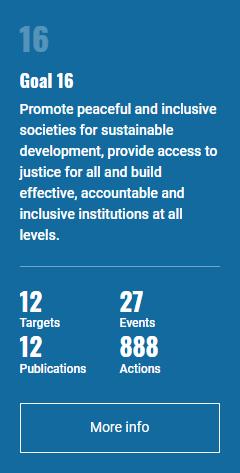

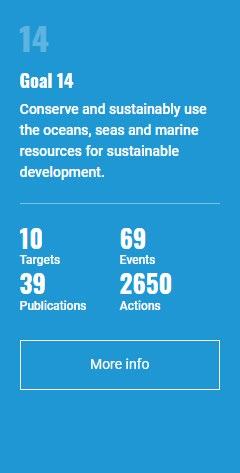

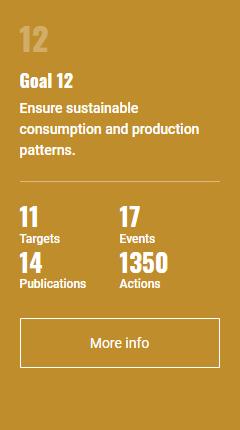
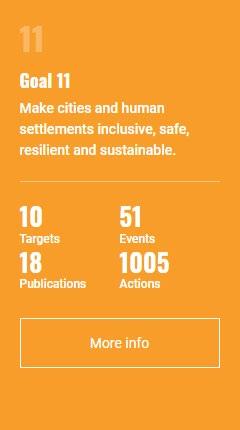
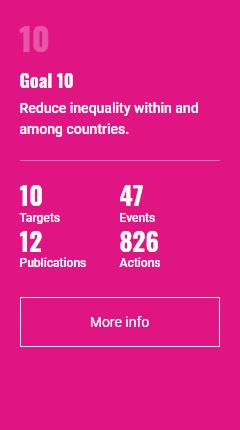

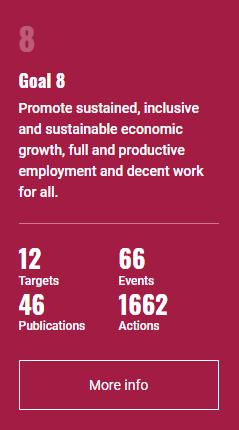
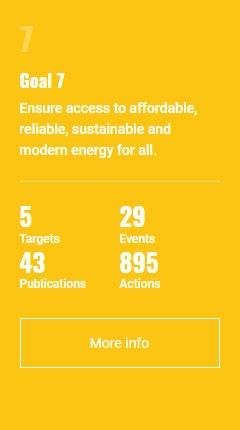


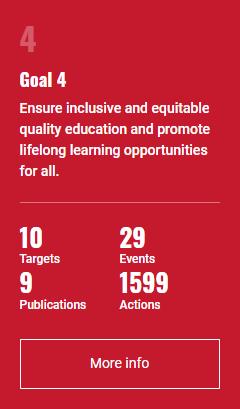
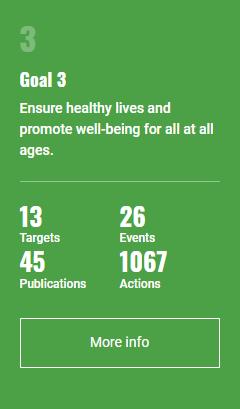
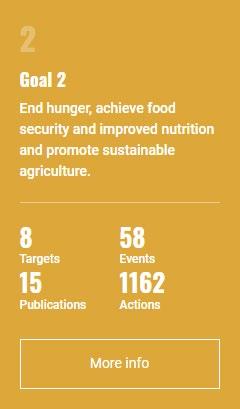



This Agenda is a plan of action for people, planet and prosperity. It also seeks to strengthen universal peace in larger freedom. We recognise that eradicating poverty in all its forms and dimensions, including extreme poverty, is the greatest global challenge and an indispensable requirement for sustainable development. All countries and all stakeholders, acting in collaborative partnership, will implement this plan. We are resolved to free the human race from the tyranny of poverty and want and to heal and secure our planet. We are determined to take the bold and transformative steps which are urgently needed to shift the world onto a sustainable and resilient path. As we embark on this collective journey, we pledge that no one will be left behind. The 17 Sustainable Development Goals and 169 targets which we are announcing today demonstrate the scale and ambition of this new universal Agenda. They seek to build on the Millennium Development Goals and complete what these did not achieve. They seek to realize the human rights of all and to achieve gender equality and the empowerment of all women and girls. They are integrated and indivisible and balance the three dimensions of sustainable development: the economic, social and environmental.
To preserve a livable climate, greenhouse-gas emissions must be reduced by half by 2030 and to net zero by 2050. Bold, fast, and wide-ranging action needs to be taken by governments and businesses. But the transition to a low-carbon world also requires the participation of citizens – especially in advanced economies.
ActNow is the United Nations campaign for individual action on climate change and sustainability.
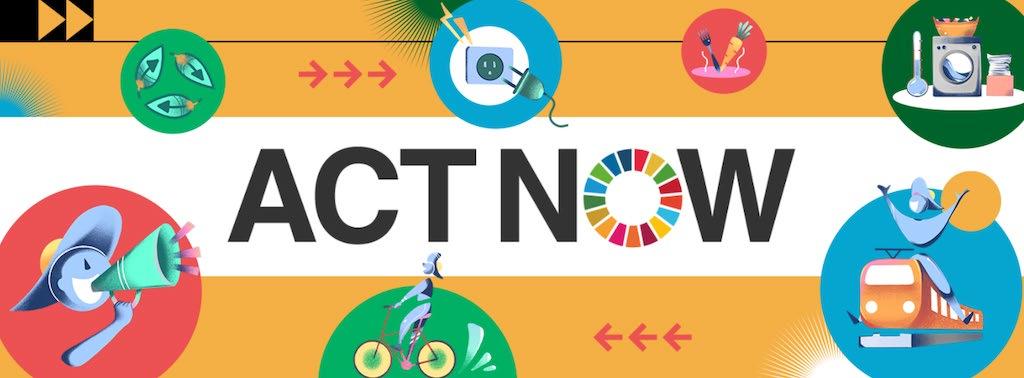
Every one of us can help limit global warming and take care of our planet. By making choices that have less harmful effects on the environment, we can be part of the solution and influence change.
Use the app to log your actions and contribute to the global count. (URL: https://actnow.aworld.org/)
A group of speakers from the United Nations or international organizations consists of a diverse and knowledgeable team of experts who work collaboratively to address a wide range of global issues and challenges. These speakers are typically drawn from various fields such as economics, politics, social justice, human rights, and the environment.
These speakers bring with them a wealth of experience and expertise gained from working in different countries and cultures, which helps them to bring a global perspective to the global youth who are willing to take action worldwide.


Jackie Cheng
Economic Affairs Officer at the UN Department of Economic and Social Affairs (UNDESA)
Keywords
Technology and Development, Data Economy

Sustainable Cities
Christopher Williams
Director at the UN-Habitat
Keywords
Urban Development, Cooperation Facilitation
Matthieu Cognac

Senior Multilateral Cooperation Specialist at the International Labour Organization (ILO)
Keywords
Labour Rights, Youth Employment, Youth Rights at Wor
South Korea and the United Nations
Hwang Joon-kook
Permanent Representative of South Korea to the United Nations
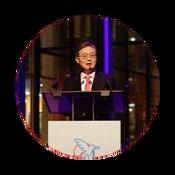
Keywords
Ambassador to the United Kingdom (2016-2018), North Korean Nuclear Affairs

SDG 9 until 2030
Ralf Bredel
Director and Representative of UN Industrial Development Organization (UNIDO) to the United Nations
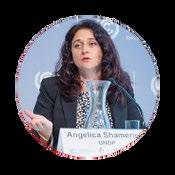
Keywords
Industrial Development, Progress by Innovation
SDG 9 until 2030

Angelica Shamerina
Environmental Specialist at the UN Development Programme (UNDP)
Keywords
Capacity Building, Green Enterprises
Global Citizenship and SDGs
Eun Hee Jung
Founder and President of the IVECA International Virtual Schooling

Keywords
Transformation of Education, Virtual Exchange, Global Citizenship
Health and Development
Roy Small
Consultant of the UN Development Programme (UNDP)

Keywords
Health Security, Clean Industry
Sustainable Management of Water and Sanitation

Georgette Mrakadeh-Keane
Communications Consultant of the UN Department of Economic and Social Affairs (UNDESA)

Keywords
Water Innovation, Ecosystem






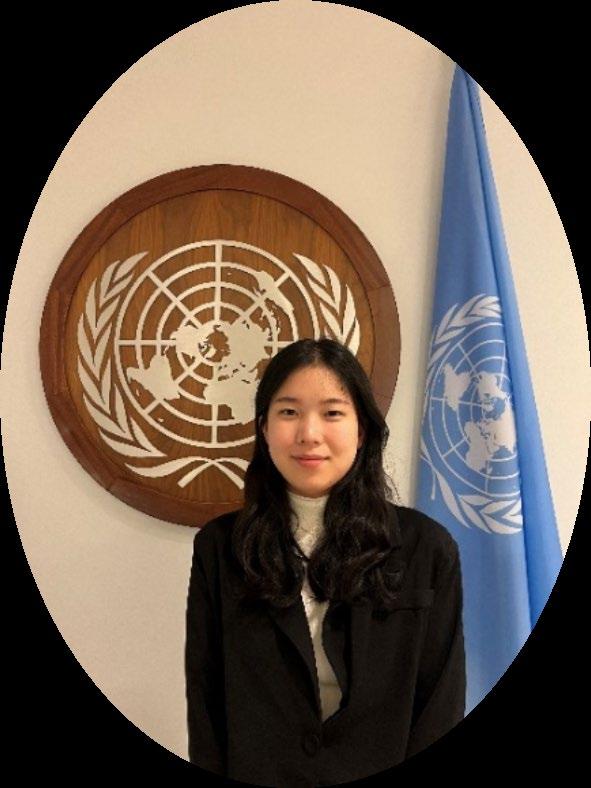





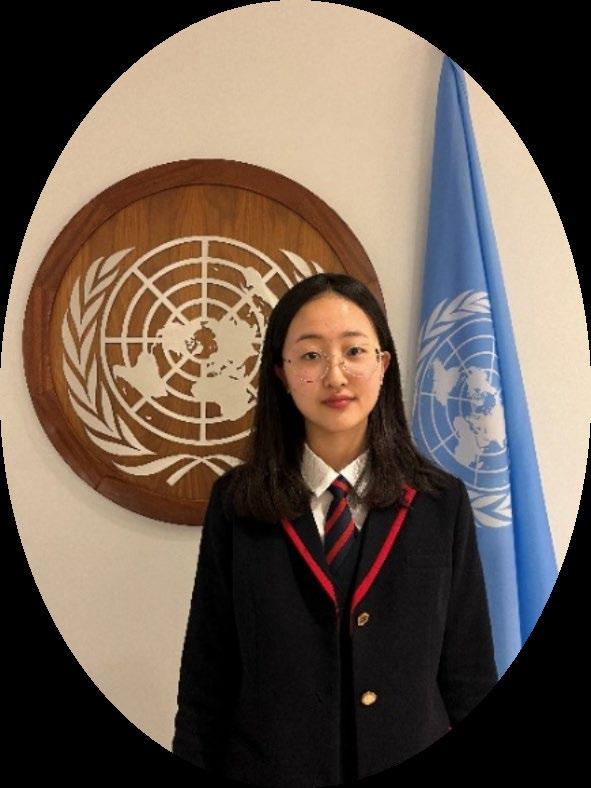
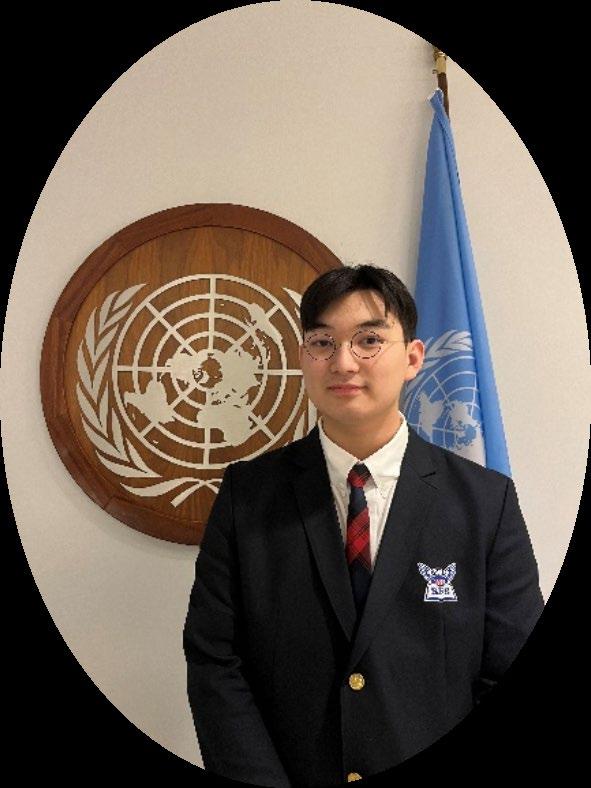
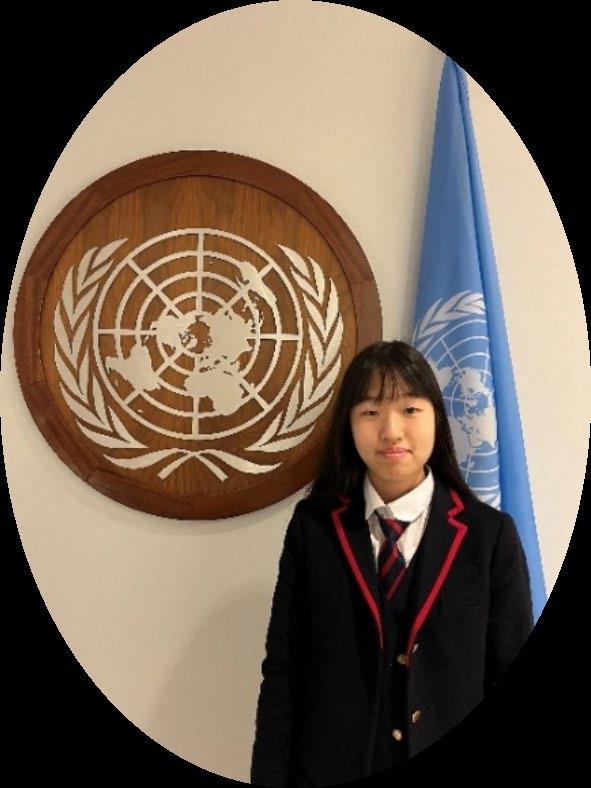

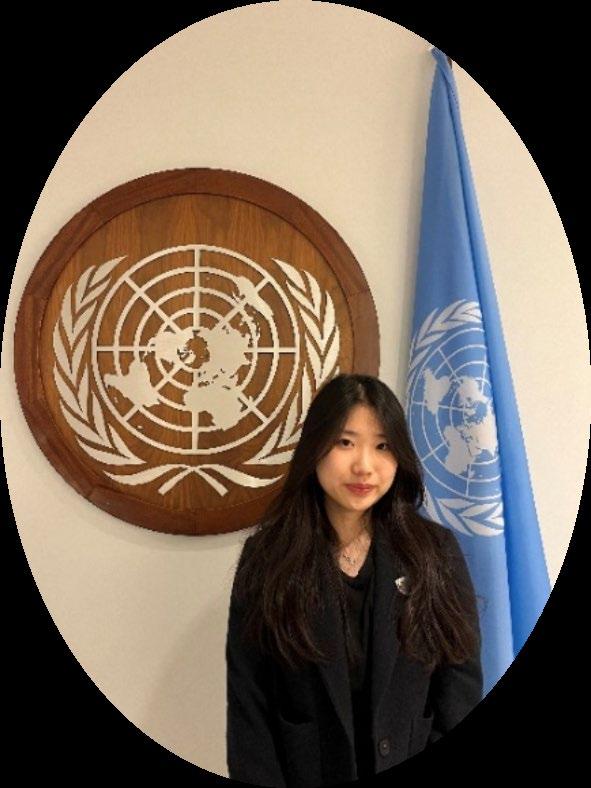





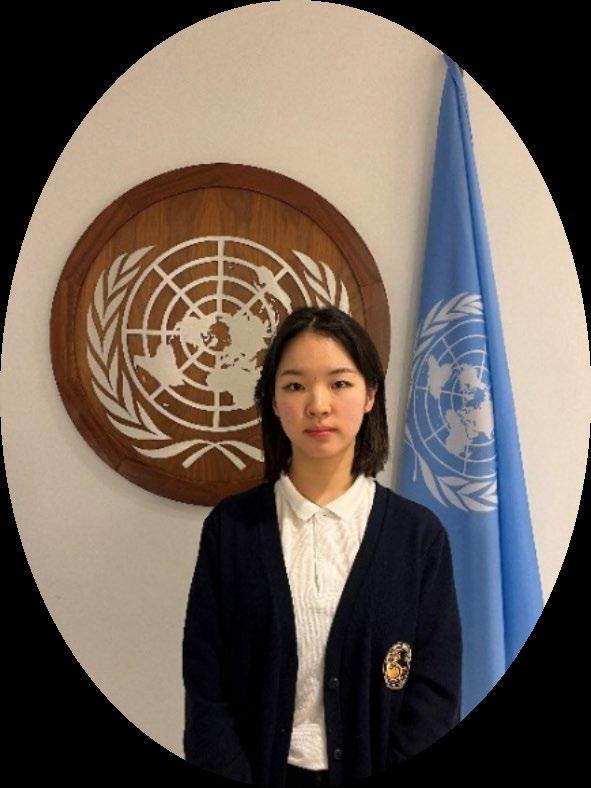

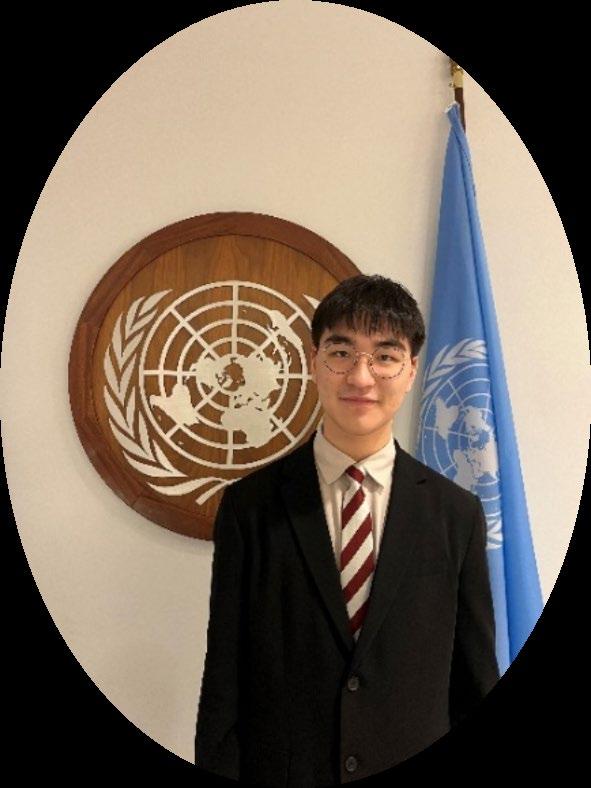

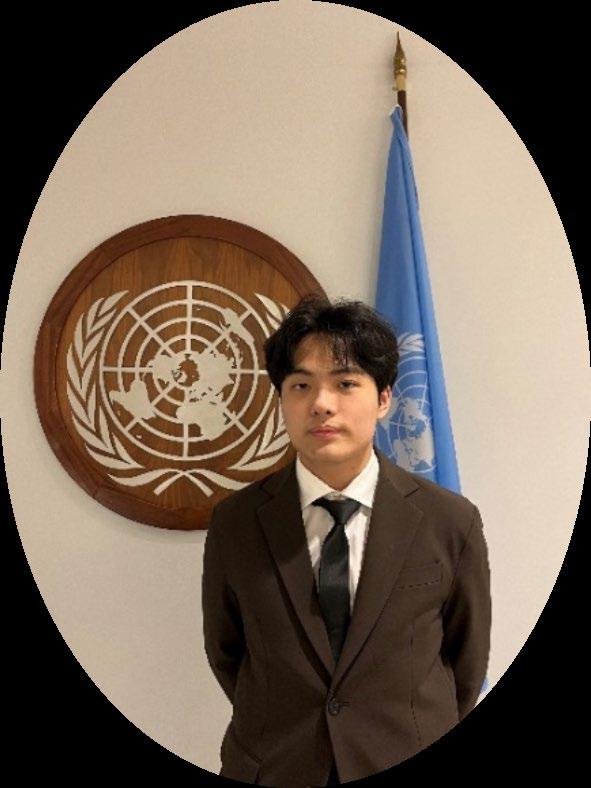
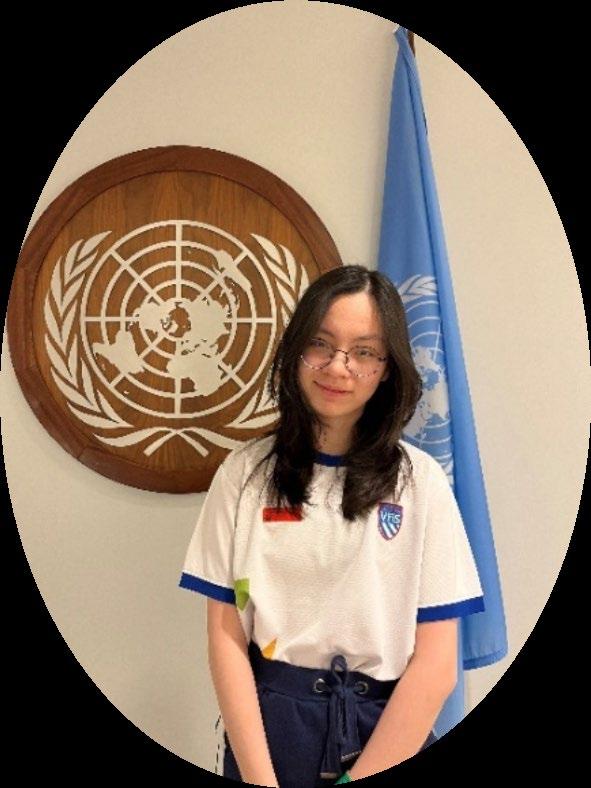



I. Background
A. Concept of Industrialization
B. Why We Chose This Topic
II. Lecture: UNIDO and SDG Goal 9

A. UNIDO in Brief
B. History of UNIDO
C. Importance of SDG #9
D. How to Measure Progress
E. How to Accelerate Progress Until 2030
III. Scrutinization of Industrialization Alongside the UNIDO’s Values
A. Introduction to Industrialization
B. History of Industrialization in India
C. India’s Industry in the Present
D. Issues Associated With Industrialization
E. Solutions to Achieve Sustainable Development

IV. Conclusion
V. Q & A Session
VI. Works Cited
During the 20th United Nations Training Program, Group 1 had a focus on investigating and presenting economic and social development. We covered the topics of UNIDO, sustainable development goals related to the organization, as well as an insight into industrialization, specifically industrialization in India. The lecture that was referenced primarily in our work was one by Ralf Bredel, director and representative of UNIDO, which gave us the basic information needed for our presentation. In this team report, Group 1 will explain the reason we selected a specific topic, describe what we have learned in the lecture delivered by Bredel, rephrase what we have presented, and briefly recall the Q&A session.
Our presentation topic was industrialization in India. We chose to focus on a specific region and conduct a general case study, as this approach allowed us to include moderately broad yet regionspecific information. The primary reasons for selecting this topic were India's vast history related to industry and the potential to investigate its current situation. India has been industrializing since the 19th century, and this history and environment have continued to impact its industries today. The long history of over a hundred years provided us with plenty of materials to investigate during our research. Furthermore, India's industry had already achieved global competitiveness, but it was also plagued by various multifaceted issues, making it suitable for research and presentation. We could delve into the root causes of these issues and find appropriate solutions during our preparation process.

UNIDO, which refers to the United Nations Industrial Development Organization, is a specialized agency in the UN with a mandate to promote and accelerate sustainable and industrial economic development. Its motto, “progress by innovation,” reflects its mission to gain progress sustainably by using innovative methods. It has a crucial role in the progress of SDG Goal 9 along with other goals related to industries. Its main priorities include reducing hunger by helping businesses grow, decreasing negative environmental effects by promoting the use of renewable energy, and supporting sustainable supply chains.
UNIDO’s work focuses on three interrelated thematic areas:
● poverty reduction through productive activities
● trade capacity-building
● energy and environment
Its assistance is based on two core functions: as a global forum generating and disseminating industryrelated knowledge; and providing technical support and cooperation. The UNIDO also provides its support through four mandated functions: technical cooperation; action-oriented research and policyadvisory services; normative standards-related activities; and fostering partnerships for knowledge and technology transfer.
SDG 9, which is the goal the UNIDO’s work revolves around, focuses on Building resilient infrastructure, promoting sustainable industrialization, and fostering innovation. To achieve this goal, the UNIDO takes various actions that can help eradicate poverty through the inclusive distribution of opportunities and the development of technologies as well as green industries.

The organization was previously established in 1966 before earning the role of being a specialized UN agency later in 1985. There are a total of 171 Member States who guide the Policymaking organs. Some recent declarations that are deemed a milestone when it comes to reaffirming the Organization’s

mandate are the Lima Declaration in 2013 and the Abu Dhabi Declaration in 2019. There are approximately 680 staff members in the UNIDO Secretariat along with 1,700 consultants originating from 135 countries. In November 2021, the General Conference appointed Gerd Muller as Director General of UNIDO.
Ralf Bredel emphasized that SDG 9: industry, innovation, and infrastructure is one of the most eminent, significant goals to be brought into focus. In 2023, SDG 9 is one of the 5 SDGs being acceded with UN-DESA and other institutions under the United nations. SDG 9 is an epitome of the key elements to a high standard of life and development for People, Prosperity, Planet, Partnership and Peace(5 Ps). In the social aspect, the goal correlates with SDG 1(no poverty), 2(zero hunger), 3(good health and well-being), 4(quality education), 5(gender equality), and 10(reduced inequalities); the environmental scope, it synergistically acts with SDGs 6(clean water and sanitation), 7(affordable and clean energy), 11(sustainable cities and communities), 12(responsible consumption and production), 13(climate action), 14(life below water), and 15(life on land).
Ultimately, alongside the economic goals of SDG 8(decent work and economic growth), the 9th goal envisions feasible, sustainable prosperity on the global stage. For instance, industrialization can initiate more employment and stimulate the structural transformation of informal, capricious economies into a regulated, ‘formal’ economy where “people” have higher shares of higher-productivity activities. This forecast is supported by robust empirical findings that industrialization is a major determinant of sustained economic growth and countries that have adopted innovations in the industry tend to develop at a faster, more stable pace.
SDG 9 not only fuels such schematic, and mechanical advancements but also acts as a stage for partnerships for the goals and visions. Through the fourth industrial revolution and the exponential uprise of frontier technologies, balancing equity with industrialization is the fundamental tenet to achieve the United Nation’s ultimate virtue: peace, dignity, and equality on a healthy planet.
The UNIDO measures progress using various types of indicators. Whether the targets of SDG 9 are the primary measurements of success for industrialization. There are twelve indicators of SDG 9 in total, which are divided into the areas of infrastructure, innovation, and industry. UNIDO focuses on six industry-related targets, which can be then separated into economic, social, and environmental targets. Reporting information on SDG progress occurs in various directions, such as nationally, thematically, regionally, and globally. In terms of national reports, each nation produces Voluntary National Reviews(VNRs) covering SDG progress of itself. Thematic reports are published by various UN organizations, including UNIDO which focuses on industrial development, UN Women which focuses on gender indicators, and ILO which focuses on decent work.


One of the critical components of achieving economic development is industrialization. Industrialization is defined as the process of transforming the economy of a nation or region from a focus on agriculture to a reliance on manufacturing. This process involves mechanized production methods, which are signified by using machines instead of manual work.
The benefits of industrialization make it a vital component of development in any society. The level of industrialization is even used as an indicator of how much society has developed.

One of the economic benefits of industrialization is how it can transform an informal economy into a formal economy. While an informal economy is comprised of economic activities, businesses, and jobs that are not regulated or protected by the state, a formal economy contains businesses and jobs that the government is fully aware of. Informal economies can hinder citizens financially since many positions are bound by verbal agreements and depend on daily pay, which is unstable for the worker. On the other hand, businesses in formal economies are properly regulated through taxation and labor laws, people are fairly paid and generally have better work environments. Industrialization can help create a formal economy since industries funded and regulated by the government would lead to the creation of formal jobs. It also increases economic productivity, which is the measure of output compared to the amount of input, by normalizing the use of mechanized production methods. There are social advantages to industrialization, as well. Since the formal economy enables the creation of many stable, well-paid jobs, more people can gain financial security. This process can reduce poverty levels overall and enhance the quality of life.
While it is true that industrialization is a key component of development, it also brings various issues. First, if industrialization occurs only in a certain region, it can result in overcrowding as many people migrate for job opportunities. Another problem that stems from overcrowding is the widening of the income gap. This happens because of the difference in revenue between the unemployed population or factory laborers and people who own capital. Second, industrialization can lead to environmental harm from pollution and emissions. While the technology that was used and developed since the first Industrial Revolution made the production process much more efficient, it was harmful to the environment and was the cause of carbon emissions as well as water and air pollution. The problems of industrialization will further be covered concerning the focal country, India, in this report.
This section of the report will investigate industrialization in market economies and people-based industries, such as India. Much like in the case of other countries, industrialization brought significant socio-economic changes in the nation.

Today, India is considered highly developed in terms of industrialization. India is one of the top 10 industrialized countries in the world. Various aspects of the manufacturing environment evaluated this level of industrial development; overall policies, tax policies, energy and transportation costs, workforce quality, and infrastructure/innovation. However, statistics show that India’s industry is greatly flawed. In recent years, India’s manufacturing value added(MVA) has been leading a positive trend albeit for an insignificant amount. Meanwhile, employment, emissions, and technology have been showing a negative trend. The nation would have to reverse the negative trends and accelerate its positive progress to reach the SDGs by 2030.
Since India is highly industrialized, many of the country’s industrial sectors are competitive in the global market, and take a notable portion of its income and exports. Some major industries in India are the steel industry, the chemical industry, the textile industry, and the plastic industry. India’s iron and steel industry is mainly comprised of public sector plants and offers employment to approximately a hundred thousand workers. As of 2022, India was the world’s top two steel producers. India’s textile industry can be separated into two groups; the mechanized sector run by factories and the relatively decentralized sector run by manual work. With both of these sectors combined, the textile industry is India’s largest industry, producing 20% of its industrial output. The chemical industry in India is highly diversified and is comprised of bulk chemicals, specialty chemicals, agrochemicals, and more. It is a prominent producer of agrochemicals and colorants. The plastic industry is developed as well, with the country being home to more than 20 thousand processing units.
Before and after the Industrial revolution
India dominated the world’s cotton textile markets in the 1750s, this is a result of their cheap labor; people were making high-quality calicoes at a cheap wage. The cotton textile industry was popular in many parts of the world such as Europe, America, and the Middle East which led to a high demand for exports. It wasn’t until the discovery of steam in 1815 that their textile industry growth was threatened, and spinning mules and power looms started taking over due to their efficiency. As a result, this reduced the value of their competitors Britain’s cotton by 85%, and challenged the country’s market on an international level.
Within a span of 5 years, by 1820, Britain became the leading world textile industry. India being under British rule led to their farmers being forced into producing cotton plantations to fuel factories. Indians at the time were still following the non-industrial model of a developing country, however, their people still believed that only industrialization could maximize economic growth. It wasn’t until 1854 when Bombay opened the first steam-powered cotton mill in Asia that they were introduced to the Industrial Revolution by their first Prime Minister Jawaharlal Nehru, an economic modernist. The
man believed in rapid industrialization, saying it was the most effective way to battle their country's poverty.
Following the start of the Industrial Revolution was a deadly famine in India, this is a result of the applied pressure on Indian farmers to grow crops for profit in place of crops for ration.
To make matters worse, they prioritized increasing production and provided little benefits to their workers; it was common to find children as young as 6 years old working for many hours in factories at the time. However, in contrast, the Industrial Revolution also brought benefits to the country with the introduction of modern technology. Assembly lines, factories, electricity development, and the implementation of railroads greatly contributed to the more efficient transportation of goods and materials. In the end, the laws shifted to their citizen’s benefit with funding of schools, and the act to cease child labour was put in place. Ultimately, the Revolution enhanced India’s economic production and gave its citizens a new lifestyle.
In 1956, India was introduced to its first industrial policy by an Indian professor named Prasanta Chandra Mahalanobis. The goal of the policy was to increase the output rate of India’s economy at the time in order to prioritize their investment goods. They also strived to explore the allocations of investment between different sectors of the economy. In short, this meant the application of heavy industry dominance; the term “heavy” in this situation refers to the items to be used in products such as iron, coal, oil, ships, etc,... It created a high barrier cost, high barriers to entry, and low transportability in their exports.
As a result, the quality of life changed after the application of the policy with the development of the public sector in India through increased participation. Their government was successful in its goal of pushing for a socialistic pattern of growth. For the first time in India’s history, a classification of industries was picked up and applied to their growth. Industries affected by this change at the time were those under government control, including those related to the strategic and basic domains. This led to a strengthening of the compulsory licensing provision. The model laid the foundation for India’s second five-year plan, paving the way for license raj. The second five-year plan was able to cover the period of April 1956 through March 1961.
Failing to meet its expectations due to its focus on capital-intensive factors, adequate employment opportunities weren’t able to be created as hoped. Because their strategy emphasized its focus too much on India being self-reliant in the economy, letting themselves raise the payment until it became a crisis in 1957; they became dependent on foreign capital and technology. The planned investments of the model did not match its savings, forcing economic targets to be met with deficit financing. Ultimately tumbling down to rising the stake of inflation by 30% by the time the fourth five-year plan came around in 1973.
This report will investigate industries in the present days with respect to the UNIDO’s key focuses:

● Creating shared prosperity
● Advancing economic competitiveness
● Safeguarding the environment

● Strengthening knowledge and institutions
Alongside the 4th industrial revolution, it is fundamental to scrutinize the impacts of the current global crises: the COVID-19 pandemic, the Russian-Ukrainian conflict, and climate change. Both manufacturing and industrial sectors are faced with precarious changes due to the ongoing acerbic aftermaths of crises; as much as the domestic market’s reliance on labor and a competitive market economy is formidable, in which citizens have most deciding power, and services account for around half of the GDP, hindrance of labor has is an onerous toil to go through. This is identified as a general trend on the global industrial stage.
Post-pandemic, industries are rapidly shifting to adjust to the ‘with COVID’ era, namely: the fall of edutech sectors as schools return to face-to-face learning accommodation, supply-side inflation surge capriciously affecting supply value chains and surging prices of raw materials, polarization of value added per capita due to the widening inequality gap, and more. Such phenomena simultaneously hamper UNIDO’s most eminent value shared prosperity. Nonetheless, a significant portion of the aforementioned hurdles is expected to rebound as the global market eventually recuperates and increases the aggregate manufacturing output.

Majority of less economically developed countries(LEDC) utilizes the geography of global production post-pandemic as a stratagem. Trade unions and intergovernmental associations such as the EU and ASEAN are increasingly relied upon to establish a resilient chain of cooperation. Prominently, the Asia-for-Asia supply chain has served as a pillar for Asian nations to achieve fair, shared prosperity and overcome the pandemic.
Ultimately, the UNIDO Industrial Analytics Platform highlights two key measures to be taken throughout these global crises. Firstly, digitalization can be achieved on a national scale, for example, through the Indian government's <Digital India> programme and by utilizing frontier technologies. Secondly, product upgrading can play a role in sophisticating global value chain literature by investing in R&D, codified knowledge, and ICT solutions. Concatenating key elements to balance technological and equitable industrialization can upsurge the potential of developing countries.

Not only is industrial output the key value of the UNIDO but accentuating climate compatibility is integral to tackling the ongoing global-scale climate crisis. In coordination with SDG indicator 9.4.1(CO2 emission per unit of value added), there is an alarming need to delve into market structure and its sustainable reformation. Status quo, the industrial sector accounts for 1/3 of primary energy use and 2/5 of energy-related CO2 emissions on the global stage.
Within this focus, decoupling non-renewable energy usage from industrial development is fundamental. Resource decoupling indicates the detachment of unsustainable, overconsuming resources from industrialization to minimize wastage and pollution. Both absolute and relative resource decoupling can mitigate economic activity in different production stages: processing, construction, fuel infrastructure, and raw, natural, and synthetic materials.
India's ceramic industry is a meritorious example. The industry formerly released 110 million metric tonnes of coal per year and causes numerous health and humanitarian issues such as lung cancer and labor exploitation from children. Therefore, the Indian government, alongside the UNIDO's values, actively pushed the industry into resource decoupling and decarbonization, such as using the ceramics for absorption of high-temperature CO2 greenhouse gasses.
In order to achieve the UNIDO’s ultimate goal, inclusive and sustainable industrial development(ISID), a two-step guideline is implemented. Firstly, educators should strengthen normative knowledge that is value-based and specific toward indicators. Normative knowledge tackles key educational values but simultaneously embraces the spirit of the times and heritage of the economic site, thus can be pertained resiliently for the long term.
Secondly, institutional capacity could be developed through three perspectives: functional, educational, and humanitarian. Functional perspectives underlie analytics, research, and technical cooperation; educational programs can range from pilot projects to ephemeral policies, such as the GEF-UNIDO Cleantech programme for small and medium enterprises in India; and humanitarian perspectives can include deploying health personnel and staff to increase working conditions in rural, marginalized regions.

By revolving around the pivot of the UNIDO’s values, industries can efficaciously balance industrial development with equity, peace, and shared prosperity.

One of the main issues that occurred in India’s industrialization is the lack of infrastructures. To be specific, because of the energy crisis, India’s most of the state electricity boards are in failure and are in poor condition. Moreover, the existence of absence of transportation made rail transport
overburdened while road transport is troubled with many problems, and even nationwide highways in many places are in imperfect shape.
Another problem of India’s industries is the concentration of wealth in specific regions. Most of the country’s industries are focused in a few regions leaving out the large expanse of industrial establishments. These establishments are located in metropolitan cities such as Delhi, Kolkata, and Mumbai. For example, Mumbai is ranked the 10th largest financial city, has 6% of India’s GDP, and is a key field in scientific and nuclear fields. On the other hand, other regions such as Meghalaya, are struggling with poor conditions. In fact, 80% of India’s economy is informal these days. This concentration of wealth in India has resulted in regional inequality and uneven distribution of wealth. It has also encouraged the spread of violence and terrorism in various regions.
The country’s Industrial sector is also facing a problem due to inefficient management and bad policies in India. According to the Reserve Bank of India(RBI), about 170,000 industrial units in the country were sick, and these sick industries had outstanding bank credit. Moreover, problems such as difficulty in selling products, absence of management, conflict in distinct interest groups, uneconomical quantities of production, and wrong choices in products and processes are struggling with India’s industrialization.
Despite the efforts to help the country’s industrial sector, short-term and long-term loans from international agencies have done more damage to India’s economy. Though the problem is that new loans are accepted to pay the installments of the old loans. As a result, Of the $750 million, $667 million will come from the International Bank for Reconstruction and Development (IBRD) and $83 million from the International Development Association (IDA), the World Bank's preferred lender.


Because of the absence of suitably trained and skilled workers, it has become really challenging to regulate such highly sophisticated computerized machinery required for the industrialization of the country. Additionally, the inefficiency of personnel has been resulting in a large waste of resources in the industrial sector. Also, social elements such as the immobility of labor and capital, and the absence of proper industry and companies are also responsible for this slow-paced industrialization of India.

A circular economy is a sustainable, resource-efficient circular model of the economy that emphasizes three scopes of sustainable living: the ecosphere, the technosphere, and the socio-sphere. Balancing industrial development with production and resource efficiency and sustainability (environmental and humanitarian) elucidates inclusive and sustainable industrial development.
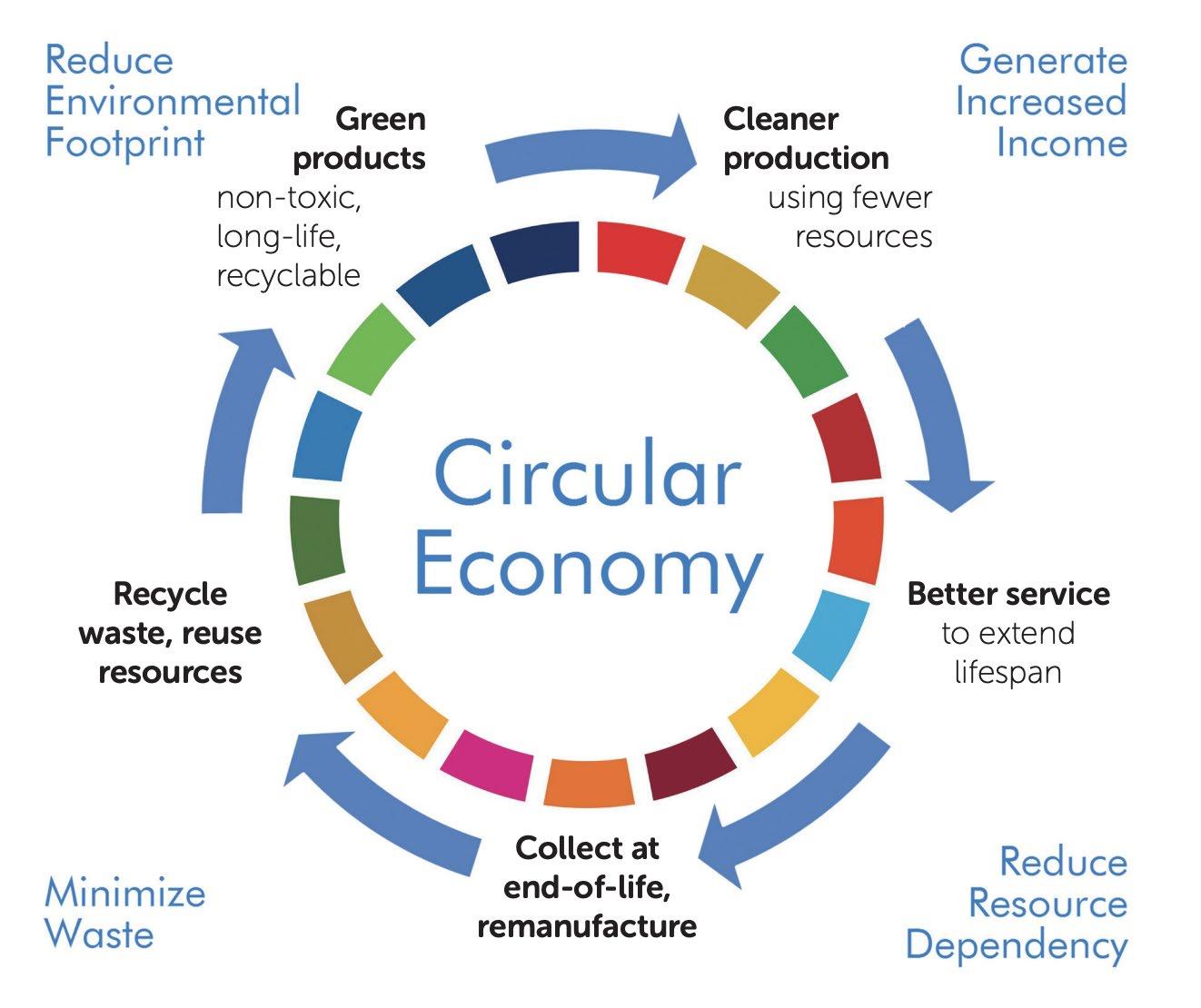
In a circular economy, resources and waste materials are reintroduced, remanufactured, repaired, optimized, and regenerated at the end of their first life into another industrial life. For instance, in India’s ceramic industry, the waste materials of spoiled ceramics could be used as a valuable asset and resource in another industrial process to trap CO2 GHG. Through a circular economy, the negative environmental externalities of industrialization can be diverted and recoursed. No producer, supplier, or consumer abrogates responsibility and actively takes on the role of a global citizen to accelerate the denouement of environmental degradation. Ultimately, a circular economy is not just a twodimensional, perpendicular implementation of policies, but instead, functions as a multidimensional symbiosis of each intertwined constituent of industries.
Broadly, a circular economy embraces multiple industrial concepts and ideologies namely resource decoupling, supply-chain resilience, and industrial symbiosis.

Firstly, the UNIDO Industrial Analytics Platform(UNIDO IAP) states that resource decoupling has the potential to become the tenet of the new industrialization paradigm as an element of the circular economy nexus. It enables the circulation of sustainable commercialized resources within industries by paving ‘pathways’ across industries and production chains. Not only are environmental and carbon footprints reduced, but the dependency on certain resources is diverted to implant independence in smaller firms and sole proprietors. This connects to the next overarching concept: supply-chain resilience.
Global policies and regulations mostly circulate within chains of industries, which include stakeholders such as large governors, enterprises, multinational companies, and mergers(vertical and horizontal). However, in densely populated LEDCs, micro and small-sized enterprises find difficulty in meeting these standards. Thus, the first kickstart to developing supply-chain resilience is introducing such marginalized parties into the supply chain to provide opportunities to thrive in the circular economy. For instance, by initiating pilot education programs for small firm owners in rural villages, knowledgeability, production efficiency, and labor mobility can be developed among workers and entrepreneurs.
To add on, it is essential such training, education, and procuring technologies do not bend towards particular sectors to coincide with UNIDO’s ‘inclusivity’ keyword. At this stage, the UNIDO’s affiliated organizations and personnel can be deployed as mediating stakeholders so that small enterprises and firm owners can openly accept advice and prosper together. The aforementioned frameworks all lead to one major vision: behavior change. Behavior change in developed and developing economies can eradicate threats to fair industrialization such as corruption, extortion, unrespected minimum wage, biased nepotism, poor work-and-life balance, fraudulence, and more.
A circular economy does not just promote resource efficiency, but negative outputs are introduced to the production process and tailored positively. This is named industrial symbiosis by the UNIDO. Industrial symbiosis was first introduced in 1989 by the directors of the R&D department at General Motors and has been applied to industrialization since then. The symbiosis of markets, firms, suppliers, startups, micro and small-sized enterprises, and ultimately, consumers, can synergistically act to reduce resource dependency and wastage by a greater fold. While one producer produces waste or byproducts, another producer in a complementary production stage could use the waste as a raw material.
For instance, UNIDO launched the Chemical Leasing Strategy 2015-2025 in 2015. A mainstream business model, the Chemical Leasing Strategy functions with one sole mission: to promote the resource-efficient and safe use of chemicals in an inclusive and cooperative manner. Collaborating with regional mediators such as National Cleaner Production Centre(NCPC) in Serbia, chemicals are leased and not purchased/traded between producers, suppliers, and consumers. Through efficient cooperation, chemical wastage due to bulk-buying and unreliable purchases can be minimized. Ultimately, such roadmaps can act to structurally reform informal economies into formal, resilient economies in the long run.

Another solution to the issues of Indian industries is the utilization of environmentally sustainable technologies. Sustainable technologies are crucial for ensuring sustainable industries without dependence on limited sources and have the potential to open new economic opportunities. Moreover, their development is a necessary process on the road to an effective circular economy. This section will provide an explanation of Indian industries’ current environmental issues as well as examples of sustainable technologies that they can make use of.
In current India, mechanized industries cause various environmental issues, including pollution and waste management. For instance, the iron and steel industry is a source of carbon emissions and air pollution. A change in the method of steel production would be needed because steel has a greater climate impact than any other industrial material; the production of a kilogram of steel involves a carbon dioxide emission of 1.98 tons. Also, the chemical industry is a producer of toxic waste and plastic waste, which compounds the already problematic waste management of the country. Moreover, the production process in the textile industry causes water pollution from dying and finishing production. Air pollution from the use of fossil fuels as energy must be reduced as well since excessive air pollution is a source of many health problems for citizens.
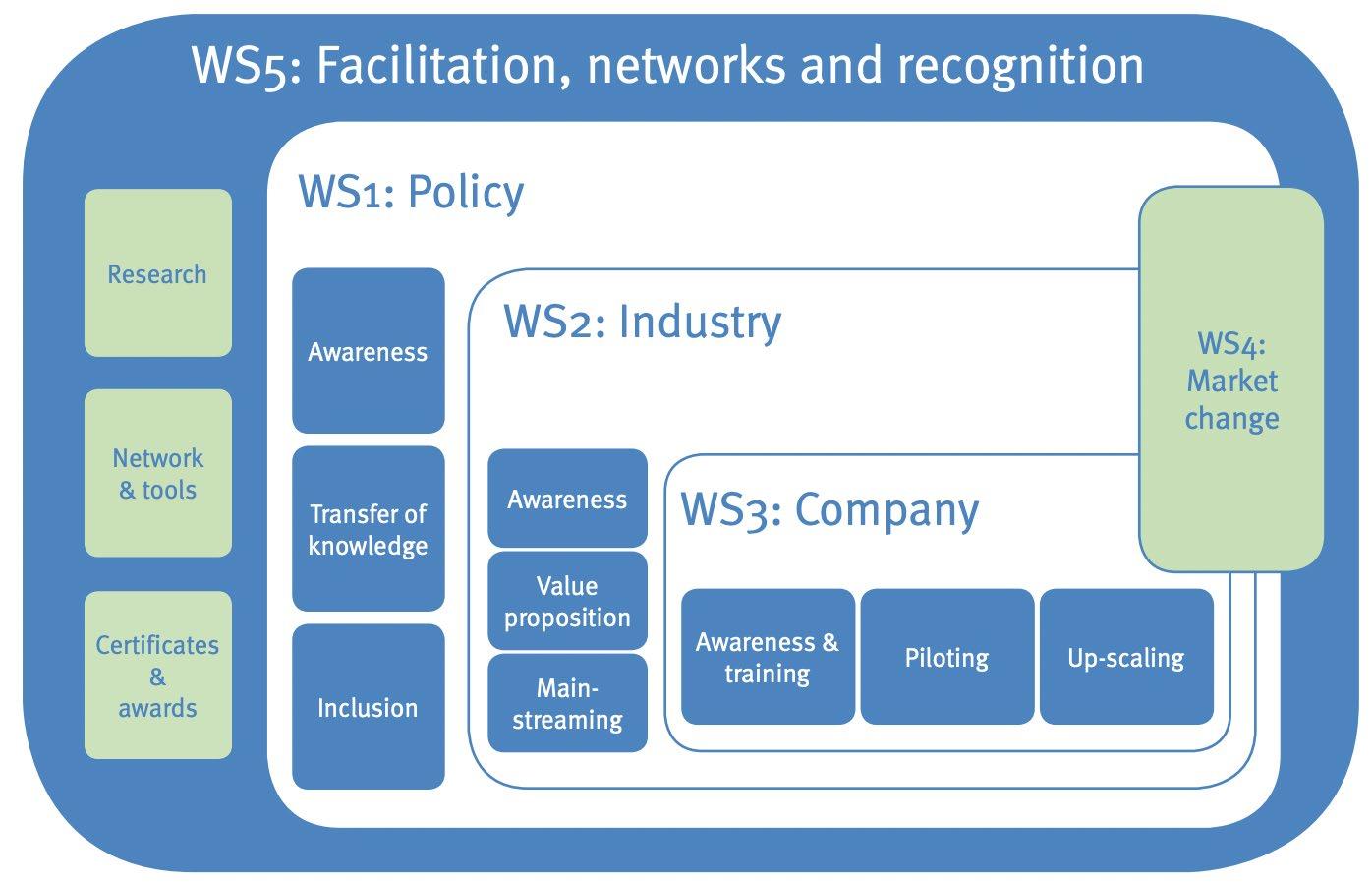
These issues indicate the need for innovations that enables the normalization of carbon-neutral and environmentally friendly industries. Sustainable industries can be achieved by improving existing methods of production to be more sustainable and developing new green industries.


The first example of technologies that can improve India’s industries is using renewables. Using renewable energy instead of fossil fuels can greatly decarbonize industries as a whole since this brings a change to the primary energy source itself. This solution is advantageous to India because it has massive potential for renewable energy, especially solar energy. It is viable as India has been showing a continued increase in the investment for renewables by public and private sectors and the renewable energy capacity. Some types of renewable energy have become cheaper than coal-fueled energy and solar energy in India already has benefitted the quality of life of people in villages through decentralized distribution methods. Sustainable energy production is expected to bring more socio-economic benefits to the country’s industries and by extension, citizens.
The second example is using biobased feedstocks such as plants, microorganisms, and fungi instead of petrochemical feedstocks in the plastic or chemical industry. This method is distinct from the previous one as it involves changing the raw materials, not the type of energy used in industrial production. Replacing the type of feedstocks can help industries go undergo a sustainable transition by reducing emissions and plastic waste. A gradual increase in the portion of biobased feedstocks would be needed since they are not easily used for their high costs.

The third example is embracing green chemistry. This can involve methods from streamlining previously complicated synthesis mechanisms in pharmaceuticals to reducing toxic chemicals used in dyes or paint. India’s chemical industry has the capability to advance green chemicals since it already has established chemical industry expertise. Because India’s chemical industry is a major player in the global market, a change in its chemical industry will have a significant global impact as well.

One of the solutions to India’s industrialization is to get funding for the technology of India. India is now planning for digital India, one of the world's biggest government programs to empower citizens digitally-transforming India into a digital society and learning economy superpower, stability, and partnership.
The first condition India has to be stable from funding is digital infrastructure as a utility to every citizen. To be specific, high-speed internet, a digital identity that is long-lived, unique, online, and authorizable to all citizens, a digital payment platform, and a safe digital cyber-space is needed.
The second thing is governance and services on demand. In more detail, there are changed services for enhancing the comfort of doing business, well-combined services across departments or jurisdictions, and electronic and cashless financial transactions.
Lastly, the last condition that digital India needs is the digital empowerment of citizens. Conditions such as universal accessibility of digital resources, services in Indian languages, availability of digital resources, and cooperative digital platforms have to be funded for the solution of the industrialization of India.
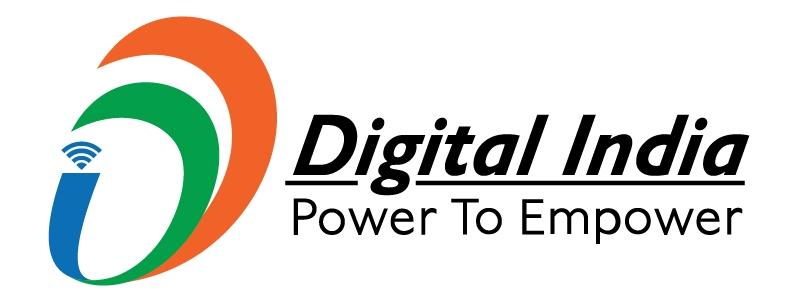
In 2022, a report came in by the Commitment to Reducing Inequality Index (CRII) indicated India’s improvement in battling inequality. The country was able to rise up six ranks from its initial ranking in 2020, going from 129th to 123rd in 2022. One major reason that is keeping the country behind in the run is their little focus on the gap between the rich and poor. To this day, the country has fallen by 73 rankings because they’re classified as a country without a national minimum wage.
Taking the basis of Sustainable Development Goal 10, India’s modern industry shifts its focus to reducing inequality; this could be done by creating opportunities and making employees more productive. There should be an existing minimum wage made to be made available for rural and urban areas; the current floor level wage of an Indian only amounts to 2.16$ per day.
It suggested a better application of the Progressive Income Tax System in an effort to establish higher tax rates for higher income brackets. The system allows for the collection of taxes rather than flat taxes

or regressive taxes. This works in the interest of the general public benefits, as a great number of resources from the collected tax can be used to fund a greater portion of the services that citizens and businesses rely on; like road maintenance and public safety.
For nearly 6 decades, the UNIDO has dedicated itself to ameliorate qualities of life by promoting inclusive and sustainable industrial development(ISID). Operating on four prominent pillars creating shared prosperity, advancing economic competitiveness, safeguarding the environment, and strengthening knowledge and institutions the institution has successfully pinpointed value points in different aspects: humanitarian, socioeconomic, political, industrial, technological, and environmental.
Implementing multifaceted paradigms and stratagem such as the Chemical Leasing Strategy 20152025, UNIDO-led SwitchMed programme in the Southern Mediterranean region, Resource Efficient and Cleaner Production (RECP) methodologies and more, UNIDO continues to assiduously and passionately cover issues underlying in rapid industrialization. Ultimately, industrialization is to be equitably and sustainably balanced, not neglecting marginalized regions like LEDCs and informal economy-based nations.
In order to concatenate and concretize the UNIDO’s pilot projects and propelled ideas, it is integral to be aware of and augment different value points: a circular economy, environmentally sustainable technologies, funding, reduced inequalities, and cross-cutting technologies that holistically bring them all together.

As the UNIDO continues to stretch out globally like network cables from the perpetual pivot of inclusive and sustainable industrial development(ISID), persecuted minorities and capricious stakeholders do not remain frangible, but instead, actively participate as constituents of the circular economy with resilience. Through empowerment programs that bridge socioeconomic differences per se, a resilient chain of circular society can be concatenated.
Q1: “What are some sustainable technologies that can be used to make industries more environmentally friendly? Either existing technologies or ones being developed. What is UNIDO doing to successfully implement them?”
“The sustainable technologies to make environmentally friendly industries are renewable energy technologies, such as solar energy and hydrogen energy. For example, these days, for sustaining the environment, Beijing has implemented a hydrogen center. UNIDO is working with countries that are accessing these technologies and then transferring them to other countries.”
Q2: “What industrial policies stand at the core of UNIDO’s operation?”
“First of all, there is no direct legal power of UNIDO policies. UNIDO policies have legal power in the countries, and there is a distinction between normative and non-normative. Also, the moment they ratify a convention makes it legally binding. If UNIDO wants to be part of the convention, they have to apply for labor rights. Lastly, building trust with the government is a moderation purpose.”
Q3: “Can you explain more about decoupling?”
“There are two types of decoupling: absolute and relative decoupling. First of all, relative decoupling is an individual industry that grows more efficiently. Next, absolute decoupling is when the entire country or region becomes more production-efficient. To explain, water plants participate in this process, and water is both on the input and output side. Water waste is not disposed to the environment. Therefore, they have to make sure waste water is not emitted into the environment. “
1. "Chemical Industry india." India Brand Equity Foundation, www.ibef.org/industry/chemical-industryindia.
2. "Contribution by some Major Industries." Toppr, www.toppr.com/guides/fundamentals-of-economicscma/indian-economy/contribution-by-some-major-industries/.
3. "Industrialization as the Driver of Sustained Prosperity." United Nations Industrial Development Organization, www.unido.org/industrialization-driver-sustained-prosperity.
4. "Industrialization: What It Is, Examples, and Impacts on Society." Investopedia, 4 Sept. 2022, www.investopedia.com/terms/i/industrialization.asp.
5. "The impact of textile production and waste on the environment (infographic)." European Parliament, www.europarl.europa.eu/news/en/headlines/society/20201208STO93327/the-impact-of-textileproduction-and-waste-on-the-environment-infographic.
6. "UNIDO in brief." United Nations Industrial Development Organization, www.unido.org/who-weare/unido-brief.
7. “12 Important Industrial Problems Faced in India.” PreserveArticles.com: Preserving Your Articles for Eternity, 30 Jan. 2012, https://www.preservearticles.com/food/12-important-industrial-problems-facedin-india/19759
8. “Analytics.” Industrial Analytics Platform, https://iap.unido.org/data/sdg-9-industry?p=IND.
9. “Goal 9 | Department of Economic and Social Affairs.” United Nations, United Nations, https://sdgs.un.org/goals/goal9.
10. “India Industrial Productiondecember 2022 Data - 1994-2021 Historical.” India Industrial ProductionDecember 2022 Data - 1994-2021 Historical, https://tradingeconomics.com/india/industrial-production. https://www.reuters.com/world/india/indian-shares-set-fall-risk-aversion-ahead-dec-fo-series-expiry-

2022-12-29/
11. “Industrialisation.” Edited by Anjaneyulu, Definition, Latest News, and Why Industrialisation Is Important?, ClearTax, 12 Jan. 2023, https://cleartax.in/g/terms/industrialisation.
12. “Industrialization in India: Problems and Obstacles.” Your Article Library, Yourarticlelibrary, 12 July 2015, https://www.yourarticlelibrary.com/industries/industrialization-in-india-problems-andobstacles/62884.
13. “Which Five-Year Plan Is Known as Mahalanobis Plan? Explore at Byju's IAS.” Edited by Byju's Admin, BYJUS, BYJU'S, 12 Aug. 2021, https://byjus.com/ias-questions/which-five-year-plan-is-known-asmahalanobisplan/#:~:text=Mahalanobis%20Plan%20was%20India%27s%20second,different%20sectors%20of%20t he%20economy.
14. Achievements and Key Insights from the Global RECP Programme 2012 - UNIDO. https://www.unido.org/sites/default/files/files/201902/UNIDO_EIP_Achievements_Publication_Final.pdf.
15. Admin. “Admin.” DiverseAsia, 28 June 2021, https://diverseasia.snu.ac.kr/?p=5309.
16. Albaladejo, Manuel, et al. “The Circular Economy: A Driver of Inclusive and Sustainable Industrial Development.” Industrial Analytics Platform, https://iap.unido.org/articles/circular-economy-driverinclusive-and-sustainable-industrial-development.

17. Attupuram, Advait. “Mahalanobis Growth Model and Why It Failed.” AdNomics, 14 Oct. 2020, https://adnomics749780310.wordpress.com/2020/10/04/mahalanobis-growth-model-and-why-it-failed/.
18. Banga, Karishma, and Karishma Banga is Research Fellow. “Digitalization and Product Upgrading in Indian Firms.” Industrial Analytics Platform, https://iap.unido.org/index.php/articles/digitalization-and-product-upgrading-indian-firms.
19. Buchholz, Katharina, and Felix Richter. “Infographic: Raw Materials Fetch Premium Prices.” Statista Infographics, 13 June 2022, https://www.statista.com/chart/27607/average-change-in-the-price-ofselected-raw-materials/.
20. Chopera, Rajiv. "Environmental Degradation in India: Causes and Consequences." International Journal of Applied Environmental Sciences, vol. 11, no. 6, 2016, pp. 1593-601, www.ripublication.com/ijaes16/ijaesv11n6_21.pdf.
21. Editor, Insights. “Sansad TV: Perspective- Inequality in India.” INSIGHTSIAS, 14 June 2022, https://www.insightsonindia.com/2022/06/14/sansad-tv-perspective-inequality-in-india/.
22. India CSR. “What Are the Effects of Industrial Revolution in India?” India CSR, 6 Oct. 2022, https://indiacsr.in/what-are-the-effects-of-industrial-revolution-in-india/#:~:text=Due%20to%2.
23. India CSR. “What Are the Effects of Industrial Revolution in India?” India CSR, 6 Oct. 2022, https://indiacsr.in/what-are-the-effects-of-industrial-revolution-inindia/#:~:text=Due%20to%20the%20industrial%20revolution,production%20of%20goods%20and%2 0materials.
24. Industrial Analytics Platform. iap.unido.org/data/competitive-industries?p=IND&s=CHN&t=142.
25. Kenton, Will. “Heavy Industry: Considerations for Large Scale Businesses.” Investopedia, Investopedia, 5 Jan. 2023,
https://www.investopedia.com/terms/h/heavy_industry.asp#:~:text=What%20Is%20Heavy%20Industry %3F,%2C%20oil%2C%20ships%2C%20etc.
26. Kotler, Philip. “12 Tools to Reduce Income and Wealth Inequality: Wicked7 Project.” The Wicked 7, 16 June 2021, https://www.wicked7.org/12-tools-to-reduce-income-and-wealth-inequality/.
27. Myers, Joe, and Ian Shine. "India invested record amounts in renewables last year – so what next for green power in the country?" World Economic Forum, 7 July 2022, www.weforum.org/agenda/2022/07/india-investment-renewables-green-energy/.
28. O'Neill, Aaron. “India - Distribution of Gross Domestic Product (GDP) across Economic Sectors 2021.” Statista, 10 Nov. 2022, https://www.statista.com/statistics/271329/distribution-of-gross-domesticproduct-gdp-across-economic-sectors-in-india/.
29. O'Neill, Aaron. “India - Distribution of Gross Domestic Product (GDP) across Economic Sectors 2021.” Statista, 10 Nov. 2022, https://www.statista.com/statistics/271329/distribution-of-gross-domesticproduct-gdp-across-economic-sectors-in-india/. https://iap.unido.org/data/quarterlyproduction?p=IND&s=KOR&t=142
30. Peplow, Mark. "Can industry decarbonize steelmaking?" Chemistry and Engineering News, 13 June 2021, cen.acs.org/environment/green-chemistry/steel-hydrogen-low-co2-startups/99/i22.
31. Rio, Dylan Furszyfer Del, et al. “How to Decarbonize the Ceramics Industry.” Industrial Analytics Platform, https://iap.unido.org/articles/how-decarbonize-ceramics-industry.
32. Sharma, Niharika. “India's Edtech Space Is Unable to Keep up with Post-Covid Setbacks.” Quartz, Quartz, 13 Oct. 2022, https://qz.com/indias-edtech-space-is-battling-post-pandemic-setbacks1849651502. https://techcrunch.com/2022/06/29/byjus-cuts-over-600-jobs-pushes-back-payments-for1-billion-acquisition/
33. Team, Vedantu Content. “What Were the Effects of the Industrial Revolution in India?” What Were the Effects of the Industrial Revolution in India?, 24 Aug. 2018, https://www.vedantu.com/questionanswer/what-were-the-effects-of-the-industrial-revolution-in-india-5b7ff361e4b0a50233a67b5b.
34. Tiseo, Ian. "Plastic industry in India - statistics and facts." Statista, 11 Nov. 2022, www.statista.com/topics/6902/plastic-industry-in-india/#topicOverview.
35. Two Aspects of 'Decoupling' (Source [3]). | Download Scientific Diagram. https://www.researchgate.net/figure/Two-aspects-of-decoupling-source-3_fig1_309491648.
36. UNIDO | United Nations Industrial Development Organization. https://www.unido.org/sites/default/files/files/2019-01/MTPF_Brochure_23-06-2017.pdf.
37. United Nations Industrial Development Organization. www.unido.org/unido-sdgs.

38. Vedantu. “Industrialization in India.” VEDANTU, Vedantu, 29 Nov. 2022, https://www.vedantu.com/commerce/industrialization-in-india.
39. West, Darrel M., and Christian Lansang. "Global manufacturing scorecard: How the US compares to 18 other nations." Brookings, www.brookings.edu/research/global-manufacturing-scorecard-how-the-uscompares-to-18-other-nations/.
40. World Bank Group. “World Bank Approves $750 Million Loan to India to Catalyze Private Financing and Support Economic Growth.” World Bank, World Bank Group, 29 June 2022, https://www.worldbank.org/en/news/press-release/2022/06/29/world-bank-approves-750-million-loan-
to-india-to-catalyze-private-financing-and-support-economic-growth.
41. “UNIDO in Brief.” Edited by UNIDO, UNIDO, https://www.unido.org/about-us/unido-brief.
42. The Green Forum. “Circular Economy: A Driver for Inclusive and Sustainable Industrial Development.” The Green Forum, 4 Mar. 2020, https://thegreenforum.org/blog/circular-economy-driver-inclusive-andsustainable-industrial-development.
43. United Nations Industrial Development Organization. “How to Decarbonize the Ceramics Industry.” UNIDO Inclusive and Sustainable Industrial Development, https://iap.unido.org/articles/howdecarbonize-ceramics-industry.
44. United Nations Industrial Development Organization. Circular Economy: An Industrial Approach to Achieving UN Sustainable Development Goals. UNIDO, July 2017, https://www.unido.org/sites/default/files/2017-07/Circular_Economy_UNIDO_0.pdf.
45. United Nations Industrial Development Organization. Chemical Leasing Strategy 2015-2025. UNIDO, https://open.unido.org/api/documents/4811741/download/Chemical%20Leasing%20Strategy%2020152025.pdf.



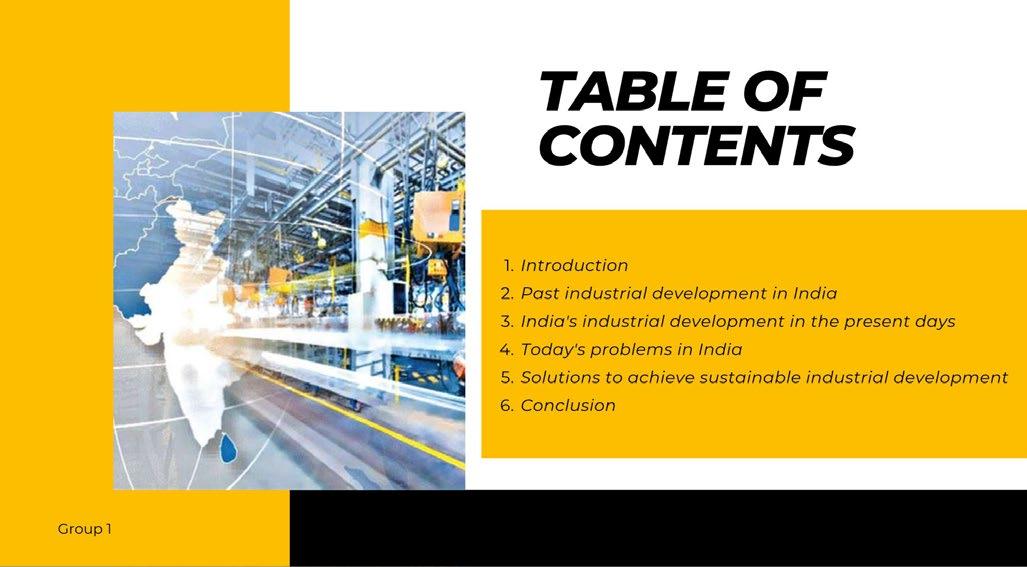

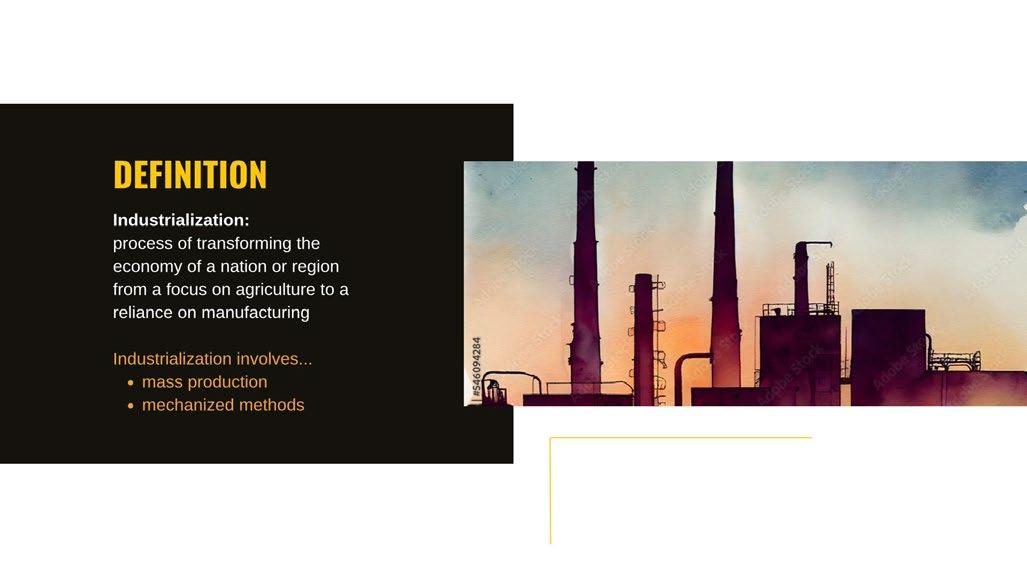





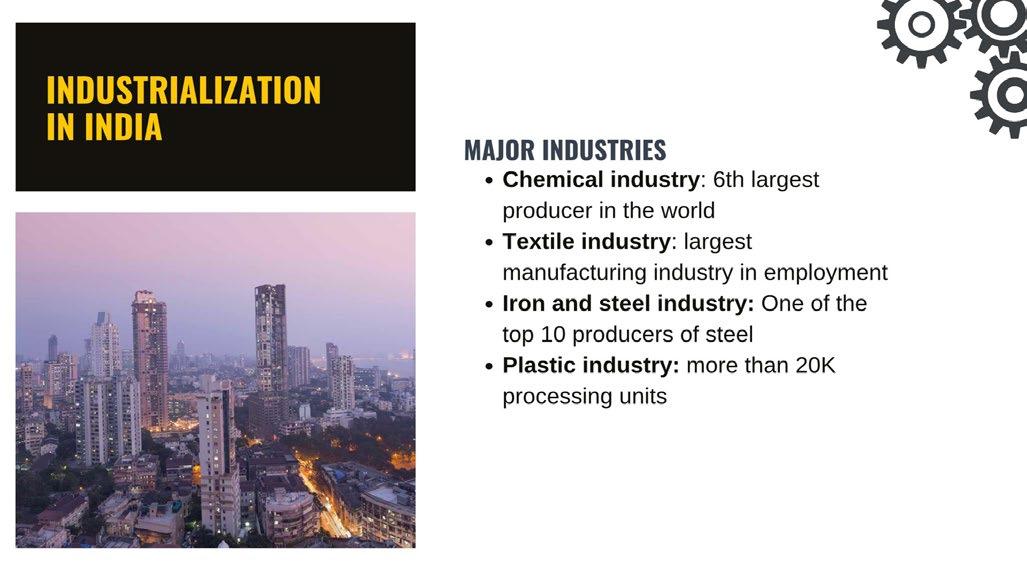



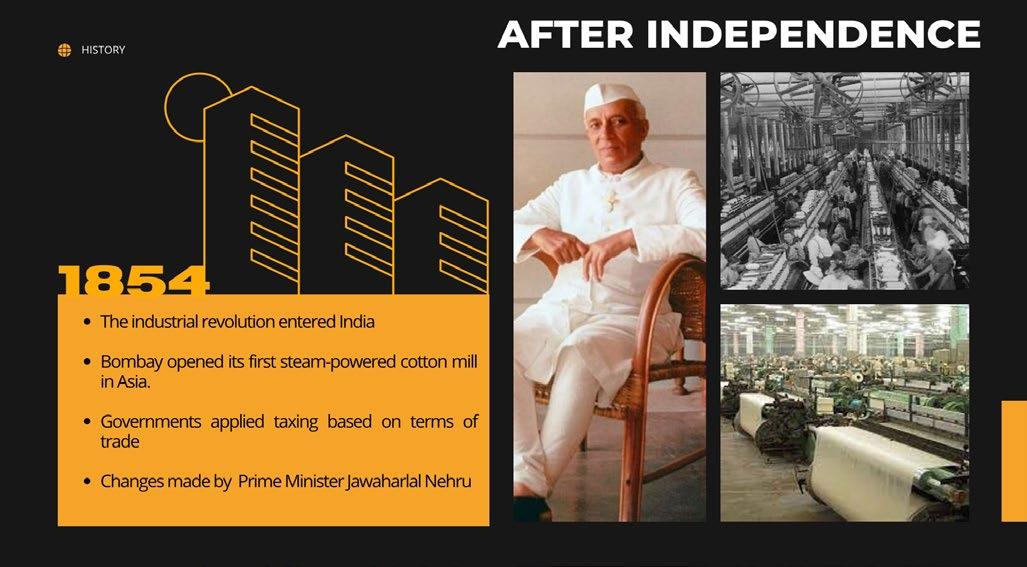




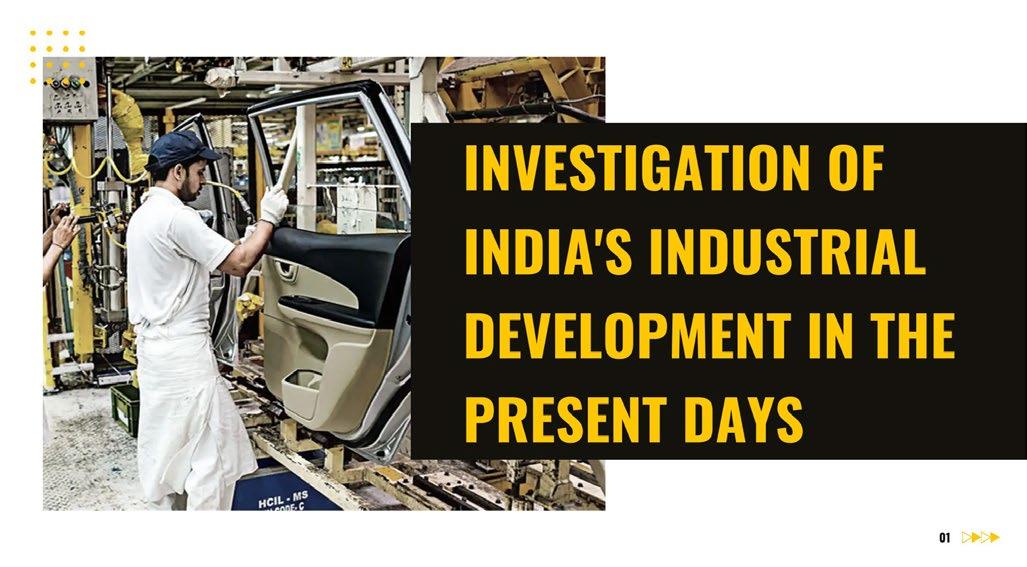




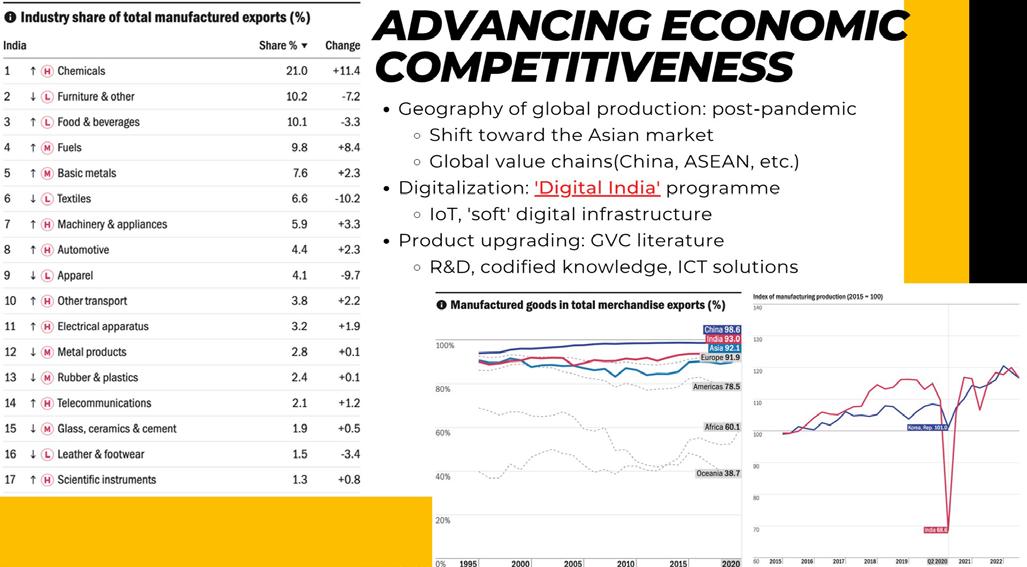
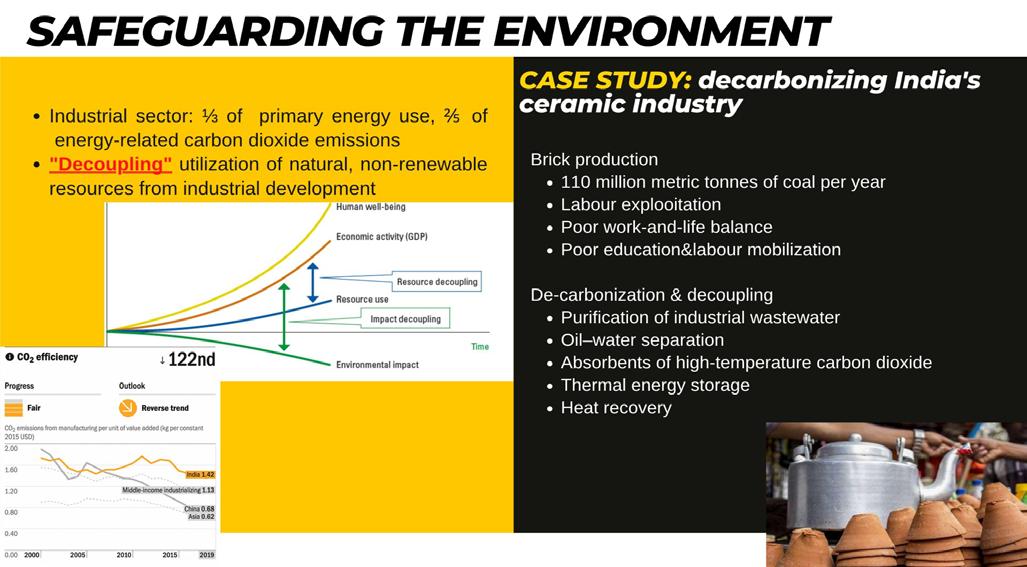
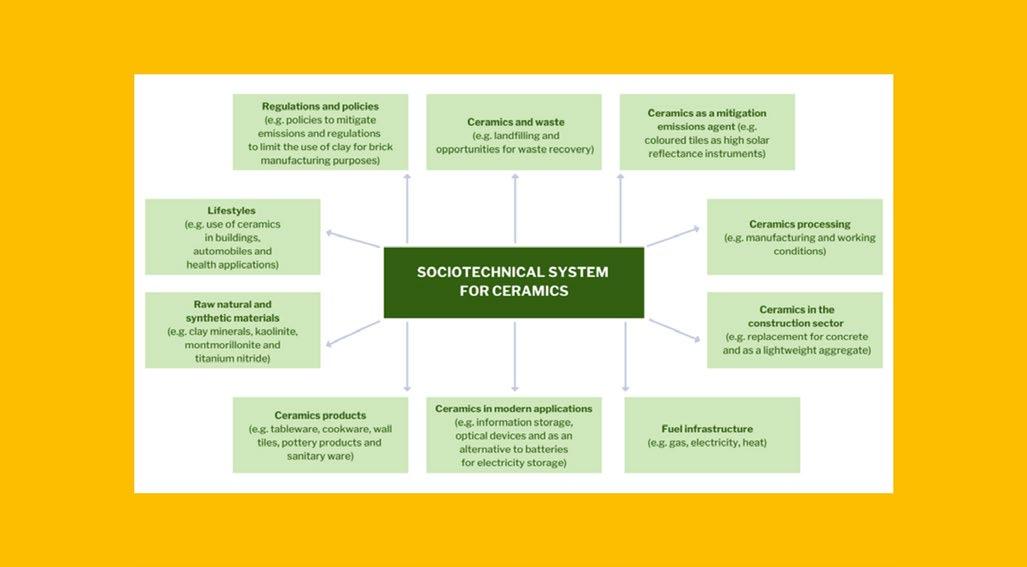


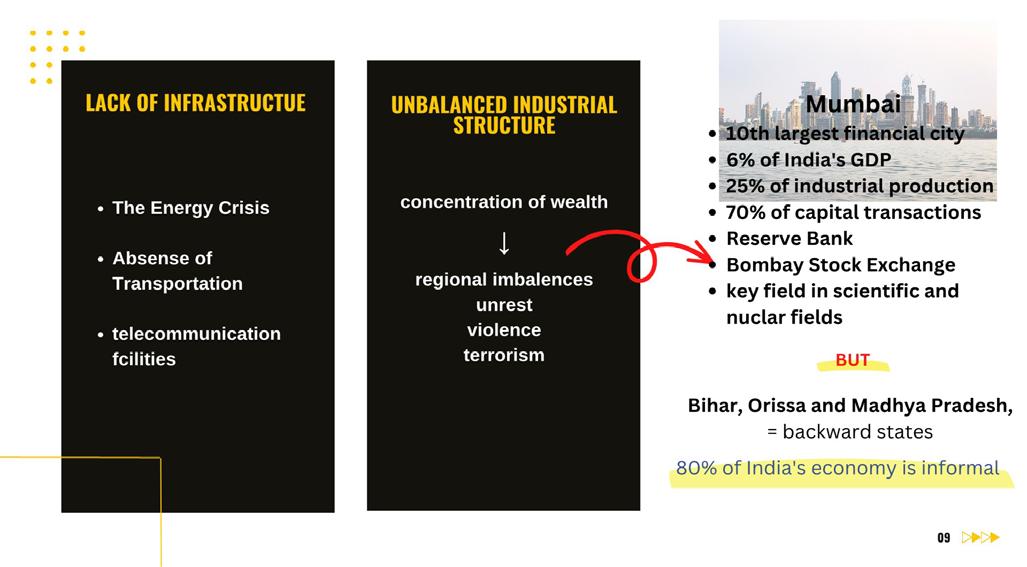
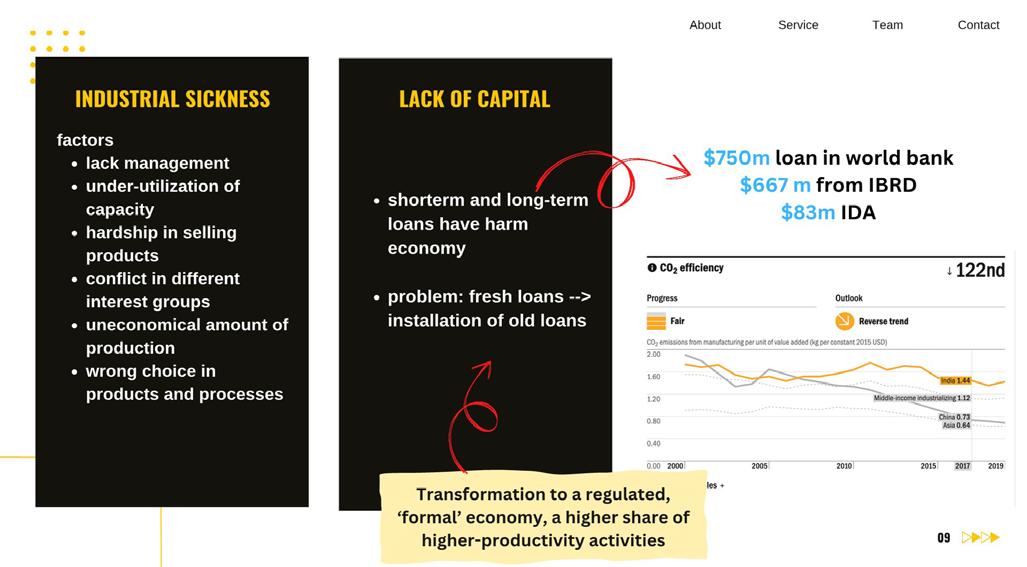
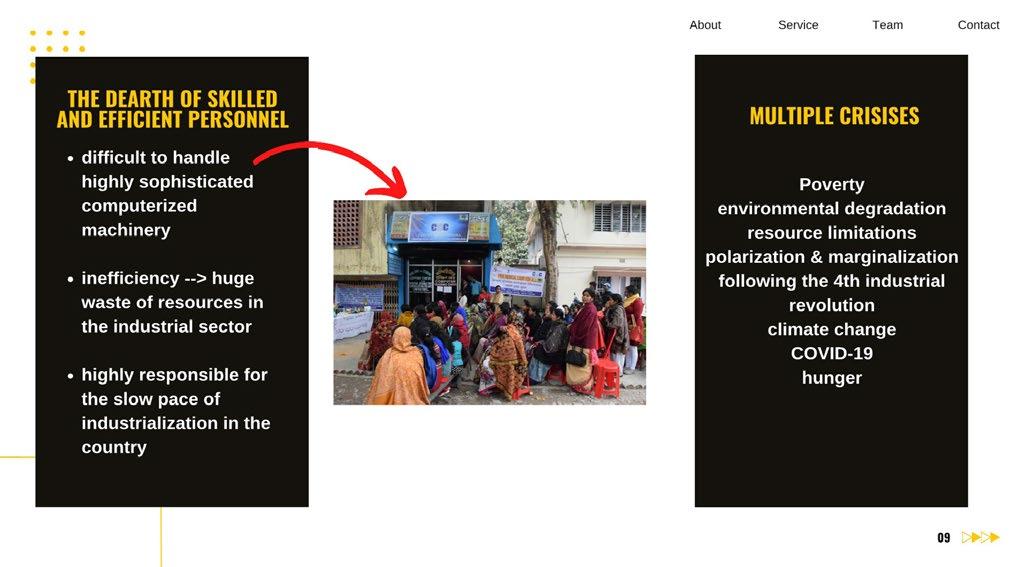



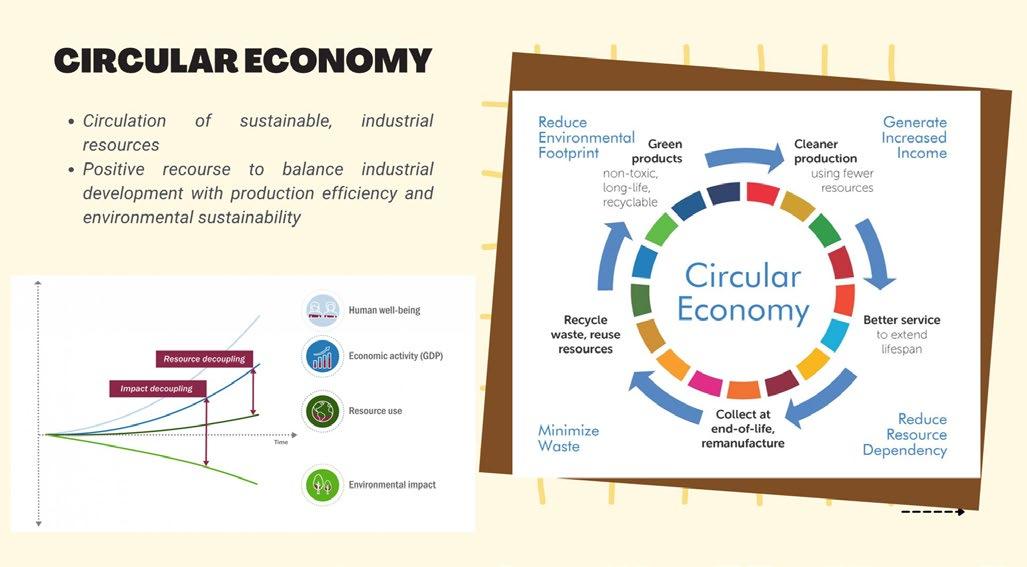
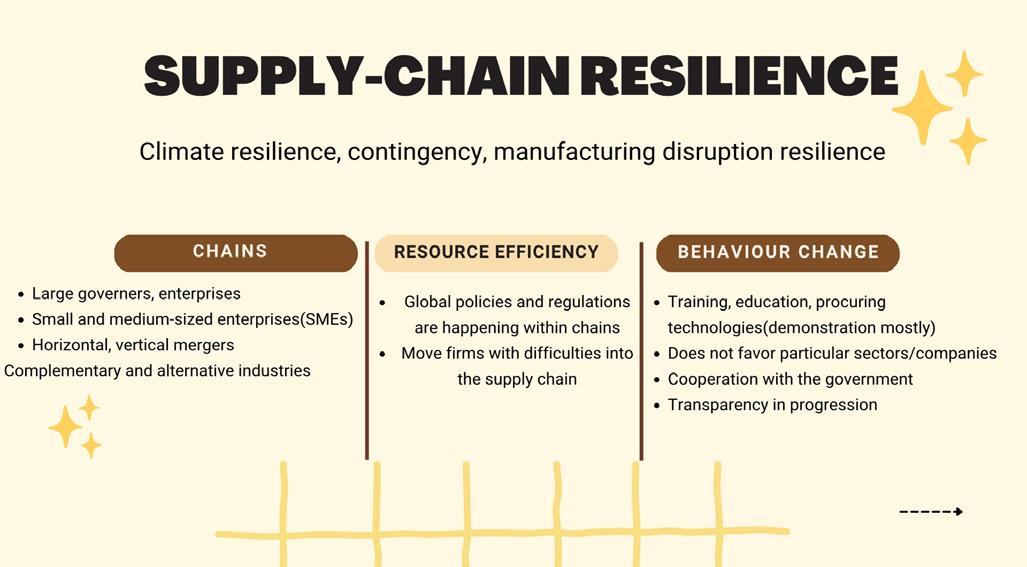

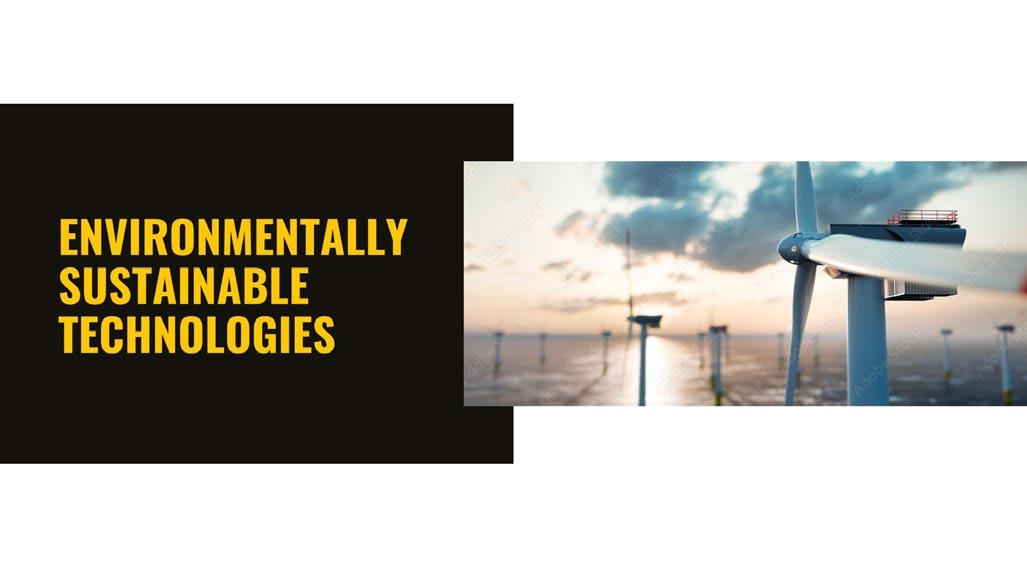
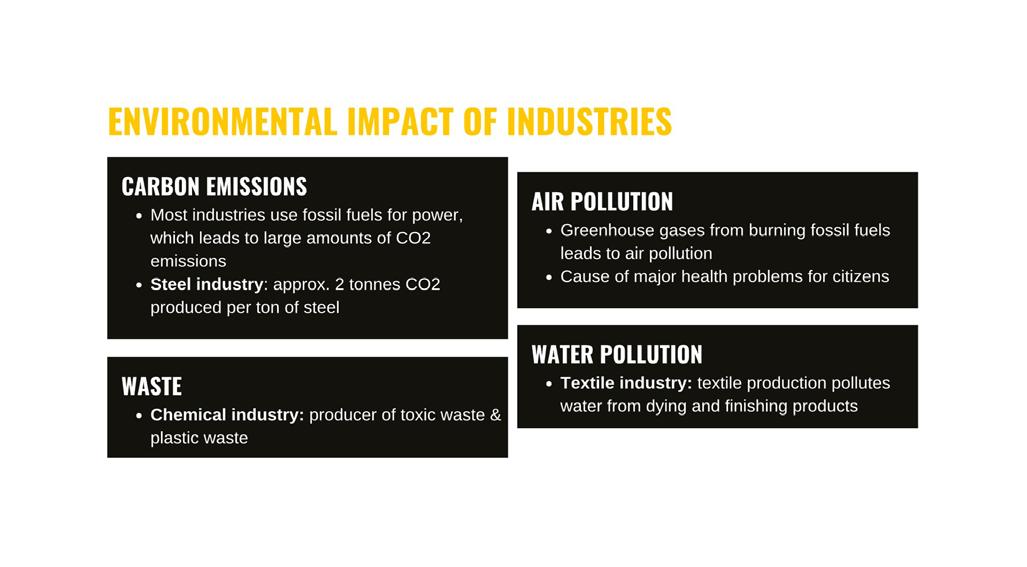
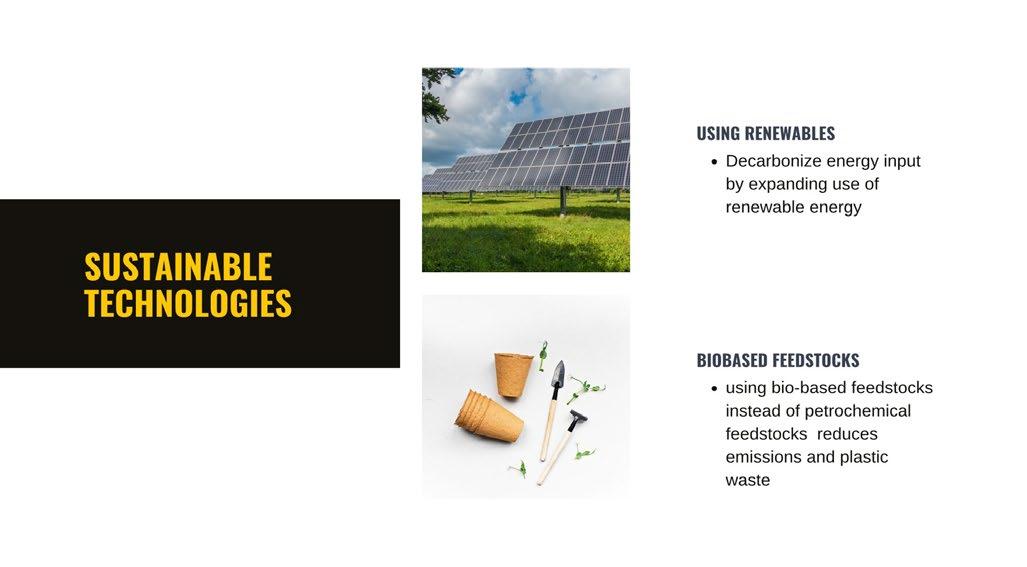
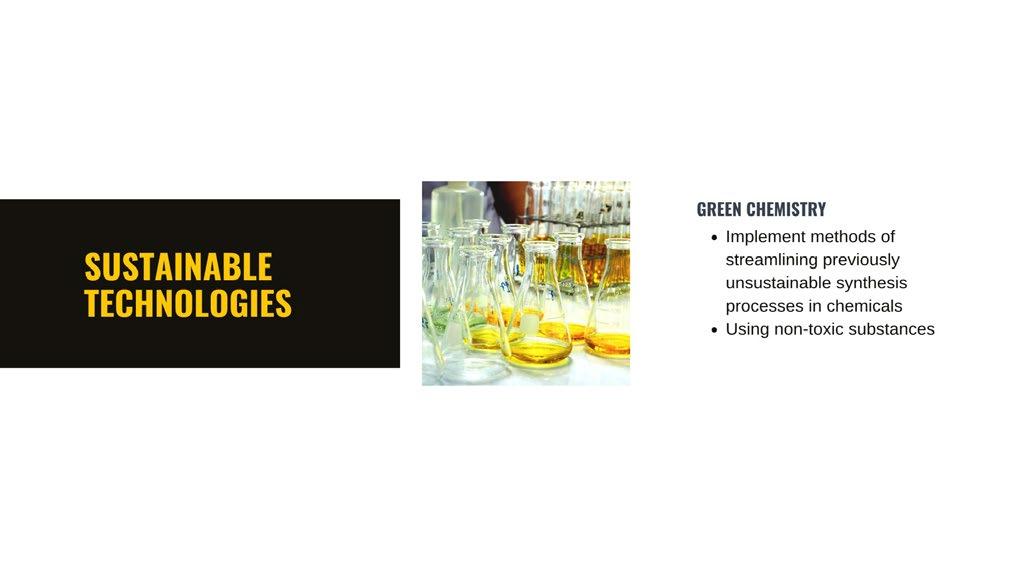


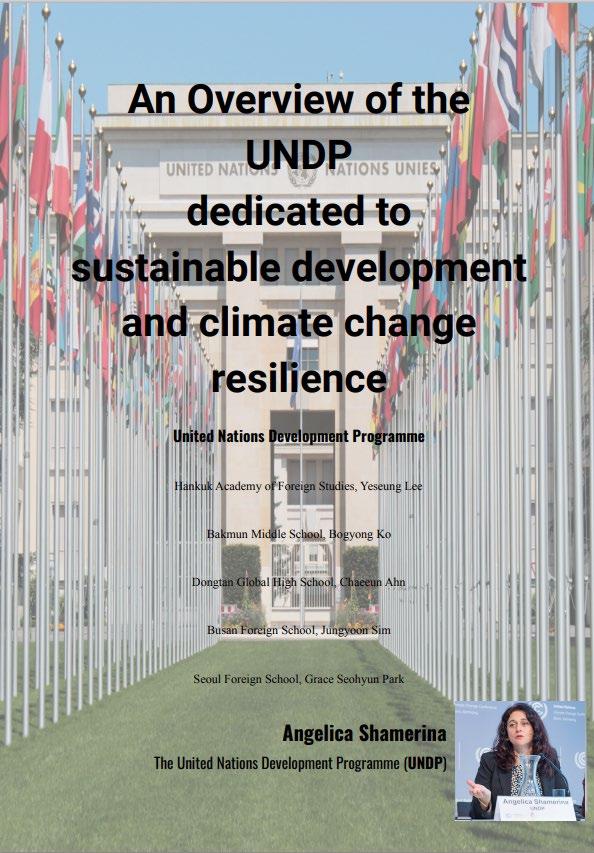
I. General Introduction of UNDP
A. History of UNDP
B. Works of UNDP
C. Future Plans of UNDP

II. United Nations Headquarters Lectures
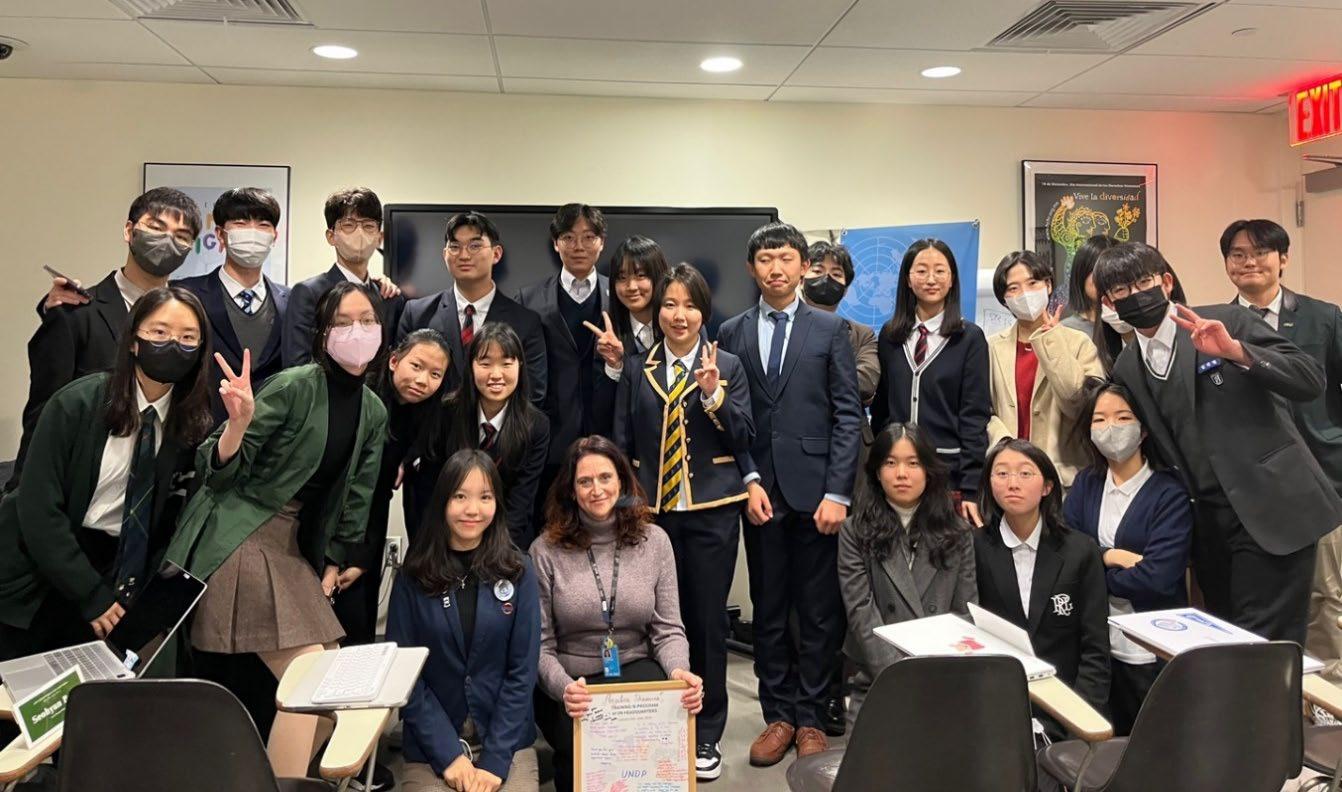
A. Learning about Clean Energy by Angelica Shamerina (UNDP)
B. Connecting the Dots HIV, Health, and Development by Roy Small (UNDP)
A. SDG 7: Clean and Affordable Energy (UNDP) by Angelica Shamerina,Environmental Specialist
A. 1960s and before: The early years
UNDP was established in November 1965 as an agency to coordinate the United Nations'development aid program to developing countries by integrating the UNSF and UNEPTA under Resolution 2029 (XX). Activities began in January 1966, and in December 1970, the current UNDP organization and activities were officially defined in accordance with Resolution 2688 (XXV) of the 25th UN General Assembly.
B.
UNDP started its first global project, "Global One," and worked on a program called TOKTENto send expatriate development experts to support projects in various regions.
C. 1980s:
UNDP has launched a campaign to combat disease and drought. It also supported Argentina's transition to democracy.
UNDP published a Human Development Report. It works with the World Bank in managing the Global Environmental Facility (GEF) to protect the environment. In addition, UNDP helped savemany lives by supporting network creation and providing support programs to fight HIV.
UNDP approved Millennium Development Goals to be achieved by 2015 and worked to eradicate poverty and hunger. Subsequently, it recognizes the need to balance economic, social growth and environmental protection by approving Sustainable Development Goals to be achieved by 2030.

UNDP works in170 countries and territories to eradicate poverty and reduce inequality. Its mission is to help countries to develop policies, leadership skills, and achieve the Sustainable Development Goals. UNDP’s work is focused on three areas; sustainable development, democratic governance and peace building, and climate and disaster resilience.

UNDP’s main focus for the future plans is to recover the impact of the pandemic that has depleted the world’s natural resources and widened poverty and inequality. The progress towardsSDG 7 has been slowed down since the pandemic. “The Strategic Plan is grounded in UNDP’s continued commitment to eradicating poverty, accompanying countries in their pathways towards the SDGs and working towards the Paris Agreement” (UNDP). UNDP will develop six signature solutions powered by digitalisation,innovation and development financing to invest further in our people, business model and operational excellence for greater impact.
The six signature solutions are based on four fundamental backgrounds
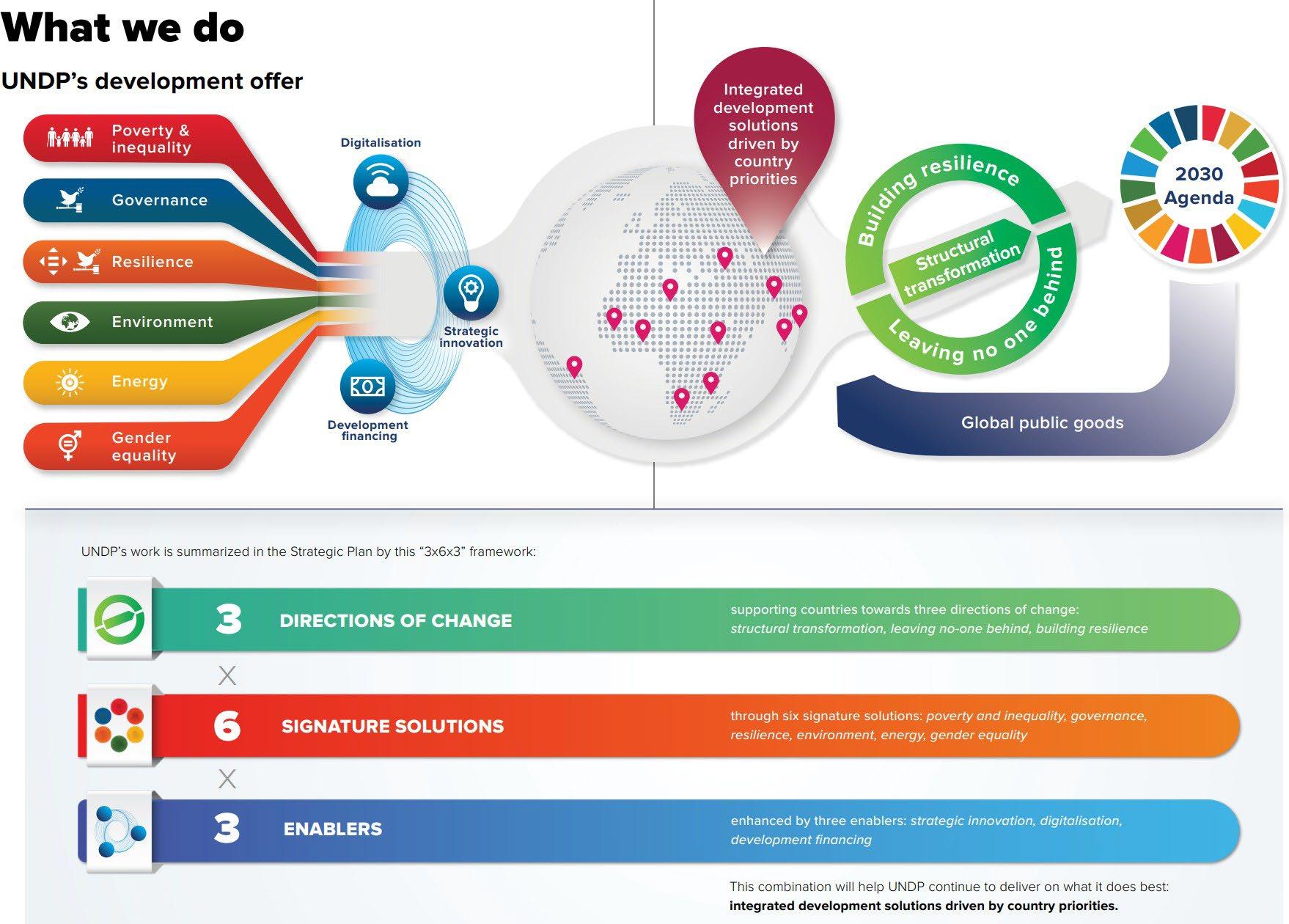
: prioritizing where country demands are greatest; focusing on UNDP’s strongest capabilities and role within the UNsystem; refining and developing the signature solutions for greater impact andscale; and delivering integrated solutions through a systems approach. Integrated solutions consist of different sustainable development goals- peace, justice, and strong government, climate action, affordable and clean energy, gender equality, and no poverty. Creating six signature solutions by integrating diverse sustainable goals will have a tremendous effect on balancing the overall consequences of UNDP’s solutions. It will also provide creative solutions, which will maximize the impact on the practical solutions, that would be never achieved only by targeting one perspective of problems. The six signature solutions are governance, resilience, poverty and inequality, gender equality, energy, and environment.
Governance– helping countries address emerging complexities by “future-proofing” governance systems through anticipatory approaches and better management of risk. It is essential for UNDP to support governments and communities to rebound from COVID-19 since the driving force that can actually bring an obvious change in a certain country or community is governments or representatives of communities. The whole world was baffled and frustrated by the rapid spread of the unexpected
covid 19 pandemic because of no anticipation of future disease and lack of awareness of world wide pandemic. With the lessons learned by COVID-19 pandemic, the UN and governments should be in close interaction for anticipating the future and developing methods of minimizing shocks and stresses of future events.

Resilience– supporting countries and communities in building resilience to diverse shocks and crises, including conflict, climate change, disasters, and epidemics. The power of how countries and communities act on rapidly changing society after the pandemic is the factor that determines the ability to be resilient leading to the possibility of being successful in adaptation. In the case of COVID-19, there were many different approaches to tackle the issue such as obligation to wear masks, entry restriction or conditions for each country, or economic operations. These are the examples of resilience, and UNDP is focusing on countries to be flexible and ingenious dealing with problems just around the corner.
Environment– putting nature and the environment at the heart of national economies and planning; helping governments project, manage and value their natural assets. There was a great improvement in the environment during COVID-19 pandemic with the reduction in traffic due toincremental time spent in houses. However, the emission of greenhouse gasses is increasing at a point of time now where COVID-19 is almost over as the influx of transportation is recovering with alleviated regulations. Therefore, UNDP’s emphasis on the environment in post pandemic can contribute significantly.
Energy– increasing energy access for those furthest behind and accelerating the transitionto renewable energy. Energy systems are complicated and underpin our existence as modern societies. Not all of us have the same access to energy. Some need energy transformation, and some need energy access. Energy is the key contributor to CO2 emissions, so the application of renewable energy technology is necessary. Even though renewable energy technology already exists, there are many barriers to wide deployment. The global energy system must be reinventedif we are going to address climate change, poverty, and inequality. Moreover, 1/10 have no access to reliable and affordable electricity, and ⅓ of the global population relies on solid fuels for cooking, lighting, and heating, which generates air pollution that kills 3.8 million people per year. Clean energy helps to solve these problems such as hard labor especially linked with women and girls, food waste, few business opportunities, few educational opportunities, and lackof access to healthcare. Investing in the energy transition will be the engine for job creation. Renewable energy is tied to productive activity and will be a unique solution for many remote communities.
Gender equality– confronting the structural obstacles to gender equality and strengthening women’s economic empowerment and leadership. Gender equality has been almost achieved in developed countries, but there is still severe discrimination regarding genders in most of the developing countries and even in developed countries. Proper education for girls and creating an educational environment
is the first step to resolve gender inequality. Providing fair opportunities for women in any sector is essential for them to adapt in society in a stable, happy way as well.
Poverty and inequality– tackling inequality of opportunities by investing in the enhanced capabilities people need to move above the poverty line and keep moving forwards. Inequalities between the rich and poor have become more intensified after the COVID-19 pandemic. Plus, problems of poverty are accelerating due to the negative effect of climate change causingextreme weathers such as droughts or floods to the poor areas. This issue is intricately related to many factors such as climate change, economic conditions, and sanitation, so the integration of solutions to deal with the issue is important.
“The Strategic Plan 2018-2021 set out an ambitious agenda: transforming UNDP into a more adroit, innovative thought leader, becoming more effective and efficient at delivering results, and being a trusted partner for countries in reaching the SDGs” (UNDP). “The Strategic Plan 2022-2025 continues in this direction, building on the progress of the last four years. It also draws on assessments, evaluations and audits, and on the lessons of experience, including from UNDP’s COVID-19 response” (UNDP). UNDP is partnering with thought leaders from government, civil society, the private sector, the UN system, and UNDP staffworldwide to enrich the plan. The ways tomaximize the development impact for country partners with the UNDP’s own systems include digitalization, strategic innovation, and development financing. Digitalization enables countries to build inclusive, ethical and sustainable digital societies. Strategic innovation empowers governments and communities to be adaptive and resilient by reinforcing the performance of overall systems. Lastly, the development finance sector worksclosely with governments and the private sector to mobilize finance to achieve the SDGs.
UNDP’s general plan beyond 2025 is to transformour society structure to a green, inclusive society, promoting sustainable development. It also emphasizes a rights-based strategy on inclusion, agency, empowerment,equity, and human development. Developing nations' institutions to better prepare for, respond to, and avert crisis, conflicts, natural catastrophes, climate change, and social and economic shocks willfurther improve the quality of lives.


During the 20th Training Program at the UN Headquarters in New York, one of thefirst lectures related to the topic of environment was on Clean Energy. This lecture was done by Angelica Shamerina, an Environmental Specialist from the United Nations Development Programme. Students learned that incentives forrenewable energy should be connected toa local level because larger groups only become more time-consuming and therefore harder to successfully achieve. An example noted was Africa with their method of making performance based payments to citizens.
Next, delving into the topic of energy subsidies, the speaker mentioned that more governments should provide loans when possible. Currently, the United Nations helps numerous governments set frameworks to make such events feasible. A more industrial solution would be Carbon Capture and the utilization of Renewable Energy. However, at the moment, Carbon Capture is not something that More Developed Countries (MDCs) can do alone. Thus, it would be more ideal and efficient to experiment with the recent solution of Carbon Capture to truly find out whether or not the method is effective.
In fact, smaller scales are likely to speed up the reduction of carbon dioxide emissions. Moreover, despite the fact that technological advancements could work, in reality, they would be too slow to prevent such colossal issues such as climate change.
Of course, when transitioning to a cleaner environment, the process itself cannot be 100% pure, but Less Developed Countries (LDCs) should be allowed to use fossil fuels to a certain extent– only if it is necessary. This is because it would be unfair for developing countries compared to the developed countries that have already used massive amounts ofpollutive fuels.
Other possible examples of clean energy production methods consist of, but are not limited to: hydrogen, nuclear fusion, large-scale wind power, electric cars, and etc.
Overall, the important points that students had grasped from this lecture was that energyis not just electricity– they are complicated systems and underpin our existence as modern societies. Not everyone has the same access to energy, so some need energy transformation and/or access. Also, the Sustainable Development Goals #7 and #13’s achievement is linked to energy access.
Nonetheless, since energy is the key contributor to carbon dioxide emissions, due to factors like carbon budget, there is little time left. Although renewable energy technologies already exist, there are many barriers to wide employment. The global energy system must be reinvented to address climate change, poverty, and inequality. Forinstance due to immense carbon dioxide emissions, Ukraine’s water does not freeze anymore and has hindered many enjoyable daily activities of the nation’s citizens. A solution to refer to in hopes to resolve such problems would be Canada’s hydropower or Texas energy systems as well.
This topic of clean energy was specifically brought to attention because 1/10 people don’thave access to reliable and affordable electricity and the opportunities it brings and nearly
⅓ of the global population relies on solid fuels for cooking, lighting, or heating their homes which is
extremely concerning.
As for clean energy for development, solving this would also mean alleviating the issues of hard labor especially for women and girls, reducing food waste, fixing few business opportunities, improving the few educational opportunities, and reducing the lack of access to healthcare. In other words, energy means livelihoods because access to energy is tied to every productive activity.
The presenter also stated that the United Nations Development Programme contributes byhelping with access and transformation. Specifically, 50000-150000 USD grants directly to communities and renewable energy and energy efficiency projects are frequently madein countries in need.

Lastly, a small action could result in a big difference. Therefore, she suggested that youngpeople can continue doing activism and advocacy, projects in their community/school, be involved in UNFCCC Youth and Children Constituency – YOUNGO, and COP Youth Conferences. Ultimately, this would result in a cycle where everyone is assisted becausethe UNDP’s Innovation program also supports youth by focusing on education, skills funding, awareness, showcasing the results, and sharing lessons for youth engagement.Some priority themes mentioned were: “Green Jobs” for young generation, Skills and competencies to lead climate action locally nationally and globally, and Share of projectswith youth participation and led by youth tracked since 2015 grew to over 45%.

The next environment-related lecture that we, the students, attended was based on connecting the dots with HIV, Health, and Development by Roy Small, a Policy Specialist from the United Nations Development Programme.
Firstly, the fact that health status is primarily determined by non-health factors was introduced through a pie chart graph on Proportional Contribution to Premature Death.

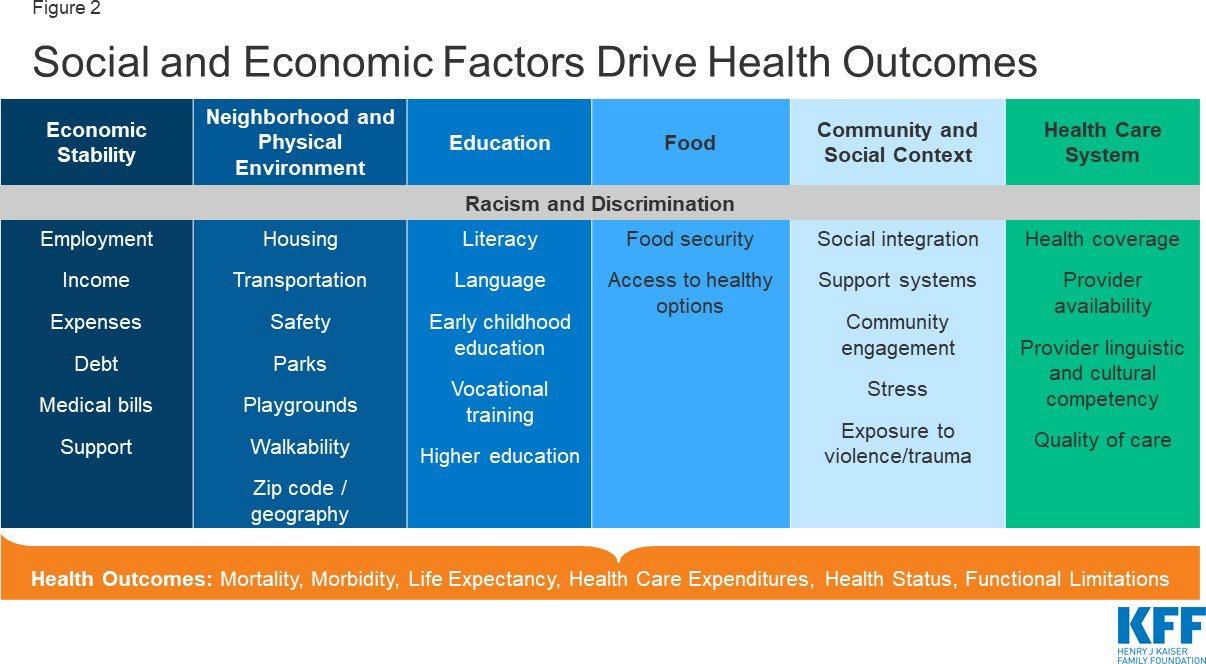
Then, the speaker revealed that the health goal, Sustainable Development Goal #3: Good Health and Well-Being, contained 12 targets which coveredhealth MDGs, emerging health priorities, and means of implementation (including universal health coverage, framework Convention on Tobacco Control, etc.) For instance,Target 3.3 aims to end epidemics of AIDS, Tuberculosis, and Malaria. However, the progress on many SDGs solely depends on improving the health outcomes as health itselfis both a driver and outcome of the future developments.
Graphs of tipping points with choices shaping the post-COVID future were shown along with the Human Development Index and Social and Economic Factors Drive Health Outcomes.
Following the visual graph and charts infographics, the Zomba study in Malawi was introduced as it was addressing structural factors to reduce HIV risks. The overall study design was of Young women aged 3-22 randomized to receive either monthly cashpayments and such resulting in about 64% reduction of HIV infections after solutions were gradually being implemented in the society. Moreover, the HIV, Health & Development Strategy, 2022-2025 consisted of content including: UNDP’s HIV andhealth work contributes to the SDGs & the commitment to leave no one behind by addressing the social, economic, commercial and environmental determinants of health, health-related inequalities and governance for health.

Action Area 1: Reducing inequalities and exclusion that affect health and drive epidemics
Action Area 2: Promoting effective and inclusive governance for health
Action Area 3: Building resilient and sustainable systems for health
Next, the Pan American Health Organization (PAHO), WHO (World Health Organization), and the Economic Burden of Non-Communicable Diseases (NCDs) were summarized. If NCDs increased, the economic output would decrease as a result. This would also mean and lead to premature deaths that cause reduced labor supply, greater illnesses leading to reduced productivity of labor forces, and the rise of treatment costs which becomes a diversion of resources away from productive investments and development objectives including education.
In fact, according to the World Economic Forum, it is unfortunate, but about $47 trillion equates to the global estimated loss in output due to NCDs in 2011-2030.

The presenter phrased COVID-19 as “A Perfect Storm” because Almost one fourth (22%) of the world’s population is estimated to have an underlying condition that increases their vulnerability to COVID-19; most of these conditions are NCDs.
Partnerships include UNDS, UNAIDS, Global Fund, WHO, WHO FCTC, SPHS, Healthcare Without Harm, STRIVE, GAVI, and TDR while stronger collaborations are involved with Better Health (Global Action Plan for Healthy Lives and Well-being for All
– Strengthening collaboration among multilateral organizations to accelerate countryprogress on the health-related Sustainable Development Goals).
Finally, some key takeaways were that students can contribute to solving this global issueby engaging and focusing on improving or expanding their scientific literacy and understanding of politics. At a national scale, citizens should learn to trust their governments and credible institutions as it is crucial to alleviate widespread diseases from spreading. In order to maintain this flow, people should also consider questioning, “Are people able to access them?," "It is easy to access?,” “Can everybody access it?” to help find quality services.
Q. I wonder what you think about the fact that Nuclear energy and Natural gas has been included in the “EU’s Green Taxonomy” since there are opinions that they are unsustainable and they have harmful effects on the environment?
A. They are risks but not as harmful as climate change. It seems to be dangerous but how many actual cases are there where that energy has caused problems? Probably not so many. We have to look at the actual risk. Also, they can be relatively effective only in countries with good organization and wellorganized society that can solve the problems in case of the risk. ‘Shift to renewable energy’ is happening and technological change hasto happen. It may not correspond to the whole society, but certainly those changes to the sustainable society are happening right now. It is important to know
where we areheading.
Q. How can developing countries make progress if other already-developed countries keep telling them not to use fossil fuels? I wonder if it is difficult to achieve as much development as developed countries “with renewable energy”.
A. Developing countries should transform the energy structure but they relatively lack thestrength to run effectively. Two things are important. First is “Adaptation”. It may be hard for vulnerable communities that are left behind, but we have to reduce the loss in damage and give more funding to those countries in need. Second is “Helping vulnerable countries”. Adaptation is not as easy as before since the climate crisis is ongoing, so vulnerable nations might suffer from natural disasters, and it is important to reduce the impacts.
UNDP. “UNDP Strategic Plan 2022-2025: United Nations Development Programme.” UNDP, https://www.undp.org/publications/undp-strategic-plan-2022-2025.




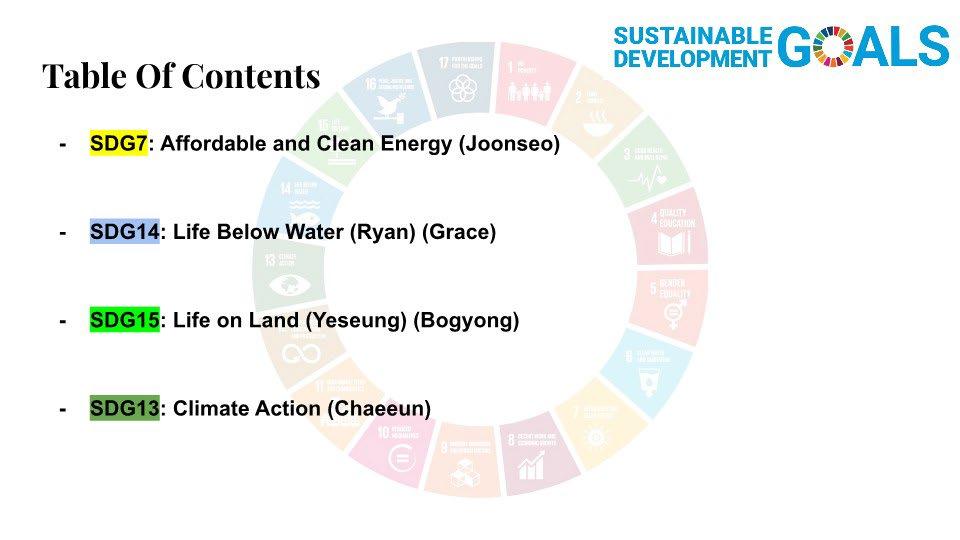

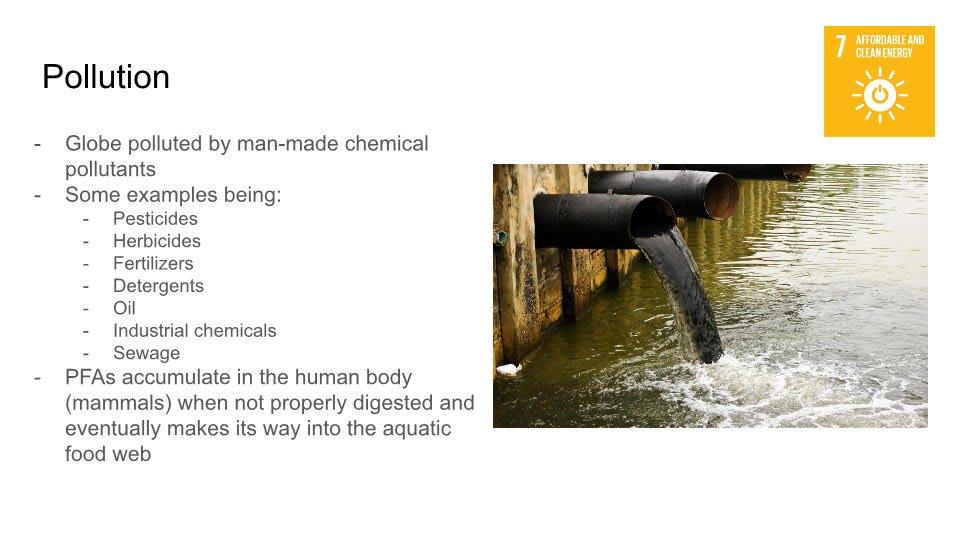


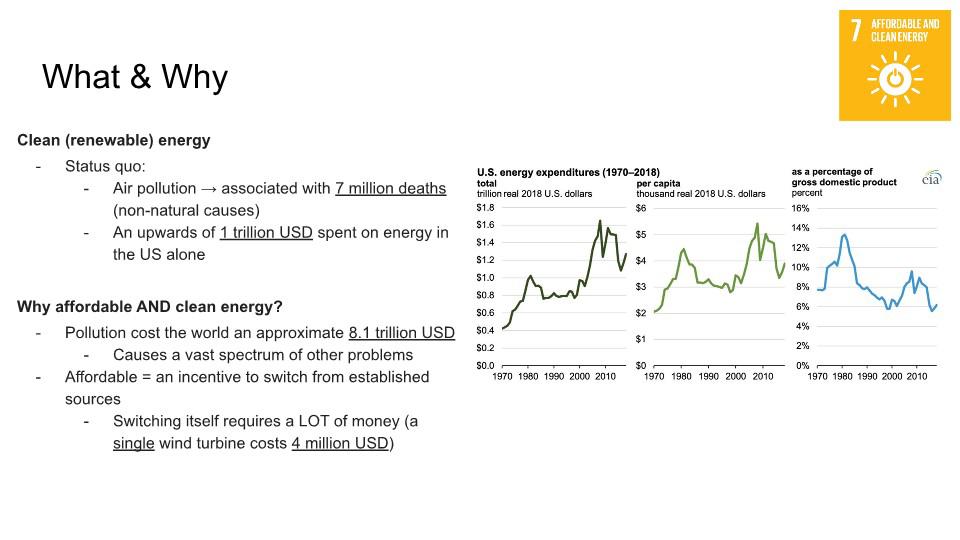
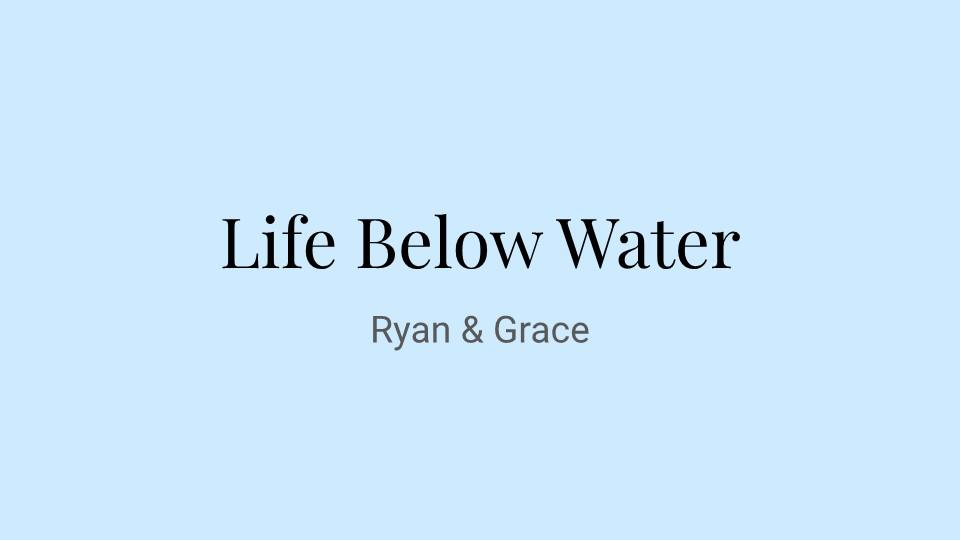
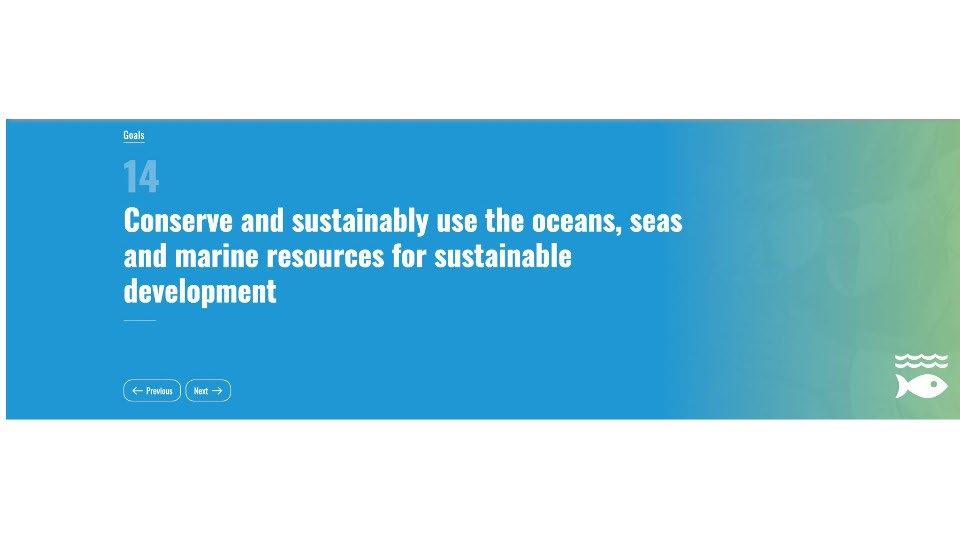


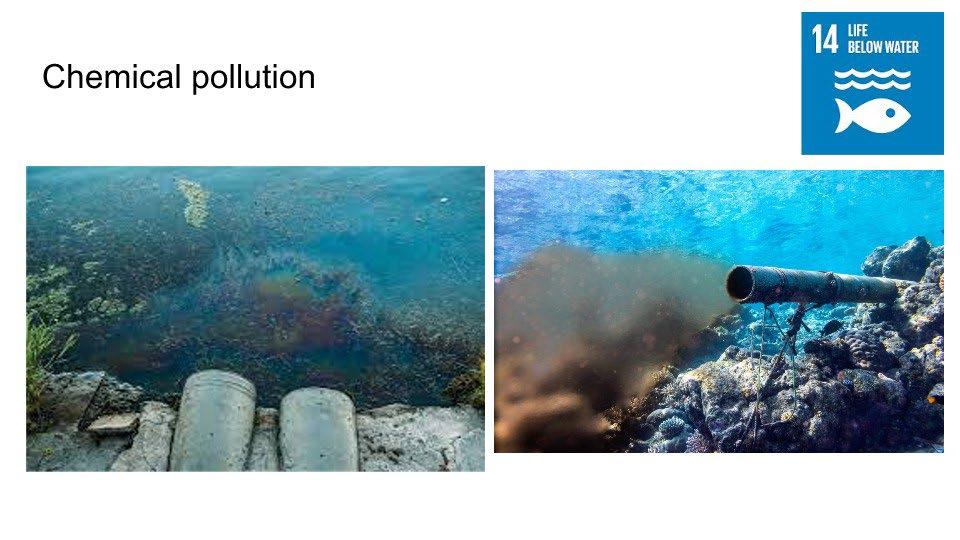
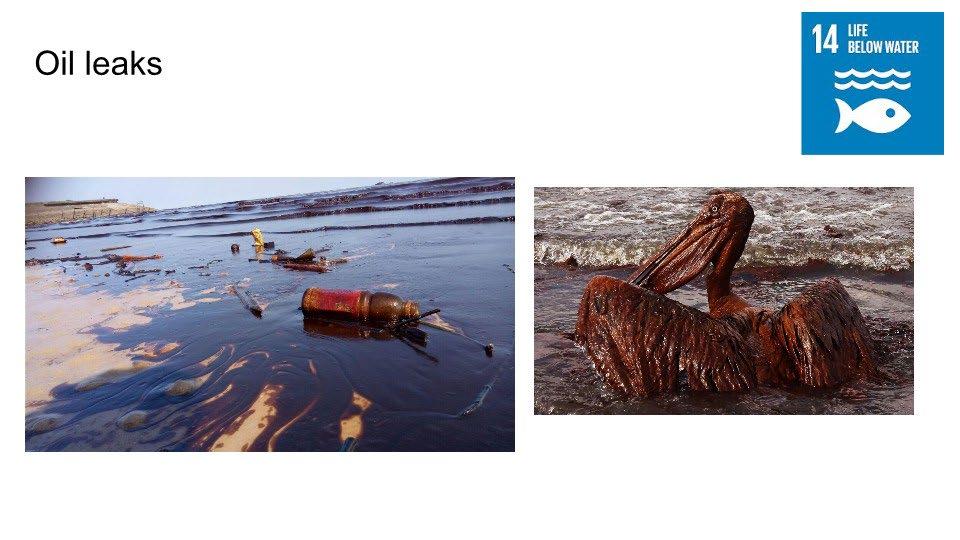

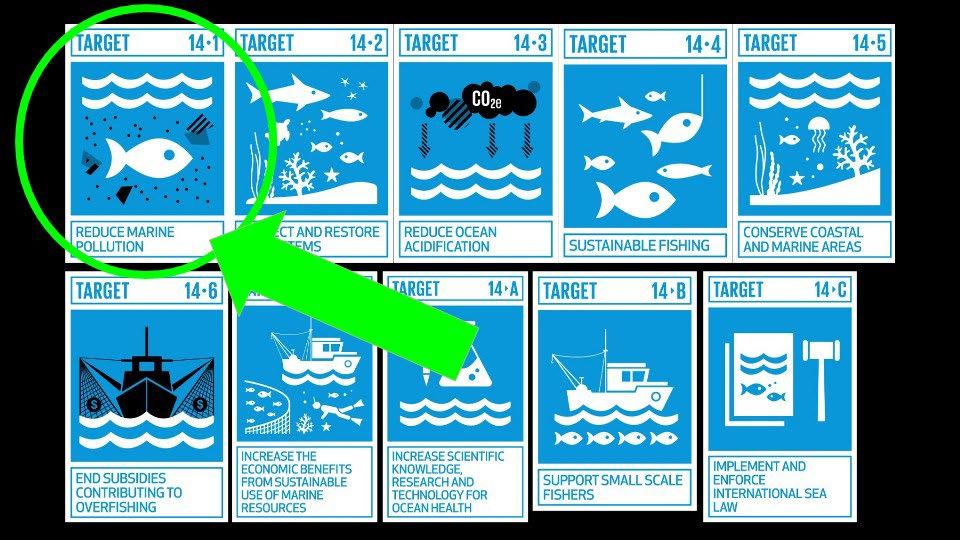
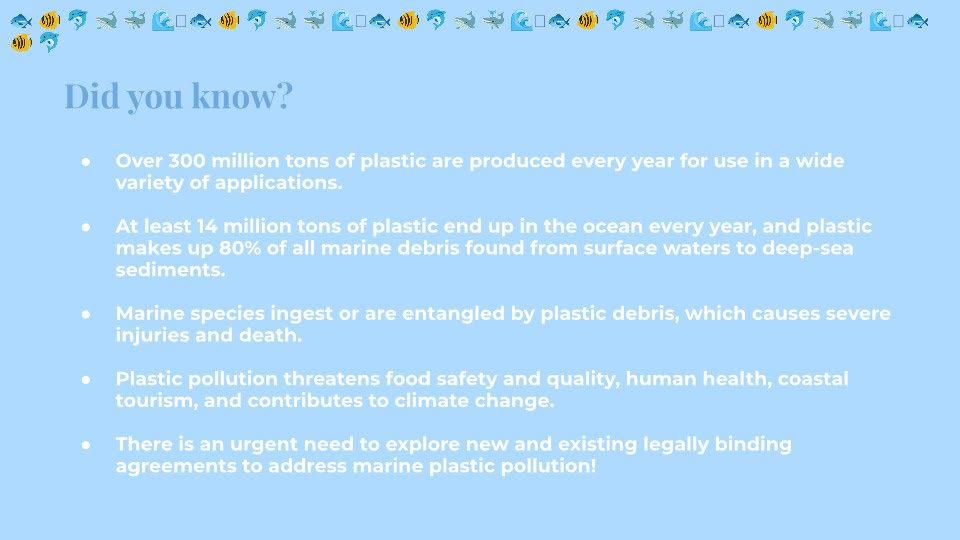


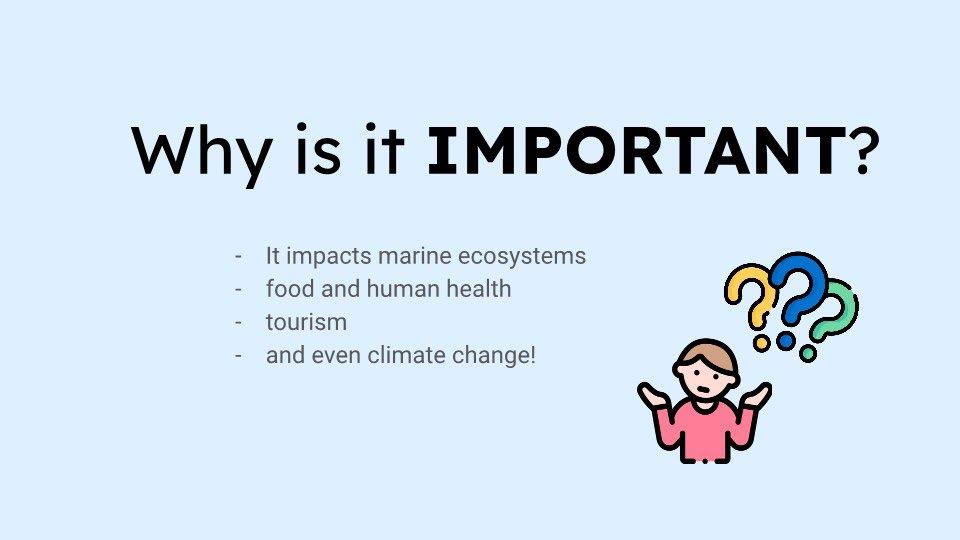
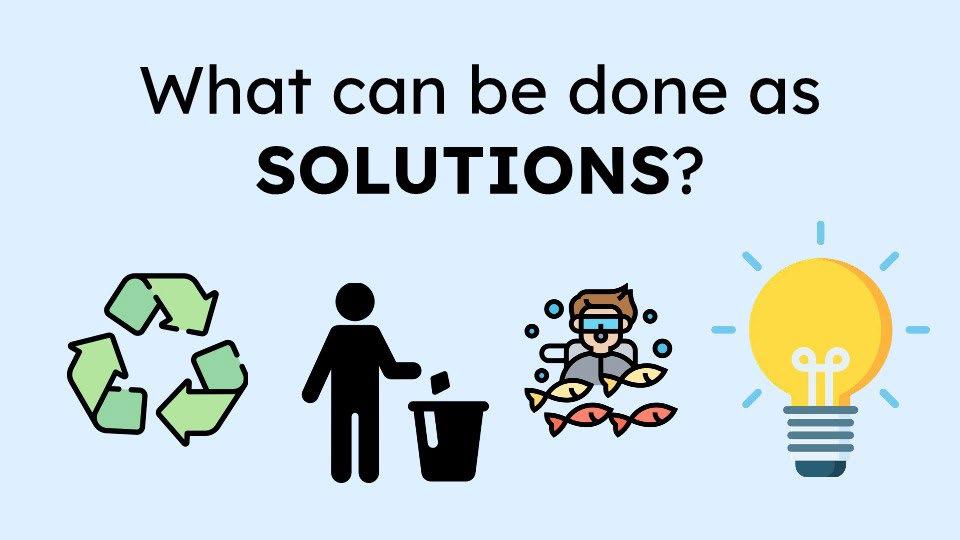
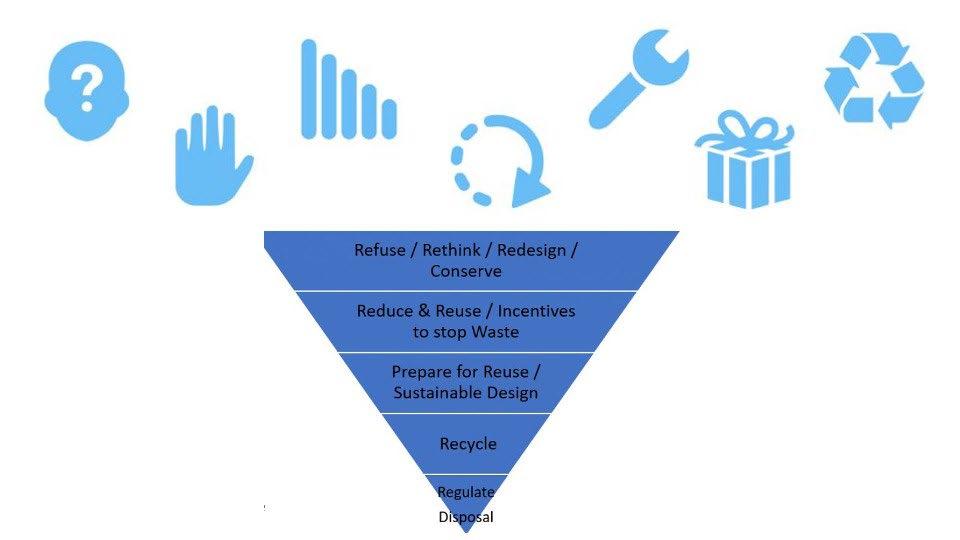




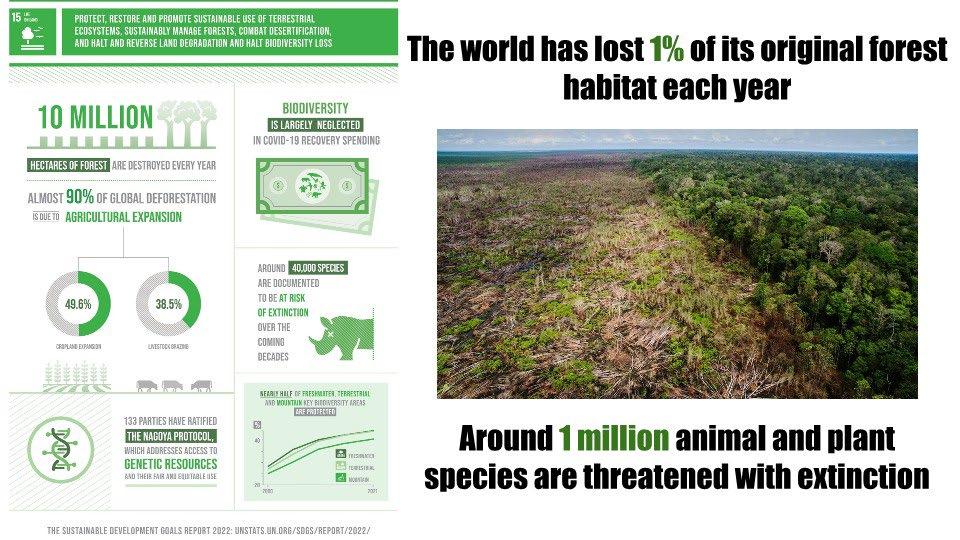
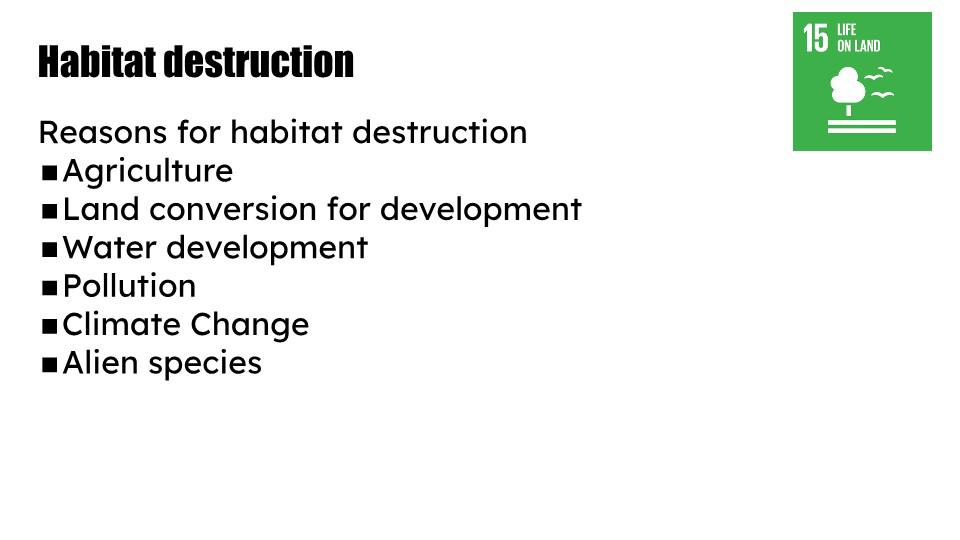

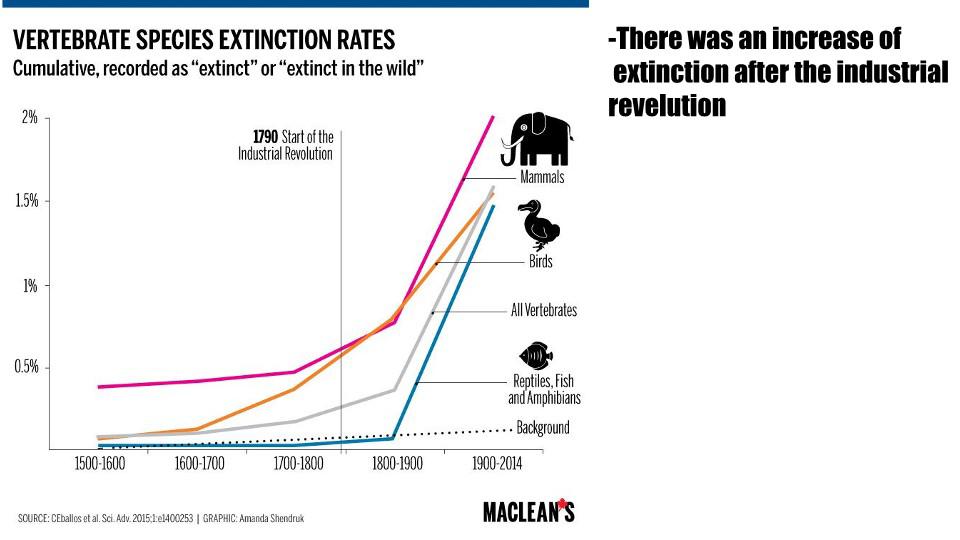
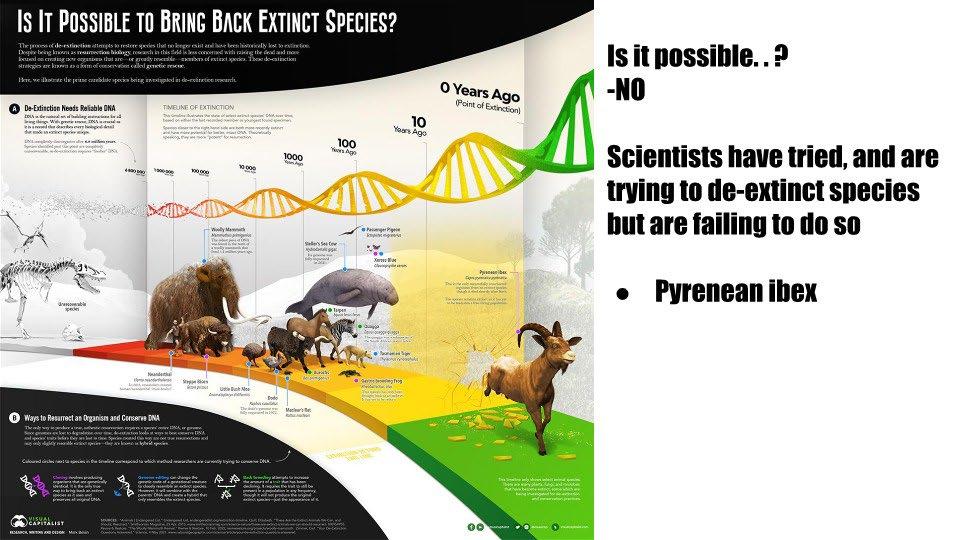
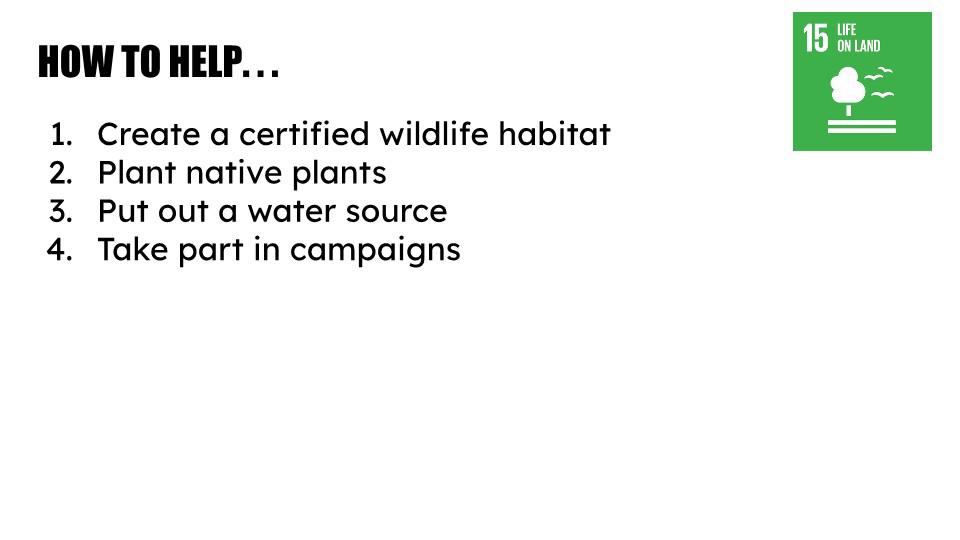


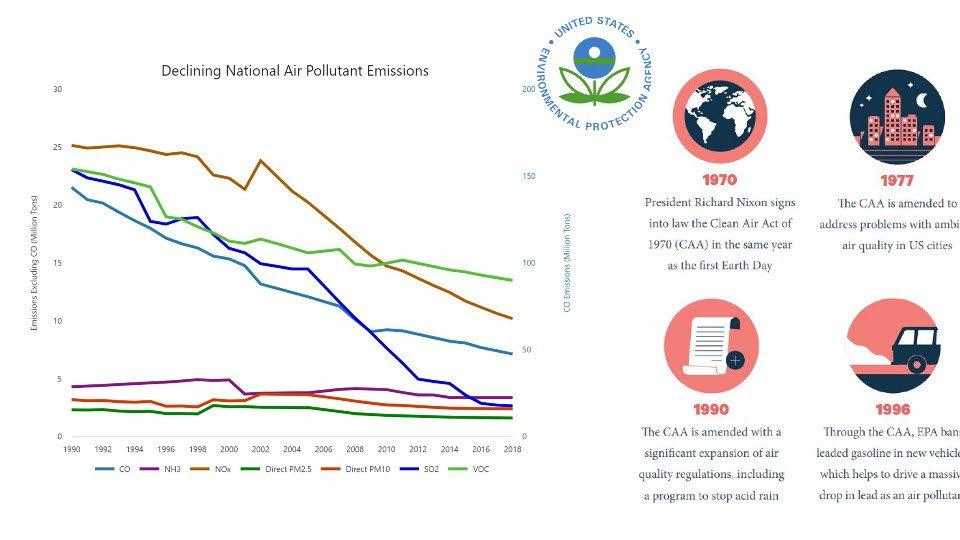

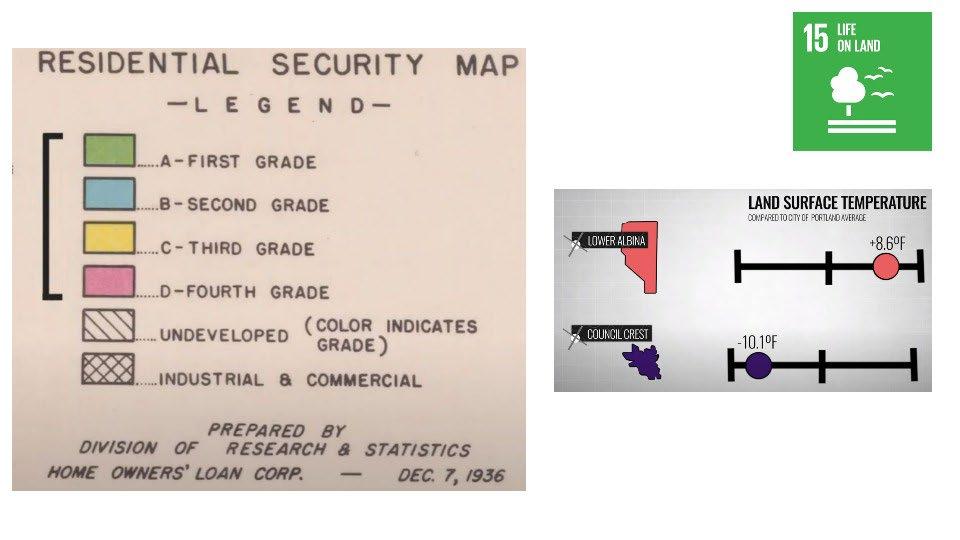




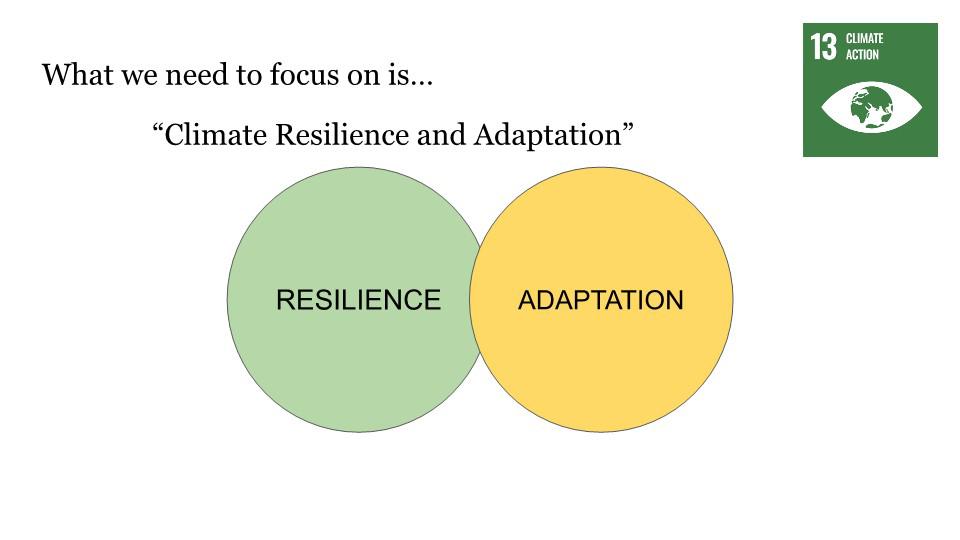
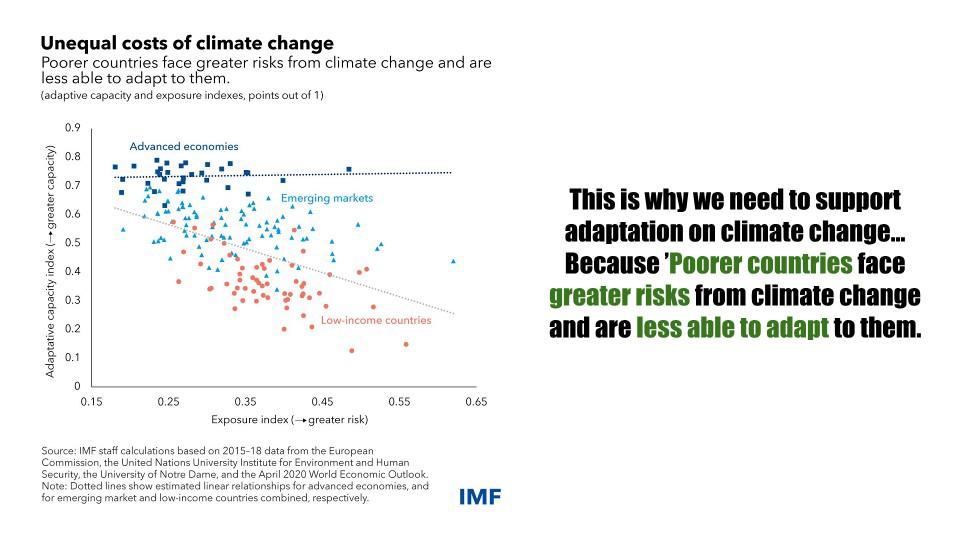
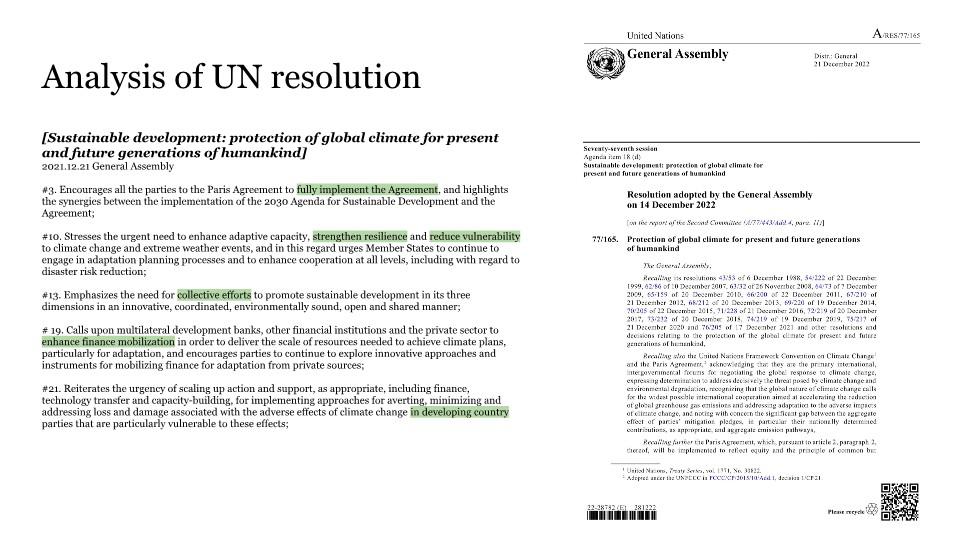

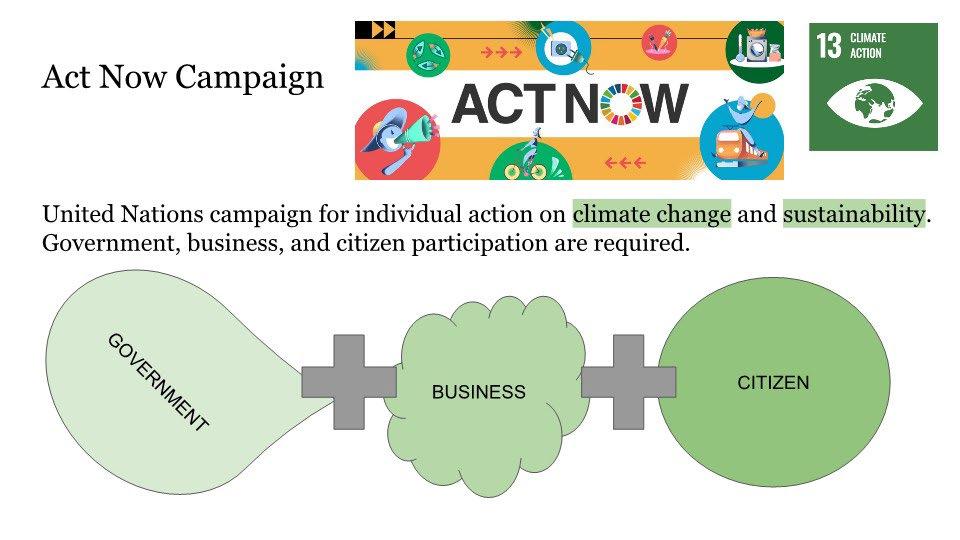
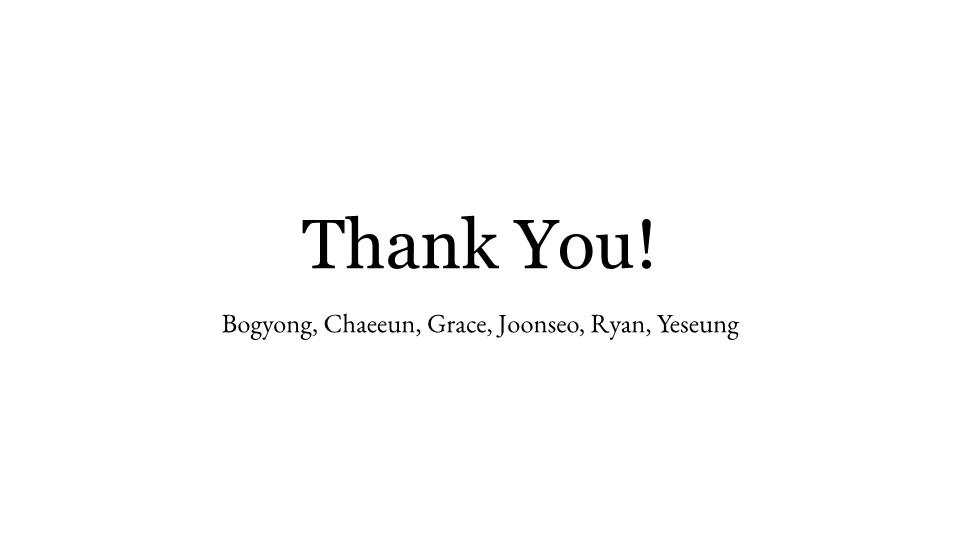
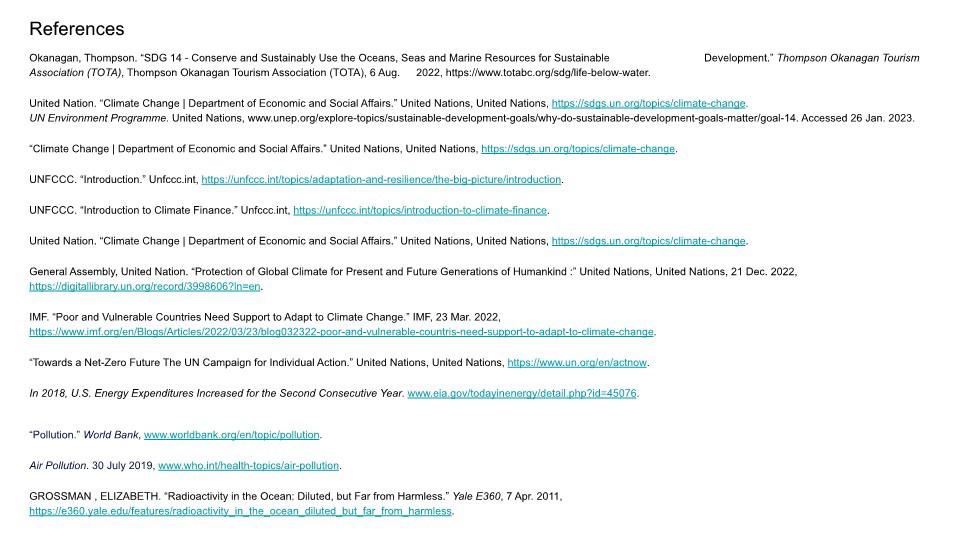

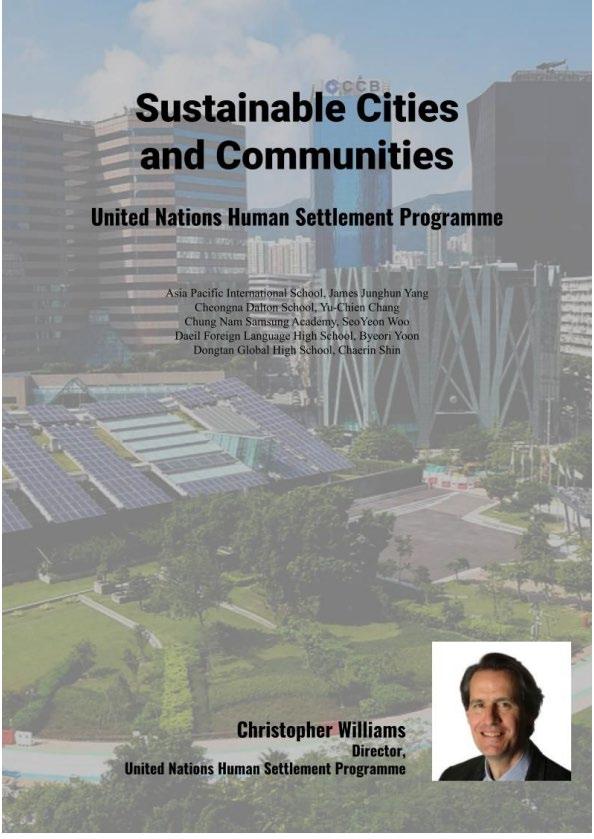
I. Background
A. Goals of UN-Habitat
B. Roles of UN-Habitat
II. Sustainable Development Goal 11: Sustainable Cities and Communities

A. Disaster Resilience

B. Slums
C. Waste Management
D. Air Pollution
E. Overpopulation
III. Q&A Session
IV. References
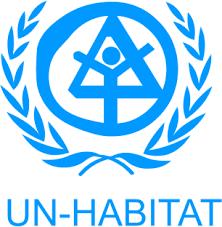
The UN-HABITAT, a part of the UN-secretariat, is working for the well-being and high-quality life of citizens in each country, the human rights of slums and so on. They help each government to make influential domestic policies and plans for a better man-made environment and manage problems such as waste, pollution, slums, and architecture in rural areas as well as cities. Since UNHabitat is mandated by the United Nations General Assembly to promote socially and environmentally sustainable environments of cities and towns, it is conducting its goal to help countries make stable urban conditions and monitoring systems based on SDG 11.
UN-Habitat is the United Nations programme working towards a better urban future. Based on the Sustainable Development Goals, the UN-Habitat has aimed several goals to foster better urban conditions and environments in each country. Its mission is to promote socially and environmentally sustainable human settlements development and the achievement of adequate shelter for all.

A. Disaster Resilience
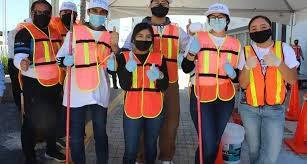

Sustainable cities and communities rely heavily on safety and resilience from natural disasters. It aligns its goals with the SDGs’ target 11.5, “reduce the adverse effects of natural disasters”, which states
“By 2030, significantly reduce the number of deaths and the number of people affected and substantially decrease the direct economic losses relative to global gross domestic product caused by disasters, including water-related disasters, with a focus on protecting the poor and people in vulnerable situations.” (SDG Tracker)


Natural disasters affect 218 million and kill 68 thousand people every year, and in 2021, they caused an economic loss of 343 billion USD. In addition to all these losses, what makes natural disasters more crucial and deadly is that it often affects the poorest and the most vulnerable population most acutely. While the poorer population often cannot afford to live in disaster-resilient facilities, which already puts them in a vulnerable position, they most likely don’t have emergency fund to restore the postdisaster damages. Also, those in vulnerable situations, including the children, frail elderly, disabled, and disenfranchised, receive the most damage under the same circumstances. All of such damages can be prevented with natural disaster-resilient facilities.
Some of the natural disasters include tornadoes and severe storms, hurricanes and tropical storms, earthquakes, wildfires, floods, and droughts. The chart below shows the ratio of deaths and missing persons due to natural disasters in 2020 in the world, and though the ratios vary, the trend shows higher death/missing concentration in parts of South America, South Africa, Middle East, SouthEast Asia, and Russia.
To address the issues with nonresilient cities, the UN Office for Disaster Risk Reduction (UNDRR) created teh Making Cities Resilient (MCR2030), an unique cross-stakeholder initiative for improving
local resilience through advocacy, sharing knowledge and experiences, establishing mutually reinforcing city-to-city learning networks, injecting technical expertise, connecting multiple layers of government and building partnerships.
MCR2030 has the “Resilience Roadmap”, which divides the stages in resilience city development to allow all cities in any status to join the project and develop their infrastructures. The roadmap divides the process into 3 stages: A, B, and C.
Stage A focuses on enhancing cities’ understanding of risk reduction and resilience and building the necessary platforms for disaster risk reduction action. It is usually for cities that begin its foundation for resilient cities often the readying stage for future actions.
Stage B focuses on improving assessment and diagnostic skills, increasing alignment between local strategies and national and regional strategies and improving early-stage strategies and policies. It is for cities in the intermediate level of progress, seeking for development from their present statuses.
Stage C focuses on supporting cities in the implementation of risk reduction and resilience actions. Cities in this stage are often already much planned and developed in building resilience, and seek for further actions and improvements.
With the presence of these specific stages, cities from the international community in all stages of development can join the plan to raise resilience to natural disasters and protect their vulnerable residents.
Another smaller-scale organization to prevent the damages of natural disaster is Disaster Risk Management, Sustainability and Urban Resilience (DiMSUR), created by the UN Habitat. DiMSUR is a sub-regional technical center aimed at developing local, national, and sub-regional capacities for reducing and building the resilience of communities to natural and other hazards of Southern Africa, and has 4 focus points. Though these points are aimed for Southern Africa, where concentrations for death due to natural disasters are relatively high, their key actions are foundational for resilience building in all cities.
The 4 targets are:
1. Innovation & Technical Assistance
2. Risk Reduction & Climate Change Adaptation

3. Gathering African States, academia, people, NGOs
4. Targeting African Urban Resilience and Self-governing
Focusing on the second target of Risk Reduction and Climate Change Adaptation, our UN lecturer Mr. Christopher Williams described that the UN Habitat works with local governments to plan cities that will prevent natural disaster damages. He explained that while many people think resilience to disasters are only borne from housings and facilities, they are actually reliant on many different social and geographical factors. Because all cities and regions have different characteristics, the UN Habitat and
local governments take spacial patterns, locations, transportations, levels of vulnerability, and the pattern of the city’s residents into account to plan the most suitable and safe communities.

Slums are defined as dirty and overcrowded urban streets or districts inhabited by very poor people.
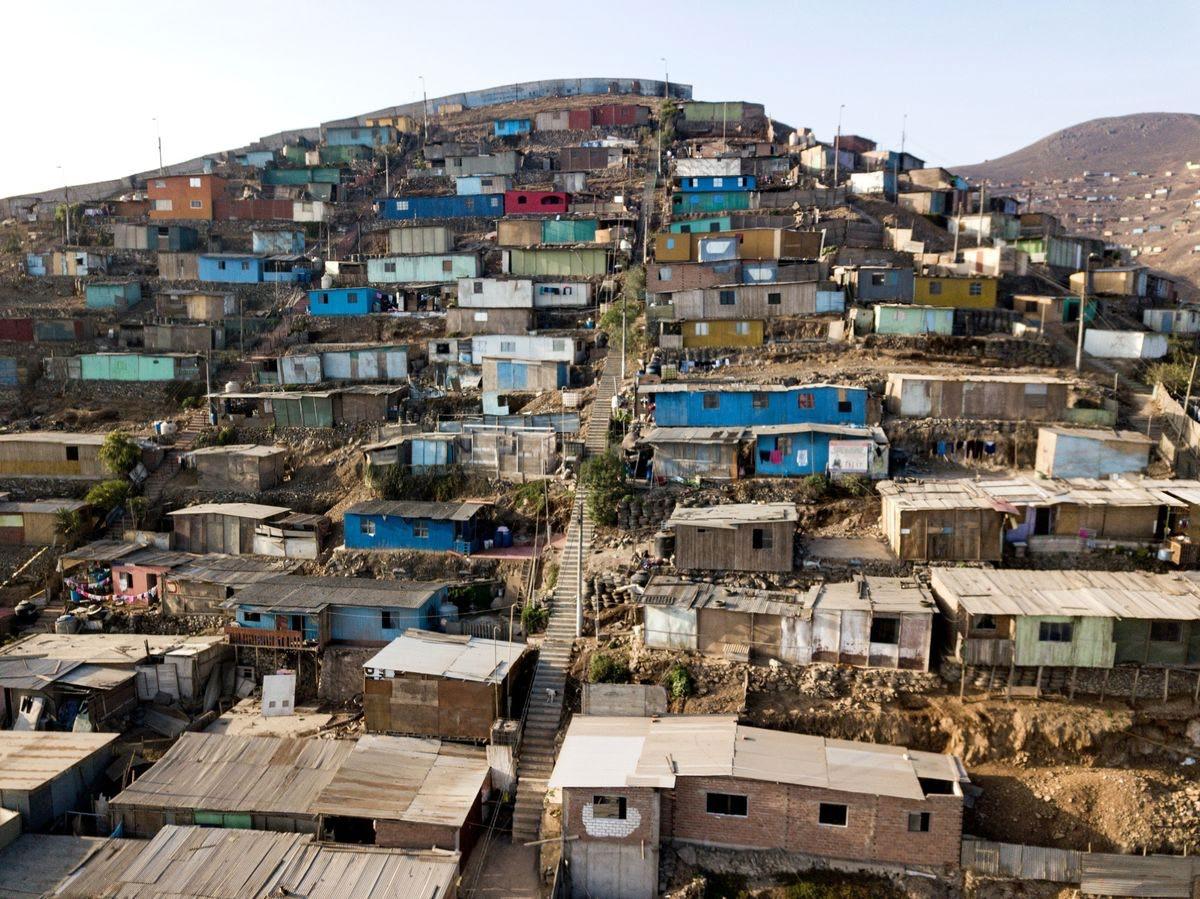
To start simple with some very realistic statistics, over one trillion people in the world live in slums or other kinds of informal settlement. 5 million people worldwide who live in slums have benefitted from the UN-Habitat's Participatory Slum Upgrading Program. There are over 190 countries in SubSaharan Africa, the Caribbean and the Pacific regions that are thriving for an effective urbanization and, ultimately in the process, getting rid of as many slums as possible. But when you hear these big numbers and the so-called ‘solutions’ to the problem of housing in the world, it seems kind of, ironically, unrealistic. We want some real life stories that really get to us, that really tell us, without directly stating, that the methods of the UNHabitat are working. So let’s get to them.
Before some stories, some reasons. Why are slums a problem? When living in these unsanitary, unsafe places with such a large amount of people, diseases spread, education just doesn’t work, crimes increase, poverty doesn’t end, and all of these reasons interconnect with overpopulation in general. So, one can think correctly that slums are a byproduct of overpopulation, but overpopulation isn’t the only main player in this huge issue. Others include poor governing, the fall of the economy, natural or manmade disasters, and more. So, like what the wonderful speaker Chris Williams stated, everything is connected. The UN-Habitat doesn’t just focus on one issue of housing, but instead tries to tackle and ultimately fix the problems causing the housing problem. This leads to the chain reaction of the issues related to those problems, and aids in the SDGs being realized. To paraphrase, interconnection.
So back to the slums and their stories. What has the UN-Habitat done, in detail, about these mass problems? First comes the urban planning capacity building program in Sierra Leone. To help the government of Sierra Leone to develop a better National Urban Policy (NUP) process, UN-Habitat conducted a workshop to develop government capacity and build up countrywide knowledge through a so-called “trickle down” system. In this context, the National Urban Policy is basically a set of government decisions that aim to make better cities. During the participatory workshop, the attendees focused on the need for the NUP to be relevant to the Sierra Leone context. This was an instance of an
educator program that was intended to educate those who have stands in governmental or regional bodies, so that they could cause change in the slum problems of the local area.
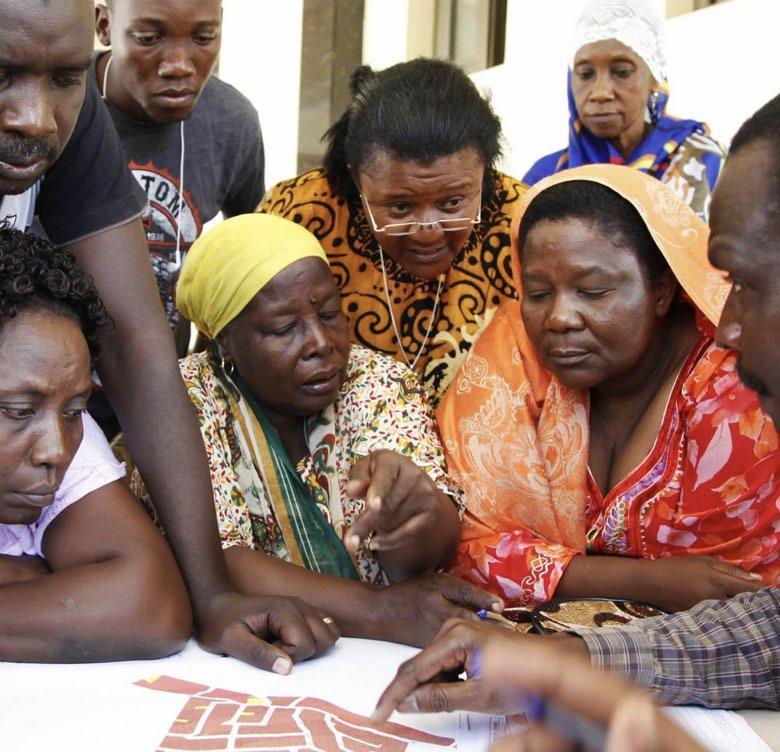
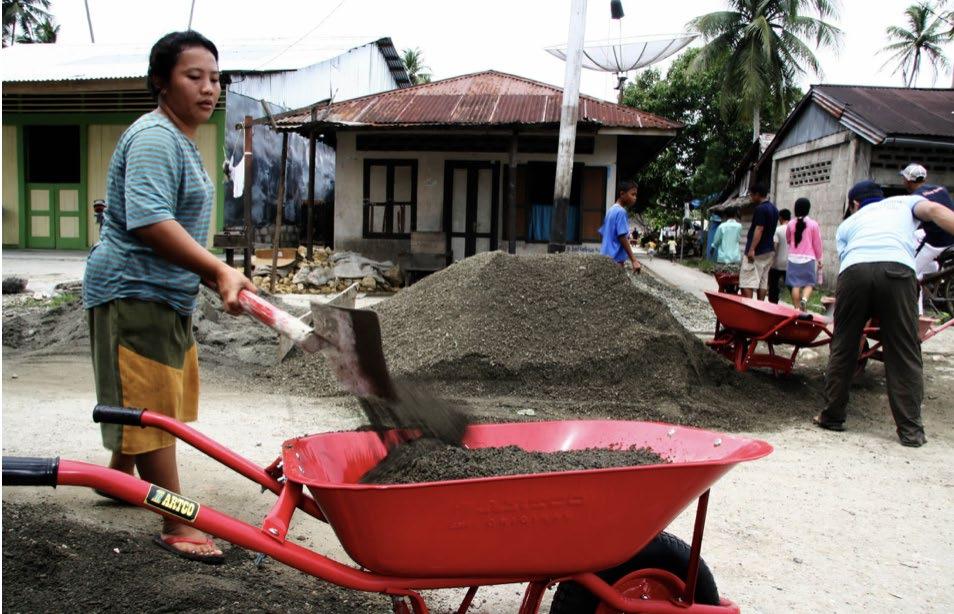

Another thing to talk about is the Participatory Slum Upgrading Program, or PSUP. This is a program created by the UNHabitat in 2008 to ensure that people living in Slums have a say in what they want their community to look like and how they would like to improve their states of living. This Program doesn’t have any legally binding power, but it encourages countries to actively fund and aid those in need of better homes, and leads other programs that aid in the improvement of slums. The process is quite straightforward, with UN officials visiting sites and talking to locals, then reaching some kind of consensus with the local leaders on how to improve the community, and, ultimately, creating change. Some of the most successful instances include the city of Mtwapa in Kenya, Ga-Mashie in Ghana, Yaounde in Cameroon, and Montego Bay in Jamaica.
So those were some examples. Well, the UNHabitat is indeed working pretty hard. But how do they get rid of the slums? Just educating those in need of improvement in their homes isn’t going to cause change. Let’s get into the details. In the past, it was expected to encourage people to go to rural areas. Like, why don’t you just go to the developed parts of your city? Can’t you just move? Well, we all know that’s not possible, so the goal here is to improve these slums. Like stated previously, the UN-Habitat Participatory Slum Upgrading Program, and many others intended to upgrade peoples’ homes, don’t do this on their own. They always involve locals living in the area, improving the local economy, creating new jobs, creating progressive changes in mindset, and encouraging cooperation. Change occurs gradually, and people adapt to improvement in steps. The best way to plan improvement currently is centered on ensuring people live away from danger zones, such as flood lines of rivers, and are set back from slopes and landslides. Safety is the number one priority, and afterwards, funds are gathered and basic infrastructure such as gutters, public toilets, and primary schools are provided. Funds are indeed the most crucial in upgrading ways of life. And with the willingness of the people to stand up and create change, change indeed is realized.
So like this, the UN-Habitat has, and still is, aiding countries in getting rid of their slums and, ultimately, tackling several issues in connection with the topic. Everything is connected, even slums.

In 2021, the global urbanization rate reached 56% as the population in a city increased globally. As more people moved to the city, the city resources and clean environment for residents have become decreased rapidly. Among them, the most serious and urgent problem nowadays is the ‘waste problem’. A dictionary definition of “waste” is ‘material that is not wanted; the unusable remains or byproducts of something’. That is, the word ‘waste’ includes all kinds of abandoned stuff no matter it’s solid or liquid. However, since the most important problem that has to be solved is the solid waste problem, UN-HABITAT has mostly focused on the solid waste problem in urban cities.
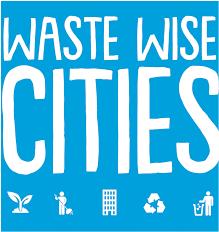
The seriousness of this problem has been proved by several statistics for a long time. According to the “waste wise cities tool” report by UN-HABITAT, about 2 billion tonnes of municipal solid waste were generated in 2015. Moreover, this number is expected to grow over 3.5 billion tonnes by 2050. Plus, over 8 million tonnes of plastic find its way into the world’s oceans every day. Like this, the waste issue is becoming worse, and it affects not only the climate change problem which people mostly be interested in but also residents in urban cities. For instance, as dramatic urbanization has occurred in China, China became the world’s second-largest producer of municipal solid waste. China has dumped over 35% of its waste in inappropriate landfills, and it polluted the air, soil, and groundwater which are close to the resident. Since this misplaced waste has caused a stink, germs, and viruses, they became the main reasons for decreasing the quality of life of citizens.

Practically, many countries including China have experienced various problems because of a wrong waste management system and accumulated solid waste. To solve this issue, UN-HABITAT started a program named “waste wise cities”. This is the program that leads a sustainable solid waste management system without harmful methods such as burning, or dumping in a landfill for manmade and also natural environments. Currently, over 200 countries and over 10 city-to-city partnerships are mobilizing and cooperating in this program.
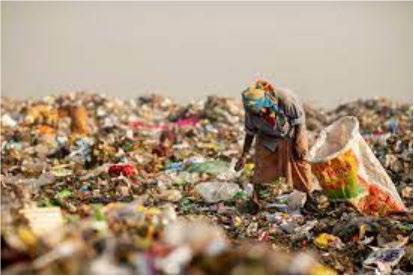
UN-HABITAT has conducted programs like “waste wise-cities” based on their main goal, sdg11(sustainable cities and communities), and it leads to an improvement of the waste problem. However, since SDGs can exert their worth when linked to each other, a collaboration of certain SDGs is needed to accelerate the advantageous results of those programs. Firstly, joining SDG11 and SDG 17(partnerships for the goals). If UN-HABITAT forms more partnerships and broadens the range of this program, more cities will be benefitted from a proper waste management system. Secondly, combining SDG11 and SDG9(industry, innovation, and infrastructures) can solve waste issues effectively. For example, there is a waste-to-energy system that turns waste into useful electric energy through a steam-forming process. If UN-HABITAT applies these two solutions to its sustaining program, people who are suffering from the urban waste problem would be rescued in a short term.
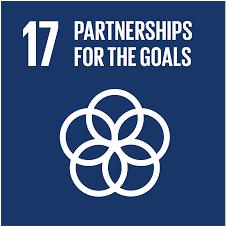
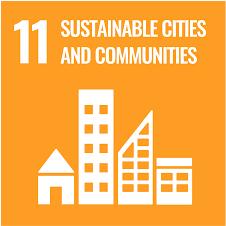


Introduction
99% of the world’s urban population breathes polluted air (Sustainable Development Goal 11). Defined by WHO as ‘contamination of the indoor or outdoor environment by any chemical, physical or biological agent that modifies the natural characteristics of the atmosphere’, air pollution is a critical issue that the urban environment faces (World Health Organization). 90% of people on the planet reside in locations where the World Health Organization (WHO) air quality criteria are not considered to be safe (Health Effects Institute). The polarizing level of pollution is another great concern. A study of 499 global cities found that the most polluted cities are roughly 20 times more polluted than the cleanest cities (Liu). The densest places in the world are facing a crisis because of poor air quality. The issue is that the city means more than just the place people live in. It holds jobs, connections, and life. Simply moving people away from places is not a possible solution.
Along with asthma, a disease well known to be caused by poor air quality, various health issues such as allergic reactions, bronchitis and respiratory infections arise due to urban air pollution (Air Pollution and health). Its severity scale varies from day-to-day struggles to even death. Lung and heart diseases occur more commonly as
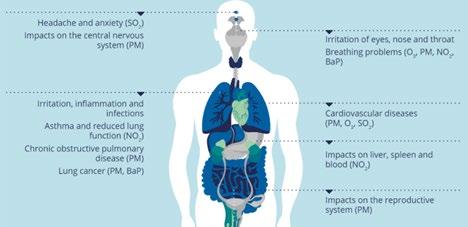
well. Study proves that higher health issue rates were found in the regions affected by severe air pollution (Air pollution in urban areas and health effects). In 2004, WHO estimated 1.15 million deaths attributed to air pollution but to our surprise, the reality outnumbered the estimation by 1.34 million premature deaths (Roser). The downside comes greater as the possible long-term dangers of poor air quality are still a world of mystery.
Air pollution has a significant number of adverse effects on crops and forests. Acid rain, which can increase the acidity of the soil and stop plants from growing, can be brought on by sulfur dioxide, nitrogen oxides, and other pollutants. The ability of crops and forests to photosynthesize is decreased by ozone, another prevalent air pollutant (Health & Environmental effects of air pollution). By causing haze and smog, which can make it challenging to see distant objects, air pollution can also disturb visibility. Through releasing greenhouse gasses into the atmosphere, air pollution also plays a role in climate change by causing global warming and other climatic shifts.
The United Nations (UN) has adopted a number of measures to address the issues with urban air pollution. To assist nations in reducing air pollution and its effects on public health, the environment, and social well-being, the UN launched the Global Plan of Action on the Prevention and Management of Public Health, Environmental, and Social Effects of Air Pollution in 2011. The plan provides a framework for tracking and reporting on air quality as well as a list of suggestions and standards for nations to adhere to in order to enhance air quality. In order to encourage cities to take action to reduce air pollution, the World Health Organization (WHO) and the United Nations Environment Programme (UNEP) established the "BreatheLife" campaign in 2016. The campaign aims to increase public awareness of the negative effects that air pollution has on human health and the environment, as well as to assist local governments in creating and putting into practice plans of action that will enhance local air quality. In order to promote sustainable urban development and increase public understanding of the effects of urbanization on climate change, the United Nations Interagency Task Force on Urbanization and Climate Change was established in 2018. The United Nations Economic Commission for Europe (UNECE), a specialized agency of the UN, is responsible for the sustainable development of the European region. It has created protocols and conventions like the Convention on Long-range Transboundary Air Pollution, the first legally binding agreement on air pollution in the UNECE region. Additionally, the UN routinely hosts international conferences, such as the Conferences of Parties (COP) under the UNFCCC and the United Nations Conference on Sustainable Development (Rio+20), where governments come together to discuss and negotiate measures to reduce air pollution.

Three possible solutions that can be proposed are energy-efficient buildings, green roofs and walls, and sustainable transportation. As changing the city itself drastically or moving the population out is impossible, making changes within the attainable boundary is needed. These are non-extreme, applicable solutions. The two greatest sectors of energy consumption are transportation and buildings
(Rosenfeld). By adapting energy-efficient reconstructions, the total pollution generated by the buildings will drastically decrease, mitigating air pollution in the long -term. Green roofs and walls are solutions that can be adapted in various buildings even if it has been already constructed. This is a useful adaption for current cities that are already packed and developed. It maximizes space usage and allows for more green areas to be generated. Sustainable transportation should be conducted on a government or national scale to provide everyone with affordable and eco-friendly transportation. Although individuals can make a difference, the influence becomes greater when it is adapted on a larger scale. Transportation systems could be a possible green path if sustainably provided.
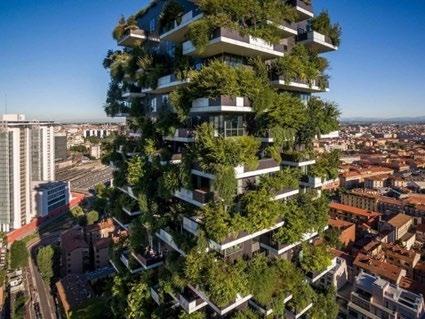

Introduction
Our planet Earth is not very big as we think. And even the sea covers 71% of it. About 29% of the planet's surface, is made up of actual land. Again, this looks enormous until we consider primarily unoccupied areas, such as the Arctic and Antarctic, and the deserts. Although these areas are not always completely desolate, they typically only have relatively small populations. Even though our planet could not grow any larger, the number of people keeps rising annually. The population of the Earth has reached 8 billion as of November 2022. More food, water, and land are needed as more people populate the planet. Is it possible that there will not be enough resources for everyone at some point?
Overpopulation means when a species' population starts to grow faster than its ability to survive on its current level of resources. This may be brought on by both a rise in the birthrate and a higher life expectancy among the specie. People in wealthy countries are now living far longer than they did in the past due to medical advancements. Because of reduced death rates and the approximately 80 million births that occur each year around the world, the population has been increasing by almost a billion people every 12 years. This growth is significantly more rapid than it was hundred years ago. Demand for food, water, and other resources rises as the population does. The Earth's resources are being rapidly destroyed as a result of innovations in farming methods and manufacturing processes for goods like clothing, automobiles, and computers that people desire to utilize. Environmental harm, such as climate change, is brought on by the harmful emissions created by industry and cars. A place's overpopulation may also result from a large number of people who are compelled to move there after a war, poverty, or other catastrophe renders their previous residence unsuitable. Hurricanes and floods are becoming more frequent due to climate change, and many more people may undoubtedly be forced to relocate in the future. Because of the increased demand for resources caused by overcrowding, there are higher possibilities of more conflicts and wars. As we look for more resources, we advance to the area that was once home to other species, thus reducing our biodiversity. A current estimate of 140 thousand species each year may be lost to extinction as a result of overfishing and human occupation of huge land areas for the cultivation of food and fuel crops. English broadcaster, biologist, naturalist, and author Sir David Attenborough has said that the size of the human population has an impact on all other environmental issues. He referred to humans as "a plague on the Earth" in 2013 and proposed limiting population growth would be required to control it.
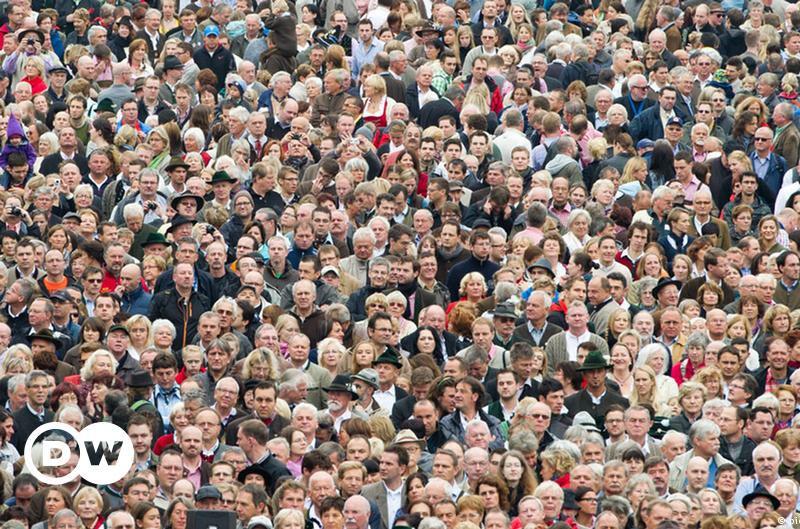
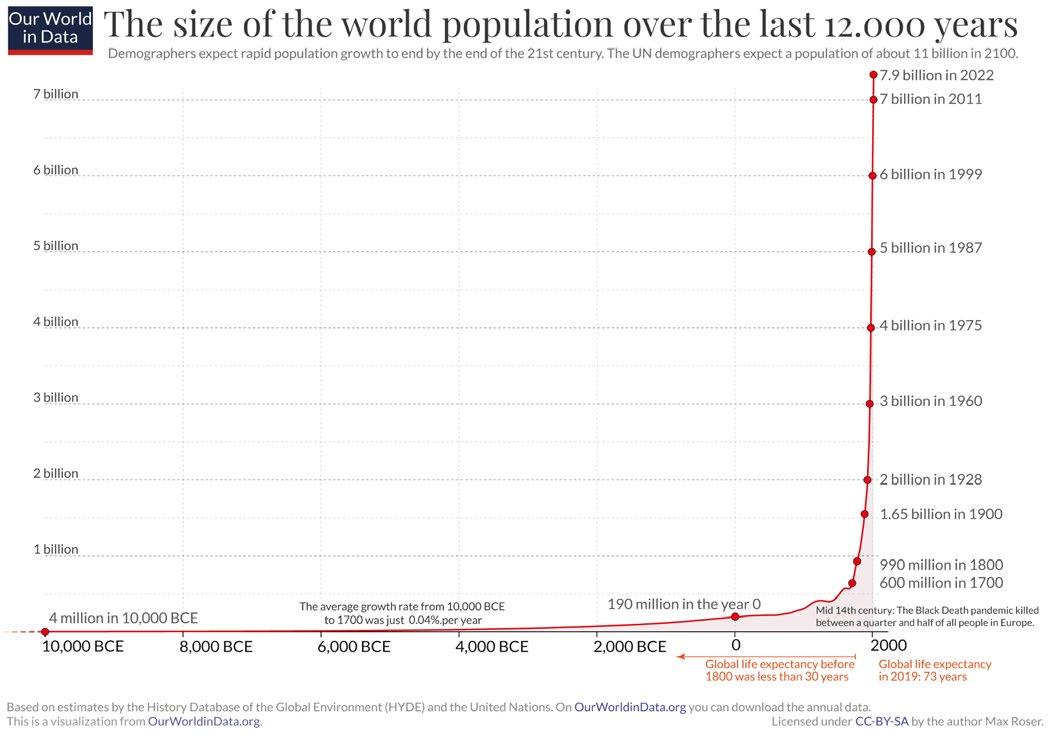
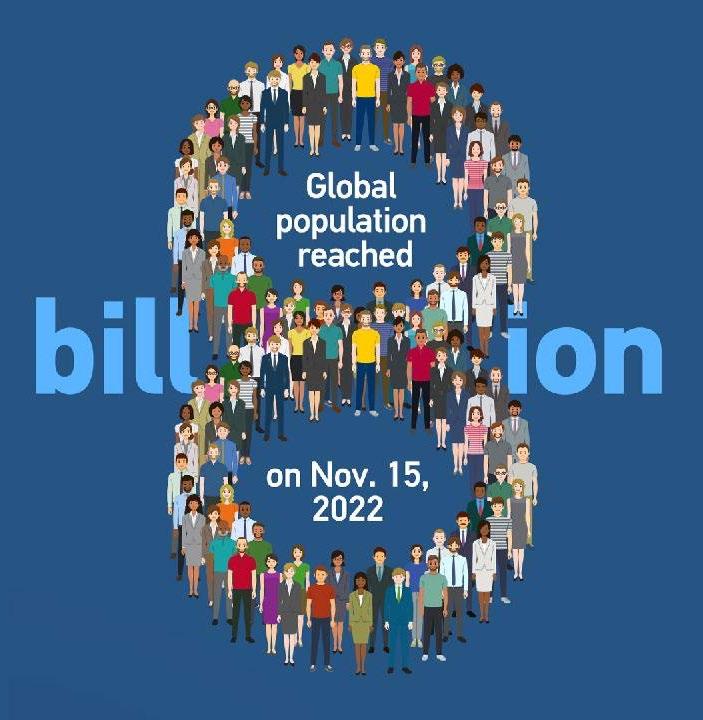

Although the numbers of the world population will continue to expand at current rates, in reality, the pace of population growth has been declining since the 1960s. Due to longer life expectancies, the population is currently very large, but if birth rates continue to decline, ultimately population will drop. The United Nations projects potential scenarios based on both high and low fertility rates in a particular year and publishes annual population trends. The population of the globe is expected to keep growing until 2100, when it will peak at 11.2 billion, before starting to decline. The rate of growth might be decreased more quickly if access to contraception services is available across the universal. The Earth does not currently appear to have the resources to support 11.2 billion people. Some, however, make the point that humans have so far been able to create new means of surviving. The problem is that consumption cannot remain at the current levels seen in the richest nations. Despite the UN's estimate that 850 million people worldwide are starving, households in the UK alone still throw away 4.5 million tonnes of food annually. The average American uses over 300 litres of water each day, which is 15 times more than someone living in a rural area in sub-Saharan Africa. Some claim that the Earth could support this many people if there were feasible development with more sustainable methods of producing food and other resources. However, as people consume more and more, this idea seems more and more optimistic. People aspire to live more luxurious lives, and if everyone in the world used the same amount of resources that the average American does now, it would take resources of five piles of earth to sustain civilization.


Having fewer children is one of the most obvious strategies to reduce population. Families are more inclined to have more children in nations where infants and young children have a lower chance of living until adulthood. Families are also more likely to have more children if those children may be required to do agricultural labour. However, having more kids also means having more people to take care of and feed. People tend to have fewer children when they are more educated. There are now 130 million girls and young women without access to education worldwide. Many are forced to work at home where they are vulnerable to getting abused. Girls who can stay in school have lower rates of early marriage and pregnancy. Additionally, they are probably to have fewer kids overall. One of the best- strategies for lowering unintended pregnancies is empowering women and girls so they have control over their bodies and life. It's essential to take into the roles of society and government policies in these situations. While some rules make it more difficult for people to get support, others help give access to services like family planning or education. In order for young people to make educated decisions as they get older, it's also critical to give them access to knowledge regarding pregnancy and contraception. In order to encourage people in underdeveloped nations to have fewer children,
governments can also provide financial incentives to families with fewer children and support health programs to reduce infant mortality. Some people decide against using contraception because of social or religious reasons. Offering access to contraception to all those who would like it would lead to a spectacular drop in the population.
Q: What kind of activities and works are UN Habitat doing to solve the problem of overpopulation in urban areas?
A: Decentralizing dominant cities’ industry and social infrastructures will prevent every person, job opportunities, and advancement to be focused in one single city. Also, improving life quality in rural areas by providing better social infrastructures would be a possible solution for overpopulation in urban areas.
Q: The issues less developed and more developed nations face due to human settlement is very relative. How does UN-Habitat deal with the relative severity of the issues?
A: UN-Habitat, while dealing with all human settlement issues, has to make decisions on where to put out greater focus. Although our primary focus would be places that need the most help, we do not understand development and sustainability as separate paths but as one. We try to find ways to achieve infrastructure and habitats that are sustainable so sustainability could be achieved through development.
“7 Innovative Projects Making Cities More Sustainable.” World Economic Forum, https://www.weforum.org/agenda/2020/09/cities-sustainability-innovation-global-goals/.
“Air Pollution and Health.” UNECE, https://unece.org/air-pollution-and-health.
“Air Pollution in Urban Areas and Health Effects.” Core, https://core.ac.uk/download/pdf/132305048.pdf.
“Air Pollution.” World Health Organization, World Health Organization, https://www.who.int/healthtopics/air-pollution#tab=tab_1.
“Air Pollution: How It Affects Our Health.” European Environment Agency, 5 Oct. 2022, https://www.eea.europa.eu/themes/air/health-impacts-of-air-pollution.
"Cities and Pandemics." United Nations Sustainable Development. United Nations, n.d. Web. 25 Feb. 2023. https://www.un.org/sustainabledevelopment/cities/.
“Data”. World Bank, data.worldbank.org/indicator/SP.URB.TOTL.IN.ZS

"DIMSUR." Disaster Risk Management, Sustainability and Urban Resilience. UN-Habitat, n.d. Web. 25 Feb. 2023. https://dimsur.org/.
"Disaster Risk Reduction." United Nations Sustainable Development Goals. United Nations, n.d. Web. 25 Feb. 2023. https://sdgs.un.org/topics/disaster-risk-reduction.

Health & Environmental Effects of Air Pollution - Massachusetts. https://www.mass.gov/doc/healthenvironmental-effects-of-air-pollution/download.
Health Effects Institute. State of Global Air 2019. Special Report (Health Effects Institute, Boston, 2019). ISSN 2578-6873.
“Homepage”, UN-Habitat, unhabitat.org/topic/solid-waste-management
“How Many People Can Earth Handle?” BBC Future, BBC, www.bbc.com/future/article/20220905-is-theworld-overpopulated.
“How the World’s Slums Can Get Back on the Map”, Bloomberg, 21 July 2021, www.bloomberg.com/news/articles/2021-07-26/how-the-world-s-slums-can-get-back-on-the-map.
Liu, C. et al. Ambient particulate air pollution and daily mortality in 652 cities. N. Engl. J. Med. 381(8), 705–715 (2019).
“Municipal Waste to Energy Project-China”, UNFCCC, "Natural Disaster Statistics." The Zebra. Insurance Zebra, Inc., n.d. Web. 25 Feb. 2023. https://www.thezebra.com/resources/research/natural-disaster-statistics/.
"Natural Disasters." Our World in Data. University of Oxford, n.d. Web. 25 Feb. 2023. https://ourworldindata.org/natural-disasters.
Piper, Kelsey. “We've Worried about Overpopulation for Centuries and We've Always Been Wrong.” Vox, 20 Aug. 2019, www.vox.com/future-perfect/2019/8/20/20802413/overpopulation-demographic-transitionpopulation-explained.
Project, Overpopulation Research. “Solutions to Overpopulation and What You Can Do.” The Overpopulation Project, 17 June 2022, overpopulation-project.com/solutions-to-overpopulation-and-what-you-can-do/. “PSUP”, PSUP, www.mypsup.org/News., www.mypsup.org/About_US.
“Real Time World Statistics.” WORLD POPULATION, Worldometer, www.worldometers.info/.
"Reducing the Adverse Effects of Natural Disasters." International Centre for the Study of the Preservation and Restoration of Cultural Property. n.p., n.d. Web. 25 Feb. 2023. https://ocm.iccrom.org/sdgs/sdg-11-sustainablecities-and-communities/sdg-115-reduce-adverse-effects-natural-disasters.
"Research on Vulnerable Populations in Emergencies." National Center for Disaster Preparedness. Columbia University, n.d. Web. 25 Feb. 2023. https://ncdp.columbia.edu/research/vulnerable-populations/.
Rosenfeld, Arthur H., and David Hafemeister. “Energy-Efficient Buildings.” Scientific American, vol. 258, no. 4, 1988, pp. 78–87. JSTOR, http://www.jstor.org/stable/24989053. Accessed 25 Feb. 2023.
Roser, Max. “Data Review: How Many People Die from Air Pollution?” Our World in Data, 25 Nov. 2021, https://ourworldindata.org/data-review-air-pollution-deaths.
Scott, Sophia. “Public Health and Overpopulation: The United Nations Takes Action.” Harvard International Review, 20 June 2022, hir.harvard.edu/public-health-and-overpopulation/.
"SDG Tracker." Sustainable Development Goal Indicators. SDG-Tracker.org, n.d. Web. 25 Feb. 2023. https://sdg-tracker.org/cities.
“Solutions.” World Population, Population Matters, 9 Jan. 2023, https://populationmatters.org/solutions.
"Strategy and Plan of Action for a Safer World." PreventionWeb. United Nations Office for Disaster Risk Reduction, n.d. Web. 25 Feb. 2023. https://www.preventionweb.net/publication/yokohama-strategy-and-planaction-safer-world-guidelines-natural-disaster-prevention.
"The Future We Want." United Nations Sustainable Development. United Nations, n.d. Web. 25 Feb. 2023. https://sustainabledevelopment.un.org/futurewewant.html.

"The United Nations Office for Disaster Risk Reduction." United Nations Office for Disaster Risk Reduction. United Nations, n.d. Web. 25 Feb. 2023. https://www.undrr.org/.
"Using Disasters to Revitalize Cities." Governing. e.Republic, Inc., 26 Apr. 2016. Web. 25 Feb. 2023. https://www.governing.com/archive/gov-cities-that-used-disasters-to-revitalize-their-futures.html.
“The Participatory Slum Upgrading Programme”, Un Habitat,
“The World’s Biggest Slums”, Habitat For Humanity, www.habitatforhumanity.org.uk/blog/2017/12/theworlds-largest-slums-dharavi-kibera-khayelitsha-neza/.
“WASTE WISE CITIES TOOL”, UN-Habitat, 2021, unhabitat.org/wwc-tool





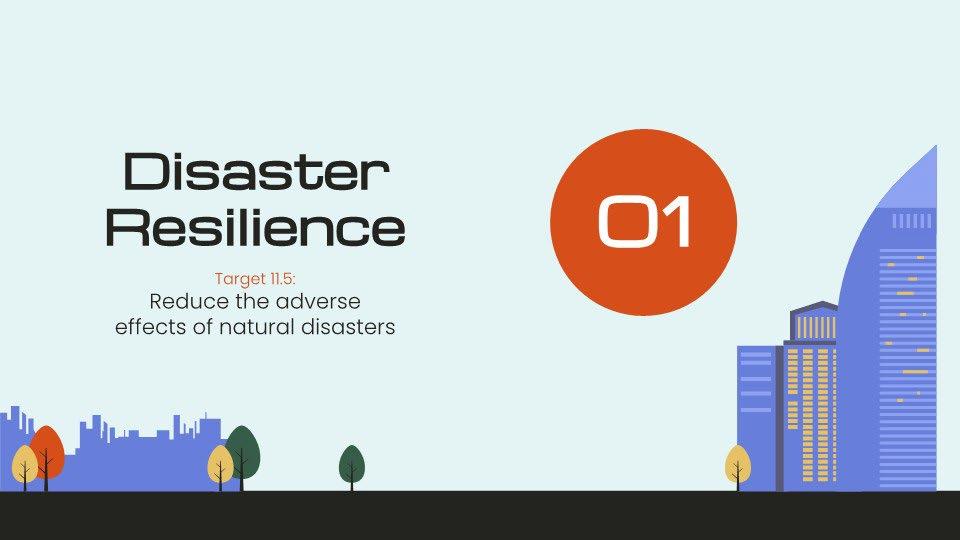

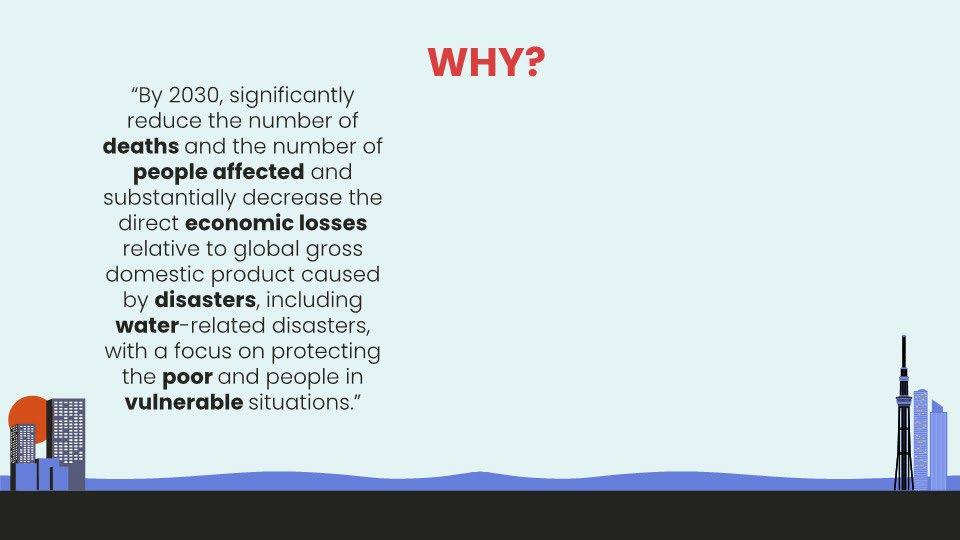
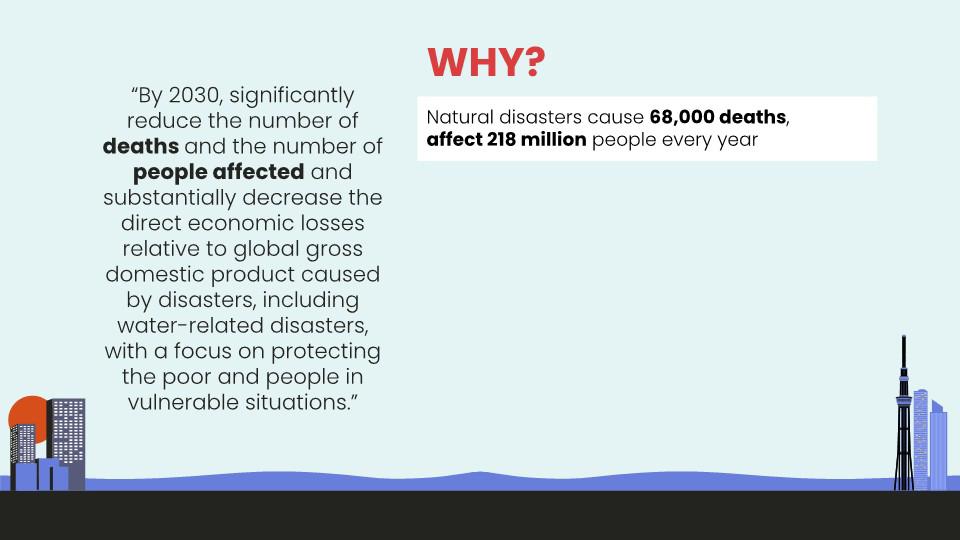
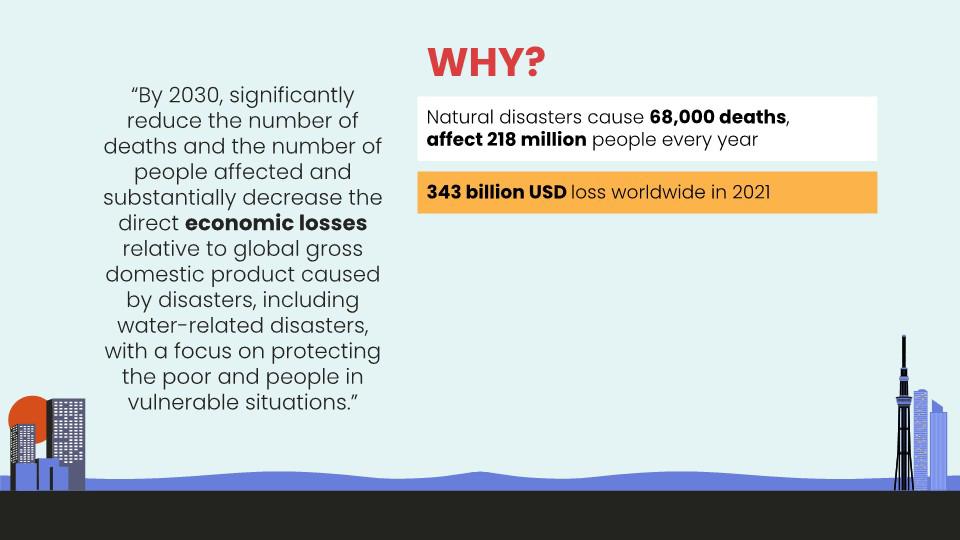



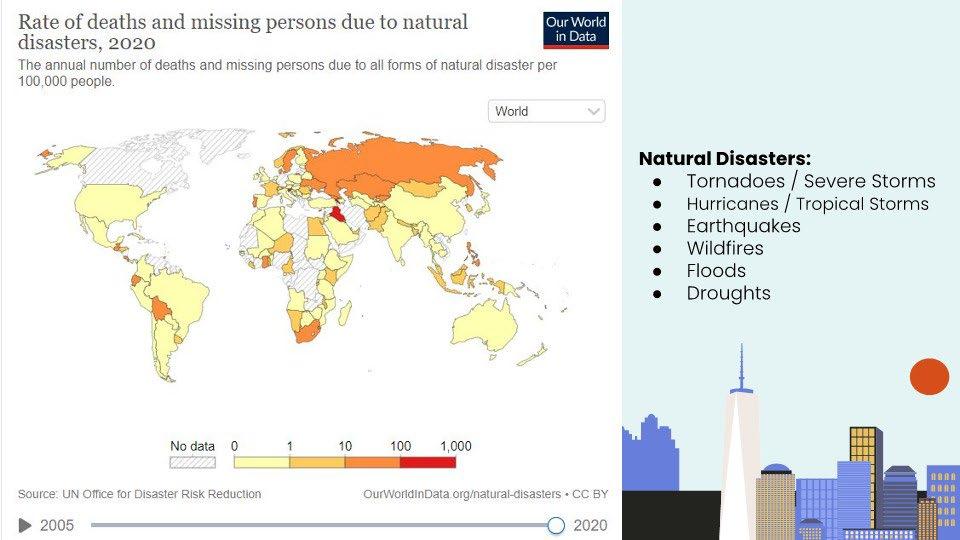

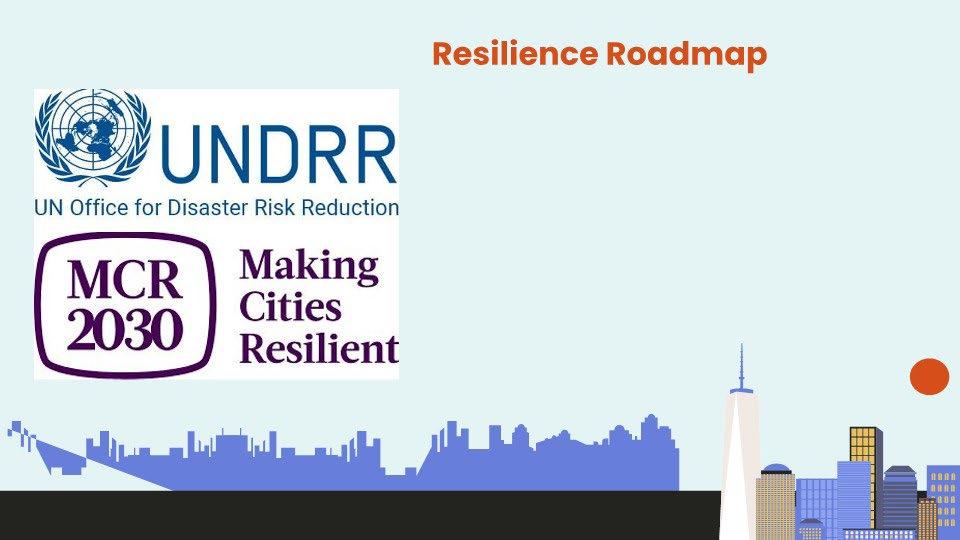
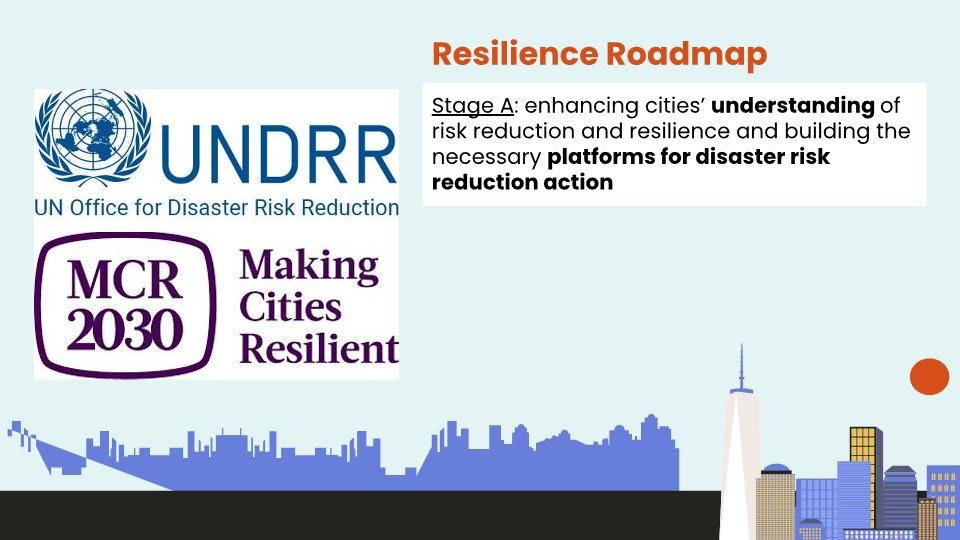

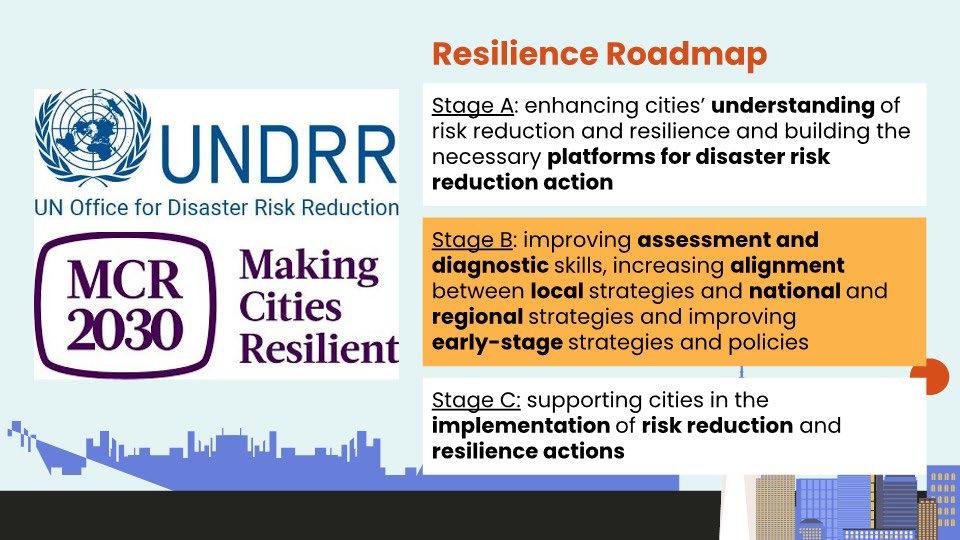

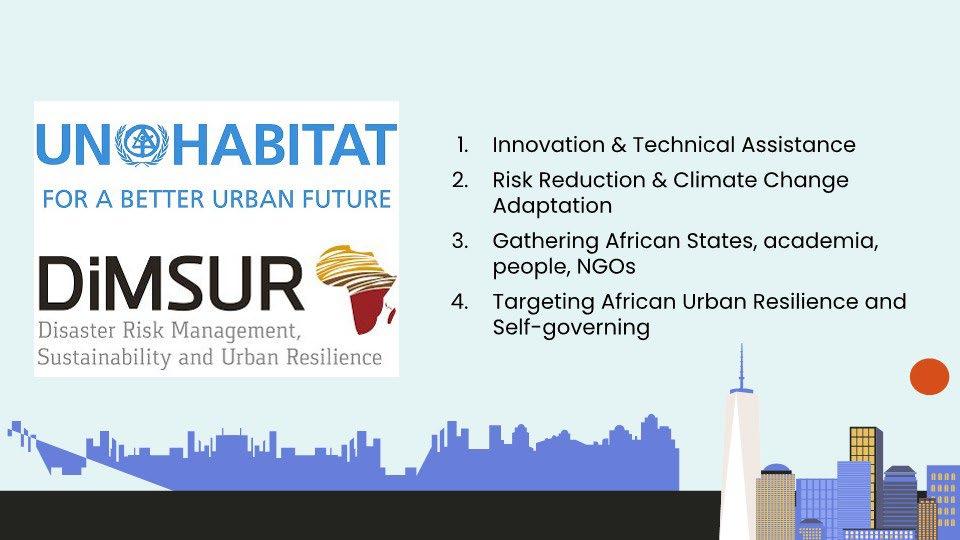




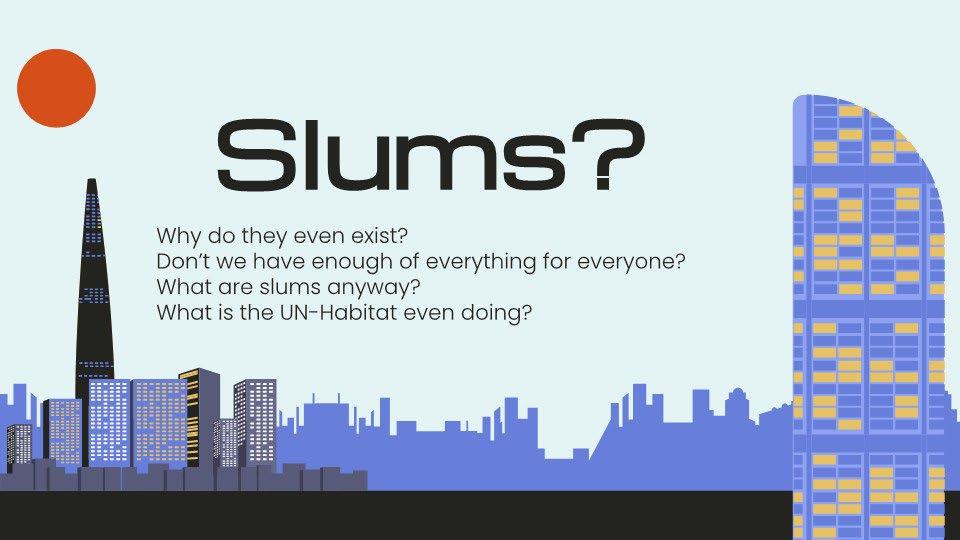
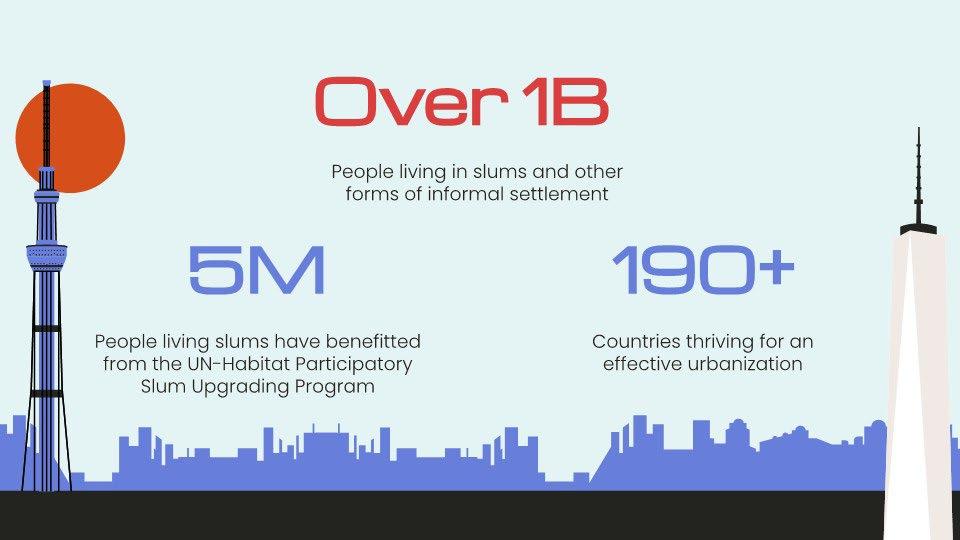
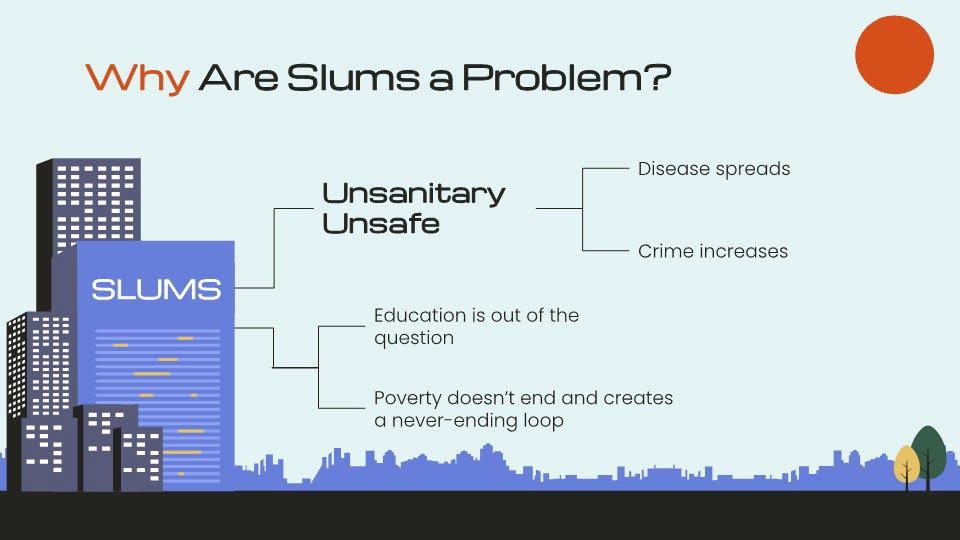
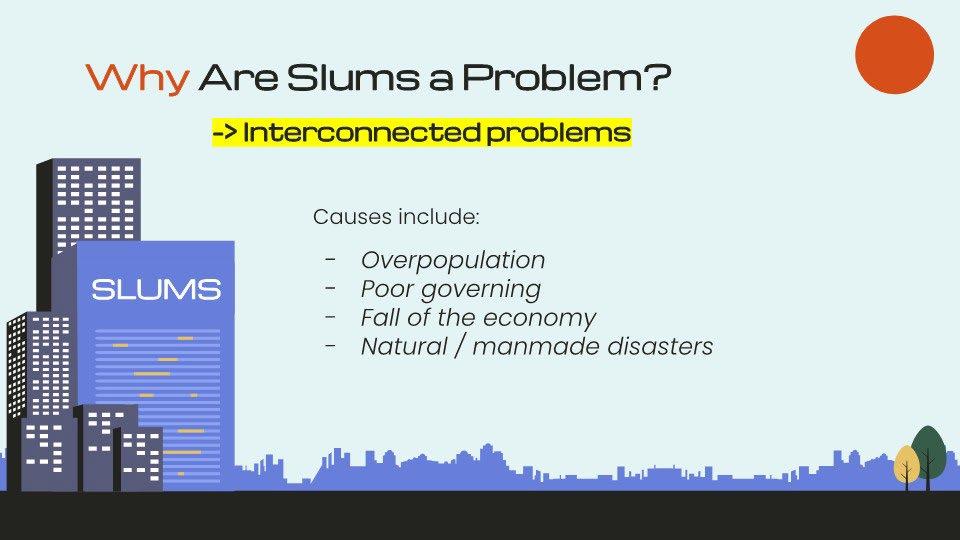

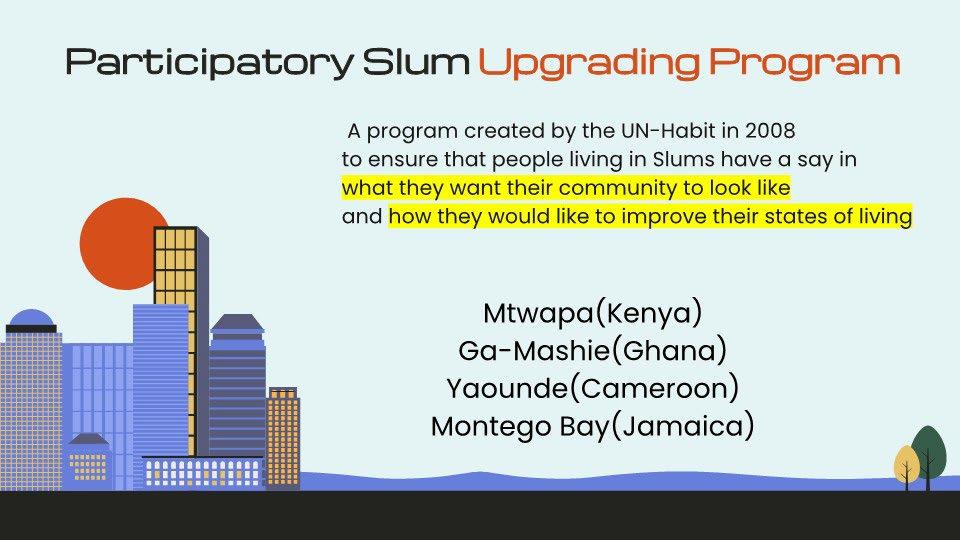
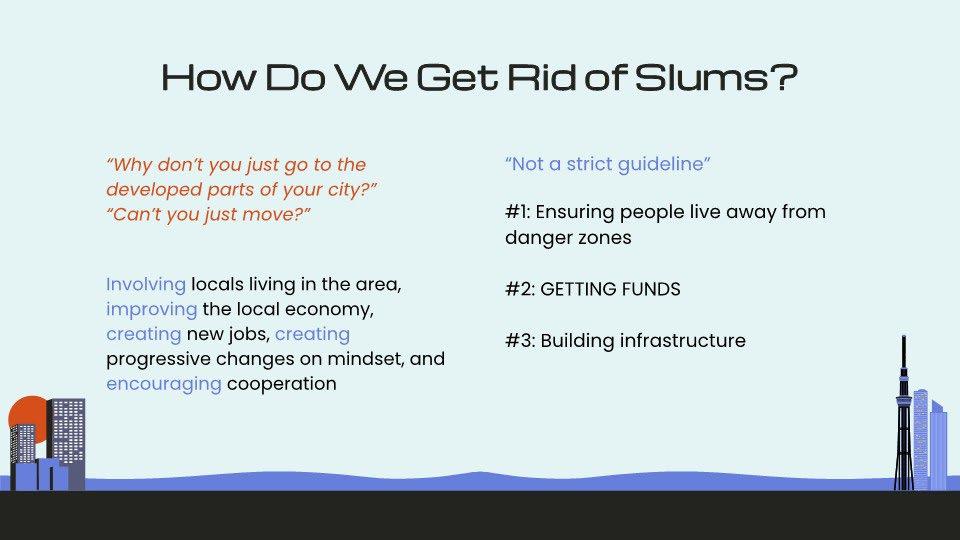




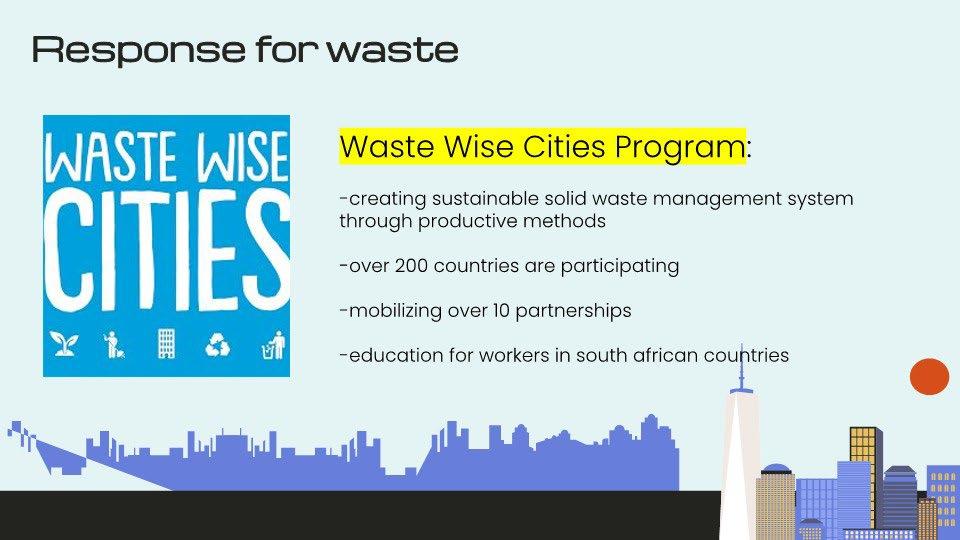
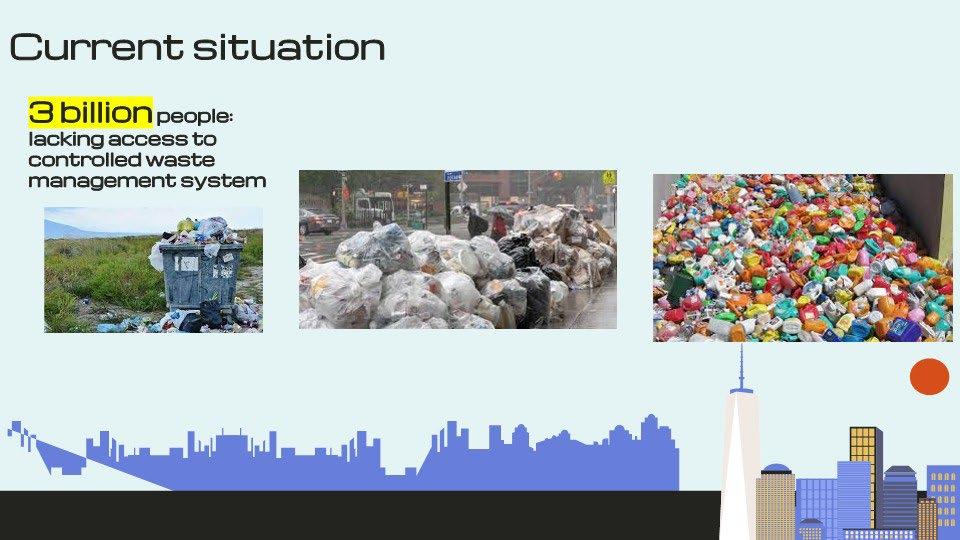
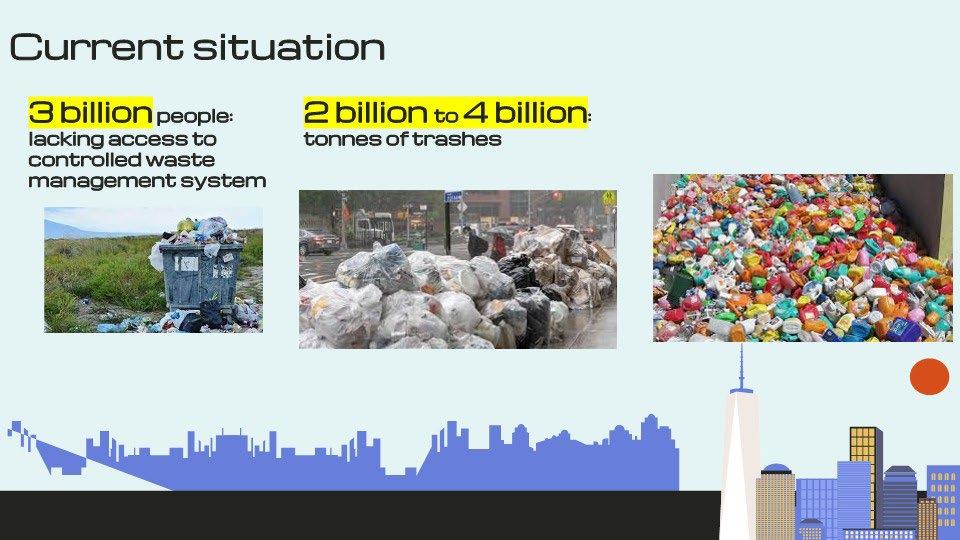







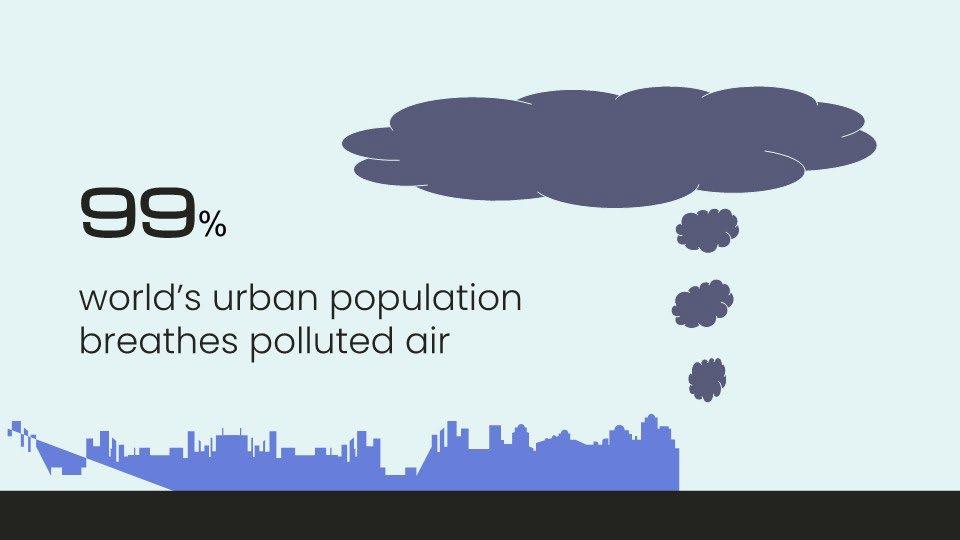
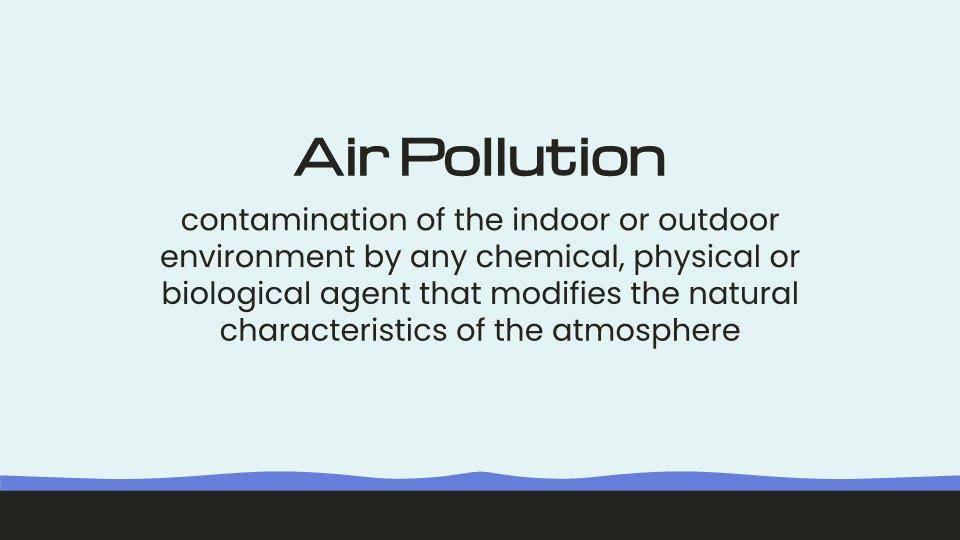


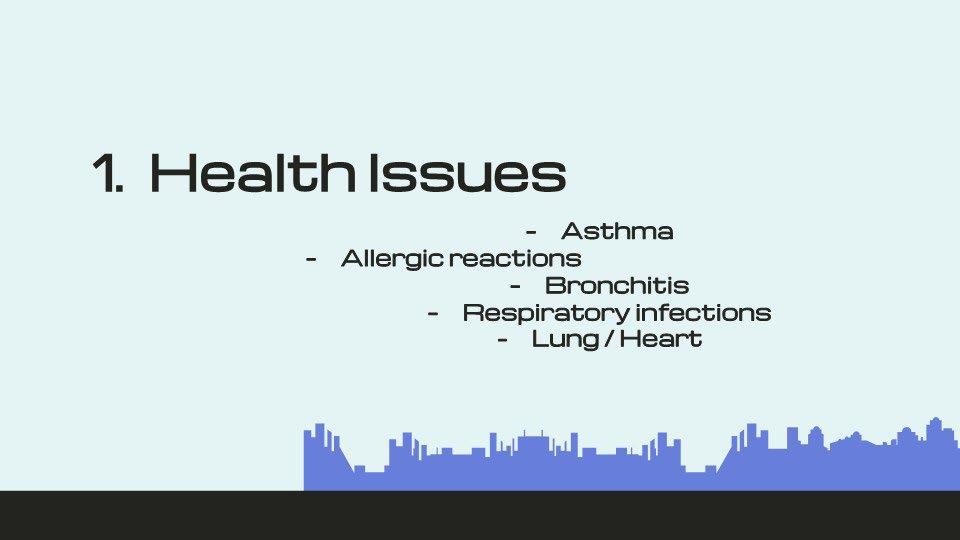
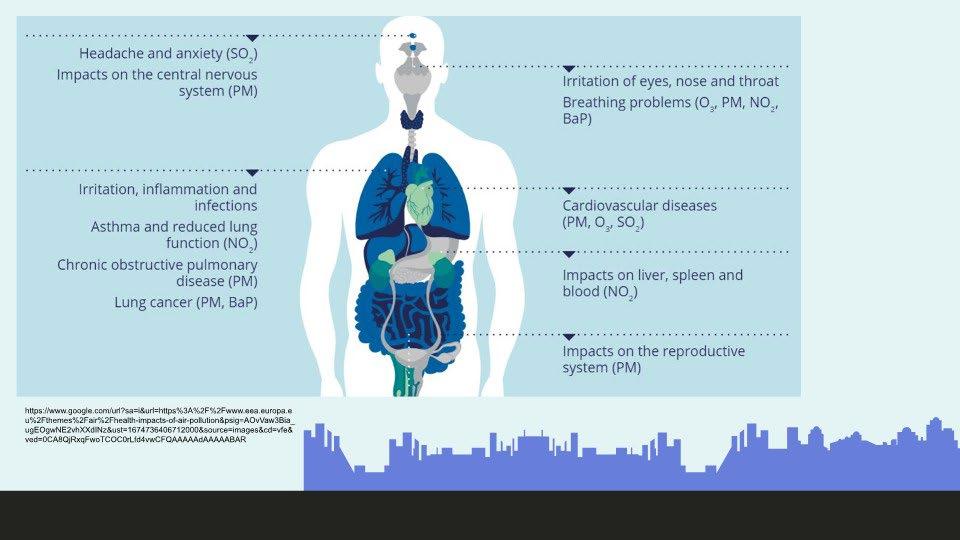
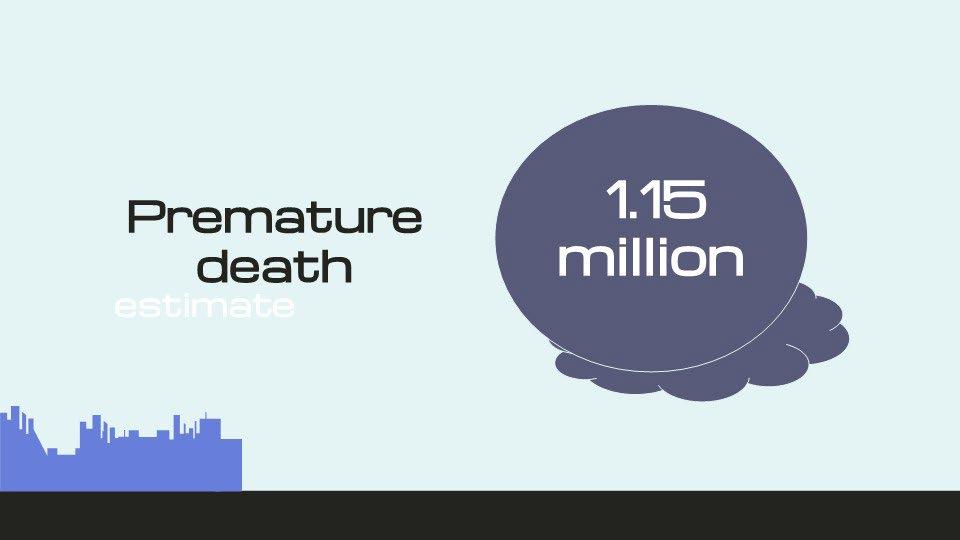
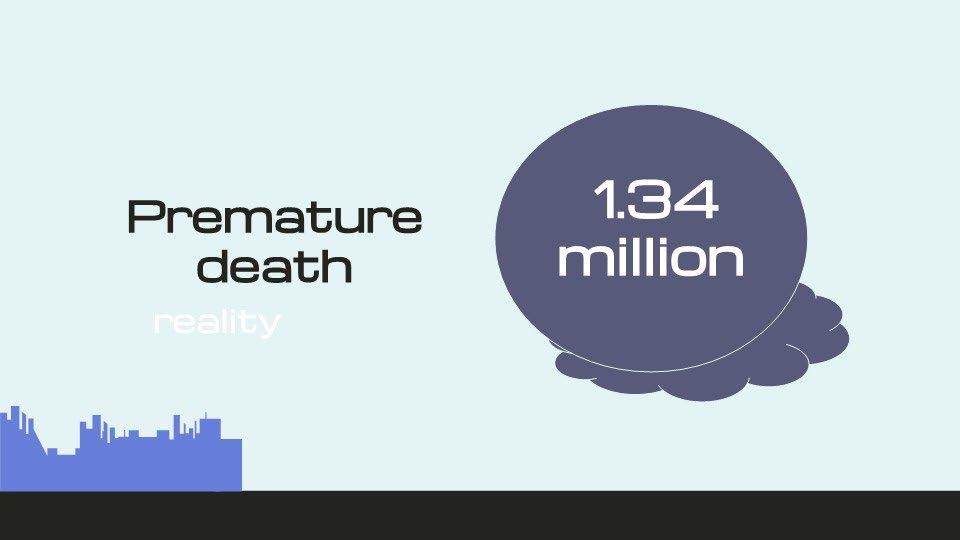
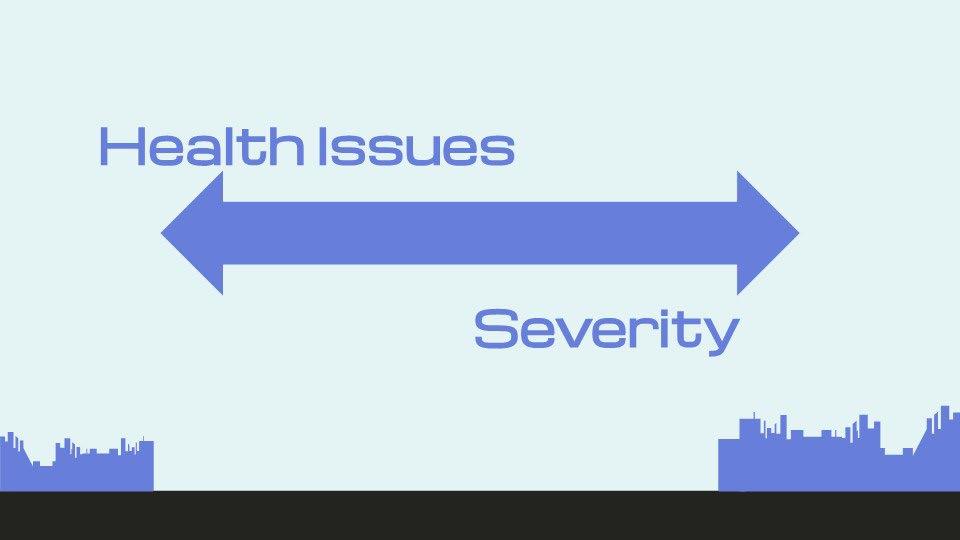


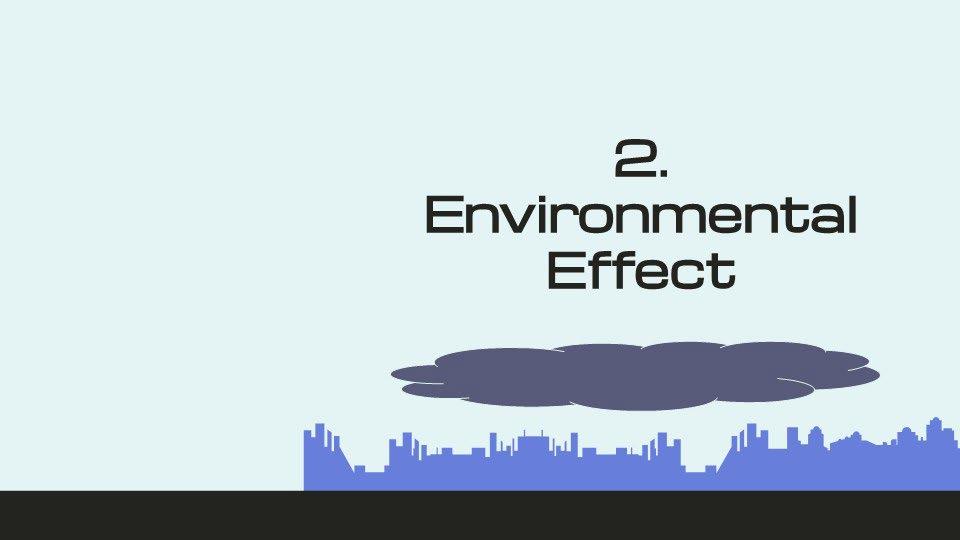



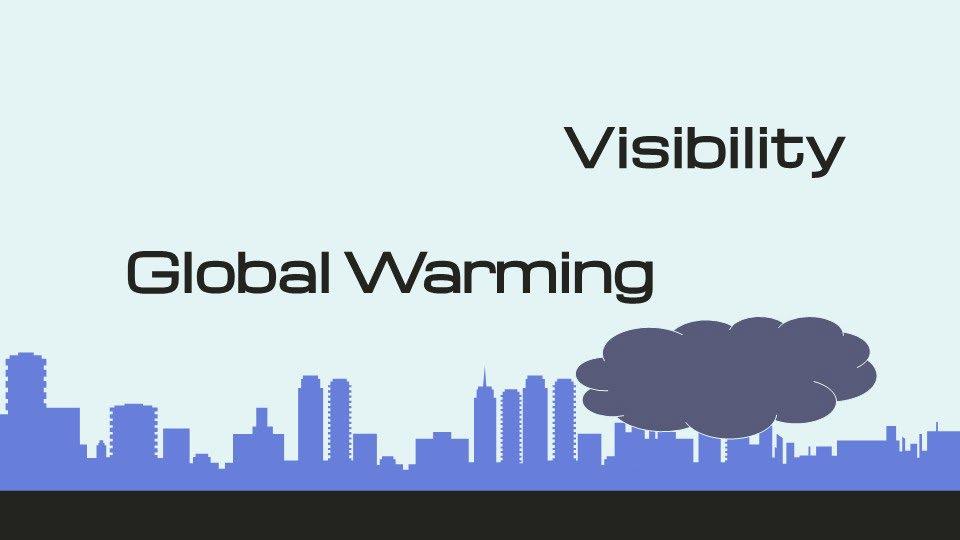
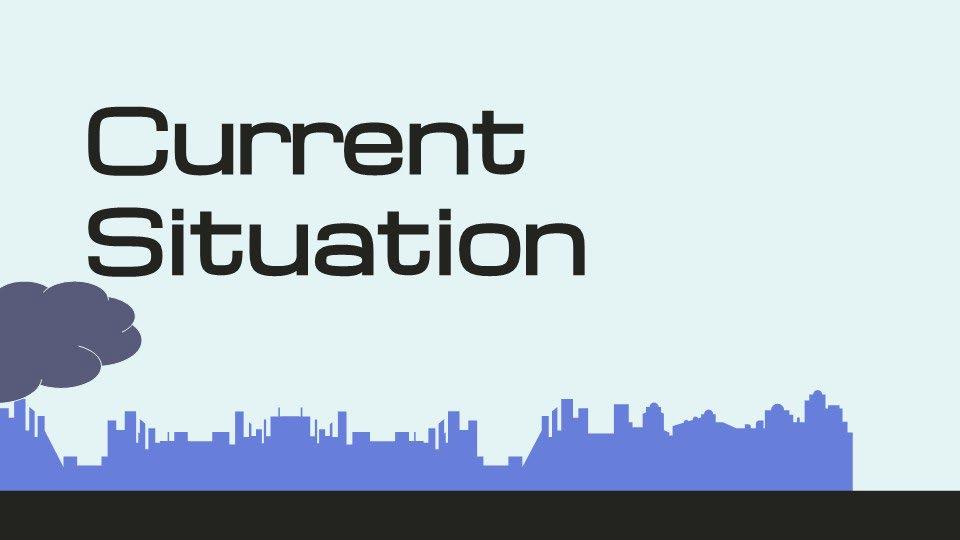
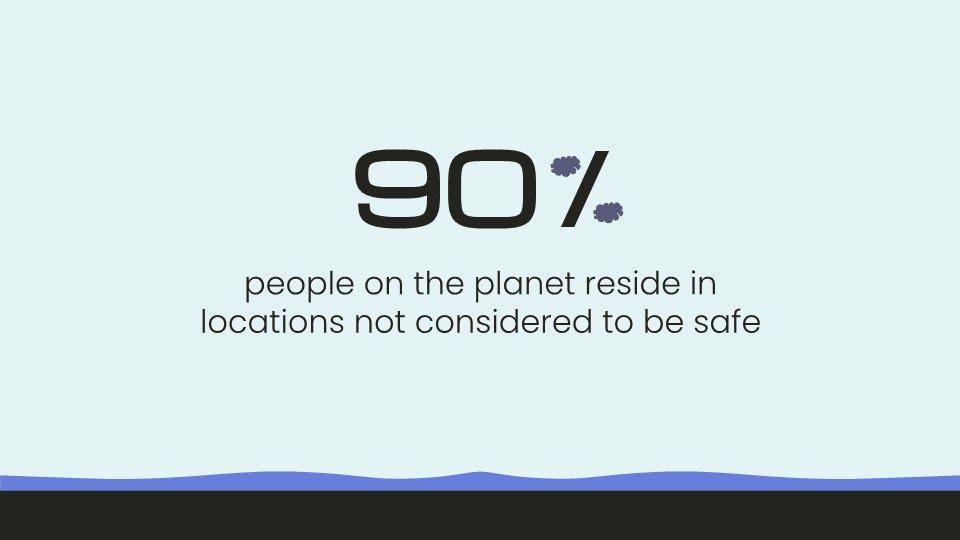



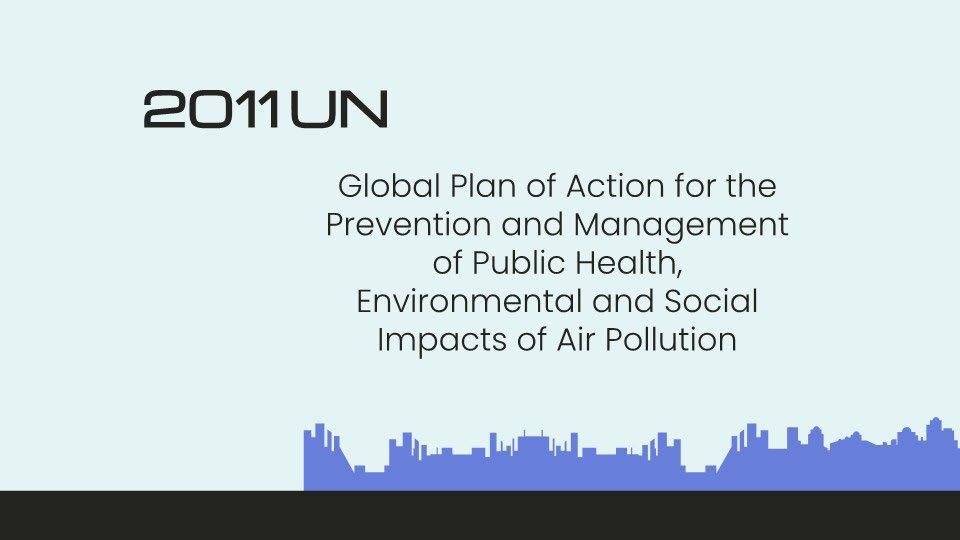


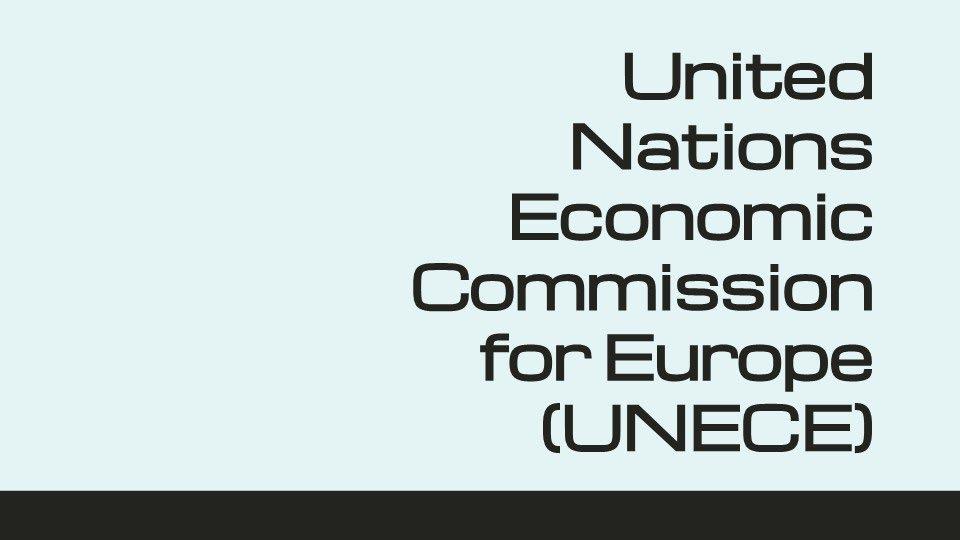
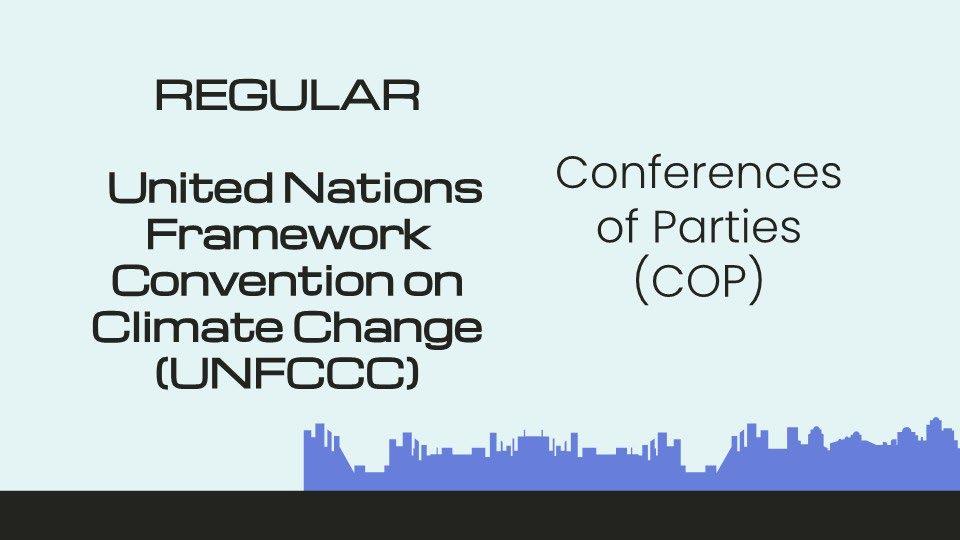

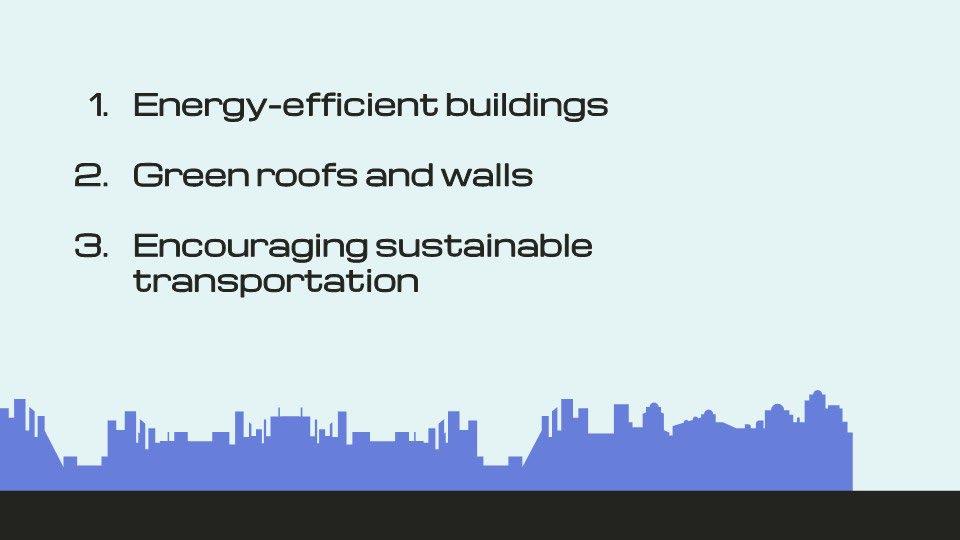
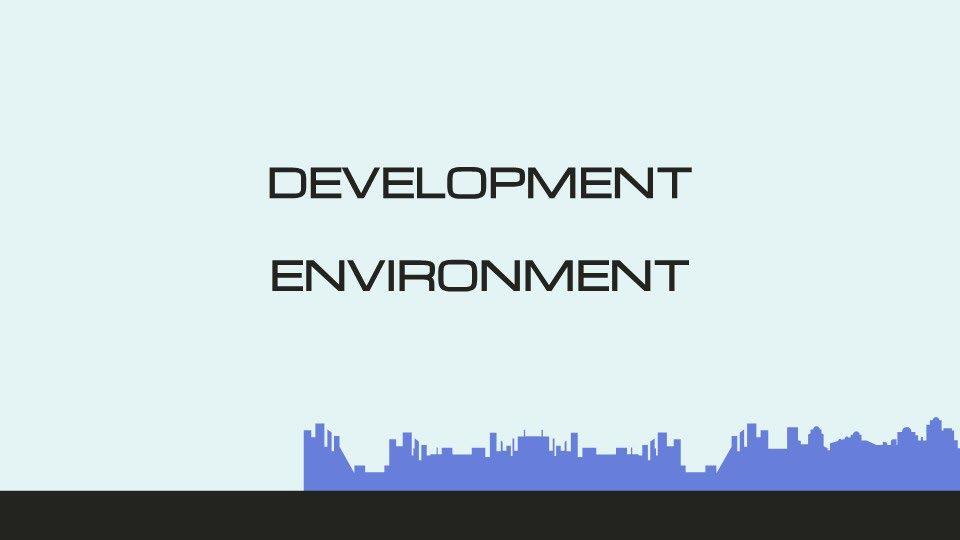
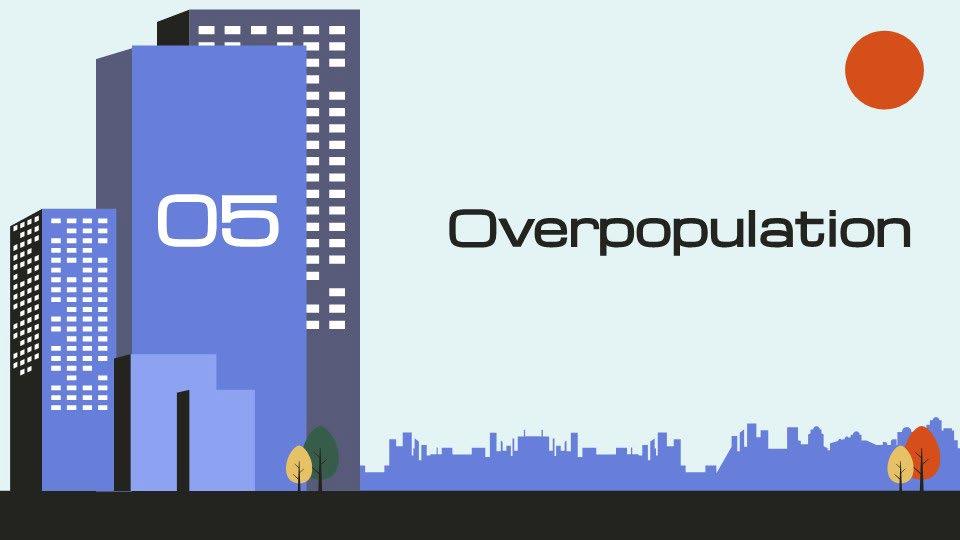


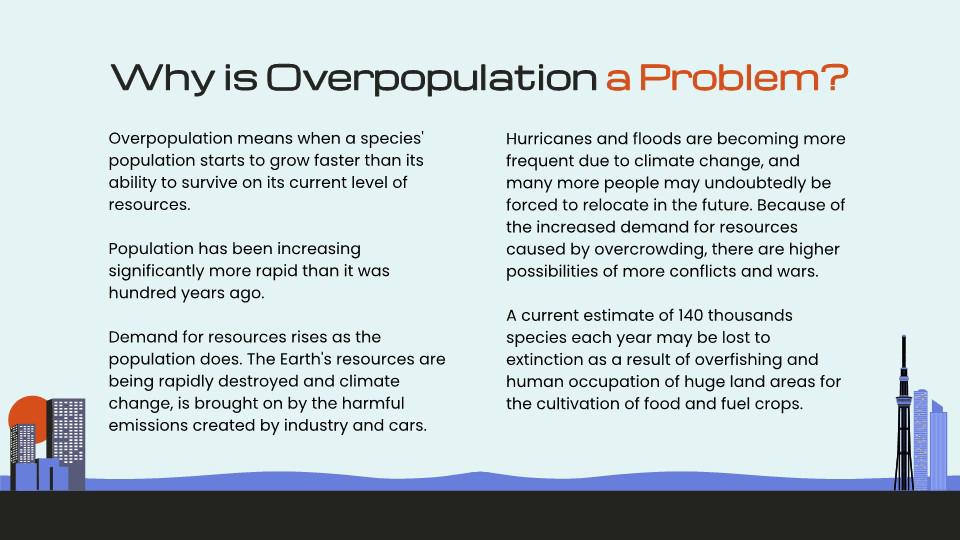


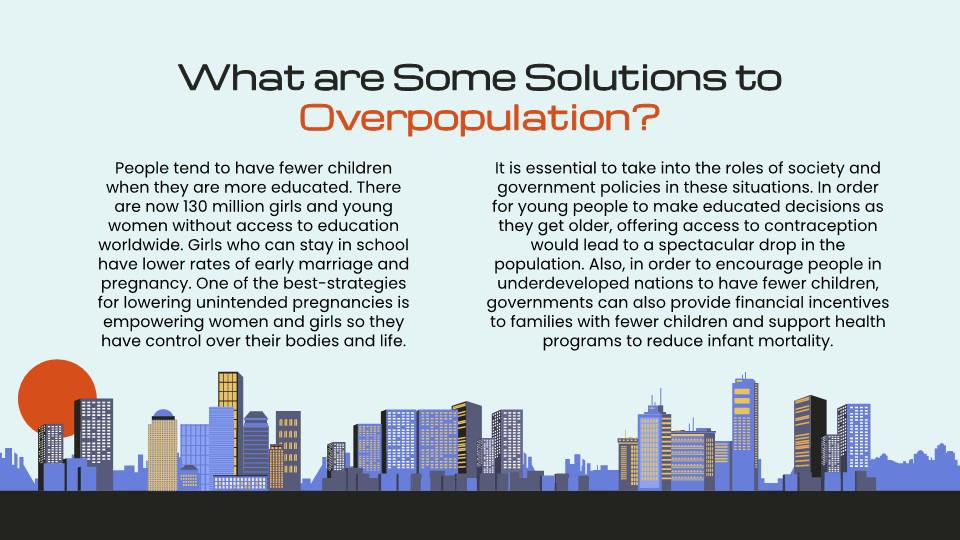
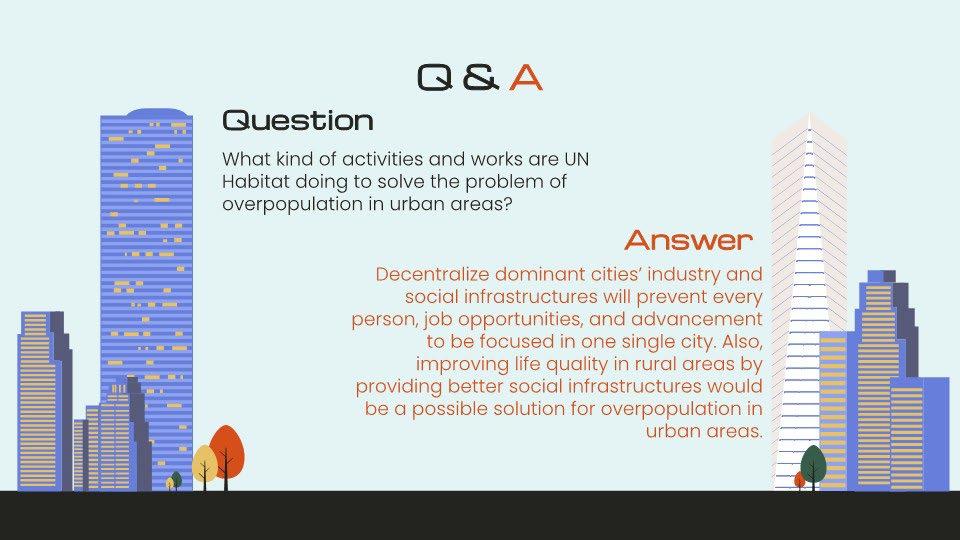


I. Introduction
A. What is Peace and Security
B. Relevancy of the United Nations Security Council and DPRK
II. Security Council and the Korean Peninsula

A. Provocations of the DPRK and the response
III. Sanctions on North Korea (DPRK) and the International Reaction
IV. Works of the Permanent Mission of the ROK to the United Nations for Peace & Security
A. Peace & Security
B. Disarmament & non-proliferation
C. Humanitarian Aid
V. Peace and Security in the SDGs

VI. Q&A
VII. References (MLA)
Goal 16 is about promoting peaceful and inclusive societies, providing access to justice for all, and building effective, accountable, and inclusive institutions at all levels. People everywhere should be free of fear from all forms of violence and feel safe as they go about their lives whatever their ethnicity, faith, or sexual orientation.
High levels of armed violence and insecurity have a destructive impact on a country’s development. Sexual violence, crime, exploitation, and torture are prevalent where there is a conflict or no rule of law. Governments, civil society, and communities need to work together to find lasting solutions to conflict and insecurity. Strengthening the rule of law and promoting human rights is key to this process, as is reducing the flow of illicit arms, combating corruption, and ensuring inclusive participation at all times.
● Significantly reduce all forms of violence and related death rates everywhere.
● End abuse, exploitation, trafficking, and all forms of violence against and torture of children.
● Promote the rule of law at the national and international levels and ensure equal access to justice for all.
● By 2030, significantly reduce illicit financial and arms flows, strengthen the recovery and return of stolen assets, and combat all forms of organized crime.
● Substantially reduce corruption and bribery in all their forms.
● Develop effective, accountable, and transparent institutions at all levels
● Ensure responsive, inclusive, participatory, and representative decision-making at all levels.


● Broaden and strengthen the participation of developing countries in the institutions of global governance.
● By 2030, provide legal identity for all, including birth registration.
● Ensure public access to information and protect fundamental freedoms, in accordance with national legislation and international agreements.
● Strengthen relevant national institutions, including through international cooperation, for building capacity at all levels, in particular in developing countries, to prevent violence and combat terrorism and crime.
● Promote and enforce non-discriminatory laws and policies for sustainable development.

The North Korea Problem comprises the peace problem, nuclear problem, and human rights problem. Nowadays, the North Korea Problem is not regarded as a domestic matter or inter-Korean problem, but an international matter or matter of international concern. Recently, the international community has concentrated its focus on North Korean human rights matters. The UN Human Rights Council and General Assembly(GA) adopted the North Korean Human Rights Resolutions that reveal the cases and evidence of the grave, systematic and widespread violations of human rights within and by North Korea. In these resolutions, it is strongly recommended that the Security Council(SC) should refer the North Korean human rights situation to the international criminal justice mechanism and review the effective method of implementing targeted sanctions against North Korea. SC is the principal organ of the UN which has the primary responsibility for maintaining international peace and security. In accordance with Articles 39-43 of the UN Charter, SC could decide and exercise the coercive non-military and military measures(peace enforcement measures) in case there is an instance of threat to the peace, breach of the peace, and act of aggression. Under the Charter, the commitment to promote human rights and fundamental freedoms was established as a legally binding obligation both of the UN and of its member states. Accordingly, the human rights matter is to be regarded as a matter of international concern and SC has made the grave or widespread violations of human rights a matter of international peace and enacted the resolutions for peace enforcement against the human rights violations. Since 2001, the Responsibility to Protect(R2P) was conceptualized in relation to the concept of 'human security' and has developed into an international norm or at least 'soft law' through the reports or resolutions of the ICISS and UN principal organs, such as GA, SC, and SecretaryGeneral. R2P describes and prescribes the obligations or responsibility to prevent and respond to human rights catastrophes. In terms of R2P, UNSC has the responsibility to prevent, react, and rebuild. It is admitted that in implementing the R2P, the role of SC has to be strengthened. Therefore, the role of SC in the implementation of R2P in relation to the settlement of the North Korea Problem should be positively considered.

Since the Korean war, North Korea has launched 3,119 provocations toward the South, with some to the extent of war crimes or would have caused a war if not properly addressed.
Why does North Korea, with its limited resources and manpower, continue to provoke the South? Various reasons can explain their motivations. The primary reason is to fulfill their ideology. Both North and South Korea do not accept each other as a proper state. Therefore, the government of the DPRK continually agitates the people arguing that they must take down the South Korean “puppet” government as mentioned in its constitution. Secondly, provocations are made to shift the public’s attention from the internal status. It is an obvious fact that North Korea struggles with various internal conditions. To attend to such problems, officials of the DPRK continue to provoke the South and continually report a success to make the public support the Kim family and thereby continue their rule. The final meaning of the missile launches is to protest UN sanctions. The North Korean government has no intention of abiding by the conditions demanded by the UN, but still demands the lifting of sanctions. North Korea uses its weapons as a method of protest and a display of power, saying that it will continue unless sanctions are lifted.
Except for continual small threats, the DPRK has made major provocations whenever its regime was threatened by internal and external events. To begin with, North Korea’s experiments on nukes are viewed as the most regular yet threatening provocation not only to the South but to the entire world. Overall, North Korea has performed an overall of 6 nuclear experiments, which were strictly warned and banned by the UN. Through these experiments, using the technology of its allies, the DPRK possesses around 20-80 WMDs. Continual experiments are a serious violation of the United Nations non-proliferation treaty. The NPT, according to the UN Office for Disarmament Affairs, is a treaty that prohibits the creation of nuclear weapons for the nations that do not possess such explosives, and also prohibits the countries in possession of nuclear warheads from encouraging or handing over the weapon. Therefore, the DPRK left the NPT in 1993, when the International Atomic Energy Agency requested an investigation. Although the non-proliferation treaty does not apply to North Korea which has left the treaty, the current nuclear threat imposed by the DPRK is a direct violation of the UN pillar of security and peace.
Second, an attack against the ROK ship Cheonan took place in 2010, when a South Korean PCC was destroyed by torpedoes of the DPRK shot without warning or with justification. This led to the death of 46 naval officers and one search party member. North Korea also bombarded Yeonpyeong Island in 2010. North Korea used coastal artillery to bomb the island without a declaration of war. This is clearly against agreements in terms of war.
Recently, the DPRK also detonated the liaison office without an agreement, which has been the major means of contact between high officials of the North and South. DPRK threatens the South and its neighbors with continual missile launches. In just 2020, North Korea launched 79 missiles, with one that crossed the NLL and led to the response of 3 missiles being launched from the south to land near mainland North Korea.
In response to this matter, both International and Domestic actions are being taken to prepare countermeasures, mainly from neighboring countries in East Asia. As threats by the DPRK are mostly military threats, the ROK-US joint military training has been the primary method of deterrence. There are three types of training done: Firstly, the Ulchi-Freedom Guardian also known as the UFG is a practice of all-out war in the Korean Peninsula. The second training is called Key Resolve, or KR. It is the deployment of training of US troops. Finally, the Foal Eagle, which is a ground AFV maneuver training. From the North Korean Viewpoint, this practice is shown as a direct threat as they are effective strategies in all situations of total war, special warfare, and war expansion. Therefore, North Korea has been warning the US to stop such practices, while continuing to protest with ballistic missiles.
The second countermeasure introduced was the development and establishment of modern weapon systems and technologies. In response to North Korea’s nuclear weapons, South Korea now possesses a top-tier level of air and missile defense by developing three stages of defense, Deterrence by Denial. The first factor in deterrence is the Kill Chain. It is a predictive strike on possible nuclear facilities, preventing the launch of ICBMs and SLBMs. This system also targets major military and political facilities, leaving North Korea with a destroyed chain of command. If a missile has entered the terminal phase despite efforts to neutralize, the Korea Air and Missile Defence, or KAMD, activates. The Aegis system takes the missile down from a 500-150 km height, THAAD from 150- 40 km, Patriot Missiles (PAC-2, 3) from 20 km, and portable missiles after.
Finally, Korea's Massive Punishment and Retaliation make up the last part of the system. Also known as the Decapitation strategy, takes down all possible threats in North Korea by F-15K and Hyunmoo missiles. The final method of response to North Korean provocations is an increase in military investments. Currently, Korea invests around 3% of its GDP in military spending and continues to make military service mandatory. Korea spends thousands of dollars every year on research and development of military technology.
The issue of armaments is not only related to South Korea but also to neighboring countries. Nations that are threatened continually invest in means of missile defense and modernizing the army to respond to this crisis. Japan, for example, has announced an increase in army size as a countermeasure to recent missile threats by the DPRK.
Reactions to the international community's imposition of sanctions against North Korea have been conflicted. On the one hand, many nations and organizations have backed the sanctions to pressure the North Korean leadership to stop its nuclear weapons program and human rights violations. However, on the other side, there are worries that the sanctions would unfairly hurt North Koreans and that they might fail to accomplish their intended objectives.

The initial response can be dated back to when the United Nations had first imposed sanctions on North Korea (DPRK) in the year of 2006, where then the international community was largely united in their support for sanctions as a means to pressure the DPRK to eradicate all of their possession and development in nuclear weapons. The sanctions targeted the DPRK’s weapon trade, financial transactions, and other aspects, including luxury goods imports. Participating members in these sanctions were mainly the United States, South Korea, and Japan. These nations were powerful advocates and supporters of sanctions towards DPRK and further emphasized the need and pushed for these sanctions over time.


Comparatively, although China and Russia also imposed and supported these sanctions towards the DPRK, they took a more neutral and nuanced approach, which called for a more “measurable” approach towards the issue of the DPRK’s possession and development of nuclear weapons. This is because they have expressed their concerns and worries regarding how harsh and heavy sanctions could destabilize or even harm the region and the people of the DPRK to the furthest extent. Not only is this true, but China and Russia have also expressed their concerns regarding the economic relationships with the DPRK and how such critical economic ties could be cut off or put to an end due to such imposition of sanctions. Especially considering that geographically the DPRK is a neighboring country for China and Russia, such concerns raised by these two nations are an important economic consideration before heavily implying sanctions towards the DPRK.
From the perspective of the DPRK, the nation has opposed the United Nations sanctions, as they state and consider the imposition of sanctions towards their country as unjust and an infringement over its national sovereignty of being able to develop and own nuclear weapons within their military. The DPRK has further claimed that the imposition of sanctions by other nations has only intensified and exacerbated their will and wish for nuclear development and their military capacities.
Fast-forward from the initial imposition of sanctions towards the DPRK to the present, we can divide the current general stance of nations on the imposition of sanctions on the DPRK and also understand how the stance and reaction vary depending on the political and diplomatic situation and context.
Focusing on the United States and its allies, mainly Japan and South Korea, have continuously supported the imposition of sanctions to pressure the DPRK to eradicate their development and possession of nuclear weapons and their human rights issues and controversies. Furthermore, the United States, Japan, and South Korea have consistently encouraged other nations to maintain their pressure on the DPRK through sanctions. They have further implied pressing through other economic, social, and political factors.
Just like their initial stance, China and Russia have shown consistency in their nuanced stance on sanctions on the DPRK. Throughout time, they have shown support and actions through a couple of sanctions but have also addressed and brought up the topic of a more negotiable approach with the DPRK and have shown reluctance towards the imposition of harsh economic or political sanctions towards the DPRK. Through this, we can see how China and Russia still seek more negotiable and peaceful solutions to the conflicts regarding the DPRK’s nuclear weapon possession and human rights issues.
To further elaborate, we can take a look at the stances of the European Union, where they have also shown support towards the continuation of sanctions; however, they have explicitly stated and claimed for the sanctions to be carefully implemented and targeted towards the DPRK in reasons to prevent measures of unintended and catastrophic consequences and results. The DPRK, in the meantime, consists of their stance from the initial phase of the implementation of the sanctions upon them.
Two factors can influence a nation or state’s reaction or response to political or diplomatic action. The media and the governmental political or diplomatic stance are the two most significant factors influencing the general public’s stance. These two aspects and factors can influence society and form the general social perspective or opinion, which is why these two factors are crucial to be looked into when evaluating a country’s general reaction towards a global political or diplomatic action.
They are first focusing on the aspect of the media. The media is considered a recently added pillar of a governmental structure, which is why the media is also called the fourth pillar of government. However, the media also varies in how it portrays information about each nation depending on their political or fundamental characteristics. Take, for example, countries like China and the DPRK, where governments heavily control the media, show less coverage of sanctions imposed, and present information and news that is more favorable towards their own nation. In contrast, countries like the United States and South Korea have a “free press.” Therefore, it is considered that the coverage of not only the context of sanctions but the news, in general, is to be more diverse and critical than news reported in China and the DPRK. Therefore, the media formulates the general information that the audience would receive, showing either a critical viewpoint or a highly biased viewpoint depending on the political characteristics of the news outlets and in which country they are located. This can be considered within the context of the DPRK sanctions, where people would be highly influenced by their stance or opinion regarding the need and effectiveness of sanctions towards the DPRK depending on the information they retrieve from the news outlets they would regularly view.
The second factor consists of the political or diplomatic stance’s influence on the public perspective and stance, especially in the context of the imposition of sanctions on the DPRK. These differences in stances can be mainly seen and distinguished through the nation’s global political stance. For example, countries with a more democratic and subordinate relationship with the DPRK, such as the United States, Japan, and South Korea, have shown apparent favoritism in imposing sanctions on the DPRK. Furthermore, the characteristics of such democratic nations are that their priority consists of their citizens, which includes their safety. Therefore, since the possession of nuclear weapons by

the DPRK threatens the safety and measurement of their citizens, such nations oppose the development and attainment of nuclear weapons by the DPRK. However, we see a clashing response in terms of countries that are considered to hold more republican values, like China and Russia, which have shown more critical emphasis on their economy and diplomatic relationships; therefore, they have shown a more neutral stance in terms of imposing sanctions on the DPRK. Therefore, through this, we can see how the public’s perspective and views can be shaped and formed depending on the influence of the government’s stance overall.
One of the key justifications for sanctions is that they offer a nonviolent way to pressure the North Korean authorities. This is considered preferable to military action, which may cause severe casualties and regional damage. In addition, sanctions are a focused and potentially successful tactic since they may target specific areas of the North Korean government's actions, such as its nuclear weapons development or its violations of human rights.
The North Korean people may also suffer as a result of the sanctions, though, which is another worry. For instance, the sanctions may restrict access to food and medical supplies, increasing the population's suffering. Additionally, the restrictions could make it challenging for foreign assistance agencies to work in the nation, worsening the situation.
Another area for improvement is that the punishments could not accomplish their intended objectives. As a notoriously reclusive and secretive state, North Korea makes it challenging to track the effects of the sanctions. Additionally, the nation has a history of abusing sanctions by engaging in criminal activity, including money laundering and smuggling. Due to this, it is challenging to confirm that the sanctions are having the desired impact.
Conclusively, we can determine that the overall global and international reaction to the implementation of sanctions on the DPRK has shown to be highly influenced by geographical, political, and media influence, mainly depending on the nations’ stances. Overall, we can also further observe that the initial and current reaction to the implementation of sanctions on North Korea has been relatively constant across each nation’s stances over the years since the sanctions were imposed in modern-day society. Through diverse political backgrounds and stances, we can view the overall.
Joining the United Nations in 1991, the Republic of Korea has served as a non-permanent member of the United Nations Security Council during 1996-97 and 2013-2014. The Security Council consists of 5 permanent member states(the United States of America, United Kingdom, France, Russia, and China) and 10 non-permanent member states that have 2 years of terms. The selection of the nonpermanent members requires ⅔ agreement from members present&voting and is decided by the number of votes from the greatest. Emphasizing the importance of Peace and Security, the Republic of Korea has declared candidacy for a non-permanent member in the 2024-25 term.

UN Secretary-General, António Guterres, has identified conflict prevention as “the priority” in his address to the Security Council. Following the renewed emphasis on the “sustaining peace” agenda, the Republic of Korea and the members of the UN have been focusing on peace recently. On 15 November 2021, 75 states signed to promote peace and prevent conflicts, adopting “A New Agenda for Peace.” The Republic of Korea held the 2021 UN Peacekeeping Ministerial in Seoul and concluded with 62 countries pledging for UN PKO operations. The Republic of Korea has additionally promised to donate 16 helicopters to partner countries for utilizing them in UN Peacekeeping missions. Currently, 545 Korean soldiers and polices are serving for PKO(2022 October). Being assisted by the UN Peacekeeping forces in Korean War, the Republic of Korea deeply recognizes the significance of international cooperation in protecting peace around the world.
The Republic of Korea is planning on expanding its contributions to the UN PKO. It is also a member of PBC(Peace Building Commission) and actively engaging in the activities by serving as a chair in 2017. As the various involvements of Korea in the UN Peace Building works show, the Republic of Korea has been putting efforts into the issue of Peace and Security.
191 States of the United Nations have joined the “Treaty on the Non-Proliferation of Nuclear Weapons(NPT)” which was first conceived in 1968.

To promote the global nuclear non-proliferation regime and disarmament, the nations have established International Atomic Energy Agency(IAEA) and enforced the inspections to maintain the treaty. In fact, DPRK signed in the agreement in 1985 and both North and South Korea promised to ban nuclear reprocessing and uranium enrichment facilities in 1992. However, in the following year,
1 image: Kim, Eun-jung, “Seoul U.N. peacekeeping forum ends with stronger commitments to PKO missions.” Yonhap news, 09 December 2021, en.yna.co.kr/view/AEN20211208009700325

2 IAEA logo, www.iaea.org/

North Korea denies the inquiry of the IAEA and international society discovers that it has been developing nuclear weapons, finally exiting from NPT in 2002. Placed under the direct influence of the nuclear missiles of North Korea, South Korea has been supporting a “progressive, step-by-step approach” to denuclearizing the North. Six-Party talk was opened among ROK, DPRK, the US, Japan, Russia, and China to discuss North Korea’s nuclear armament. The talks seemed to be settled with affirmation from North Korea to abandon its nuclear weapons, but DPRK violated the commitment by launching constant nuclear tests.

Currently, South Korea advocates CTBT(Comprehensive Nuclear-Test-Ban Treaty), FMCT(Fissile Material Cut-off Treaty), and IPNDV(International Partnership for Nuclear Disarmament Verification). With the UN, the Republic of Korea has been hosting an annual joint Conference on Disarmament and Non-proliferation Issues since 2001. Interestingly, North Korea was announced to chair the Disarmament Forum which negotiated the Non-proliferation treaty in 2022, Geneva. Involving 65 nations, the Disarmament Forum calls itself “the single multilateral disarmament negotiating forum of the international community.” Having the rotation of the presidency turn to North Korea, many nations including the U.S. and the EU, the UN Secretary-General, and NGOs have been criticizing the illegitimacy of North Korea as the chair. North Korea is the country with the most military proliferation and it has been imposing threatening attacks on the other member states. The Republic of Korea also strongly emphasizes the denuclearization of North Korea and the cessation of its threats. The Security Council has passed a number of resolutions for sanctioning DPRK, organizing the 1718 Sanctions Committee(DPRK). Along with the Security Council’s resolutions, the Republic of Korea devotes its mission to disarmament and non-proliferation.
The Republic of Korea acknowledges the significance of humanitarian aid in commemoration of the Korean War. It joined Grand Bargain in 2020 and preparing for enlarged humanitarian aid for the regions in conflict. In 2007, South Korea enacted the ‘Overseas emergency relief act’, working to build a legal framework for humanitarian assistance.
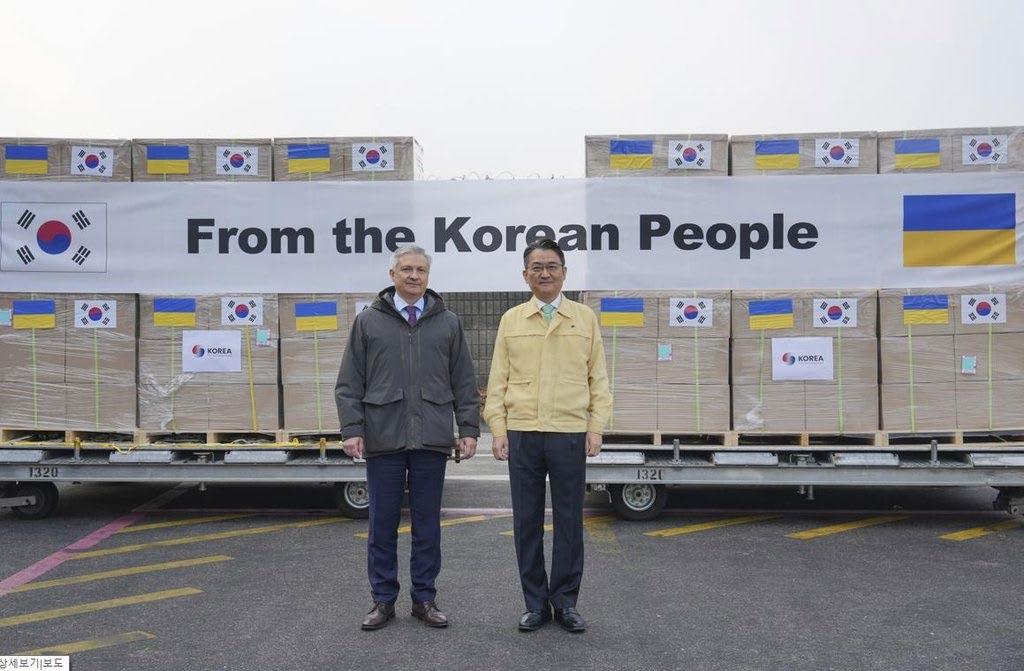
Recently, South Korea has dispatched aid items to Ukraine such as vaccines for children and power generators for enduring the cold weather. Recognizing the human rights infringement in North Korea, South Korea has been providing help with vaccines and disaster recovery in both direct and indirect(through NGOs) ways. ‘The government has provided KRW 117.7 billion through the InterKorean Cooperation Fund to support infants, toddlers, and the physically challenged, as well as healthcare and forest restoration projects by NGOs. And the government has so far provided KRW 274.3 billion for the international community’s humanitarian aid to the North, including vaccines for infants and toddlers and essential medicines through UNICEF, and nutritious meals for infants, toddlers, and pregnant women through WFP.’ (The Ministry of Unification, 2022)
As a DAC(Development Assistance Committee) country of ODA(Official Development Assistance), the Republic of Korea is pursuing to achieve greater input in international efforts in facilitating developing countries and repairing damage in the conflict zones.
The DPRK Government has set up the country-specific SDGs incorporating the global SDGs into the NDGs and according to the relevant national laws and pushes ahead with its implementation on a nationwide scale. In March 2019, the NTF, through intensive consultations with the line ministries and agencies, set up the national SDGs. The national SDGs have been included in the agenda items of the Cabinet together with the implementation of the socio-economic development plan, and the nationwide system from the central to the lowest level has been established to assess and coordinate its process.
The DPRK Government has established and implemented the national SDGs, incorporating the global SDGs into the goals for building the powerful socialist country and the 2016-2020 five-year plan. Priorities are given to energy, agriculture, WASH, and the environment in the national SDGs, and 53% of the global SDGs targets are selected as the national SDGs or integrated with the NDGs. The 2021-2025 five-year plan also integrated the national SDGs, ensuring the continuity of SDGs implementation.
SDG 1&2
The global SDG 1 for ending poverty has been specifically localized same as the national MDGs as consistent improvement of the people’s living standard in line with the Government policy

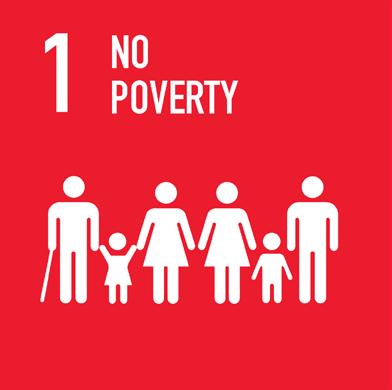
en.yna.co.kr/view/AEN20221209008700325

and included the relevant national indicators. national targets and indicators will be further updated in conformity with the country’s reality and international standards through surveys and assessments. The NTF, in collaboration with CBS and line agencies, conducts the work of including the global indicators fitting with the country’s context in the national indicator framework through in-depth research and consultation with UN agencies.
According to the North Korean assistance information system ROK, international organizations such as WFP, UNICEF, and WHO gave aid mainly focused on food resources.
There were some cooperative SDGs programs before Covid-19. However, there are significant differences after Covid. The border between ROK and DPRK got even sturdier and also in a general perspective other health issues even more accelerated than before.

We can observe that the health sector is not only confined to ‘health’ itself, but also it is influencing all the other SDGs and international relations.
It can also be effective to focus on the developments and make the following developments to be on the path.

The Government focuses on improving the environment and condition of education and raising the quality of education. Under the state investment and the sponsor organizations’ support, the daily renovation of the educational environment at primary and secondary schools in the whole country proceeded, the content of education developed practical, comprehensive, and updated and the classrooms and laboratories rehabilitated multifunctional in about 200 universities and colleges, and Pyongyang Teachers Training College was rebuilt as an excellent center for training teachers. The study-while-working education system has been consolidated. The State stipulates to develop of a regular education system together with the different types of study-while-working-system13, thus, the working people receive high education according to their wishes through part-time study systems like the factory, farm, and fishermen’s colleges. The tele-education system has been established and the Sci-Tech Complex was built in 2016 as a great temple of learning for all the people and a center for disseminating the latest science and technology. There remain challenges in improving the content and method, condition, and environment of education in line with the global trends of educational development.
DPRK is known as a nation in which only very few upper tiers can get proper education, take sufficient nutrition and etcetera. Inequality is too natural and pervasive in this nation. We can address this problem in significantly two ways. Firstly, it might be a problem because of the total resources. In this case, our nation made efforts of giving aid to the DPRK nation. Secondly, it may also be a problem with resource distribution. To solve the problem, reasonable inspection and switching the path of support might be helpful.
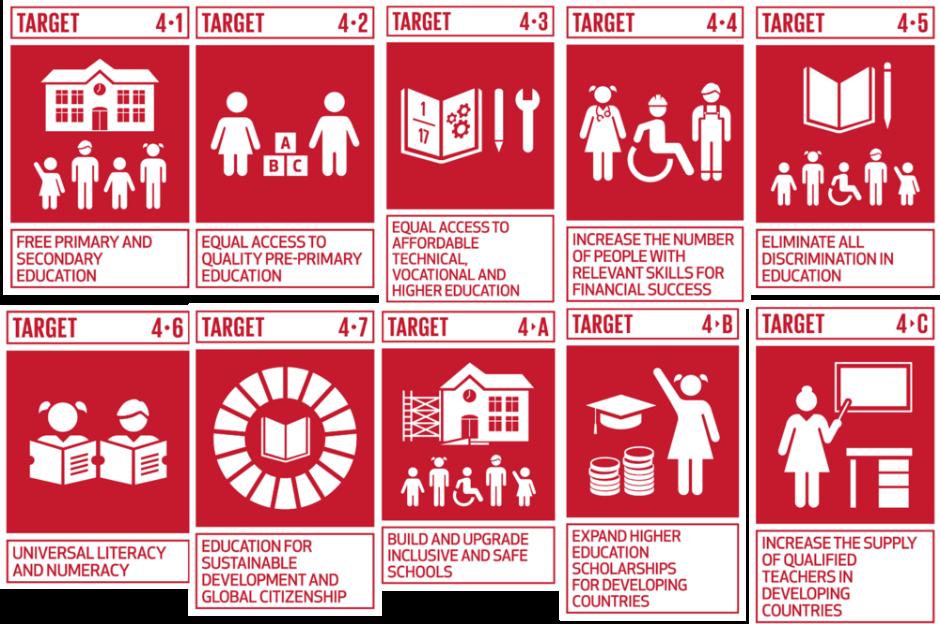
The DPRK implements a consistent policy of thoroughly implementing the people-first policy in its State activities and all fabrics of social life. The State legally ensures that state power belongs to the workers, peasants, soldiers, and intellectuals and the working masses exercise sovereignty through

the SPA, the representing organ of themselves, and the local People’s Assemblies at all levels and ensures all citizens with genuine democratic rights and freedom, adequate material and cultural life.
The State guarantees the status and role of the popular masses as the masters of the state and society, and consistently maintains the popular socialist health system and education system and other popular policies. People-first policy consistently prevails so that the single-hearted unity of the Party and the masses is achieved and political stability prevails. Under the slogan of “Everything for the people and everything by relying on them!”, the people’s interests are given the highest and absolute priority and everything is directed towards the people’s welfare without spare. The intensive struggle is waged against practices that infringe upon the people’s interests such as abuse of power, bureaucracy, and corruption.
When it comes to the disarmament sector, we should be aware that the intensification of the arms race would destroy and destabilize international economic relations and lessen the possibility of restructuring the new international economic order. For example, the cost of a single new nuclear submarine is equal to the annual education budget of 23 developing countries with a total of 160 million children. I believe that this is a misallocation of resources that needs to be resolved swiftly for the betterment of the international community.

The nation of DPRK gives priority to the following plans.
- Strengthen bilateral and multilateral cooperation: Bilateral and multilateral cooperation programs will be developed and implemented to support the Government in achieving SDGs.
- Develop IT: The technical modernization of the telecommunication infrastructure will be enhanced and mobile telecommunication developed so as to shift towards the next generation.
- Strengthen centralization of the state statistics system: It is important to enhance the role of statistics offices from central to city/county and the statistics cells of all agencies, further strengthen statistics under the unified guidance of the CBS, and propel socio-economic development by ensuring comprehensive, objective, scientific and timely statistics. Also, the statistics development plan for the implementation of the new five-year plan should be set and carried out according to annual plans.
The international society should cooperate and support these goals to be achieved.
Q) What are the differences between an embassy, a consulate, and a mission?
A) An embassy and a consulate discuss the same topic with diverse people, particularly with the officials of their residing countries. A mission is centered on sharing diverse topics with the same people. The work is usually basd on 1-year term, and focuses on the theme throughout the year. The relationship or committee composed of multinational delegates is called a mission.
Q) What does the Mission of South Korea do to achieve the SDG goals?

A) The topics discussed in the United Nations require highly professional knowledge. Many developing countries debate about the financial issues. They incorporate the efforts on reforming international Financial Institutions and their current status. Recently, the Korean embassy is attempting to promote the sustainable development goals by combining with culture, like the K-pop stars drawing the attention of people from all over the world.
Q) What’s the most efficient way when it comes to solving the disarmament dilemma?
A) We are focusing on developing the adequate structures of disarmament We are keeping an eye on how the international conventions are being applied to in the real world For example, it’s important to watch how the world settles the discussion of whether to strengthen the export control or to focus on monitoring the country.
Q) Are there some sectors that ROK is weak and the nation has to overcome?
A) As a member of Development Assitance Committee, the Republic of Korea doesn’t need the direct assistance from the UN anymore. Unfortunately, we are not yet prepared for a program aiding the developing countires, but trying to develop the measures to help the aid-recipient contries.
, https://inss.re.kr/upload/bbs/BBSA05/202101/F20210126194413463.pdf.
“The World Must Not Forgot North Korea's Crimes against Humanity.” – The Diplomat, For The Diplomat, 22 July 2021, https://thediplomat.com/2021/07/the-world-must-not-forgot-north-koreas-crimes-againsthumanity/.
“Understanding Deterrence - Rand Corporation.” Rand Corporation, https://www.rand.org/content/dam/rand/pubs/perspectives/PE200/PE295/RAND_PE295.pdf.
“남 '킬 체인'에 북 '법대로' 핵 쓸 수도 위기감 치솟는 한반도 ” 14 Oct. 2022, https://www.hani.co.kr/arti/politics/defense/1062765.html.
“Homepage.” Permanent Mission of the Republic of Korea to the United Nations. overseas.mofa.go.kr/un-ko/index.do
“UN Security Council composition and non-permanent member election procedure.” Ministry of Foreign Affairs, 05 November 2007,
www.mofa.go.kr/www/brd/m_3874/view.do?seq=305873&srchFr=&srchTo=&srchWord=&srchTp=&multi_ itm_seq=0&itm_seq_1=0&itm_seq_2=0&company_cd=&company_nm=&page=40
“Security Council Committee established pursuant to resolution 1718 (2006).” United Nations Security Council, www.un.org/securitycouncil/sanctions/1718
“PKO contribution status.” Ministry of Foreign Affairs, 15 February 2021, www.mofa.go.kr/www/brd/m_3874/view.do?seq=367523.
“Troop and Police contributors.” United Nations Peacekeeping, 31 October 2022, https://peacekeeping.un.org/en/troop-and-police-contributors
“Conflict Prevention is “The Priority,” say UN Secretary-General.” SDG Knowledge Hub, 12 January 2017, sdg.iisd.org/news/conflict-prevention-is-the-priority-says-un-secretary-general/.
“New Agenda for Peace,” UN Department for Political and Peacebuilding Affairs, dppa.un.org/en/new-agenda-for-peace

“Result of the 2021 UN Peacekeeping Ministerial.” Ministry of Foreign Affairs, 09 December 2021, www.mofa.go.kr/www/brd/m_4076/view.do?seq=369072
“Note to Correspondents: 2021 Seoul UN Peacekeeping Ministerial concludes with 62 countries making new pledges for UN peacekeeping operations.” UN Secretary General, 08 December 2021, www.un.org/sg/en/content/sg/note-correspondents/2021-12-08/note-correspondents-2021-seoul-unpeacekeeping-ministerial-concludes-62-countries-making-new-pledges-for-un-peacekeeping-operations.
“Treaty on the Non-Proliferation of the Nuclear Weapons(NPT).” United Nations, www.un.org/disarmament/wmd/nuclear/npt/
“Timleline: North Korean Nuclear Negotiations.” Cfr, www.cfr.org/timeline/north-korean-nuclear-negotiations
“NORTH KOREA TO CHAIR UN DISARMAMENT FORUM ON NUCLEAR WEAPONS, US & EU SHOULD WALK OUT.”UN WATCH, 27 JANUARY 2022, UNWATCH.ORG/NORTH- KOREA - TO- CHAIR - UN - DISARMAMENT-FORUM - ON - NUCLEARWEAPONS - US- EU -SHOULD- WALK -OUT/ .
“S. KOREA TO OFFER 100 TONS OF AID ITEMS TO UKRAINE THIS MONTH: MINISTRY.”YONHAP NEWS, 09 DECEMBER 2022, en.yna.co.kr/view/AEN20221209008700325
“Humanitarian Assistance.” Ministry of Unification, www.unikorea.go.kr/eng_unikorea/whatwedo/assistance/
“Sustainable Development Goal 1.” Wikipedia, https://en.wikipedia.org/wiki/Sustainable_Development_Goal_1
“Hompage.” Ministry of Unificatoin, HAIRO, https://hairo.unikorea.go.kr/stat/StatIntlSupport.do.


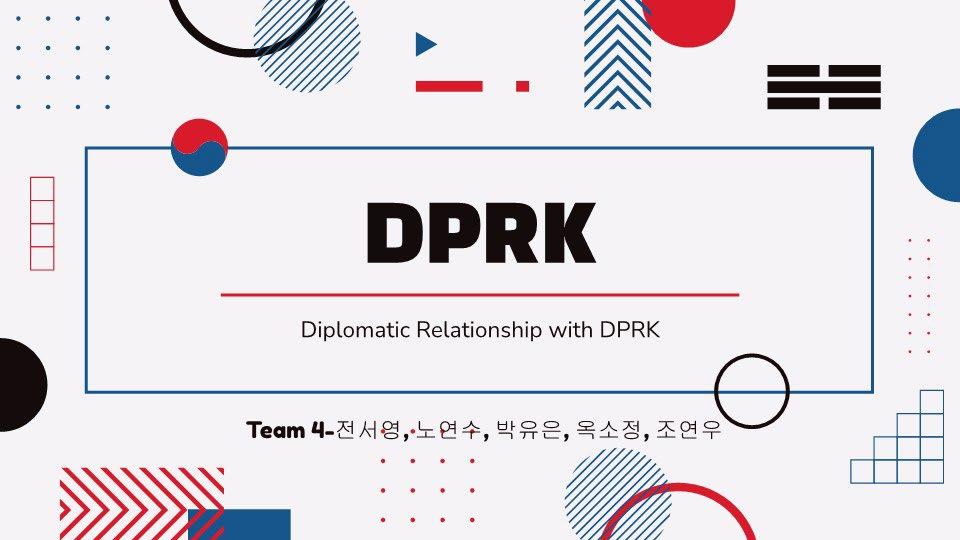

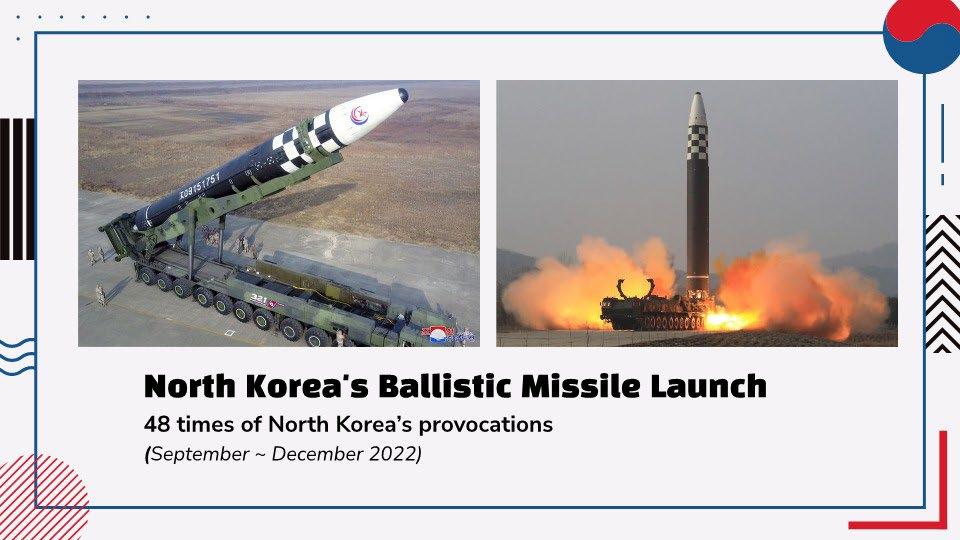
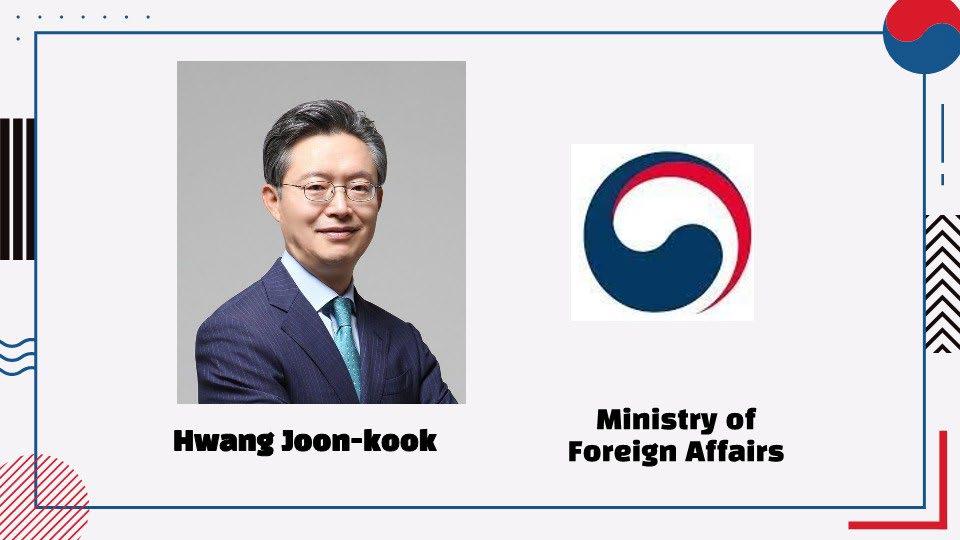

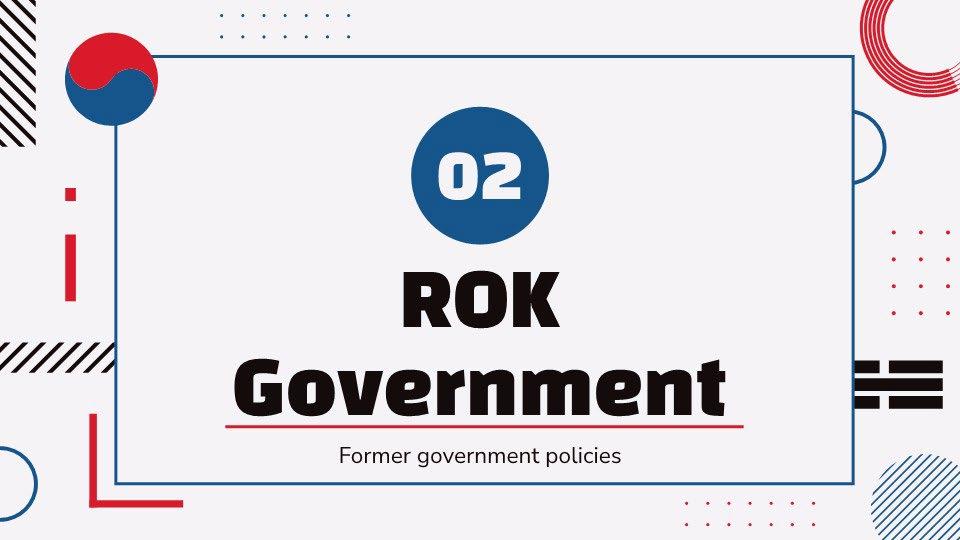

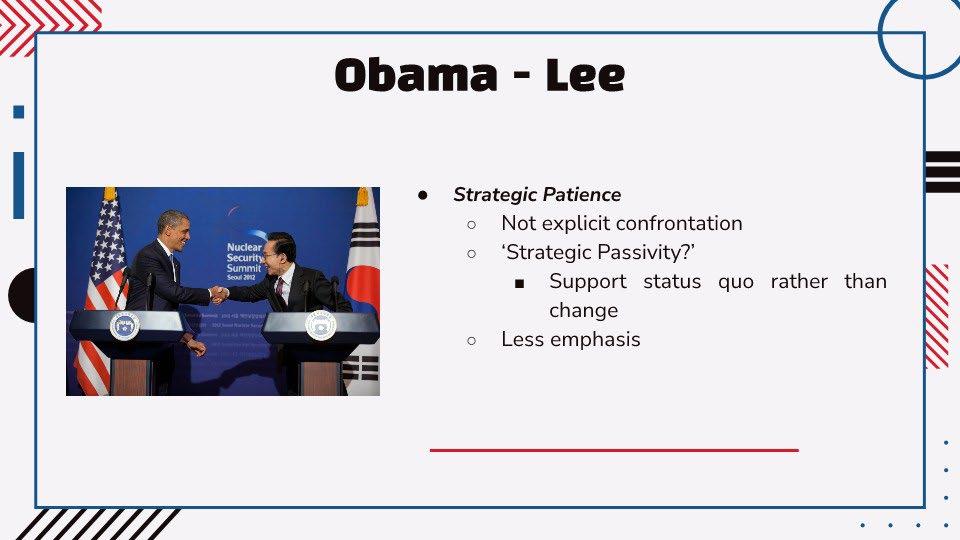

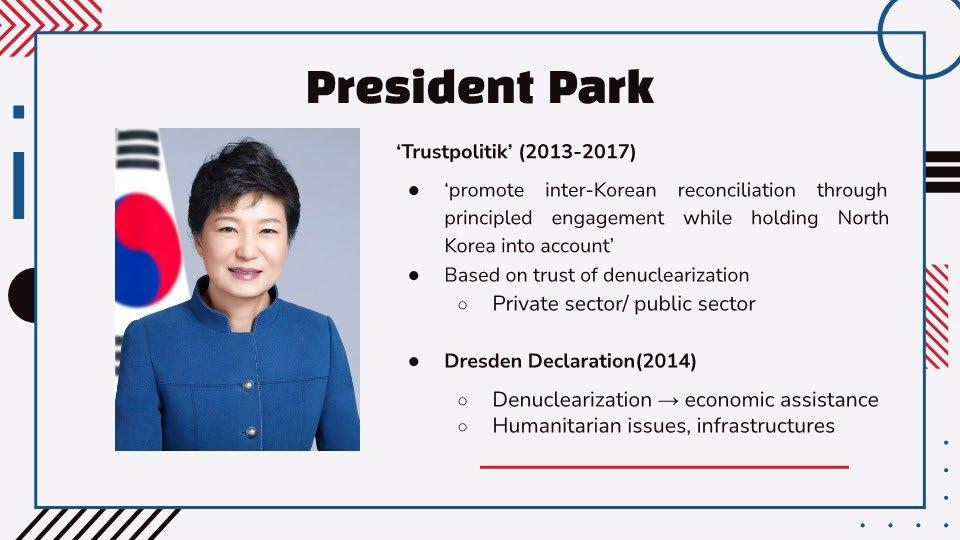




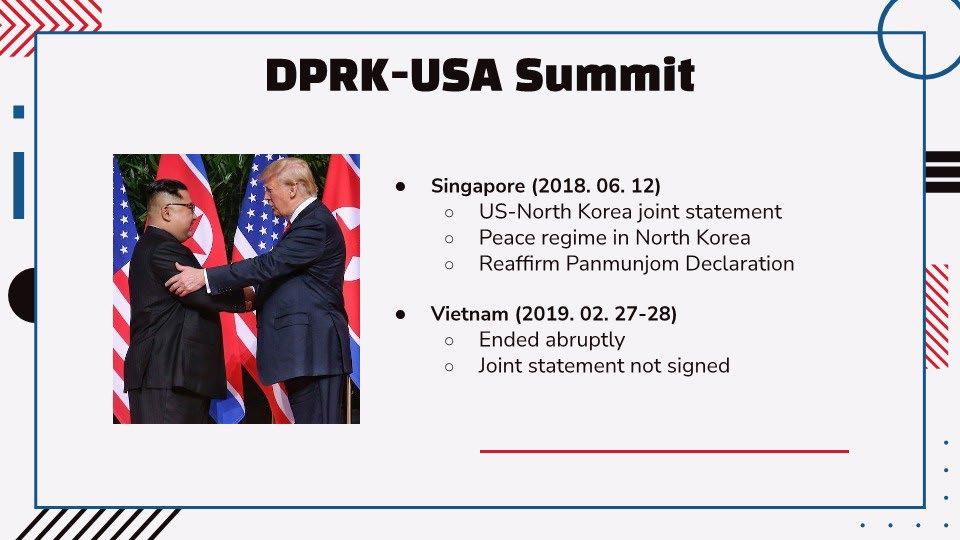

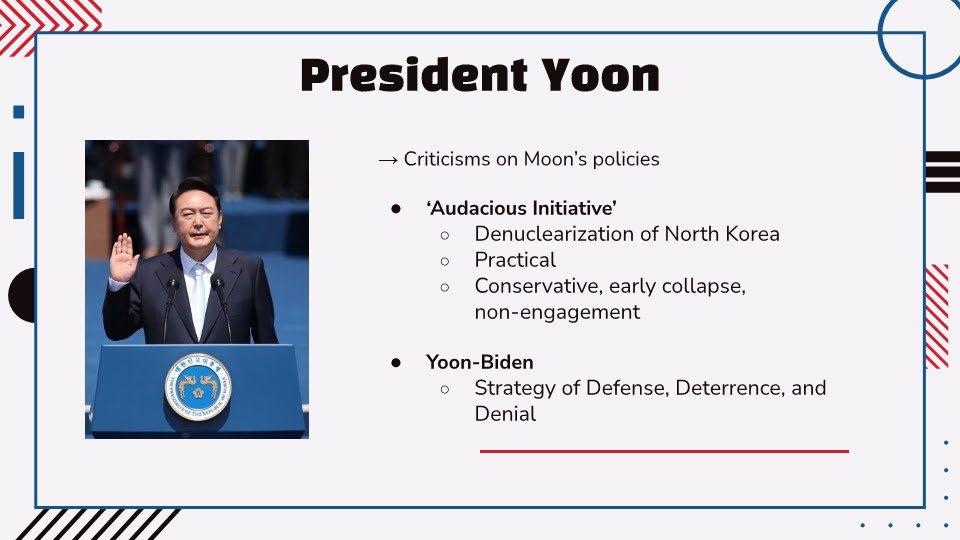
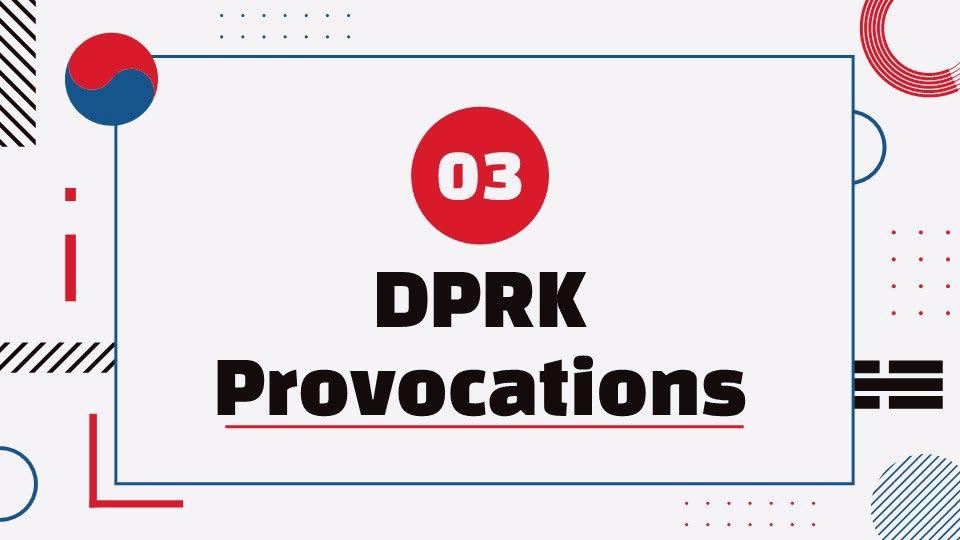

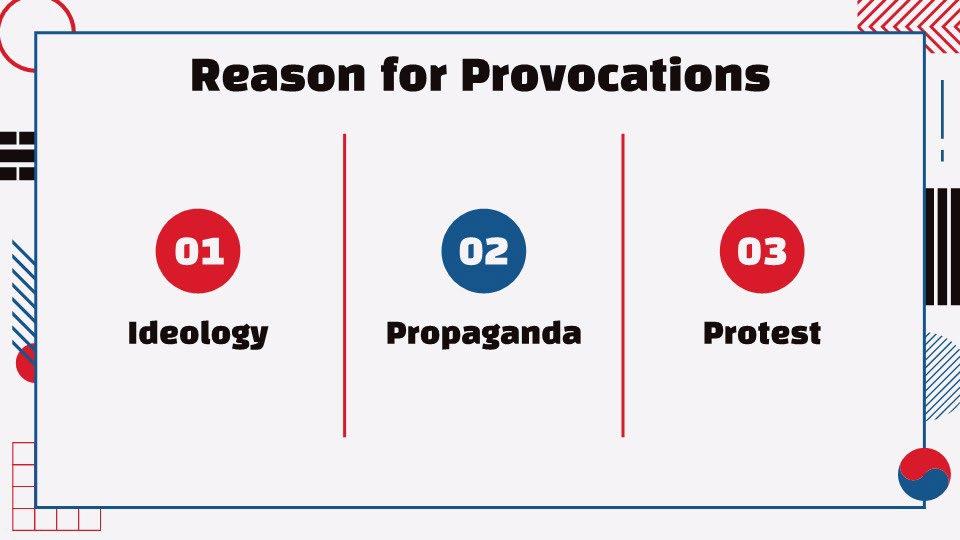
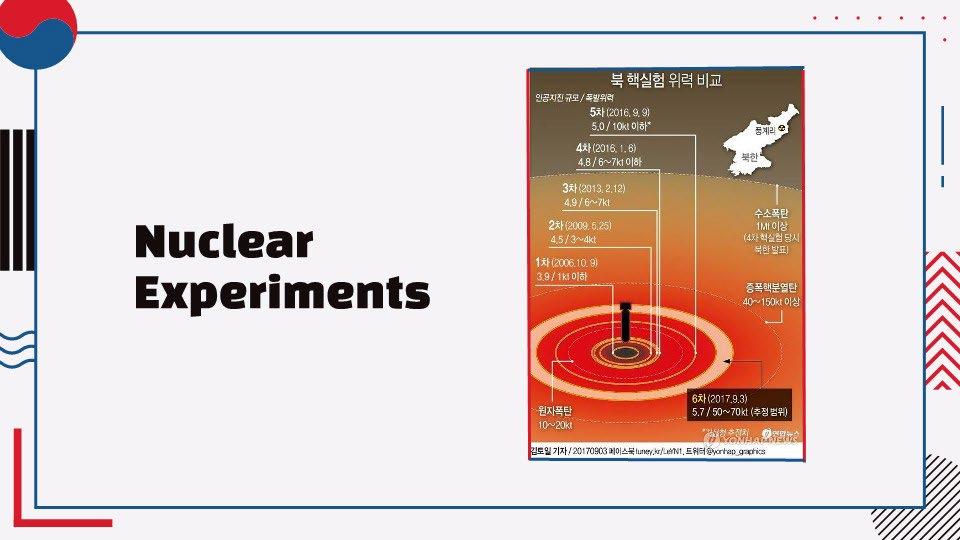



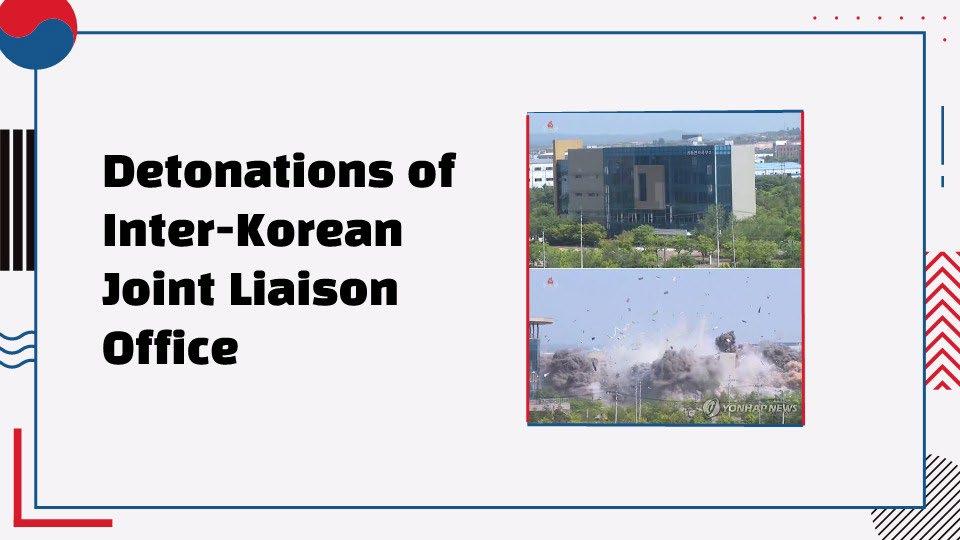
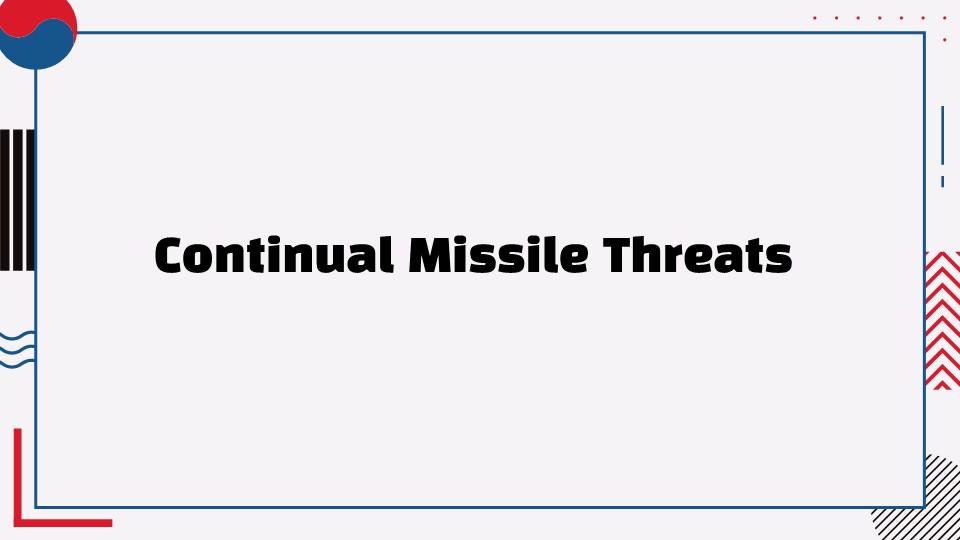
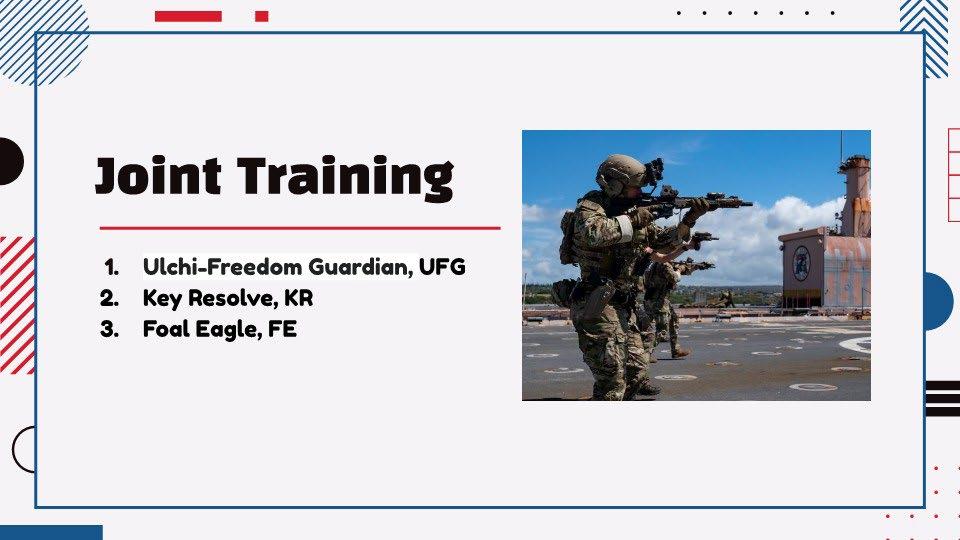
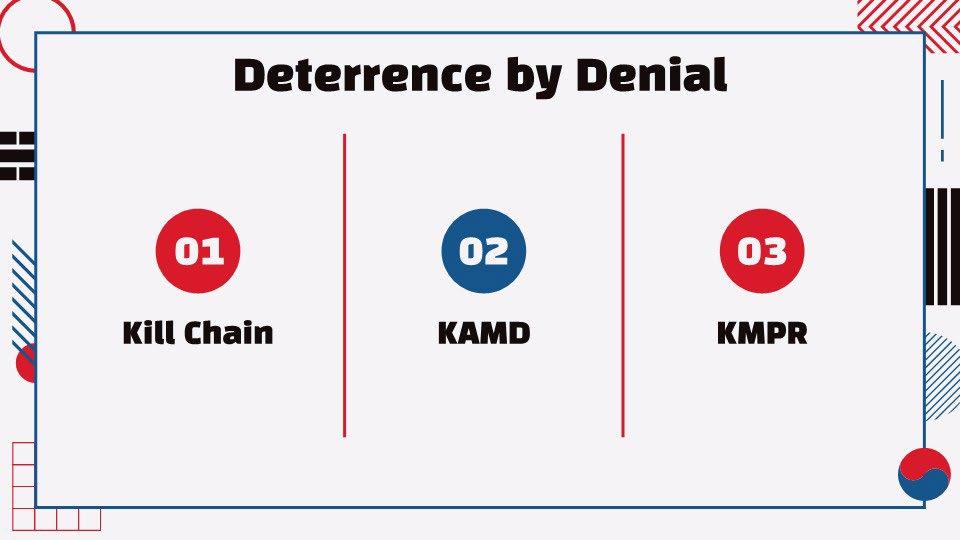
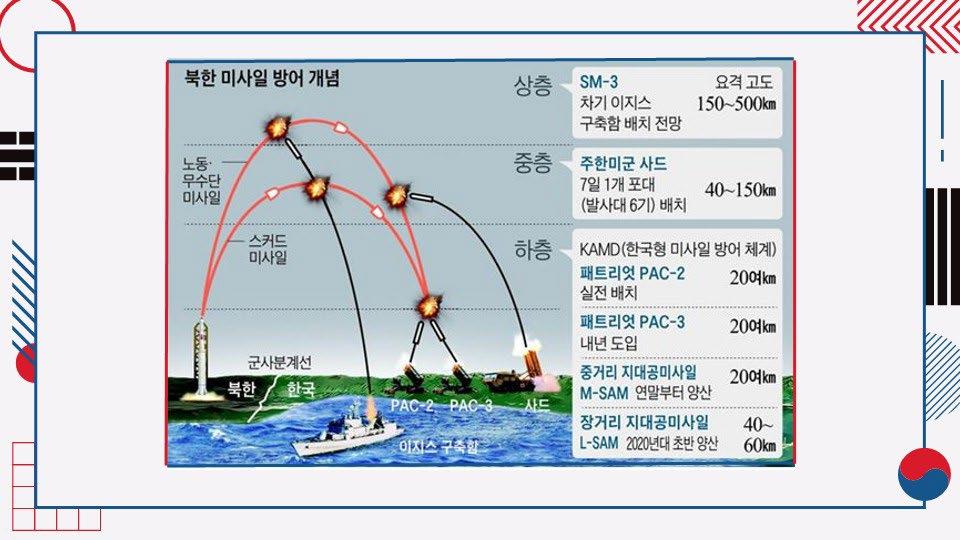
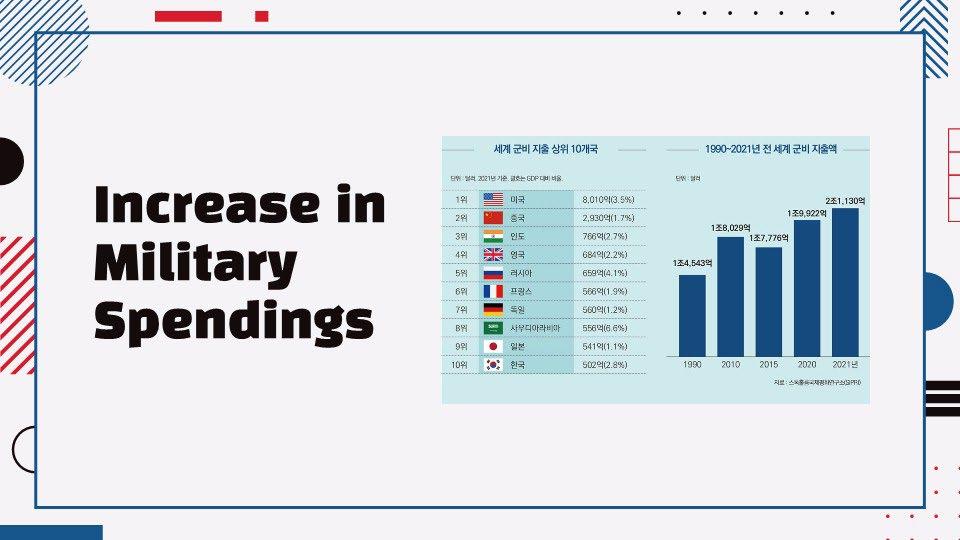

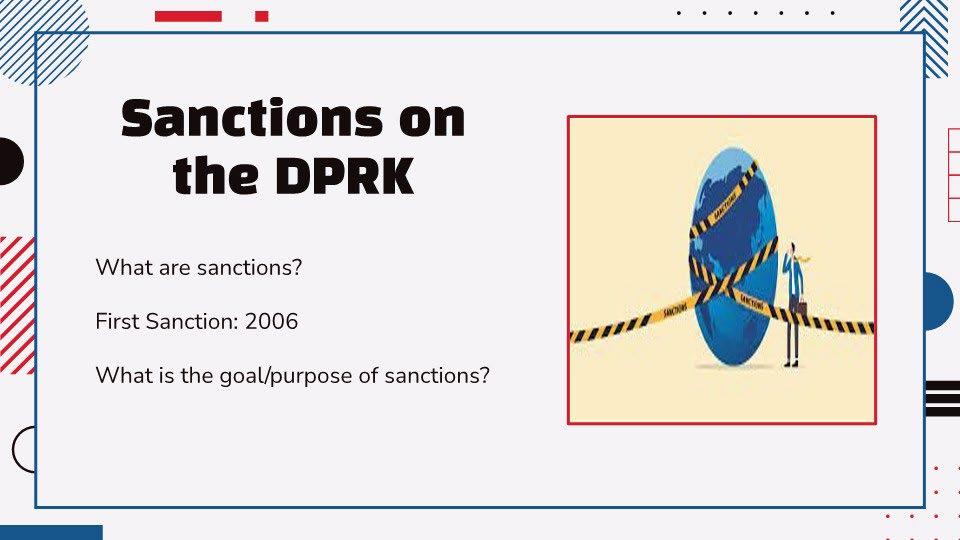

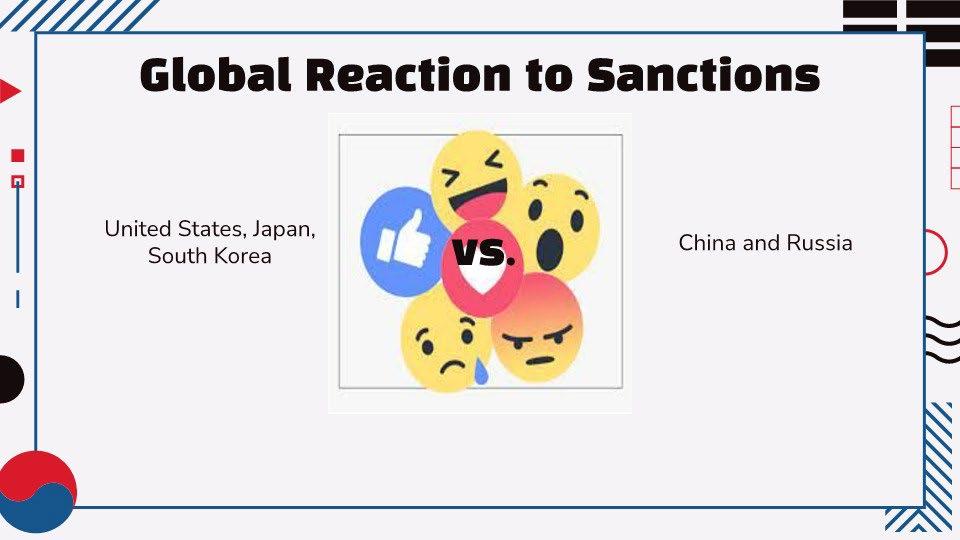
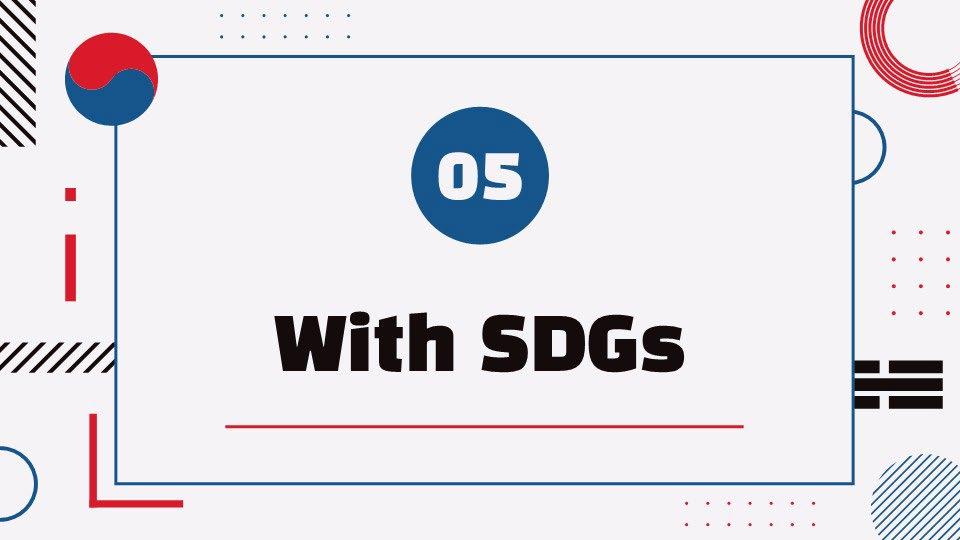
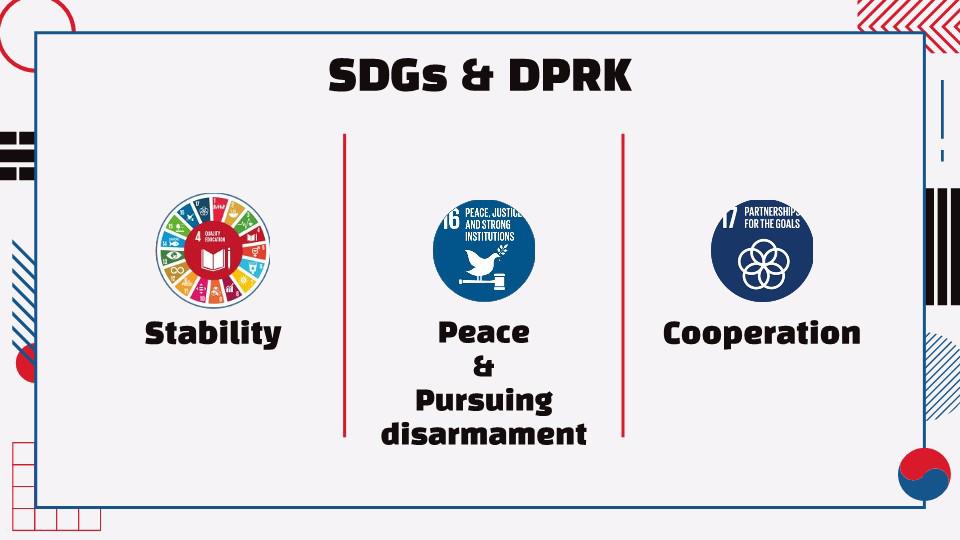


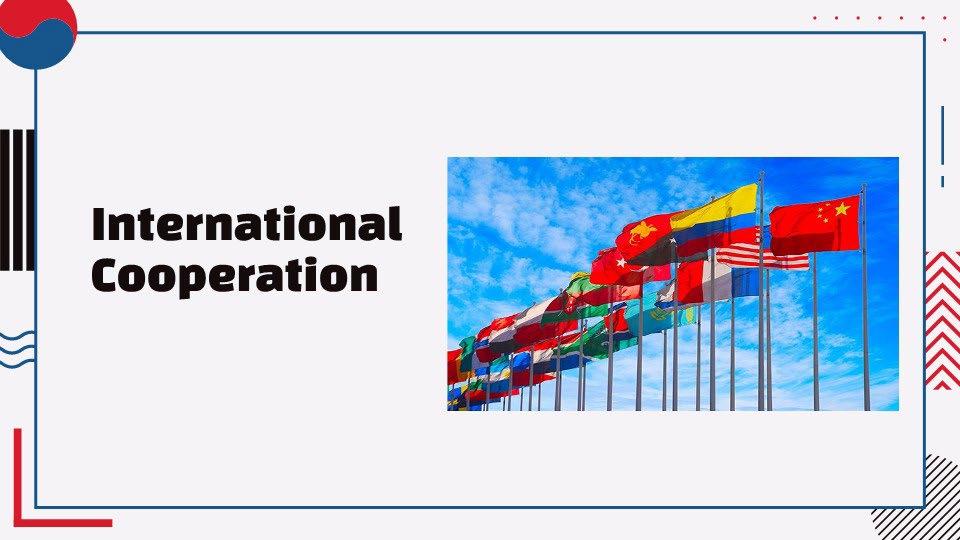


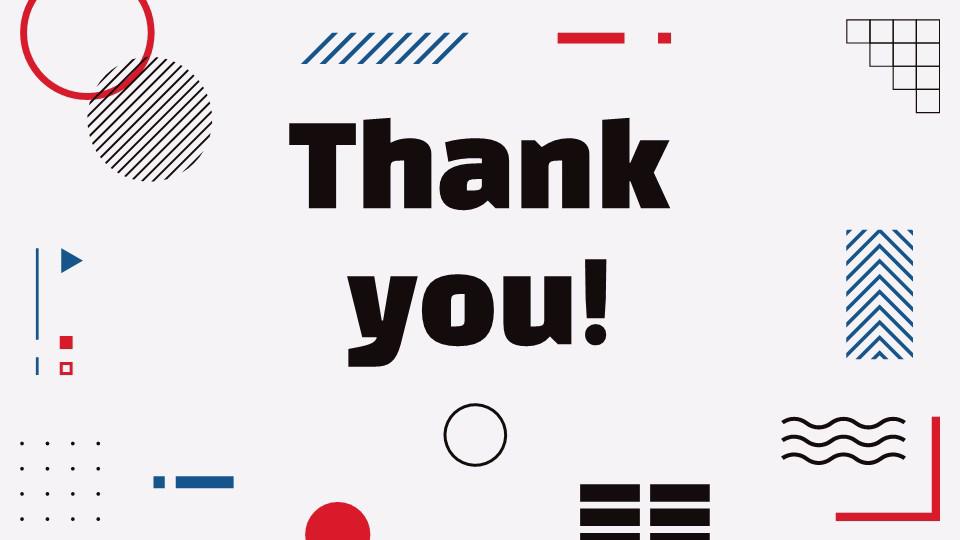

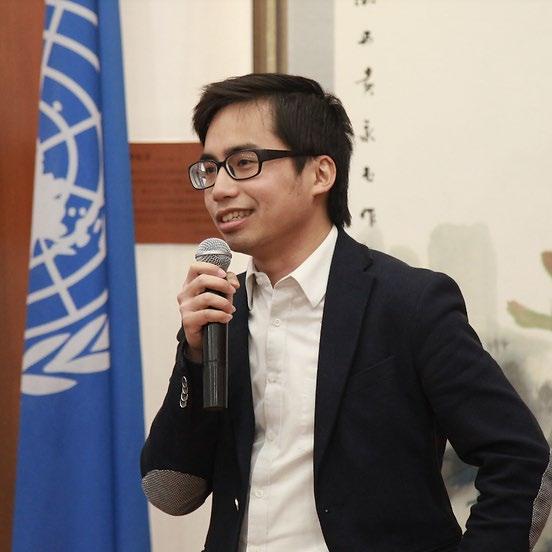
Gyeonggi Suwon International School, Seokhyun Baek
The Frederick Gunn School, Hyunjun Ryu
Chungnam Samsung Academy, Geonhee Ko
Munsan Middle School, Seongwoo Ha
Korean Minjok Leadership Academy, Geonhyun Kim
Hoi Wai Jackie Cheng Economic Affairs Officer, United Nations Department of Economic and Social Affairs1. Background
1. Knowledge in Democracy
2. Freedom in Democracy
3. Power in Democracy
2. USA
1. Democracy in the US
2. Electoral System and Struggles
3. Connection to SDG 16

3. Brazil
1. Democracy in Brazil
2. Lula da Silva v. Jair Bolsonaro
3. Insurrection
4. Connection to SDG #16
4. Russia
1. Vladimir Putin
2. Russia’s Authoritarianism
3. Connection to UNDESA
5. Peru
1. Background on Peru
2. A Brief History of Peruvian Politics and Democracy
3. The Former President Pedro Castillo
4. Conflicts Reflected on Peruvian Citizens
5. Conclusion
6. China
1. China’s Political system
2. Protests in China
3. Connection with SDG 16
7. Q&A Session
Knowledge is power. Whoever owns the past controls the present and the future. Knowledge is dubbed as the go-to place for people seeking answers. Modern superpowers hold democratic values hostage to manipulate their citizens. Democracy is flexible and capable of adapting to crises and paradigm shifts. However, that feature creates loopholes that countries abuse to remold democracy with self-centric values. Nowadays, most countries use democracy as a disguise to lure people into a vicious cycle. Therefore, it is imperative that modern society places democracy under the microscope and evaluate whether societies are staying faithful to democratic values.
Freedom is double-edged. If freedom falls into the right hand, people can properly exercise their rights and gradually build a utopia. On the other hand, in the wrong hands, people will fall under suppressive regimes that may lead them to dystopia. Failed democracies are glass onions, covered with layers of deception and fraud with a fragile core. Once people acknowledge the vulnerability of crashing democracy, society can identify and cut out the source of deception.
Democracy is a network of hundreds of countries that aim to promote a free world. Although countries build societies in the name of democracy, they all have different variants. According to Freedom House (an international index that measures each country’s progress toward democracy), countries are on different levels of progress in achieving democracy.
In this report, Team 5 will assess the resilience of modern democracies across the world.

Democracy in the United States of America has been a topic of discussion for centuries. The country is often seen as a beacon of democracy, with a system of government that values individual freedoms and the rule of law. However, recent events have shown that the American

democratic system is not immune to challenges and controversies. This report will provide an overview of the current state of democracy in the United States, including statistical data and a discussion of major events such as the January 6th riot.

The United States is a federal republic with a system of representative democracy. The country is divided into 50 states, each with its own government and elected officials. The federal government consists of three branches: the legislative, executive, and judicial branches. The legislative branch is responsible for making laws, the executive branch for implementing laws, and the judicial branch for interpreting laws. According to the Democracy Index by the Economist Intelligence Unit, the United States is considered a "flawed democracy," with a score of 7.92 out of 10 in 2020. This score is based on five categories: electoral process and pluralism, civil liberties, functioning of government, political participation, and political culture. The United States scored the highest in the electoral process and pluralism category but scored relatively low in political culture, which includes measures of political trust and social cohesion.

The United States has a long history of democratic elections, with universal suffrage for adults of all races and genders since the Voting Rights Act of 1965. In the 2020 presidential election, an estimated 158.4 million people cast their ballots, representing a voter turnout of approximately 66.4% of eligible voters. However, concerns have been raised about voter suppression and gerrymandering in some parts of the country.
On January 6th, 2021, a mob of supporters of then-President Donald Trump stormed the United States Capitol in an attempt to overturn the results of the 2020 presidential election.
The rioters clashed with law enforcement and caused damage to the Capitol building, resulting in the deaths of five people. The riot was widely condemned by political leaders from both parties and was seen as an attack on American democracy. The aftermath of the January 6th riot has been marked by a political divide between those who believe the rioters were defending democracy and those who see them as a threat to democratic values. The riot has also sparked debates about the role of social media in promoting conspiracy theories and spreading disinformation.
Democracy in the United States of America is facing challenges and controversies, as evidenced by the January 6th riot and ongoing debates about voter suppression and disinformation. While the country's political system remains intact, American leaders and citizens must work together to address these issues and uphold democratic values.

SDG 16 suggests that democracy is essential for sustainable development and peaceful societies. The goal emphasizes the importance of promoting access to justice, accountability, good governance, and citizen participation, all of which are essential components of a functioning democracy. As the United Nations Development Programme notes, "SDG 16 aims to promote peaceful and inclusive societies for sustainable development, provide access to justice for all and build effective, accountable and inclusive institutions at all levels. It is a critical enabler for the realization of all the SDGs, with a particular emphasis on the importance of good governance, the rule of law, access to justice, and fighting corruption" ("Sustainable Development Goal 16"). In other words, SDG 16 recognizes that democracy is a necessary foundation for achieving the broader goals of sustainable development and social progress. By promoting democratic principles and institutions, SDG 16 aims to create a more just, equitable, and inclusive world for all.
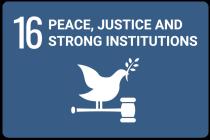
Brazil is a South American country that frequently wrestled with Democracy throughout the last decades. From a dictatorship to a widely acknowledged democracy, Brazil’s journey contains rich values that several countries model. Entering the 21st century, Brazil’s democracy was constantly overshadowed by international crises and society’s anchorage to superpowers. However, in the recent wake of controversy in Brazil’s election, Brazil is under the spotlight of questioning (Burns). With Brazil’s election chaos reminiscent of Trump’s January 6th insurrection, the global community fears that Brazil may fall into a rabbit hole.
For the past few decades, Luiz Inácio Lula da Silva and Jair Bolsonaro dominated the presidential election. Lula and Bolsonaro are former presidents who clashed in Brazil’s latest presidential election.
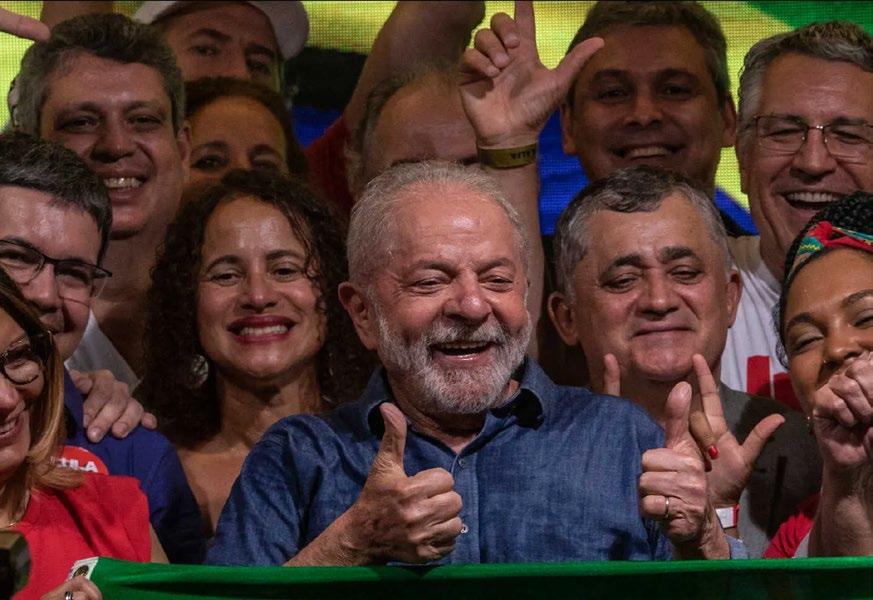
After being sworn into office in 2003, Lula drastically improved Brazil’s economy, driving down poverty rates and resurrecting Brazil as a developed country. However, in the light of corruption scandals and being barred from running for a third term by the constitution, he temporarily stepped down from politics. In 2016, he was charged with money laundering with a sentence of 9.5 years (“Luiz Inácio Lula Da Silva”). With Lula’s fall, another prominent personality emerged, Jair Bolsonaro.
Bolsonaro is a right-wing president that served from 2019-2022. He is a vocal opponent of samesex marriage, affirmative action, abortion, and drug liberalization (Nicas). In other words, Bolsonaro stands at polar opposites to Lula. He is responsible for the build-up of controversies in Brazil’s presidential election.
With Lula being freed following a Supreme Court decision in 2019, Brazil entered into candidacy and campaigning for the 2022 election. The country split in half: 50% supporting Lula and 50% supporting Bolsonaro (Nicas). Two candidates extremely polarized Brazil with clashing interpretations of democracy on domestic and international issues.

This simmering conflict boiled over during Brazil’s 2022 presidential election. Ultimately, when the election started to lean toward Lula, Bolsonaro began to question the reliability of elections. For example, Bolsonaro specifically targeted Brazil’s fully electronic voting infrastructure (Nicas). With the help of the media, Bolsonaro’s rhetoric rapidly spread across his supporters, contaminating the purity of democracy. He used the media as a tool to manipulate discussions and trends. Society feeds

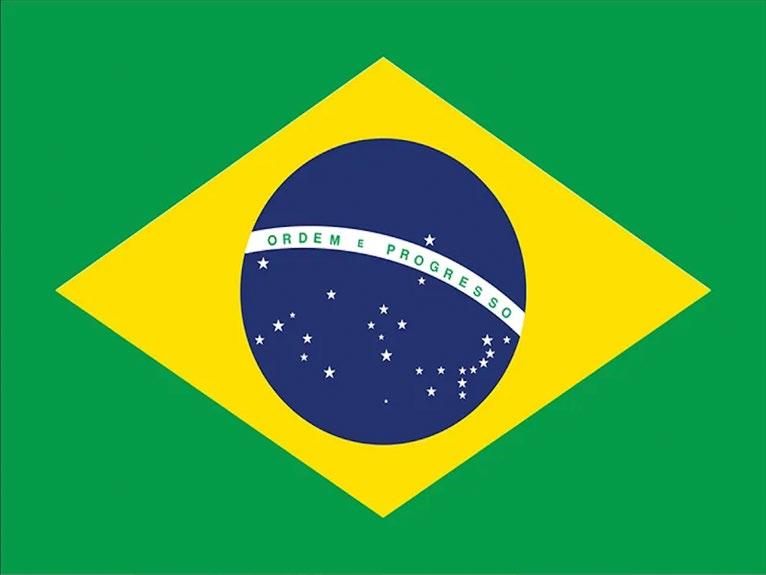
humans with a never-ending flow of information and the threshold of satisfaction heightens every day. Information is food to the human mind and people prefer foods and ingredients of their liking. This human nature paved the way for Bolsonaro’s outright fraud narrative to strive.
When Lula was elected as president, protests erupted in the country, questioning the legitimacy of the election. Ultimately, violence took over the Senate and Supreme Court, causing an insurrection on January 8th, 2023 (Nicas). People stormed Brazil’s congress, vandalizing the very place that protects and facilitates democracy. This event clearly resembles America’s version of election fraud: January 6th, 2021. These riots left an indelible stain on the fabric of democracy. As polarization exacerbates throughout time and as media contaminates democracy, it is inevitable that society will exponentially encounter more crises.


Tying to Mr. Cheng (UNDESA Economic Affairs Officer), statistics display the growth in magnitude and severity of crises in society. DESA accurately captures the status quo and paints a grim picture of a polarized future. In order to avoid dystopia, communities must mend relationships and advocate for united action.
Democracy is gullible and people should not take freedom for granted (“Goal 16 | Department of Economic and Social Affairs”). Therefore, member nations must invest effort and time into building peaceful, just, and strong institutions to withstand crises and become resilient. Democracies should gear toward achieving SDG #16 to fortify their values against authoritarianism. As all SDGs are interconnected with each other, countries must provide undivided attention to all the SDGs. SDG #16 stands at the core of peace and ensuring freedom for all human beings. Therefore, countries must resolve differences domestically and internationally to form a united front against oppressors.
When hearing the word democracy most people think of the word elections. But if a country’s election process has been corrupted, it is highly difficult for the state’s democracy to be resilient. In Russia, Putin has been in power on and off since 1999 and in his fourth regime. The way he came into power was through an internal operation that killed hundreds of Russian civilians leading to the resignation of former president Boris Yeltsin. This signaled the start of Putin’s authoritarian regime (McKew). There has been suppression of democracy even when
he came into power. There is preferential media treatment towards positive reports about Putin himself. Not to mention that all news outlets are stateowned propaganda machines. In 2012, Putin even administered a campaign against a feminist and homosexual rights music group (Vox). Also, numerous abuses of incumbency and procedural irregularities occurred during the vote count in his 2018 reelection campaign (Freedom House).


There are various ways the government of a country with 11 time zones and over 200 different ethnicities can increase its influence over its citizens. Russia is currently using a strategy that solidifies the government’s authority with the use of physical force. The use of excessive force by police is common in Russia. Human rights organizations have reported that law enforcement officers who carry out such abuses have employed electric shocks, suffocations, and stretching of the detainee’s body to avoid leaving visible injuries. Also, prisons are overcrowded and unsanitary while inmates lack access to health care and are subjected to abuse by guards (Freedom House). The physical suppression does not stop with the police. The government often attempts to eliminate the party’s opposition during elections. According to Russian civilians, there is no real opposition on the ballot and any rivals to the government are not allowed to participate in the election. Still, individual politicians in Russia are still trying their hardest to make a change (BBC News).
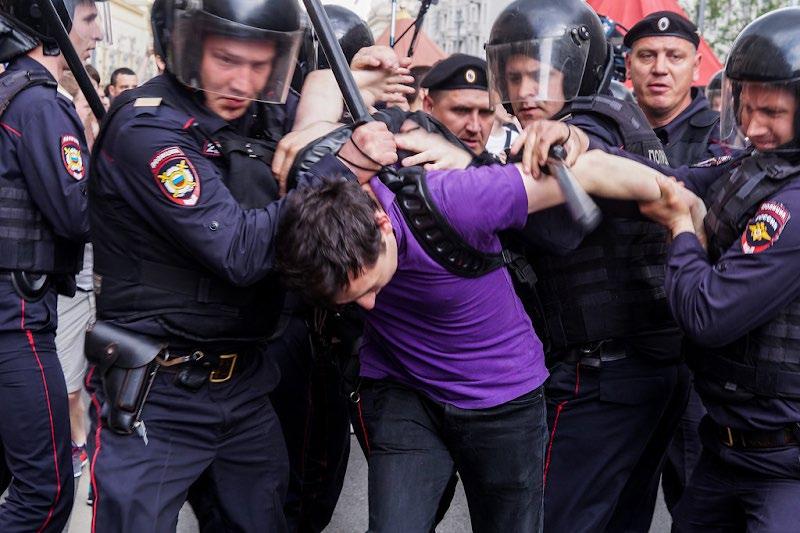

It is clear that physical violence and political abuse are being carried out by the Russian government which violates SDGs 16. These actions hinder the achievement of target 16.10, which ensures public access to information and protects fundamental freedoms. Although indicators for this target exist, they are usually measured and administered by other organizations than UN DESA. During the lecture, Mr. Cheng mentioned how data analysis presented by DESA could persuade people to take social action. Even though DESA focuses on economic and social affairs this data display could have an effect in the political sector as well.
There is a way that the UNDESA can contribute to the increase of resilience of democracy in Russia regarding SDGs 16. The biggest factor that fortifies the authoritarian regime is that Russians never experienced a democratic transfer of power between opposing parties (Freedom House). Most citizens do not believe that an opposing party or an individual politician will be elected against the current government. Even if they were to be elected there are low hopes that they could actually bring about a change (BBC News). But in reality, there is a very low percentage of Russians who actually vote during elections. In the 2018 presidential elections, Putin won 76.7% of the votes(Roth). When considering the fact that only 67.5% of the whole population voted, his actual approval rate is the maximum of approximately 52%. The parliamentary elections show even lower rates of participation. The voter turnout of the latest election in 2021 was a mere 51% (“Russian Federation”). DESA can display data analyzing how much potential for change Russia has if voter turnout increases. This could persuade the citizens to fulfill their political rights carving the path to a democratic political system.
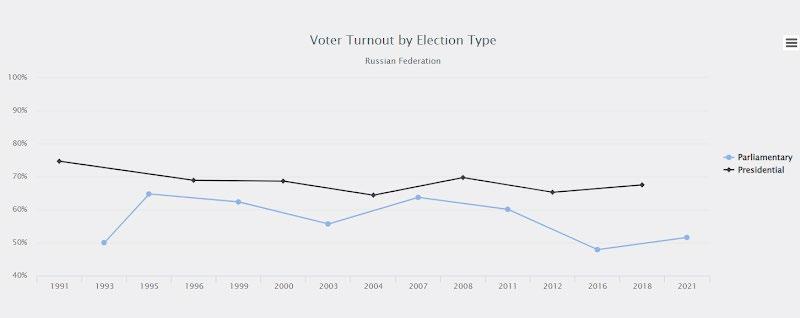
This solution might seem far-fetched and unrealistic, however, there are a few factors that can actually make this happen. A law in 2012 liberalized party registration rules which allowed the freedom of creating political parties. Although the parties are carefully managed by the government and do not pose a big threat to the government, if the global community decides to financially aid these opposing parties, they might stand a chance (Freedom House). Furthermore, various segments of the population such as the sexual minority have political rights including suffrage. This allows more potential opposing votes against the current regime.

Lastly, the current uprisings against Ukraine show that more Russians disagree with Putin’s policies and are craving change. The war will increase opposing public opinion against him, giving the advantage to individual politicians or other political parties who wish for a transfer of power. Therefore, if the UNDESA enlightens the Russian civilians to take political action, then it could increase the resilience of democracy in Russia contributing to the achievement of SDGs 16.
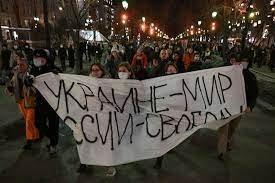

Peru is a country on South America’s western coast. It is known for its historical sites such as Machu Picchu and the mysterious Nazca lines. Despite its natural and manmade beauty attracting tourists, the country cannot function correctly due to its political problems and the current situation of the world. The fact that there were 8 presidents for the last 10 years explains the horrid situation that Peru is in. There is a lot to tell the world about Peru and the help that it needs. Peruvian democracy is currently withering and needs guidance. To propose the solutions, this paper will scrutinize mainly 3 topics, namely: a brief history of Peruvian politics and democracy, the former president Pedro Castillo, and the conflicts shown in Peruvian citizens. This paper will also talk about the ties between the crises with SDGs, since it allows past data and the most accurate forecast.
Firstly, to know the complex political situation of Peru, one needs to know the past Peruvian presidents and governments. For the last 5 years, Peru has seen six presidents, all of them lasting less than 2 years. This shows the corruption of Peru’s parasite-like political corruption. Some of the presidents lasted less than a year, and there are others who served shorter terms.
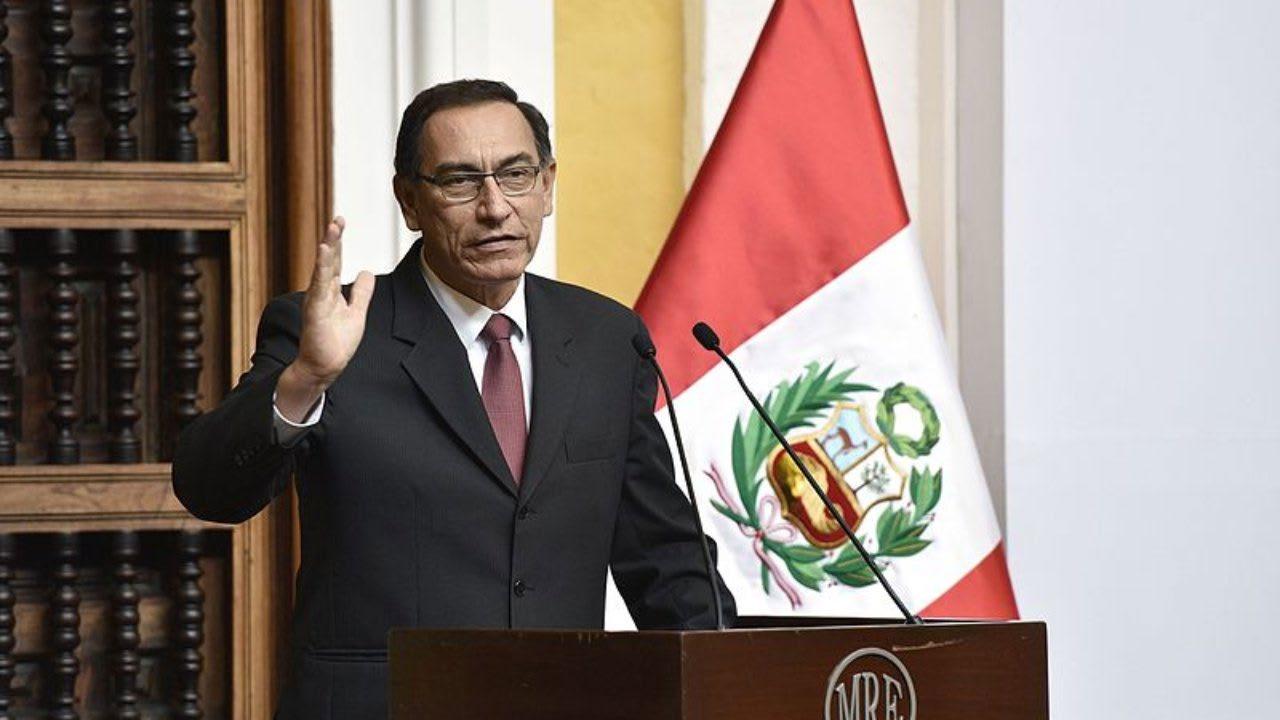
A few examples are former president Martín Vizcarra and Mercedes Aráoz who served the shortest terms. President Vizcarra, who saw severe corruption, tried to implement an anticorruption program that would censor major parties and Peruvian politics in general. This process was painstaking since the opposing party stalled the time for this legislation to happen. Nevertheless, half of the congress was taken over for suspected corruption, and others who fled to other countries have been repatriated to be questioned and investigated. Those who consented to the repatriation have been sentenced to several months in prison. After all of this, Vizcarra tried to carry out a snap election to gain political support. He was replaced by Aráoz, who voluntarily resigned after the first few hours of replacement due to fear of Vizcarra’s still existing police and military control. After this unfortunate event, Vizcarra was back in power. However, he was soon impeached by the congress for inadequate moral capacity such as bribery.
This shows us a segment of the political chaos in Peru. This clearly acts as an obstacle to SDG16. Political disputes and chaos like Peru are now common in South America. There recently has been an impeachment of Evo Morales, a former Bolivian president that attempted to amend the constitution in order to reign for a greater amount of time. These invoke peace and justice in South America which the South Americans desperately need. Also, there is bribery involved in almost all of the presidents that this paper has gone through, and SDG reports indicate that there is political corruption due to bribery in every region. Furthermore, about 1 in 6 of the companies are cooperating with the bribers or the government. Improving this can be done through the indicators of Sustainable Development Goal 16.5. The nation can reinforce the bribery laws and take other actions to end bribery, which corrupted many leaders. The reinforcements made by the government should be able to keep track of total attempted bribery on a personal scale(SDG-16.5.1), and a business scale (SDG-16.5.2) at the least.


Secondly, the world has heard the news of the recent impeachment of Pedro Castillo, a farleft politician who was sworn president in 2021. Born as the third child in an illiterate family, he came to be a primary school teacher. Then he joined a far-left party called “Free Peru”, and this is where Castillo became the politician who the world knows. After being sworn in as president, he served a short term of about 1 year. His approval rates were constantly dropping since he was failing to manage large inflations. The inflation that hit Peru was of great magnitude, being the biggest one in 24 years. This was the first step of Castillo’s way to impeachment because his approval rates plummeted for not making the correct measures and taking further moves to suppress the people’s opinions. This resulted in 75% of Peruvians disapproving of his decision, thus leading Castillo to the road that would eventually lead to his impeachment.
Until this point, Castillo had not taken adequate measures for the economic crisis and suppressed people’s thoughts. Nevertheless, this was not enough for an impeachment. The occasion that directly caused his impeachment was his corruption. As the people’s dislike for Castillo was proliferating, Castillo was accused of masterminding corruption schemes and rebellion. This resulted in his arrest and his failed attempt to dissolve the congress and perform a self-coup. This resulted in the swearing of a new president Dina Boluarte, who was a vice president of Peru at the time of Castillo. She will serve the people of Peru Until 2026 when Castillo’s service would have ended without his impeachment. This would later become a problem that is bewildering and damaging to Peru until the present day.


Lastly, after the impeachment of former president Castillo happened, many protests could be seen in various parts of Peru. One of the most notorious ones is the protest in Arequipa, where the protesters took over the roads and the airport. This protest, along with other protests, drew the attention of the world which heard their voices. Their claims shown to the world were the resignation of the current president Dina Boluarte, the dissolving of the current congress, and the release of the former president Castillo, who was immediately arrested after his impeachment. Protests so far have taken the lives of 59 people including foreigners. This shows the world the political and democratic crisis that Peru is currently in. Explaining within the topic, the resilience of modern democracy, Peru’s democracy is extremely fragile, and is far from being resilient
Amidst the flaring protest where everyone is trying to work for the best of one’s country in their respective ways, there was a person who was caught trying to contemplate another country’s political and democratic issues; his name is Evo Morales. A former president of Bolivia who is suspected of fraud in his election in 2019, Evo Morales has come over to Peru
to support his political ally Pedro Castillo from Bolivia. This resulted in his expulsion from Peru. However, this is just another example that demonstrates the fatal state of Peru’s democracy.
Peru’s democracy has been in unrest for the last few years. It lost resilience and the presidential terms were shorter than ever. In times like this when both foreign and domestic order is hard to keep, democracy should shine. According to Mr. Cheng, an officer in UNDESA, the future of the world doesn’t look so optimistic with the current pandemic, war, and more. In order to improve the situation and regain democracy’s resilience, Peru needs to hone its democracy to withstand the incoming storm.


China is recognized as an authoritarian one-party state. Recent years have seen a rise in repression under China's authoritarian government. The Chinese Communist Party (CCP), which is currently in power, has undermined a previous set of modest rule-of-law reforms and continues to tighten control over all facets of life and government, including the state bureaucracy, media, businesses, civil society organizations, etc. Xi Jinping, the state president, and leader of the CCP, has cemented his personal power to a degree that has not been seen in China for many years. Despite suffering enormous personal risk, human rights advocates and lawyers continue to speak out.
Human rights and freedom are not well preserved, as CCP holds a monopoly on political power and there are no free and fair elections either. China is home to one of the world’s most restrictive media environments and its most sophisticated system of censorship, particularly online. CCP maintains control over news reporting through direct ownership, criticizing CCP is almost impossible, and all the comments sensitive are getting penalties. Not only the media, but the CCP regime operates multifunctional devices to control all aspects of religious activity, including vetting religious leaders for political reliability, placing limits on the number of priests, etc. Furthermore, individuals cannot freely express their personal opinions on controversial issues like politics or other sensitive subjects without being watched or subject to retaliation. Freedom of assembly, is also not preserved. The constitution protects the right of citizens to demonstrate, but in practice, protestors seldom obtain approval and risk punishment
for assembling without permission.
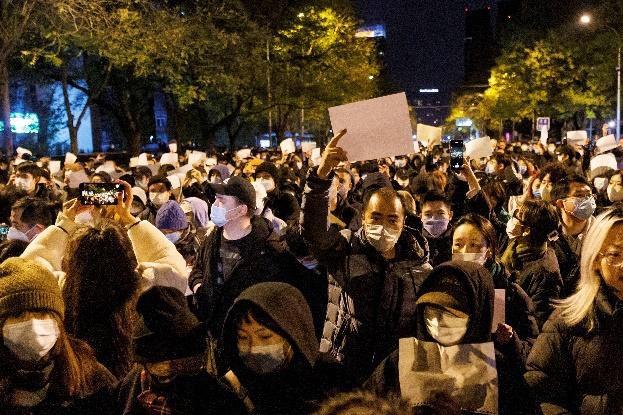
Still, there were some protests in China historically. The remarkable protest was the Tiananmen Square protests and incident. The Tiananmen Square incident happened in 1989 as a result of a growing movement calling for greater political and economic freedom in China. The country had experienced a decade of remarkable economic growth and liberalization, and many Chinese had been exposed to foreign ideas and standards of living. The catalyst for the protests was the death of Hu Yaobang who had been the CCP general secretary since 1980 and was forced to resign from his post because he had encouraged democratic reforms. The incident began as a peaceful protest by students and intellectuals in Beijing, but it escalated into a largescale government crackdown that resulted in the deaths of hundreds, possibly thousands, of people. Tanks and heavily armed troops advanced toward Tiananmen Square, opening fire on crushing those who again tried to block their way. The military had secured complete control at the last moment. This incident was the last huge incident that showed Chinese people’s craving on participating in political issues and voicing their rights.
In 2022, the people in China protested again after 30 years when the Tiananmen Square protests happened. Due to the Covid-19 pandemic that started in 2020, the CCP executed a “zero COVID” policy which highly suppressed individual rights and freedom. China’s national zero-COVID policy is implemented at the local level. Lockdowns are established when only a few Covid-19 cases are detected. The affected area can span neighborhoods or even entire cities. Contract tracing apps are used to track the spread of viruses by checking movement, which should be installed to enter public places. Also, the government carries out mass testing, and anyone who is contacted with a confirmed positive individual was quarantined. People in China could no longer accept the policy, so the protests against the “zero COVID” policy of the CCP under Xi Jinping happened. It is called the “White Paper Revolution” in which people protested holding white paper in their hand, protesting to stop the “zero COVID” policy. People who participated in protests highly craved their human rights and freedom to be preserved. Chinese people’s craving for human rights and freedom got highly increased as the zero-COVID policy persisted. They even shouted “Xi Jinping, step down!”, which is the slogan that we were not able to see for a decade in China. The protest ended by the CCP declared to reduce the “zero COVID” policy, which is remarkable that the CCP started to accept the demand of the people in the nation.



We can significantly notice that Chinese people’s political awareness of the CCP increased, and starting to express their demands in a huge group unit. It was sort of tradition in China not to speak up about political issues, and they followed CCP’s decision for their safety. I think it is definitely a green light for democracy in China, considering that there was no huge political expression against CCP before this White Paper revolution. To enhance democracy in China, international society should endeavor to achieve SDG 16. The reason democracy is not preserved in the current state is on CCP, which rules the nation. CCP should not corrupt, which is a target for SDG 16. Not only CCP, but people in China should also try hard to be involved in political issues in China, and I believe the White Paper revolution in 2022 can be the starting point for Chinese people’s active participation in politics. I urge global effort to achieve SDG 16 which regards peace and justice, which can highly endeavor to achieve democracy in China and the whole world.
The Q&A session will be about the most remarkable question that Mr.Cheng answered that might be related to the topic of democracy or policies. The most memorable question was:
Q. What is the importance of domestic policy?
A. UNDESA gives advice through statistics and data. However, the domestic policy is the most important because that will be what will put the country in the developing stance. Capacity building also can be done through the country’s domestic policy.
Q. How does the United Nations come up with statistics and numbers on big data, such as inflation, the Gini coefficient, etc?
A. UNDESA harnesses its convening power and connections to cross-reference and assess to retrieve data. However, he confesses that data predictions are often off, and unexpected crises derail DESA’s efforts.
Aquino, Marco. “Peru Bans Bolivia's Evo Morales as Political Crisis Simmers.” Reuters, Thomson Reuters, 9 Jan. 2023, www.reuters.com/world/americas/peru-bans-entry-former-bolivian-president-morales-eight-others2023-01-09/.
BBC News. “How Democratic Are Russian Elections? - BBC News.” YouTube, 15 Sep. 2021, www.youtube.com/watch?v=JeMzp1nT6cQ
BBC. “Peru's 'Interim Leader' Aráoz Resigns amid Power Dispute.” BBC News, BBC, 2 Oct. 2019, www.bbc.com/news/world-latin-america-49901872.
Brandimarte, Walter. “Peru President Pedro Castillo's Approval Ratings Plunge after Inflation Riots.” Bloomberg.com, Bloomberg, 11 Apr. 2022, www.bloomberg.com/news/articles/2022-04-11/peru-president-sapproval-ratings-plunge-after-inflation-riots.
Briceno, Franklin, and Christine Armario. “Peru in Political Crisis as Protests Push Interim President to Quit.” PBS, Public Broadcasting Service, 16 Nov. 2020, www.pbs.org/newshour/politics/peru-in-political-crisis-asprotests-push-interim-president-to-quit.
Burns, E. Bradford , Momsen, Richard P. , Martins, Luciano , James, Preston E. and Schneider, Ronald Milton. "Brazil". Encyclopedia Britannica, 23 Jan. 2023, https://www.britannica.com/place/Brazil. Accessed 25 January 2023.
Buschschlüter, Vanessa. “Peru's President Pedro Castillo Replaced by Dina Boluarte after Impeachment.” BBC News, BBC, 8 Dec. 2022, www.bbc.com/news/world-latin-america-63895505.
Cohen, Zachary, et al. "Capitol Rioters Planned for Weeks in Plain Sight. The Police Weren't Ready." CNN, 2021, https://www.cnn.com/2021/01/10/politics/capitol-rioters-planning/index.html
Collyns, Dan. “What Is Happening in Peru and Why Are People so Angry?” The Guardian, Guardian News and Media, 14 Dec. 2022, www.theguardian.com/world/2022/dec/14/peru-explainer-what-is-happening.
Editors of Encyclopaedia Britannica. “The Second Junta.” Encyclopædia Britannica, Encyclopædia Britannica, Inc., 7 Apr. 1999, www.britannica.com/place/Peru/The-second-junta#ref1296487.
Encyclopædia Britannica. “Peru.” Encyclopædia Britannica, Encyclopædia Britannica, 7 Apr. 1999, www.britannica.com/place/Peru#/media/1/453147/61679. Accessed 25 Jan. 2023.
“Explore the Map.” Freedom House, https://freedomhouse.org/explore-the-map?type=fiw&year=2022.
Freedom House. “Russia.” Freedom House, freedomhouse.org/country/russia/freedom-world/2022.
Gamba, Laura. “Death Toll at 59 from Protests in Peru.” Anadolu Ajansı, 21 Jan. 2023, www.aa.com.tr/en/americas/death-toll-at-59-from-protests-in-peru/2793355
“Goal 16 | Department of Economic and Social Affairs.” United Nations, United Nations, https://sdgs.un.org/goals/goal16.

Graham, Thomas. “Evo Morales Barred from Peru as Foreign Interests Blamed for Deadly Protests.” The Guardian, Guardian News and Media, 10 Jan. 2023, www.theguardian.com/world/2023/jan/10/evo-moralesbarred-peru-bolivia-pedro-castillo.
Katkov, Mark. “In Midst of Pandemic Crisis, Peru's Legislature Impeaches the Nation's President.” NPR, NPR, 10 Nov. 2020, www.npr.org/2020/11/10/933334195/in-midst-of-pandemic-crisis-perus-legislatureimpeaches-the-nations-president.
“Luiz Inácio Lula Da Silva.” Encyclopædia Britannica, Encyclopædia Britannica, Inc.,
https://www.britannica.com/biography/Luiz-Inacio-Lula-da-Silva#ref339315.
Marina, Diego Lopez. “Evo Morales, Former President of Bolivia, Banned from Entering Peru.” Perú Reports, 14 Jan. 2023, perureports.com/evo-morales-former-president-of-bolivia-banned-from-entering-peru/9985/.
McKew, Molly. “Putin’s Real Long Game.” POLITICO Magazine, 1 Jan. 2017, www.politico.com/magazine/story/2017/01/putins-real-long-game-214589
Moloney, Marita. “Peru Protests: Roads and Airport Blocked in Anger at New President.” BBC News, BBC, 13 Dec. 2022, www.bbc.com/news/world-latin-america-63952998.
Nicas, Jack, and André Spigariol. “Bolsonaro Supporters Lay Siege to Brazil's Capital.” The New York Times, The New York Times, 9 Jan. 2023,
https://www.nytimes.com/2023/01/08/world/americas/brazil-election-protests-bolsonaro.html.
Nicas, Jack. “Brazil Election: Brazil Elects Lula, a Leftist Former Leader, in a Rebuke of Bolsonaro.” The New York Times, The New York Times, 31 Oct. 2022, https://www.nytimes.com/live/2022/10/30/world/brazil-presidential-election.
Person, and Jessie Pang Yew Lun Tian. “As China Loosens Covid Restrictions, Protesters Fear Retribution.” Reuters, Thomson Reuters, 9 Dec. 2022, https://www.reuters.com/world/china/china-loosens-covidrestrictions-protesters-fear-retribution-2022-12-09/.
Rebaza, Claudia, et al. “Peru's President Impeached and Arrested after He Attempts to Dissolve Congress.” CNN, Cable News Network, 8 Dec. 2022, www.cnn.com/2022/12/07/americas/peru-president-castillocongress-dissolves-intl/index.html.
Roth, Andrew. “Vladimir Putin Secures Record Win in Russian Presidential Election.” The Guardian, 25 May 2018, www.theguardian.com/world/2018/mar/19/vladimir-putin-secures-record-win-in-russian-presidentialelection.
“Russian Federation.” IDEA, www.idea.int/data-tools/country-view/254/40.
Serebryakov, Dmitry. “Demonstrators march with a banner that reads "Ukraine Peace, Russia Freedom," in Moscow on February 24, 2022, after Russia's attack on Ukraine.” The Atlantic, 24 Feb. 2022, www.theatlantic.com/photo/2022/02/photos-anti-war-protests-russia/622914. Accessed 26 Feb. 2023.
Smith, Whitney. "flag of Brazil". Encyclopedia Britannica, 1 Dec. 2022, https://www.britannica.com/topic/flag-of-Brazil. Accessed 25 January 2023.
"Sustainable Development Goal 16." United Nations Development Programme, 2021, https://www.undp.org/content/undp/en/home/sustainable-development-goals/goal-16-peace-justice-andstrong-institutions.html.
“The Chinese Communist Party.” Council on Foreign Relations, Council on Foreign Relations, https://www.cfr.org/backgrounder/chinese-communist-party.

"The Democracy Index 2020: In Sickness and In Health?" The Economist Intelligence Unit, 2021, https://www.eiu.com/n/campaigns/democracy-index-2020/.
UN DESA. “Goal 16 | Department of Economic and Social Affairs.” United Nations, United Nations, sdgs.un.org/goals/goal16.

Vox. “From Spy to President: The Rise of Vladimir Putin.” YouTube, 23 Mar. 2017, www.youtube.com/watch?v=lxMWSmKieuc.
Who Is Martín Vizcarra? Meet the Man in Line to Be Peru’s New President. 21 Mar. 2018.
Writer, Contributing. “Peru Protests: What to Know about Indigenous-Led Movement Shaking the Crisis-Hit Country.” FIU News, Florida International University, 20 Jan. 2023, news.fiu.edu/2023/peru-protests-what-toknow-about-indigenous-led-movement-shaking-the-crisis-hit-country.

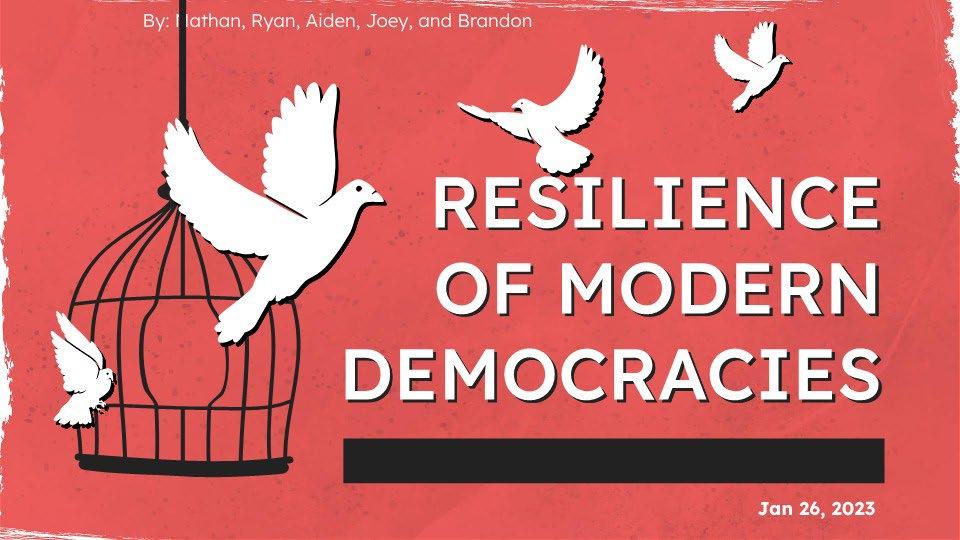
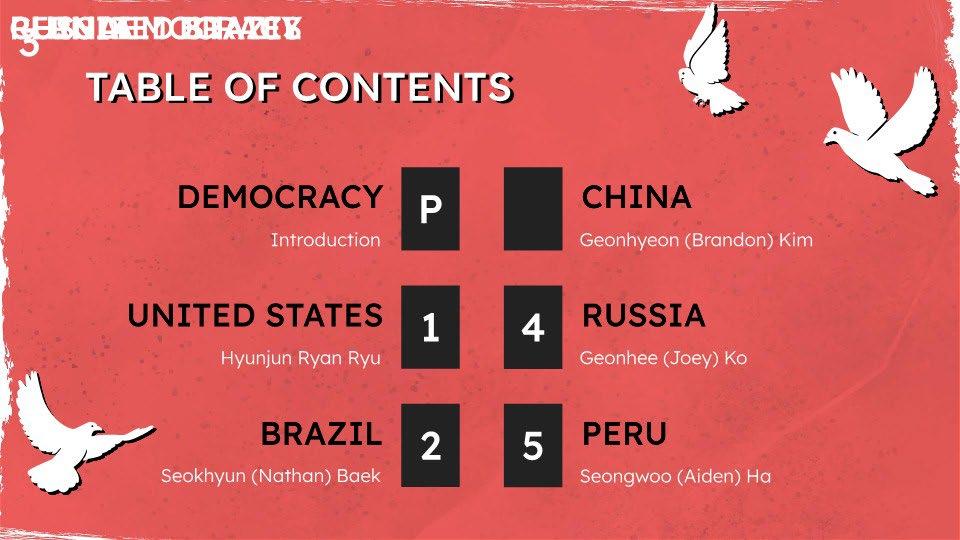
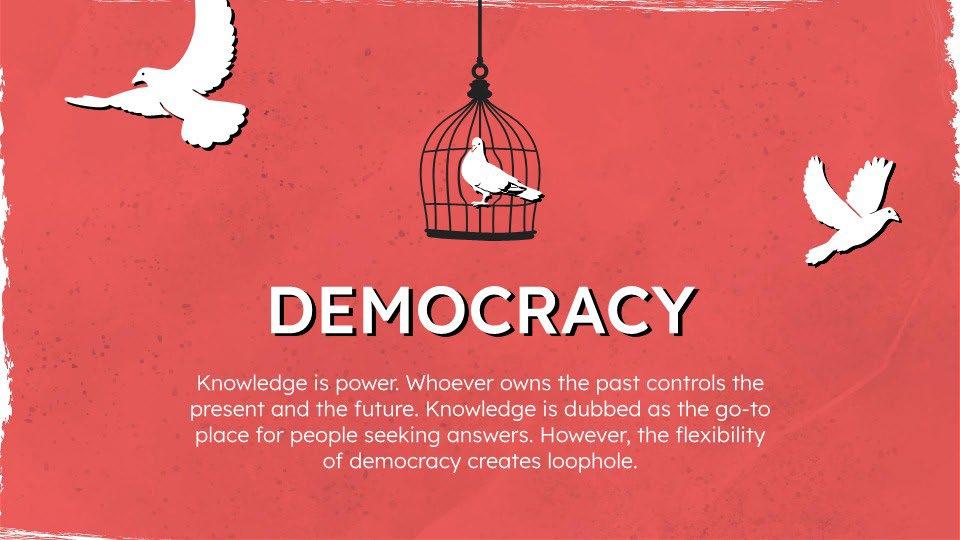



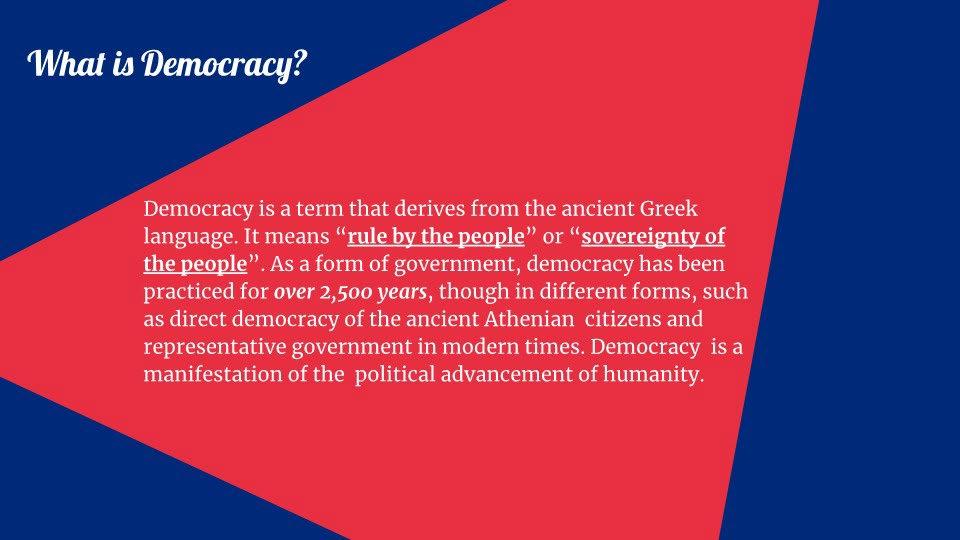






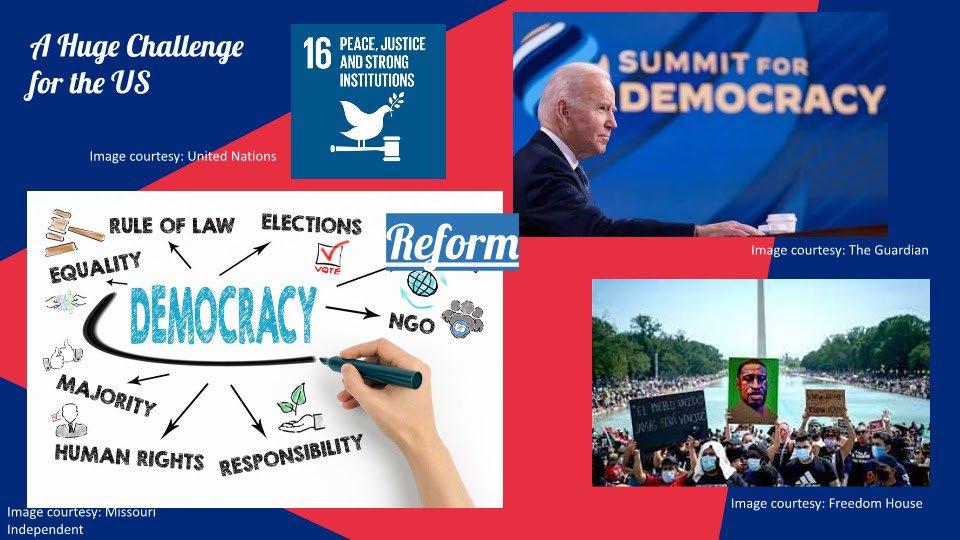
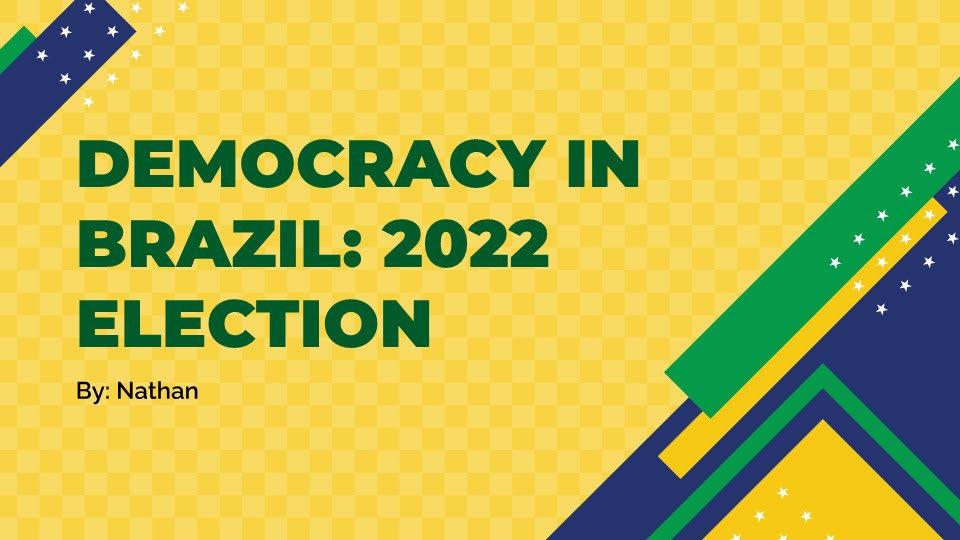
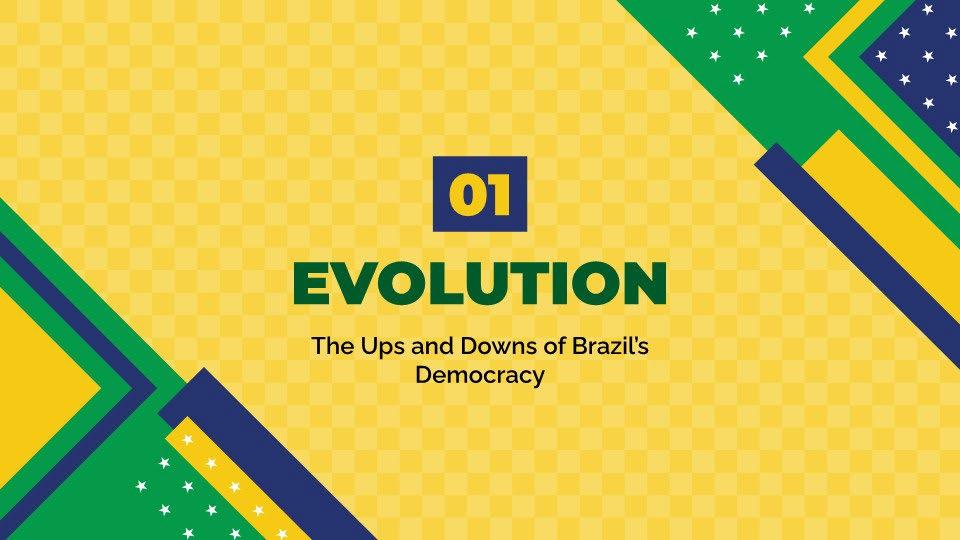

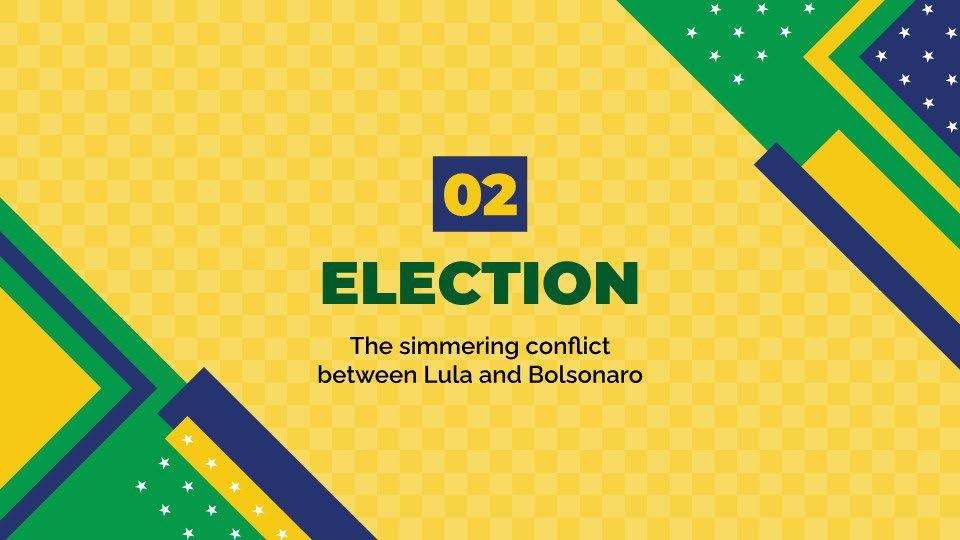
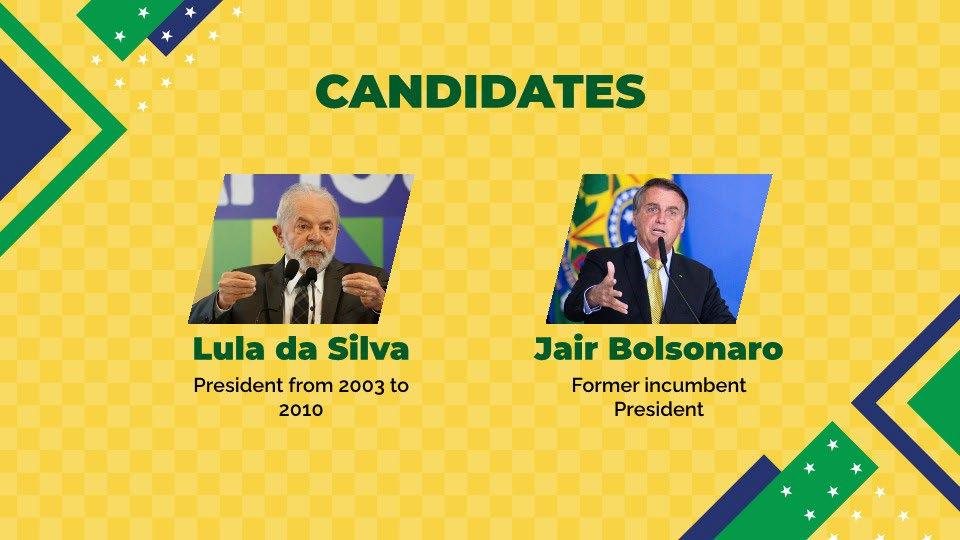

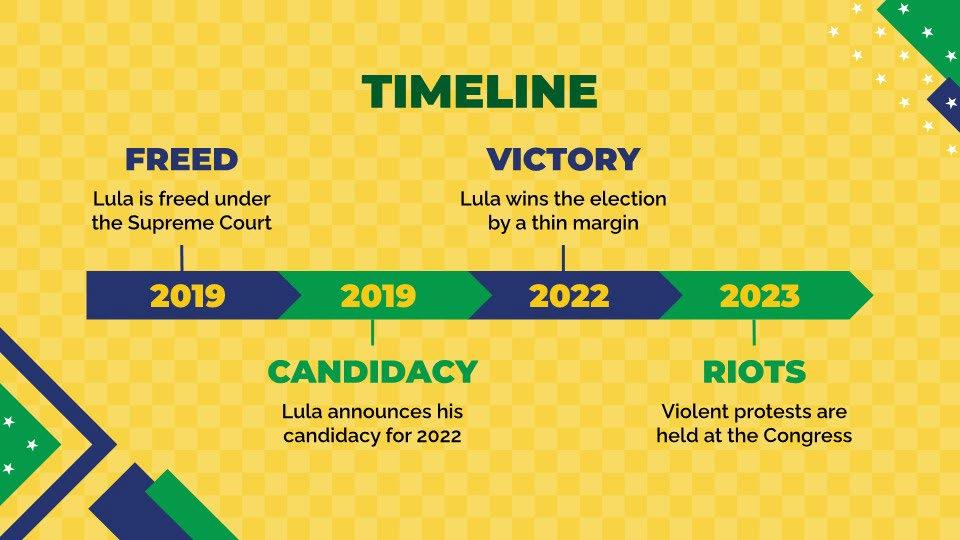


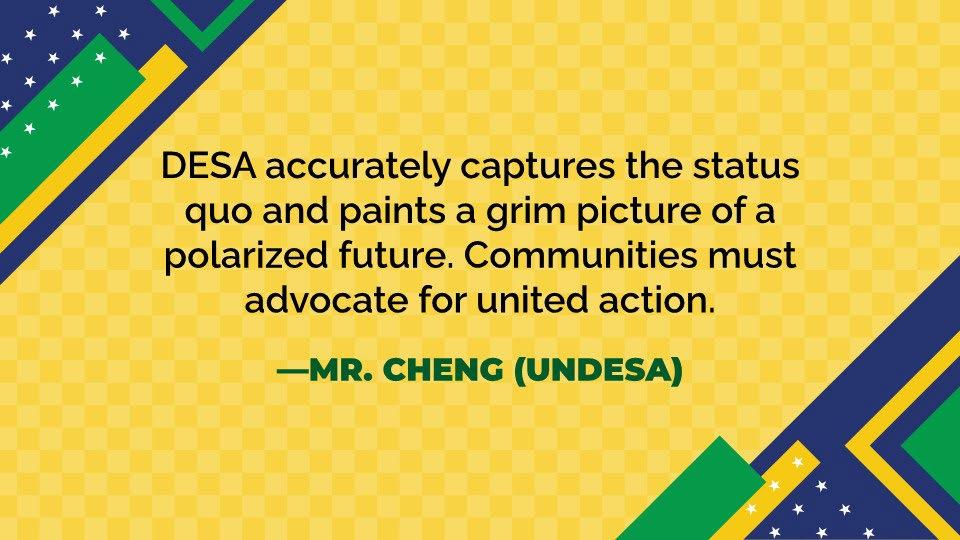







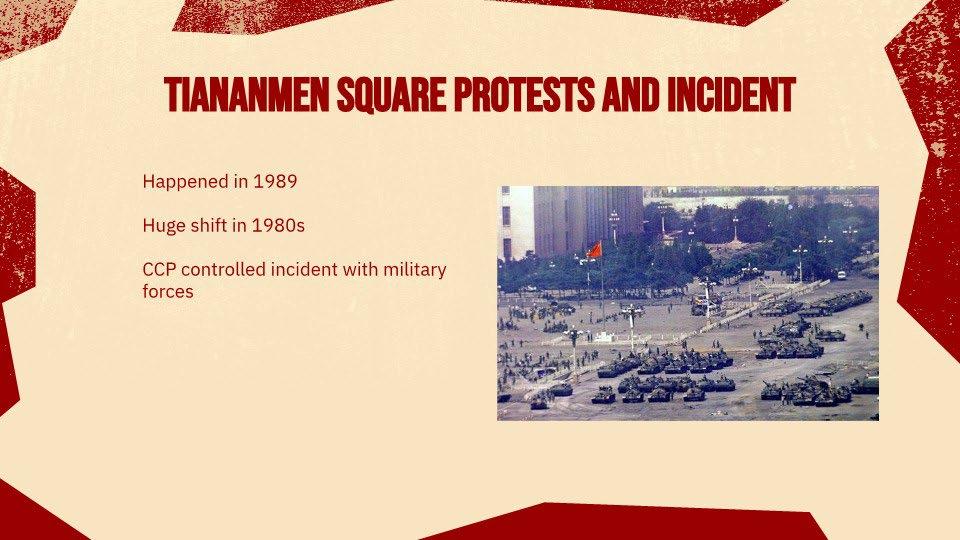


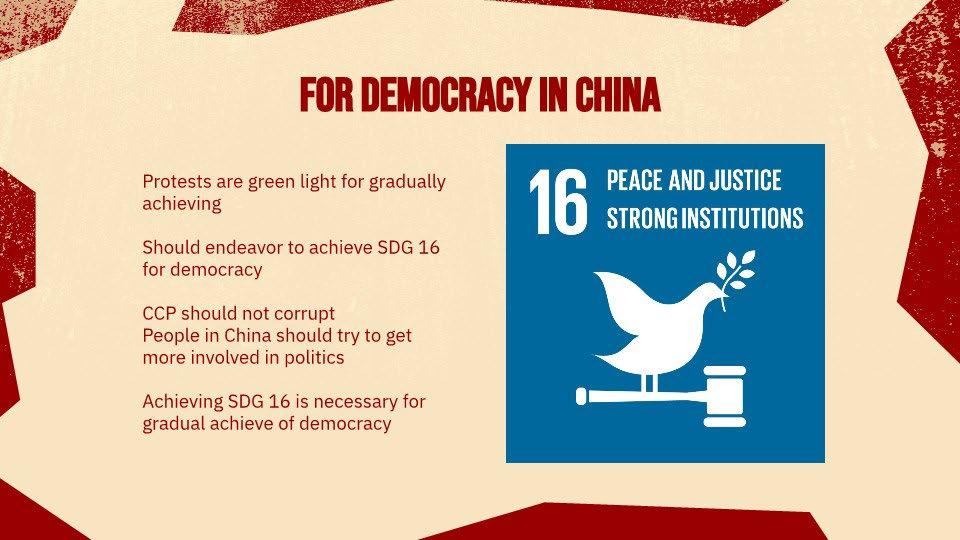
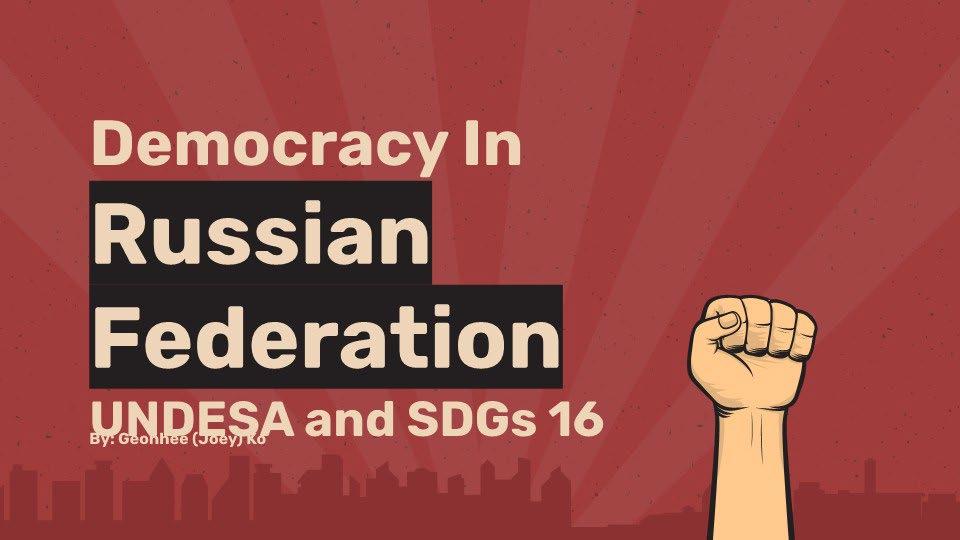
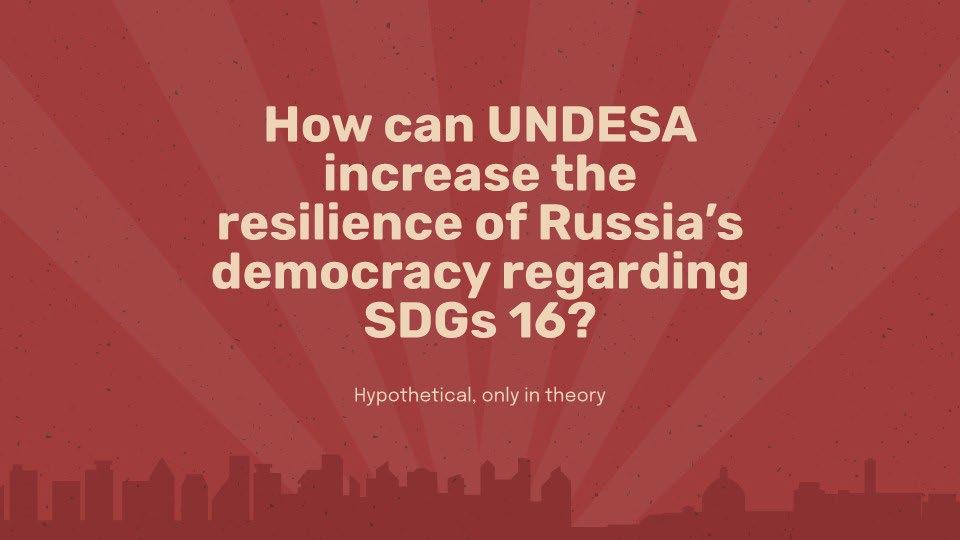
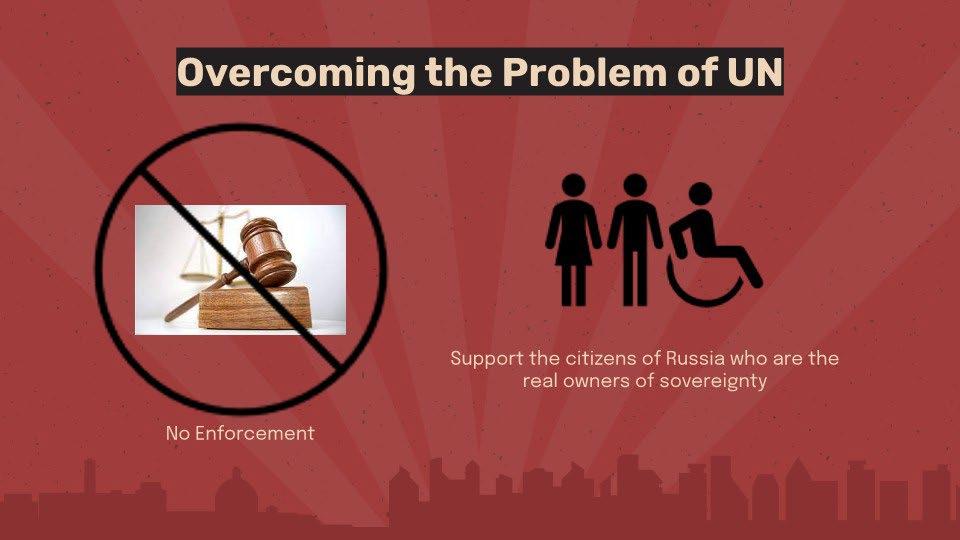
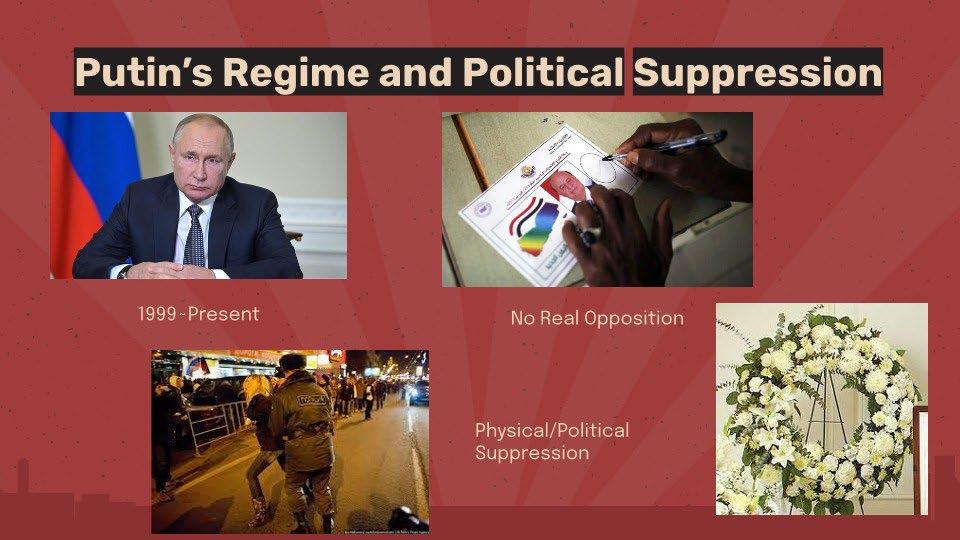
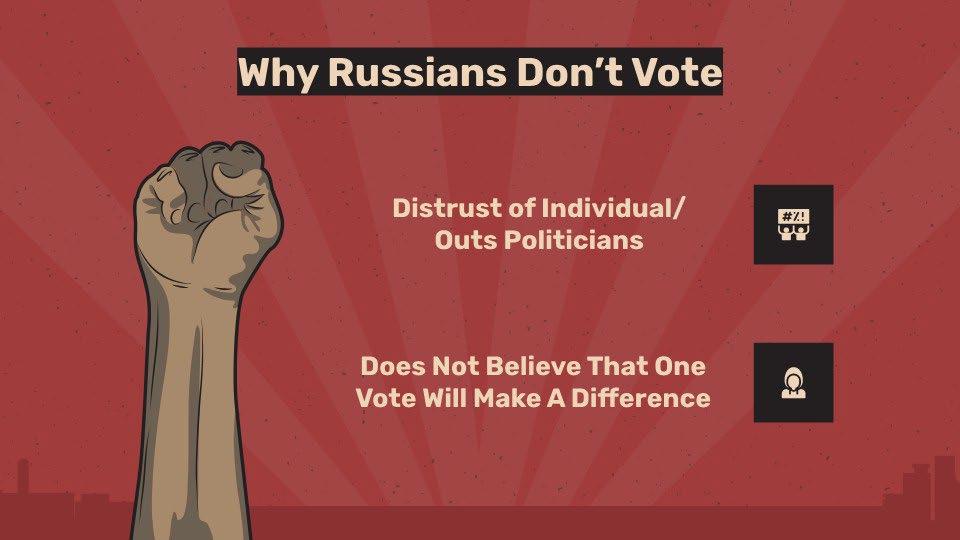





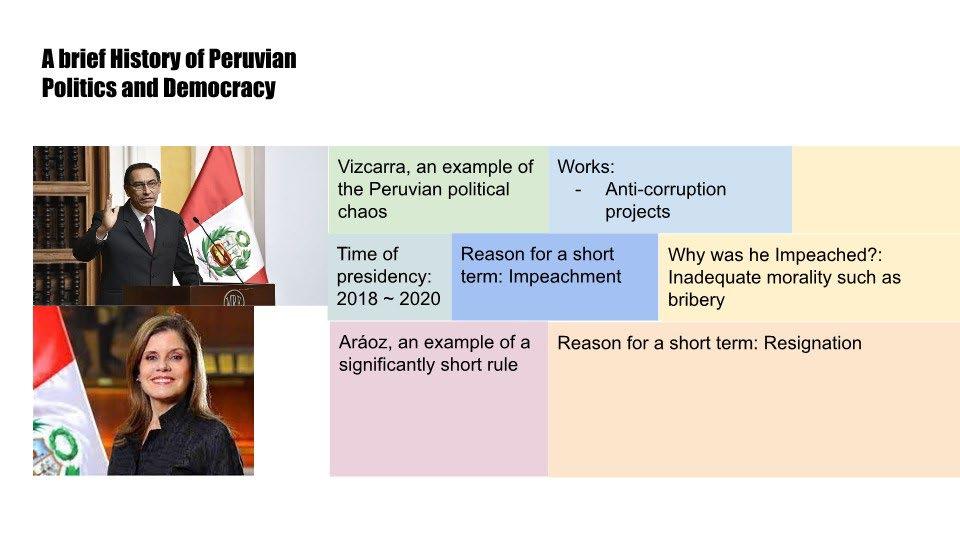




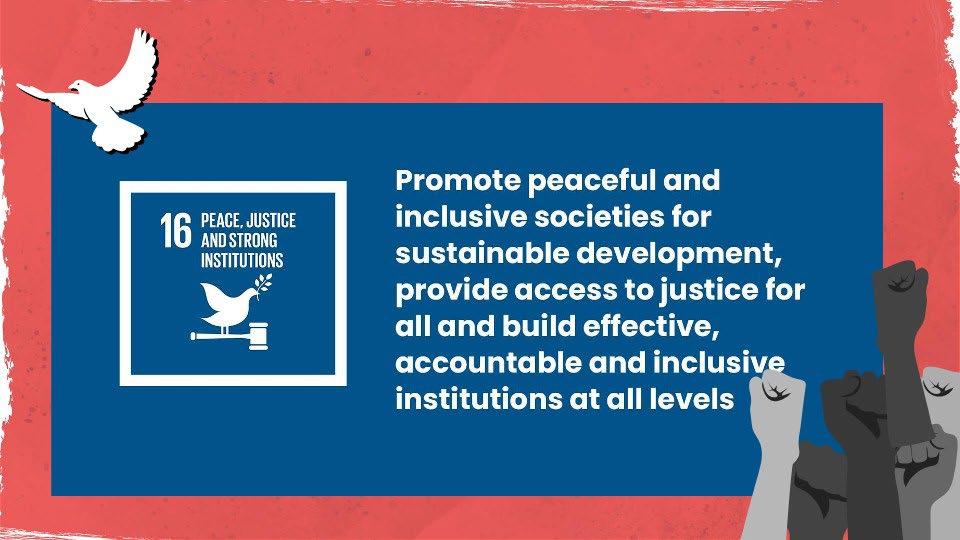

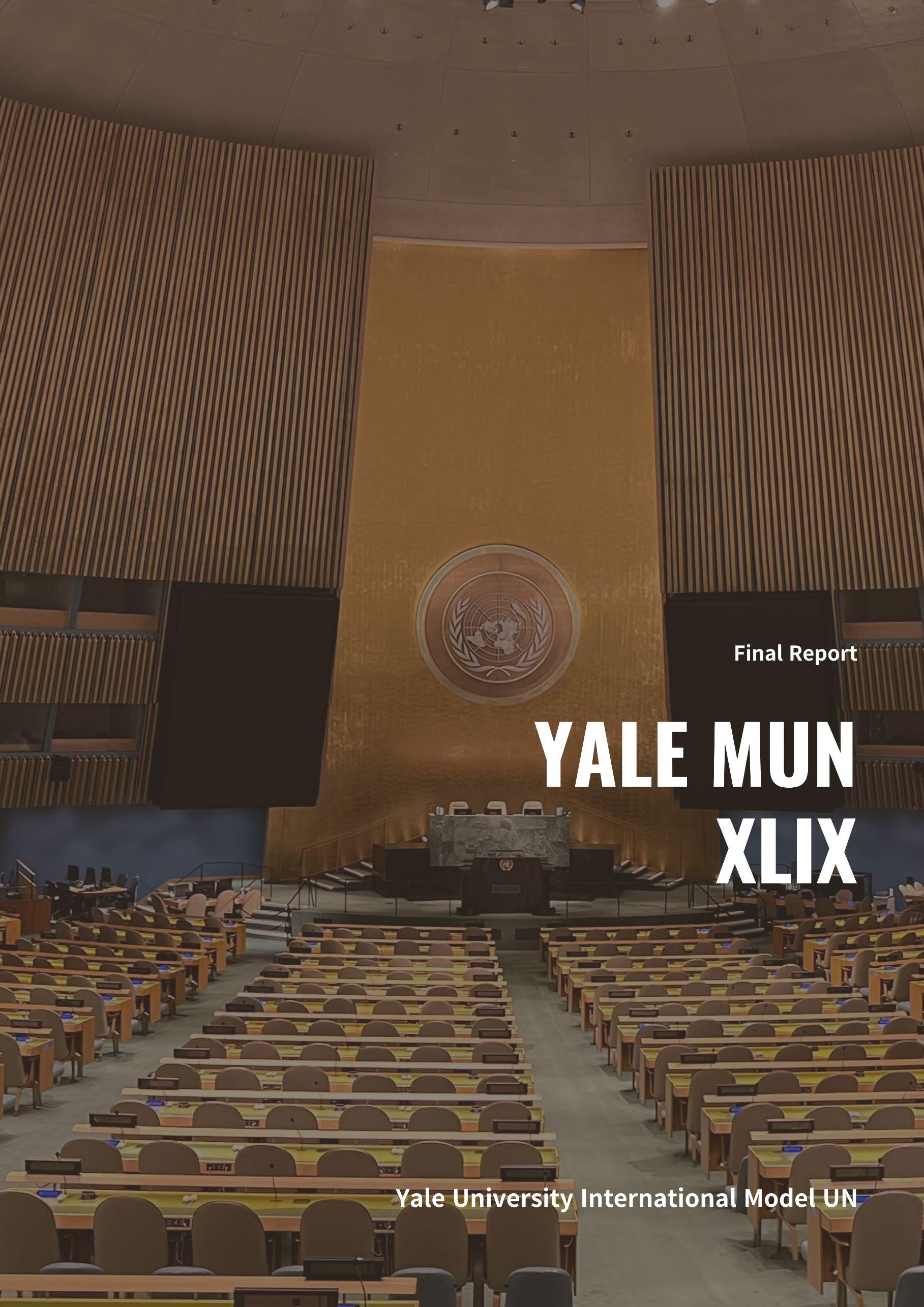
Geonhee Ko, Chungnam Samsung Academy (CNSA) United States Security Council (UNSC), Russia







Bogyong Ko, Bakmun Middle School Disarmament and International Security Committee (DISEC), Algeria


Sumin Kwon, Handong International School Disarmament and International Security Committee (DISEC), Ghana

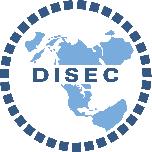

Geon Hyeon Kim, Jinsan Middle School Commission on Crime Prevention and Criminal Justice (CCPCJ), Dominican Republic

Jaeyi Kim, Sinarmas World Academy World Health Organization (WHO), Republic of Korea
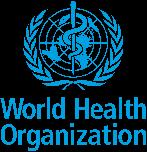
Hyunjun Ryu, The Frederick Gunn School International Court of Justice(ICJ), Chile
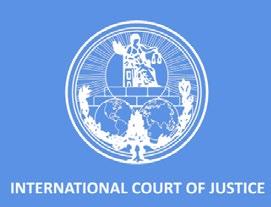


Grace Park, Seoul Foreign School Commision on the Status of Women (CSW), Dominican Republic
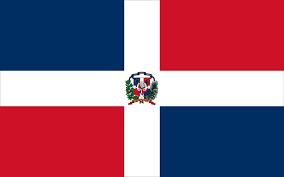
Yueun Park, Homeschool Disarmament and International Security Committee (DISEC), The Islamic Republic of Afghanistan
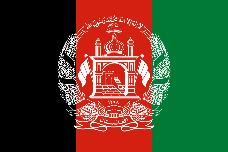
Chaerin Shin, Dongtan Global High School Commission on Science and Technology for Development (CSTD), Dominican Republic
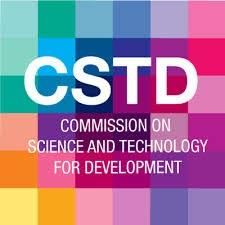
Chaeeun Ahn, Dongtan Global High School World Bank, Republic Of Korea
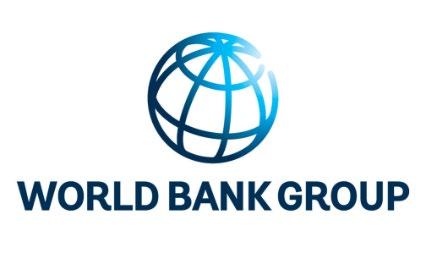
James Junghun Yang, Asia Pacific International School Economic and Financial Committee, Republic of Korea
So Jung Ohk, Dwight School Seoul CSTD, Switzerland

Seoyeon Woo, Chung Nam Samsung Academy United Nations Environment Programme (UNEP), Dominican Republic
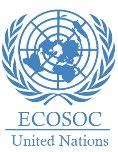


Byeori Yoon, Daeil Foreign Language High School Commission on Narcotic Drugs (CND), Republic of Korea

Dayoung Lee, Branksome Hall Asia Human Rights Council, Algeria
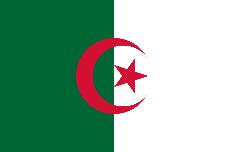
Yeseung Lee, Hankuk Academy of Foreign Studies Human Rights Council, Ghana

Yu-Chien Chang, Cheongna Dalton School United Nations Environment Programme (UNEP), Republic of Korea

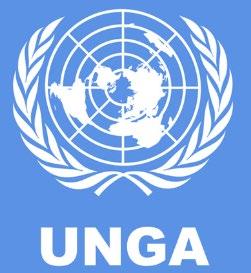
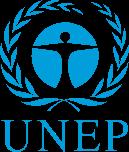

Seoyoung Jeon, Korean Minjok Leadership Academy Social, Humanitarian, and Cultural Committee (SOCHUM), Republic of Korea


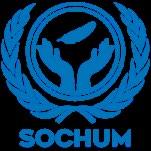



Yeonwoo Cho, SALT International School World Bank, Dominican Republic

Seongwoo Ha, International Christian School of Lima World Health Organization (WHO), Dominican Republic



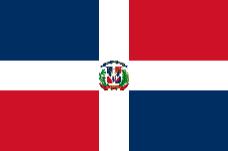
Nguyen Huynh Ngoc Khanh, VIFS Commission on Crime Prevention and Criminal Justice (CCPCJ), Republic of Korea



The world has been drastically changing thanks to the rapid development of technology. Even with all the concomitant benefits of globalization the negative effects cannot be avoided. The development of technology created a new space for warfare, the digital realm, exposing us to new types of threats. Some of these threats have become more destructive in recent years. Various humanitarian organizations have been breached including the UN and ICRC, increasing the awareness of the issue. According to the International Telecommunication Union there have been various collective attempts to respond to cyber-crime such as regulations to fine or imprison anyone who illegally accesses information systems. Because data breaches in the humanitarian sector harms some of the most vulnerable people in the world, Russia will advocate any country that tries to solve this unethical problem. She will fully support any international cooperation that is essential to stop further breaches of humanitarian organizations. However, she underscores that even the most humanitarian solution should not contravene the rights of a sovereign state.
Russia is a cyber active country and is very enlightened about the security of personal information. She has had a privacy policy since 2006 which is one of the few privacy policies before the General Data Protection Regulation and in 2017 a law on security and critical informational infrastructure was passed. Within the law regarding security, it penalizes the person who gained illegal access to protected computer systems to obtain critical information with imprisonment followed by fines. For the privacy policy passed in 2006, Russia appointed data protection officers to ensure the security of personal information. In the humanitarian sector a total of 5,014 aid deliveries have been made by 40 Russian entities including the government from November 2006 to November 2021 which were “heavily influenced by the state”. Therefore, she has taken actions to assist the people in need and would appreciate international help to continue the humanitarian work not just in Russia but also at global levels.
Russia believes that revising and expanding the scope of the security policy she has to take into account the situation of other countries will help prevent data breaches in the humanitarian sector. To implement this an international commission needs to be created to ensure the security of the database of humanitarian organizations and that the policies are being followed. The commission should include every software expert from each country which has ties with the organizations in potential danger. To increase the security measures within the software, she proposes that an international law should be made which makes it obligatory for humanitarian organizations to invest a certain percentage of its funds to data maintenance. Also, humanitarian organizations should disclose any data breaches which allows the data subjects to respond quickly to the threat. Russia will uphold any altruistic resolutions as long as it does not infringe its sovereignty.

“Russia will uphold any altruistic resolutions as long as it does not infringe its sovereignty.”Bogyong Ko, Bakmun Middle School Disarmament and International Security Committee (DISEC), Algeria


The Department of Peace Operations gathered the UN peacekeepers in 1945 to contribute to maintaining world peace. However, the organization didn’t work out as expected. Around the 1990s, there was a rise in PKO casualties, along with reports stating that some PKOs abused the locals. Despite their many efforts for change, it has been hard for the UN to get rid of the abuses. Some of the efforts made for the reform of PKOs are the New Horizon(2009), Brahimi Report(2000), Capstone Doctrine(2006). The PKO reform that was proposed by Secretary General António Guterres in 2017 gave “ reduced fragmentation for better delivery, to make peace and security pillar more coherent, nimble and effective by prioritizing prevention, sustaining peace and delivery on Agenda 2030” as a solution. The problem is that there are still a lot of abuses by the PKOs happening to this day.
Algeria started to change its previous policies and support peacekeeping operations around 2018. They had a non-interference policy since their independence from France in 1962. The reason Algeria decided to lift the ban is to protect itself from the harm of neighboring countries. Lifting the ban will let the country exercise its military power and might even gain a chance to take the lead in the Africa Region. Algeria has given support to the UN so far and will continue to do so in the future.

Algeria will deploy human resources in places like the 12 peacekeeping operations that are currently going on to increase support. For example, the UNMOGIP has the least deployed personnel of onehundred and twelve(June 2022). As a solution to the problem regarding the fall of UN Peacekeepers(PKO), Algeria will provide an education program to make peacekeeping more efficient and to get its reputation back.
Algeria proposes a resolution in which the DPKO provides a better PKO training program and adjusts problematic policies. Not only that the training programs educate the operators on their work, they will also teach the basics of helping, including restrictions. The PKOs will then be able to work more efficiently with higher acheivements. Also, taking away the PKO’s problematic policies, like “no immunity,” will prevent most of the problems from happening. The no-immunity policies have given PKOs too much privilege until now, and this inequality should end. To the perpetrator, there must be consequences for their irresponsible behavior as UN Peacekeepers. There also must be supportive compensation for the victims since the abuses happened due to the negligence of the ones in charge.
“Training programs and change in policies are urgently needed for the sake of human rights”



These days, more than fifty thousand troops are working as UN peacekeepers in the African continent, especially in countries where civil wars and munitions are prevalent, to protect civilians, reduce violence, etc. However, even though the UN peacekeepers helped in the protection of civilians and reduced some war situations, there were many remarkable flaws in UN peacekeepers. The dramatic failure in Rwanda, rising UN keeper casualties, and continuous reports about peacekeepers' violence and sexual abuse including child rape, and gang rape in local locations made UN peacekeepers in question.
At the same time, unlike those flaws, UN peacekeepers bring many positive instances through their missions. Ghanaian people have served in UN peacekeeping since the 1970s, and Ghana has made many significant achievements in terms of humanitarian aid so far as global peace is concerned. Ghana has become one of the leading nations in peacekeeping. As many peacekeepers serve countries such as Sinai, Cambodia, Chad, Liberia, and Bosnia, Ghana has served as a tutor to other countries. As an example, Ghana has helped to establish the Kofi Annan International Peacekeeping Training Centre for colorful aspects of peacekeeping. The situation in Ghana clearly shows that UN peacekeepers are necessary.
Ghana has been training peacekeepers in several ways. For example, Ghana established the Kofi Annan International Peacekeeping Training Centre (KAIPTC) for the purpose of sharing Ghana’s experience and competence in peace operations with the ECOWAS region and other African nations. KAIPTC was in recognition of the need for peacekeepers to have multidimensional peace operations. Since its establishment, KAIPTC has trained and tutored over 15,000 participants and students. Ghana believes that if there are no specific rules and proper education for UN peacekeeping, there is no way to solve those problems for UN peacekeepers.

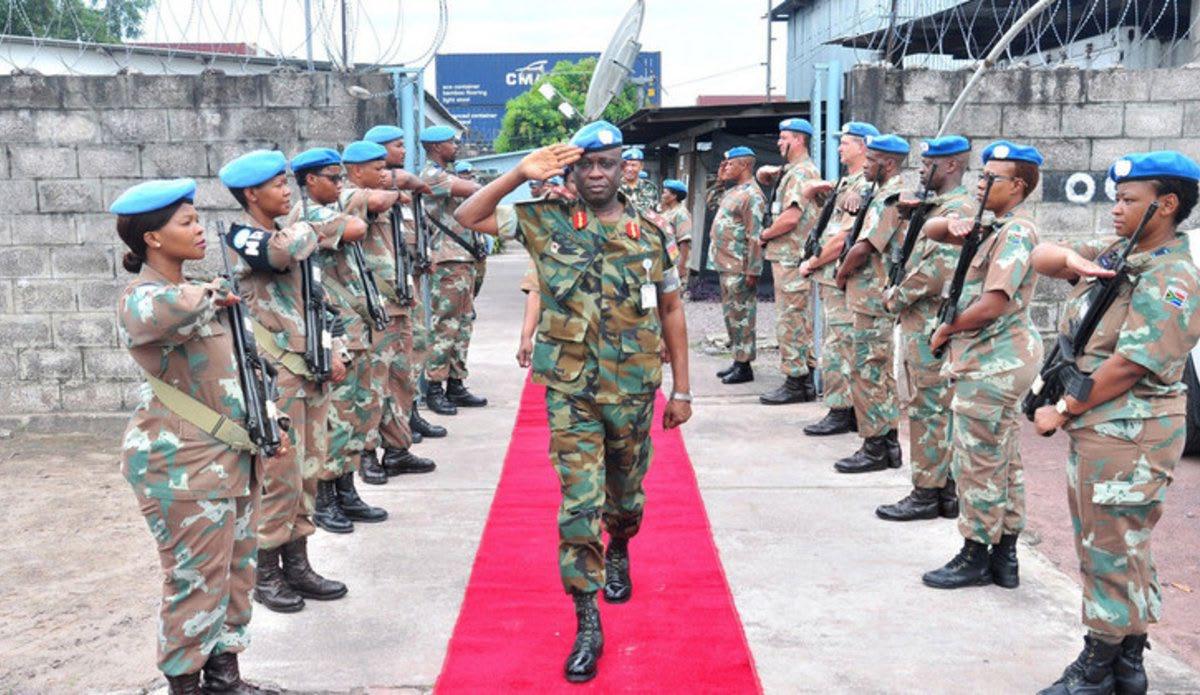
“UN needs to have a strong, strict, and sustainable monitoring system for UN keepers to make sure the problems will not recur in the future”
Ghana proposes a resolution that UN peacekeepers have more reinforced and strengthened training and education before they get deployed in missions to other countries. Ghana believes that when UN peacekeepers are sent to the region, strengthening education on how to protect and maintain security that can create stronger responsibility properly will achieve the true purpose of peacekeeping. Furthermore, we recommend that peacekeepers have an accurate understanding and education of the troop transfer site by simulating and confirming their missions and anticipated actions in advance in case they flee the field or fail to fulfill their missions.
The current crimes and corruption of peacekeepers are raising doubts about the existence and activities of peacekeepers. crimes committed by peacekeepers appear in various forms, from simple theft to serious types of crimes such as sexual violence and abuse. Therefore, the UN has launched various efforts to reduce crimes among peacekeepers, but crime is on the rise. Ghana proposes a resolution to the UN to have a strong, strict, and sustainable monitoring system for UN keepers to make sure the problems will not recur in the future. The system has to monitor financial problems, whether the UN peacekeeping missions in the fields are financially supported well, or corruption, and whether the missions are progressing with transparency. In addition, if the system catches a problem in the peacekeeping mission field, Ghana recommends sending aid packages that can solve the problem rather than continuing to send peacekeepers to the place where the problem happened. Ghana also recommends the core of this system and aid packages be worked on by the nations themselves. Moreover, Ghana affirms an increase in the number of women peacekeepers in the mission field for the rights of women civilians and encourages them to raise their voices.

Over the past few years, as the rapid development of biotechnology made the way of genetic modification easier and cheaper, it made many countries proceed with many experiments such as inventing new bacteria. Therefore, scientists are now allowed to modify organisms’ DNA more easily and accurately. The development of biotechnology may be used for the improvement of humans and society, but at the same time, it could be misused such as bioterrorism. Since World War I, bioweapons have killed more than 100,000 people and injured more than one million people. Moreover, as biological weapons get more advanced, it would be hard to track the origin and by the time it gets tracked, lots of people would already have lost their life. Also, the confirmation of biological weapons’ use may also be elusive. Therefore, fears of genetic engineering viruses are rising with advances in biotechnology. For example, In January 1992, when FRELIMO troops had an operation near the South African border, some soldiers died, and some required hospitalization due to alleged exposure to what was thought to be a chemical agent. After this incident, scientists from many

“The Use of Biological Weapons in International Conflict”
“The development of biotechnology may be used for the improvement of humans and society, but at the same time, it could be misused such as bioterrorism”
countries and even the UN launched several investigations, but the results of the use of chemicals were inconclusive and uncertain.

Due to the rise of international tension, threats of using biological weapons are getting worse. Moreover, the 1972 Biological Weapons Convention (BWC) is the only prohibited protection against biological weapons manufacturing that promised not to use bioweapons during warfare, and 180 nations have signed this convention. However, the problem is that there is no convention or promise between countries that enforce the prohibitive use of biological weapons, and no proper punishment for using biological weapons. However, as biotechnology gets more developed in a shorter period, Ghana thinks BW should be prohibited as soon as possible. Ghana gives a resolution that the international community demands and has a binding and standardized agreement or system that applies to all districts on biological weapons that the countries participate autonomously without feeling antipathy. Together with a standardized system of biological weapons, Ghana thinks the punishments for the use of BW should also be further strengthened.
Even if the law and convention are strengthened, Ghana recommends introducing a monitoring system that can monitor the status and possession of biological weapons in each country, like a private contingent, in case of the possible use of biological weapons. Moreover, Ghana also suggests pursuing a UN campaign that can release the number of people using biological weapons such as a campaign for any country to dispose and decompose their weapons free of charge if they voluntarily released their weapons.
Although the seriousness and actual cases of BW continues to grow, there is currently a lack of meeting or room for countries to gather and discuss the solutions and opinions of each country. However, Ghana believes that biological weapons are a problem that all countries must work together to solve. Therefore, Ghana recommends making a meeting where countries including the African nation discuss and have a resolution for BW so that there will be an asymmetry of information between countries and peace in biological weapons.

“NATO should take more effort on achieving peace of international society.”

North Atlantic Treaty Organization (NATO) was first founded to secure peace in Europe against the threat from the Soviet Union. After the breakdown of the Soviet Union, NATO kept expanding to include central and eastern European countries as time pasts and intervened in international crises militarily to keep the peace. One of its representative examples is the Kosovo war, NATO intervened to end the humanitarian conflict by supporting Kosovo Albanians. Issues with NATO arise with their justification of intervention, and payment per country internally. Still, it is fact that NATO struggles to protect the peace, and its importance emerged again with Russia’s invasion of Ukraine. NATO is fully helping Ukraine, but not sending its military directly considering diverse reasons.
The Dominican Republic is not directly related to NATO but believes NATO plays a big role in international society’s peace. When war takes place, such as Russia’s invasion of Ukraine in 2022, it inevitably has a seriously negative impact on the world, and more specifically, war crimes that neglect human rights also suffer. The Dominican Republic appreciates the significance of NATO’s role in those international crises and wishes NATO to keep world peace, even if it is not an issue regarding its member countries. NATO should endeavor its best to stop war crimes and help weak countries under catastrophic situations. The Dominican Republic also hopes to get the help of NATO when it is needed.

In this committee discussing Newfound Harmony of NATO, Dominican Republic proposes members of NATO endeavor to promote cooperation between themselves and consistently remind the original purpose of the organization. Currently, NATO endeavors highly to protect the peace of the world, however, still, some members are seen to avoid active contribution. Though NATO members agreed to spend at least 2% of their GDP on defense by 2025, only nine countries followed through in 2022. The gap in payment between countries is significant, as countries generally feeling more threat of wars are tended to reach 2% of GDP on payment, while others are passive. Dominican Republic encourages member countries of NATO to follow the rule, to reduce financial conflict happening in NATO internally, which contributes NATO to endeavor highly on international issues itself.
The Dominican Republic encourages NATO to follow its original purpose only, but should not support specific political sides. NATO’s main role should be to stop behaviors like war crimes or cyberattacks itself. This delegate believes NATO has done, and still working under its original purpose, however, should continue its efforts in making the rightfully justified decision. Finally, Dominican Republic desires to be a partner country with NATO, so the nation can be protected by NATO in situations getting catastrophic. Not only the Dominican Republic, but this delegate also proposes NATO fully support all countries under valid judgment. This delegate believes NATO will continuously play an important role internationally, whether the organization’s decisions and actions
“NATO’s main role Should be to stop behaviors like war crimes of cyberattacks itself.”
will decide many countries' future and people’s safety. Therefore, this delegate proposes the contents above and hopes for global peace.

“The fundamental solution should be economic aid in Latin America, by gathered the powers of various countries, expanding its influence for the ultimate purpose of reducing crimes, and stopping humanitarian crises.”
Great power competition in Latin America continued for a long decade. Latin America historically got many effects from the United States. The representative example showing the US’s influence was the Monroe Doctrine. These days, Latin American countries are still highly affected by the US, but many countries also get great effects from China and Russia in the economic area. Twenty Latin American countries signed onto China’s Belt and Road Initiative, which refers to China’s economical influence settled down in Latin America. Further, due to Pink Tide, more Latin American countries are increasing their relationships with China and Russia. Whilst the major issue is the consistent crimes in Latin America, this issue is subjected to becoming a minor agenda within the greater partnership with China and Russia.
The Dominican Republic has a history highly related to western powers. The region was colonized by Spain for a long time, and at a certain time occupied by France and Haiti also. During 1916~1924, Dominican Republic was occupied by the US, and after, achieved to be a fully democratic country in 1966, and displays a good relationship with the US today. Dominican Republic’s economy highly consists of the US, with most of the nation’s trade done within the US. The US supports the nation in various avenues, such as education, security, and finances. The Dominican Republic undoubtedly believes in the positive influence of the US and appreciates its necessity in regulating the crimes of Latin America, which makes the US’s role highly important.
Considering China and Russia’s attitude focusing on economic supports itself rather than agendas on crimes and humanitarian crises in Latin America, the Dominican Republic proposes global efforts to communicate with them to persuade them to care about agendas they have neglected. Thus, this delegate suggests all countries take efforts in finding effective methods of communication. However, endless communications cannot change the situation, so this delegate encourages western democratic countries, like the US, to high endeavors in Latin America to expand their influence. The fundamental solution should be economic aid in Latin America, by gathered the powers of various countries, expanding its influence for the ultimate purpose of reducing crimes, and stopping humanitarian crises.
The Dominican Republic also proposes international organizations such as United Nations Office on Drugs and Crime (UNODC) should also actively endeavor to investigate crimes and international efforts to stop spreading them are necessary. If the serious situation continues, this delegate proposes that any kind of international help is needed, such as dispatching UN Peacekeepers. Additionally, economic support should be done in a way that can help people in Latin America, but not exacerbates the polarization of wealth. Rather than building a stadium, which does not profit middle- and low-class individuals, building basic infrastructures that are absent in countries, such as
“International society should care for Latin America itself.”
the healthcare system, education system, etc. The Dominican Republic hopes for a brighter future for Latin America, and the entire world more widely, and therefore proposes the contents above.
References
Buchholz, Katharina. “Where NATO Defense Expenditure Stands in 2022 [Infographic].” Forbes, Forbes Magazine, 30 June 2022, https://www.forbes.com/sites/katharinabuchholz/2022/06/30/where-natodefense-expenditure-stands-in-2022-infographic/?sh=73de19ec64b1.
Dominican Republic - the World Factbook. www.cia.gov/the-world-factbook/countries/dominican-republic.
“Dominican Republic - United States Department of State.” U.S. Department of State, U.S. Department of State, 29 May 2021, https://www.state.gov/countries-areas/dominican-republic/.
Nato. “NATO's Purpose.” NATO, 29 June 2022, https://www.nato.int/cps/en/natohq/topics_68144.htm.

“U.S. Relations with the Dominican Republic - United States Department of State.” U.S. Department of State, U.S. Department of State, 25 Oct. 2022, https://www.state.gov/u-s-relations-with-the-dominican-republic.
Bonner, Brian. “China’s Evolving Economic Footprint in Latin America.” GIS Reports, 22 Nov. 2022, www.gisreportsonline.com/r/chinas-economic-power-grows-in-latin-america.
“Dominican Republic.” United States Trade Representative, https://ustr.gov/countriesregions/americas/dominican-republic.
Ezrati, Milton. “China’s Latin America Move.” Forbes, 7 Nov. 2022, https://www.forbes.com/sites/miltonezrati/2022/11/07/chinas-latin-america-move/?sh=2c2b00531d52. Roy, Diana. “China’s Growing Influence in Latin America.” Council on Foreign Relations, 13 Apr. 2022, https://www.cfr.org/backgrounder/china-influence-latin-america-argentina-brazil-venezuela-securityenergy-bri.
Statista. “Latin America and Caribbean: Homicide Rate 2021, by Country.” Statista, 27 July 2022, https://www.statista.com/statistics/947781/homicide-rates-latin-america-caribbean-country.
“U.S. Relations with the Dominican Republic - United States Department of State.” U.S. Department of State, U.S. Department of State, 25 Oct. 2022, https://www.state.gov/u-s-relations-with-the-dominican-republic.



Sexually transmitted diseases(STDs) are caused by infections transmitted through sexual contact including vaginal, anal, and oral sex[4]. Status quo, 49.9% of the youth population in the Republic of Korea, 18-29 years of age, test positive for Human Papillomavirus(HPV), the most prevalent STD[7]. On the national scale, HPV is responsible for 80% of rising oropharyngeal cancer cases, accounts for 5% of all domestic cancer cases, and 10~20% of infections lead to precancerous, malignant diseases[7].
Involving more than 30 different pathogens, only 4 of 8 are curable; the remainder is incurable and occupy the majority of all infections of which 66.6% are asymptomatic[1,5]. Beyond the medical impacts of STDs ranging from mother-to-child transmissions, neonatal death, and infertility to cervical cancers, its perilous impacts reach socioeconomic scopes: stigmatization and antagonization of victims are ubiquitous within the Korean peninsula and beyond[5].
Primarily, socioeconomic unavailability accounts for vaccination hesitancy in the ROK; 3-dose HPV shot schedules over 6 months of time are charged around 600,000₩(470 US$). Conspicuous gender roles from deep-rooted patriarchy and gender-based unawareness also play a role. According to research on STD prevalence and risk factors in the ROK, 71.1% of adolescents who have had a sexual debut at a young age with a weekly allowance under 50,000 KRW(40.4 US$) have tested

“By elucidating the significance of sexual responsibility and hygiene, a positive perturbation and social awareness will be formed, along with herd immunity against STDs.”
positive for STIs, implying that financial burden hinders sexual awareness and counseling[8]. Between 2010 and 2014, female recipients of STD treatment, aged 80 and older, increased by 21.6% yearly. Due to sexual unawareness underlying the elderly population which is also the “inactive population” in labor, the financial burden on health sectors and the National Health Insurance Program intensifies[9].
Ultimately, the Republic of Korea only provides vaccination for 2-valent, 4-valent, and 9valent HPV to females aged 9-25 years, included in the National Immunization Program(NIP) since 2016 as recommended by the World Health Organization[3]. Additionally, critical acumen is fomented towards inadequate, unbalanced support for vaccination and sex education especially for adolescents in schools[2,3]. Partner notification, counseling, and confidentiality must also be supported equally.

Alongside rapidly evolving sexuality that involves sexual intercourse among the same sex, lowered age bars to sexual content and activity, and having multiple sexual partners, scrutinizing the causal nexus of the STD crisis is integral[6]. Tackling STDs on and beyond a national scale requires multifarious amendments, namely: accessibility to disease prevention and monitoring, expenseeffectiveness, and policy-level priorities hereby which the ROK names the <United Nations Leverage to Equilibrate STD Scrutinization (UNLENSS)>[2]. Firstly, recognizing the imbalance and precariousness of STD prevention measures, the ROK government expanded the 9-valent HPV vaccine program to females aged 9-45 years and males aged 9-25. Based on healthcare provider recommendations, the government is propelling the expansion of HPV vaccination to a wider range of male adolescents and adults by 2024[7].
Secondly, an efficacious chain of stakeholders must be constructed: primary healthcare providers such as local clinics must coordinate with strengthened government guidelines to expand the accessibility to STD vaccines[7]. On the one hand, educational stakeholders must advance sex education and STD counseling to inculcate a strong sense of responsibility and behavior change[5]. By elucidating the significance of sexual responsibility and hygiene, a positive perturbation and social awareness will be formed, along with herd immunity against STDs. [5]. Formulating the <UNLENSS> solution through a ‘lens’ of change, an epitome of stratagem can be established and the spread of STDs can be judiciously prevented.
Bibliography

1. Braun, Dominique L, et al. “High Rates of Subsequent Asymptomatic Sexually Transmitted Infections and Risky Sexual Behavior in Patients Initially Presenting with Primary Human Immunodeficiency Virus-1 Infection.” OUP Academic, Oxford University Press, 5 Oct. 2017, https://academic.oup.com/cid/article/66/5/735/4356865.
2. “The Mountain That the HPV Vaccine Must Overcome.” 메디포뉴스 , https://medifonews.com/mobile/article.html?no=170035.
3. Seong, Jaehyun, and Sangmi Ryou. “Overview of the Efficacy of Human Papillomavirus Virus Vaccines.” Journal of Bacteriology and Virology, Journal of Bacteriology and Virology, 30 Sept. 2020, https://synapse.koreamed.org/articles/1144990.
4. “Sexually Transmitted Diseases | STD | Venereal Disease.” MedlinePlus, U.S. National Library of Medicine, https://medlineplus.gov/sexuallytransmitteddiseases.html.
5. “Sexually Transmitted Infections (Stis).” World Health Organization, World Health Organization, https://www.who.int/news-room/fact-sheets/detail/sexually-transmittedinfections-(stis).
6. Tingley, Kim. “Why Are Sexually Transmitted Infections Surging?” The New York Times, The New York Times, 17 May 2022, https://www.nytimes.com/2022/05/17/magazine/sexually-transmitted-infectionssurging.html.
7. Lee, Young-jae. “Steady Rise in HPV Infection Rates in Oropharyngeal Cancer Patients... The Reason Is?” Doctors News Korea, 3 Nov. 2022, https://www.doctorsnews.co.kr/news/articleView.html?idxno=146886.
8. Prevalence of and Risk Factors for Sexually Transmitted - JKMS
https://jkms.org/pdf/10.3346/jkms.2017.32.11.1771.
9. Auto, Hermes. “More Elderly Women in South Korea Catching Sexually Transmitted Diseases.” The Straits Times, 20 Jan. 2016, https://www.straitstimes.com/asia/east-asia/moreelderly-women-in-south-korea-catching-sexually-transmitted-diseases.
10. Lee, Eunyoung, et al. “Estimation of the Number of HIV Infections and Time to Diagnosis in Korea.” Https://Doi.org/10.3346/Jkms.2020.35.e41, https://jkms.org/DOIx.php?id=10.3346%2Fjkms.2020.35.e41.

Out of the 10 conflicts spread out over the globe today, each and every one shatters the epitome of countless lives and forces 426 million children to relinquish their dreams. The effects of conflict ranging from war to civil strife are pejorative, precarious, and perennial[1,8]. Conflict zones foment unhygienic environments with rudimentary facilities, adulterated water sources, precarious healthcare and treatment of patients, poor sterilization in communal, temporary medical tents, and hindered supply of medical equipment due to insecure delivery routes.
Ultimately, two out of three unimmunized children reside in conflict zones, and death due to indirect causes like diseases and infections is three times more likely than death from direct causes according to a study from medical journal Lancet[4]. Between 2009 and 2017, there were 364 epidemic outbreaks in 108 refugee camps[2]. Due to the absence of primary and secondary healthcare providers, minor threats to health inexorably pervade the conflict-struct vulnerable communities. Secondly, a large portion of people in conflict zones are malnutritioned and constantly exposed to morbid fear, causing weakened immune systems, non-communicable diseases (NCDs), epidemics, and a spike in congenital health defects.
“The Republic of Korea aims to bring furtherance to healthcare and well-being across conflict zones, formulation a ‘shield’ of stakeholders and strategic handling.”
Thirdly, poor vaccination rates in conflict zones voluminously accelerate the spread of disease: from 22 Arab countries in conflict, less than 66% were compliant with COVID-19 vaccination[6] in contrast to the Republic of Korea with a compliance rate of 84.1%[10]. Due to the absence of education and protocols for maintaining health and safety in conflict situations, 49% of civilians have reported hesitating to report to healthcare facilities due to fear. Thus, regardless of a cessation of hostilities, the impacts of conflict hamper health and wellbeing in the long term.
From 1968 to 2008, the South Korean government propelled the Korea GovernmentDispatched Medical Doctor(KGDD) program, dispatching 115 medical doctors to 40 conflict-struck developing countries for status improvement, promoting amicability, and soft diplomacy[5,9]. However, due to political instability and polarization of parties in conflict-struck nations, the government restricted visits to high-risk areas as a protective measure[3]. South Korea aims to ameliorate world health scrupulously, keeping the health and safety of all affiliated parties foremost, hence proposes the <United Nations Stratagem on Humanitarian Integration to Exemplifying Legislation for conflict zone-Diseases (UNSHIELD)>. This solution aims to bring furtherance to healthcare and well-being across conflict zones, formulating a “shield” of stakeholders and strategic handling.
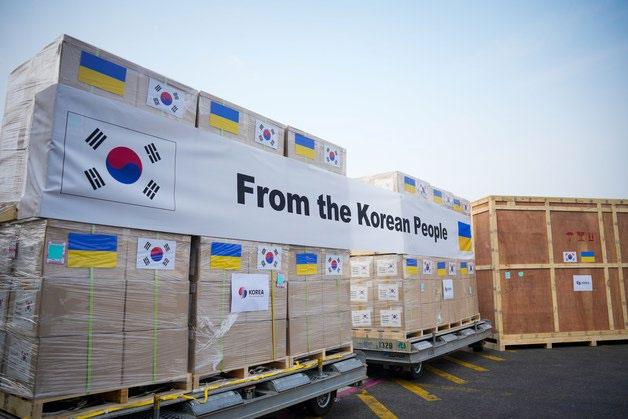
Firstly, healthcare protocols will be maintained down two strategic branches: deploying human capital and resources via global networking, and advocating for disease prevention and treatment. By establishing a joint project or division for conflict zone healthcare administration, donations and relief supplies will be safely delivered through the unified ‘vessel’ and vaccination can be expanded to a larger scale. In the background of the circumstances, awareness of disease prevention amidst calamities will be raised among the general public through online and offline media. This could be achieved through moonshot education, as well as donations and charity projects in schools such as engaging pupils to package handmade medical kits that will be delivered to conflict zones.
Launching its Surveillance System for Attacks on Healthcare(SSA) in December 2019, WHO pioneered an electronic surveillance system to monitor impacts of attacks on healthcare[7]. Signing up as one of its key stakeholders and sponsors, the ROK envisions maintaining transparency and raising awareness, elucidating its criterion to investigate the trend of attacks on each conflict zone, adducing new response tactics through UNSHIELD.
Bibliography
1. “10 Conflicts to Worry about in 2022: Mid-Year Update.” ACLED, 22 Aug. 2022, https://acleddata.com/10-conflicts-to-worry-about-in-2022/mid-year-update/.


2. “Covid-19 in Fragile Settings: Ensuring a Conflict-Sensitive Response.” United Nations, United Nations, https://www.un.org/en/un-coronavirus-communications-team/covid-19-fragile-settingsensuring-conflict-sensitive-response.

3. Newsis. “‘korean Medical Staff Stopped At Ukraine’s Border. Government Amendments To The Legislation'[Ukranian Medical Assistance].” Newsis, 11 Apr. 2022, https://mobile.newsis.com/view.html?ar_id=NISX20220404_0001819042#_enliple.
4. Save the Children Italia https://s3.savethechildren.it/public/files/uploads/pubblicazioni/not-immunechildren-conflict.pdf.
5. Shim, Ui-Sup, and Ho-Gyun Kim. “Review for the Korean Medical Doctors Dispatched by Government in Africa.” Journal of the Korean Association of African Studies, Korean Association Of African Studies, 1 Jan. 1970, https://www.kci.go.kr/kciportal/ci/sereArticleSearch/ciSereArtiView.kci?sereArticleSearchBean.artiId =ART001621166.
6. Siddiqui, Amna, et al. “Covid-19 Vaccine Hesitancy in Conflict Zones: A Review of Current Literature.” Frontiers in Public Health, U.S. National Library of Medicine, 2 Dec. 2022, https://www.ncbi.nlm.nih.gov/pmc/articles/PMC9757058/.
7. “Taking Risks to Provide Care in a Conflict Zone.” World Health Organization, World Health Organization, https://www.who.int/news-room/feature-stories/detail/taking-risks-to-provide-care-in-aconflict-zone.
8. “These Countries in Conflict Are the Worst Places to Be a Child.” Save the Children, https://www.savethechildren.org/us/charity-stories/worst-conflict-affected-countries-to-be-a-child.
9. Doctors Without Borders. “Protected Belief, Protected Decade..” Doctors Without Borders, https://msf.or.kr/campaigns/MSFK_10years/.
10. Park, Hye-in, and Shim, Min-young. “Psychosocial Review of Vaccine Hesitancy.” Https://Doi.org/10.4306/Jknpa.2021.60.4.253, https://jknpa.org/DOIx.php?id=10.4306%2Fjknpa.2021.60.4.253.

The Silala River is a crucial resource for tens of thousands of South Americans. Located in the Atacama Desert, one of the driest places on earth, it remains an essential source of fresh water and energy for Bolivia and Chile. Despite its small size, the river has been of great importance for supporting industries and providing a water supply for human consumption. In 1999, Bolivia abruptly changed its stance, denying that the Silala River was an international watercourse and claiming that these waters belonged entirely to Bolivia and had been diverted into Chilean territory. However, the legal basis of the extraterritorial obligations stemming from economic, social, and cultural rights can be traced back to Articles 55 and 56 of the UN Charter and the International Covenant on Economic, Social and Cultural Rights (ICCPR), Article 2(1), which states that the full realization of economic, social and cultural rights must be achieved progressively by State Parties, individually and through international assistance and co-operation.
Therefore, Chile asks the Court to adjudge and declare that the Silala River system, together with the subterranean portions of its system, is an international watercourse, the use of which is governed by customary international law. The definition of international watercourse contained in Article 2 (a) and (b) of the 1997 Convention reflects customary international law. It supports the idea that Silala waters qualify as an international watercourse irrespective of its “natural” or “artificial” character.
The General Assembly and the Human Rights Council have also recognized and proclaimed the human right to safe drinking water. It entitles everyone, without discrimination, to have access to sufficient, safe, acceptable, physically accessible, and affordable water for personal and domestic use. Therefore, Chile asks the Court to adjudge and declare that Chile is entitled to the equitable and reasonable utilization of the waters of the Silala River system per customary international law. Chile maintains that its entitlement to the waters of the Silala under the principle of equitable and reasonable utilization, that is, to supply mines and towns that are in serious scarcity of water, therefore, is not affected by the fact that parts of the flow of the Silala are artificially enhanced.
Finally, Chile asks the Court to adjudge and declare that under the standard of equitable and reasonable utilization, Chile is entitled to its current utilization of the waters of the Silala River. Chile’s past and present use of the Silala waters is consistent with equitable and reasonable utilization. Chile would also like to point out that as a downstream riparian State, all its past and present use of the flow that crosses the boundary from Bolivia to Chile is equitable and reasonable vis-à-vis Bolivia.

Chile is committed to developing a fruitful relationship of cooperation with its neighbor, the pre-national state of Bolivia, based on due respect for mutual rights and obligations under international law. There are numerous areas in which Chile and Bolivia need to cooperate to benefit the two countries and their inhabitants living on both sides of the boundary.


Armenia vs. Azerbaijan is a case primarily focused on the recent developments in the autonomous region of Nagorno-Karabakh, an area established in Azerbaijan by the Soviet government in 1920. After Soviet Union's collapse in 1991, territorial disputes and tension between the two countries arose as the region's people continued to demand a merger with Armenia. With 96 percent of the population being Armenians, Nagorno-Karabakh's regional legislature passed a resolution in 1988 declaring its intention to join the Republic of Armenia, despite its official location within Azerbaijan. Then, war erupted between Armenia and Azerbaijan over the region, resulting in roughly 30,000 casualties and making hundreds of thousands of Azerbaijani and Armenian citizens refugees. By 1993, Armenia gained control of Nagorno-Karabakh, occupying 20 percent of Azerbaijan's geographic area. The risk of military conflict between Armenia and Azerbaijan is increasing, likely because of failed mediation, increased militarization, and frequent ceasefire violations. It is estimated that between 1 and 300 people died in cross-border attacks, although this figure could be significantly higher. Azerbaijan launched attacks in several parts of Armenian territory, forcing the evacuation of more than 2,700 civilians. Armenia and Azerbaijan have exchanged accusations of initiating violence. Despite its focus on the conflict in Ukraine, Russia has claimed credit for brokering a ceasefire between the warring factions. Additional border clashes were reported on September 21, September 23, and September 28, less than a week after her Russian-brokered ceasefire.

On September 16, 2021, Armenia instituted proceedings against the Republic of Azerbaijan and requested the Court to indicate provisional measures. In the Application, Armenia claims, inter alia, that Azerbaijan is responsible for violating the CERD, including Articles 2, 3, 4, 5, 6, and 7. As a basis for the Court's jurisdiction, the Applicant invokes Article 36, paragraph 1, of the Statute of the Court and Article 22 of the CERD, to which both States are Parties. The Application also contains a Request for the indication of provisional measures, filed pursuant to Article 41 of the Statute of the Court and Articles 73, 74, and 75 of the Rules of Court. According to the Applicant, the purpose of its Request is to protect and preserve Armenia's rights and the rights of Armenians from further harm and to prevent the aggravation or extension of this dispute, pending the determination of the merits of the issues raised in the Application.
Justice 2, however, along with any UN member nations, including Armenia, does not recognize Nagorno-Karabakh as a nation and therefore does not meet 1(D) of the Montevideo Convention. Justice 2 upholds the UN Charter Article 2.3 and will primarily seek concrete evidence of violations, potential war crimes, and the responsibility of the two nations. Justice will testify to both sides thoroughly to rule based on its transparency and the proper evidence.

Corrigé Corrected - International Court of Justice. June 2022, https://www.icj-cij.org/public/files/caserelated/162/162-20220401-ORA-01-00-BI.pdf
Deutsche Welle. “Chile and Bolivia Resolve Silala River Dispute – DW – 12/01/2022.” Dw.com, Deutsche Welle, 1 Dec. 2022, https://www.dw.com/en/chile-and-bolivia-resolve-silala-river-dispute/a63958521.
“Dispute over the Status and Use of the Waters of the Silala (Chile v. Bolivia).” International Court of Justice, 1 Dec. 2022, https://www.icj-cij.org/public/files/case-related/162/162-20221201-PRE-0100-EN.pdf
Quell, Molly. “Chile and Bolivia Wrap World Court Hearings in River Dispute.” Courthouse News Service, https://www.courthousenews.com/chile-and-bolivia-wrap-world-court-hearings-in-riverdispute/
Tanya, Kumar, et al. “Case Brief: Bolivia v. Chile ' the Legal Lock.” The Legal Lock ' MAKING LAW SIMPLE!, 8 Oct. 2022, https://thelegallock.com/case-brief-bolivia-vs-chile.

“World Court Hears Chile vs Bolivia Suit on Silala River Rights.” Reuters, Thomson Reuters, 1 Apr. 2022, https://www.reuters.com/world/americas/world-court-hears-chile-vs-bolivia-suit-silala-riverrights-2022-04-01/.
“YMUN XLIX: International Court of Justice (ICJ).” YMUNK 2019: WHO, https://yira.shorthandstories.com/ymun-xlix-icj/index.html#group-section-Topic-KnowledgeJ3Wee1OaX3
Bigg, Matthew Mpoke. “Understanding the Fight between Armenia and Azerbaijan.” The New York Times, The New York Times, 24 Sept. 2022, https://www.nytimes.com/article/armenia-azerbaijanclashes.html.
Carney, Todd. “Applying International Law to the Nagorno-Karabakh Conflict.” Opinio Juris, 21 Jan. 2020, http://opiniojuris.org/2020/01/22/applying-international-law-to-the-nagorno-karabakhconflict/
“Nagorno-Karabakh Conflict | Global Conflict Tracker.” Council on Foreign Relations, Council on Foreign Relations, 6 Jan. 2023, https://www.cfr.org/global-conflict-tracker/conflict/nagornokarabakhconflict#:~:text=War%20erupted%20between%20Armenia%20and,percent%20of%20Azerbaijan's %20geographic%20area
“The Republic of Armenia Requests the Court to Indicate Provisional Measures.” International Court of Justice, 29 Dec. 2022, https://www.icj-cij.org/public/files/case-related/180/180-20221229PRE_01-00-EN.pdf.
“The Republic of Armenia Institutes Proceedings against the Republic of Azerbaijan and Requests the Court to Indicate Provisional Measures.” International Court of Justice, 16 Sept. 2021, https://www.icj-cij.org/public/files/case-related/180/180-20210916-PRE-01-00-EN.pdf
“YMUN XLIX: International Court of Justice (ICJ).” YMUNK 2019: WHO, https://yira.shorthandstories.com/ymun-xlix-icj/index.html#group-section-Topic-KnowledgeJ3Wee1OaX3
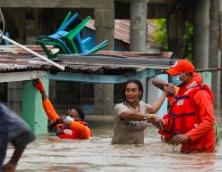


“Women of all races, social status, colors, and ages ought to be able to dream, feel blissful, protected, and safe. Women should not have to worry about being scorned through discrimination against them or be in constant fear of their lives being vulnerable to abrupt violence breakouts.”
However, as a country that is uniquely vulnerable to natural disasters compared to other nations in the Caribbean Islands, the Dominican Republic often experiences environmental conditions that exacerbate pre-existing gender disparities. Unpreventable hurricanes, rainstorms, floods, earthquakes, tsunamis, and landslides frequently damage houses of the citizens. Moreover, climate change has led to increased uncertainty within the agricultural industry, reducing profits for farmers and making girls more likely to drop out of school to support their families. Hence, despite the country’s ambitious efforts to solve the problem of gender inequality within its borders, environmental risks make such a goal difficult to attain.
The Dominican Republic has nonetheless made consistent efforts with the help of other More Economically Developed Countries (MEDCs). For instance, since 2018, to boost climate resilience and clearly address inequities between genders, the D.R. has been working on the Gender and Climate Change Action Plan of the Dominican Republic (PAGCC-RD), which works in close liaison with the United Nations Framework Convention on Climate Change (UNFCCC) and the Dominican Republic’s Ministry of Women. The plan's primary goal is to adopt gender-climate considerations in state institutions and fortify governmental participation in gender or climate change fields. Moreover, the Dominican Republic has received assistance from organizations such as the Green Climate Fund in order to organize workshops and educational activities with regards to climate change and its relation to gender equality. The D.R. recognizes that although there is an urgent need for such actions to assuage the gender-climate issues, the proper solutions cannot be attainable for the entire world, especially for those in need, without the cooperation and communication of all countries.
At the center of the country’s plan is the belief that with the lack of an international effort, the possibility of solving an international problem would also decrease. Therefore, the Dominican Republic proposes a resolution which kindly requests countries that are capable and willing to offer a

helping hand to assist in establishing fundraisers and donating to charities. Through the money raised, countries can start training certain individuals who volunteer to assign them as medical care workers.
In conclusion, the international community must take urgent action to promote environmental and disaster risk reduction policies. By adopting policies that promote renewable energy, reduce greenhouse gas emissions, protect natural resources, and promote disaster risk reduction, it can be possible to mitigate the negative impact of climate change and natural disasters. Efforts should be made to ensure that these policies are inclusive and take into account the needs of vulnerable populations. The private sector should also be engaged to promote sustainable development and disaster risk reduction. This delegate looks forward to collaborating with all member states to achieve these goals.

The current maternal mortality ratio in the Dominican Republic is 95 maternal deaths per 100,000 live births. This is higher than most Latin American and Caribbean countrie s and needless to say, higher than the sustainable development goal which aims to reduce all maternal deaths for each country to 70 per 100,000 live births by 2030. The Dominican Republic is making efforts to decrease its maternal mortality rate. However, the situation is complicated by the low economic standards within the country. Despite being classified as a middle-income country, one out every three people in the Dominican Republic still live below the poverty line. The country's economic difficulties contribute to a lack of proper healthcare services, which negatively affect maternal health. Moreover, gender inequalities contribute to early marriages and consequent teenage pregnancies. 32% of girls are married before the age of 18 and 20% give birth before 18 years of age. The high percentage of teenage pregnancies further complicates the matter of maternal health, as teenage mothers are more vulnerable to eclampsia and infections compared to their adult counterparts. Maternal mortality is not only a violation of women's human rights, but also presents a significant obstacle to the achievement of sustainable development goals.
“The Dominican Republic believes that to achieve gender equality and ensure the well-being of women and girls, maternal health must be given the priority it deserves.”
Fully aware and recognizing this urgent need to address the issue of maternal health in the global community, the Dominican Republic proposes possible solutions to resolve such a pressing concern. The D.R. also acknowledges that maternal global mortality rates could have started to decline, but the progress would not be universal. For example, women living in Less Developed Countries (LDCs),
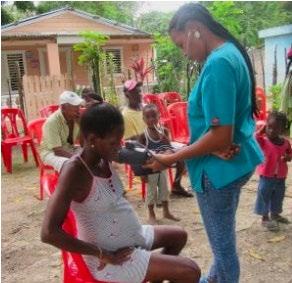
especially those in rural areas, continue to face significant barriers to access to maternal healthcare, resulting in preventable deaths. However, this impediment is exacerbated by the ongoing COVID-19 pandemic, which has disrupted healthcare systems and worsened the currently existing inequalities across the world.

Therefore, to address this critical issue, the Dominican Republic strongly recommends that the international community take measures such as, but not limited to: improving access to maternal healthcare, addressing social determinants of maternal health, combating gender-based violence, strengthening health or healthcare systems, and frequently promoting maternal health research. More specifically, governments should invest in maternal healthcare by increasing the availability of skilled birth attendants, obstetric services, and emergency obstetric care. This will require increasing funding for maternal health programs, especially in low-income countries or LDCs. Next, poverty, lack of education, and discrimination are major contributors to maternal mortality. Hence, nations should focus on addressing these social determinants of health, especially by investing in girls' education and promoting gender equality. Moreover, gender-based violence, including domestic violence and sexual violence, is a significant contributor to maternal mortality. Thus, governments must implement effective policies that protect women from violence and ensure that perpetrators are held accountable for their actions. In addition, healthcare systems need to be strengthened to provide high-quality maternal healthcare to all women. This includes investing in healthcare infrastructure, improving supply chain management, and training healthcare workers to provide effective care for everyone. This also means that research is necessary to improve the quality of maternal healthcare and identify best practices for improving maternal health outcomes.
Overall, the Dominican Republic calls upon all nations in this house to take urgent action to address the issue of maternal health. By prioritizing maternal healthcare, investing in girls' education, combating gender-based violence, strengthening healthcare systems, and promoting maternal health research, we can ensure that all women have access to high-quality maternal healthcare, regardless of their geographic location or socio-economic status. The D.R. would like to work in close liaison with fellow delegates of member nations to successfully achieve this goal.


There are several main problems that have arisen in Afghanistan which have not been solved in its recent history. Among them, durable peace is an extreme need for not only Afghanistan people, but also for the entire world. The delegate believes that the United Nations is vital in achieving any form of peace within it’s borders and internationally. In 2022, peacekeepers succeeded in supplying food to millions of Afghanistan citizens, reaching a total monetary allowance over One Billion US Dollars. Projects like these are necessary to reach sustainable development goals (SDGs) within this nation. However, the status quo of these United Nations groups is troubling. Peacekeepers often get kidnapped, targeted, or attacked. They also offer conditional aid that imposes on the powers of sovereign nations. Finally, their UN status allows them to ignore local cultural requirements, which causes disorder within individual nations.

The Islamic Republic Of Afghanistan is a nation which has felt the cold realities of wars for a very long time. Many terror groups living in Afghanistan or on the borders have caused conflicts in our nation. In addition, over the last twenty years, 46319 died during the American Occupation. On August 15, 2021, the Taliban took control of Afghanistan, and due to instability, many human rights issues are difficult to solve. Citizens are living through a harsh situation of rebuilding the nation. As these realities continue, the education rate, which can be evaluated with literary rates, is continuously decreasing. While the literacy rate of the average Muslim Nation is 68.5%, the literacy rate of Afghanistan is 37.27%. The delegate believes that these general deficiencies are closely related to international security.

The peacekeepers’ role is to protect civilians, actively prevent conflict, reduce violence, strengthen security and empower national authorities to assume these responsibilities. The delegate would like to suggest clarifying the role of individual peacekeepers and their specific plans within each nation. The power of available peacekeepers needs to be more limited. The delegate strongly believes that if military power is involved in peacekeeping, it would bring forth even more casualties in the process. Thus, Peacekeepers should be limited toward only humanitarian goals, and avoid conflict. Furthermore, Peacekeepers must be accountable for local laws and cultural understandings. A society cannot function if peacekeepers don’t allow for local traditions to proceed. Therefore, Afghanistan would like to request other nations to share sources, technology, and manpower to achieve this goal.
Afghan also believes that the vicious cycle of terrorist insurgency is repeating since the citizens’ lives aren’t secure. This cycle has dealt a major blow to the education and development of Afghan citizens. It has been decades since Afghans could get proper education during their youth. The lack of education is a major factor leading to wars from terrorist insurgency. Thus, the delegate proposes the United Nations to focus the peacekeepers’ roles to the branches of humanitarian aid and education. Currently, less than 3% of the UN’s budget toward meeting SDG goals in Afghanistan is allocated towards education. This needs to change in order to truly meet the ideal goal of peace. To create
“Facilitating UN Peacekeeper Reform”
stability within international security, every nation should contribute in obtaining prior SDGs, focusing on 1~5, throughout the world.

In the past, chemicals such as ricin and anthrax have been developed within Afghanistan borders and used as small scale biological weapons (BW). These new forms of terrorism must never be allowed to scale to a larger size and are fully condemned by the state of Afghanistan. It is this nation’s policy to reject any use of Bio-weapons from any governing body, terror organization, or military group.
With regard to biological weapons disarmament, we believe that the first step should be initiated by putting an immediate freeze on the production of new types of BW. That action should be followed by the gradual reduction of biological arsenals and, possibly, the ultimate destruction of all biological weapons. During the Second World War, more than 1,000 water wells in Chinese villages were poisoned to study cholera and typhus outbreaks. The horror and carnage caused by the use of biological weapons throughout Asia lead to the deaths of hundreds of thousands of innocent civilians. This is a vivid example of the destructive and indiscriminate effects of those weapons as they spread easily, and are often not targeting individuals.
Many nations in the world today are considering the dangers of BW and participating in the disarmament. However, international policies in place aren’t enough to actually prevent their development. Currently, there are no logical or practical opportunities to enforce restrictions or regulations in order to stop laboratories from experimentation on new biological diseases or chemicals. Our government’s current stance is that we need to seek effective policies which can reduce the possibility of any development, use, or release of these weapons that could lead to conflict or war. Afghan advocates for a UN-sanctioned policy that includes inspection if a harmful substance were spread throughout international society, and international restrictions should be placed on these nations regardless of their intention. The UN must stand firm against all widespread disease and investigate any possible source of BW. Moreover, efforts must be made to combat the development of BW by non-sovereign groups that may use them to commit acts of terrorism. Terror groups such as IS or AlQuaeda must be tracked and traced to ensure the safety of the citizens of Afghanistan and neighboring nations.
Secondly, the delegate believes the intensification of the arms race would destroy and destabilize international economic relations and lessen the possibility of restructuring the new international economic order. For example, the cost of a single new nuclear submarine is equal to the annual education budget of 23 developing countries with a total of 160 million children. Though it’s hard to measure the financial sources required in making BW, the delegate believes that this is a misallocation of resources that needs to be resolved swiftly for the betterment of the international community. The delegate recommends reorganizing the finance of security and armament and redirecting it towards humanitarian sectors in order to achieve lasting sustainability goals.


Since a vaccine for influenza and tetanus is preventing 3.5 million to 5 million dead, a vaccine development by international society is important to obstruct victims who will be caused by the future pandemic. However, although WHO's vaccination rate goal for covid-19 was 70% until 2022, low-income countries are hard to achieve even 4% of the vaccination rate as developed countries took over 50% of all vaccines. Also, 10 nations in the Caribbean have not achieved a 40% vaccination rate. The main factors of this issue are unequal supply chain of vaccines and defective domestic medical infrastructures. Dominican Republic which is a developing country has achieved a 58.6% vaccination rate because of these factors. Especially since the defective infrastructures has caused by economical scarcity and geological problems as harsh sierras, mere domestic efforts have a limited possibility.
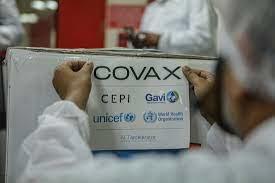


To overcome this situation, Dominican Republic has received assistance from PAHO which is an American agency of WHO. 6000 vaccine carriers are delivered from the US government through this program. However, people in the countryside have not taken any vaccination because of a defective storage and supply system in the country. Indeed, farmers have lost 30% to 50% of crops because of a scarce cold chain before the pandemic. Thus, international society should cooperate to improve medical independence and the foundation of developing countries. Additionally, Dominican Republic has used a coronavac vaccine which can be stored in a normal refrigerator to improve a domestic cold chain. Practically, 95% of imported vaccines were coronavac vaccines in 2021. However, as 80% of citizens are living in a mountain range and transport takes up to 6 hours, coronavac has not contributed a lot to vaccination.
Therefore, this delegate proposes to support manpower and equipment as an extension of COVAX which is being conducted by the UN. In detail, volunteers who have medical expertise from WHO and developed countries are needed to vaccinate developing countries' citizens by cooperating with domestic workers. If medical workers directly vaccinate by using delivered vaccines by COVAX, a weak domestic system will be able to be improved. For instance, PAHO has reduced the time of transporting vaccines and increased the vaccination rate of DR by mobilizing healthcare workers. Since simply delivering vaccines is invalid because of scarce domestic abilities to store and supply vaccines, manpower would be helpful a lot.
“An extension of COVAX, a breakthrough in the current situation”
“ If vaccines are managed in a proper environment, the shelf life of vaccines will become longer and wasteful duplicate supports could be prevented.”
Also, domestic and foreign workers with practical experiences will become fine human resources of the motherland in the next pandemic.

Additionally, this delegate argues to add items such as vaccine carriers or refrigerators to the COVAX supplies. Since medical workers are too deficient to manage all regions, storage equipment is needed to enhance developing countries' independence. For this, prior support countries of COVAX are suggested to share other items with vaccines. If vaccines are managed in a proper environment, the shelf life of vaccines will become longer and wasteful duplicate supports could be prevented.


As climate changes are increasing, primary ports are being destroyed. Since trading through ports charges 80% of the whole world's trade volume and 60% among them are linked with developing countries, developing countries have been highly damaged by climate change. For instance, the risks of tsunamis and flood are increasing, and the loss of Caribbean nations because of the hurricane was 320 billion dollars in 2017. Because of coastal disasters, trading between Dominican Republic and the Americas becomes unstable. Dominican Republic also has experienced import problems because of a Texas power crisis and 4 times of hurricanes in US in 2021. Also, according to UNCTAD, a digitalization of a supply chain has increased rapidly, and it is causing the isolation of developing countries including Dominican Republic.
To overcome supply chain issues and protect citizens from famine, DR signed an Alliance for Development in Democracy (ADD) with US, Costa Rica, and Panama in July 2022 to share successive practices of a supply chain. Additionally, Dominican Republic has contacted to nutrition service program of WFP, and over 1300 healthcare centers have taken food supplies from it. However, because of high dependence on imports and climate changes on major ports, still 13.61% of people aren't taking enough food and 1/10 people are in extreme poverty.
Since climate change is getting worse, variables of a maritime supply chain and famine are being increased. Indeed, 200 million people who are in food insecurity have been augmented for 3 years since 2019 because of supply chain issues. So, this delegate proposes that developed countries need to share parts of products as an extension of the Tech Access Partnership(TAP) which is conducted by
“Previously supported product information and technical guidance would be used properly when parts are delivered.”
the UN, UNCTAD, and WHO to improve low-income countries' economical independence. Previously supported product information and technical guidance would be used properly when parts are delivered. This delegate believes that transporting parts that are donated by developed countries would be helpful for low-income countries. Also, supporting countries will be able to exploit new markets when they start to receive a little price for donating parts and technologies.
Additionally, this delegate urges to form a new platform that provides public information on digital trading which is similar to UNSD. Because of the digitalization of trade, the gap between developed countries and developing countries is being increased. Since while Northern America and other developed countries produce domestic animal, and vegetal products over 60g/cap/day, developing countries cannot achieve it, the gap can have a major impact on life. Thus, a public platform is highly needed for a balanced supply chain. This delegate proposes ITU, UNCTAD, CSTD, and WFP to cooperate in launching a platform and providing basic internet infrastructures for low-income countries. Especially since ITU has selected an ITU-D(Development sector) and supported ICT infrastructures, traders in low-income countries also can be able to access this platform through the backup. Plus, sharing information about trade among developed countries will contribute to solving present supply chain issues and leading partnerships and technical cooperations.





Starting from the liberation of Korea, the number of tuberculosis patients increased rapidly due to poor working conditions, residential conditions, lack of nutrition, and various pollution in the 1950s and 1960s after the Korean War in 1950. At that time, tuberculosis was estimated to kill an average of 300 people a day. In the 2000s, infectious diseases such as SARS, H1N1, MERS, and COVID-19 were damaged not only in Korea but also around the world.
The Republic of Korea recognizes that it is essential to prevent diseases from spreading across borders. The Ministry of Health and Welfare of the Republic of Korea said, "Today, global health security cannot be achieved without close cooperation from all countries," and the Republic of Korea is willing to participate in appropriate financing as a donor country. The Ministry of Foreign Affairs and the Ministry of Health and Welfare signed a memorandum of understanding with the "Bill & Melinda Gates" foundation on August 16, 2022, to strengthen international health security and raise health inequality in terms of financing global health. Also, Saudi Arabia and the UAE are strengthening cooperation with Korea in the health sector, including the COVID-19 response.

Increasing international health-related spending on government development assistance in each country, and investment by private foundations are also increasing. Based on this, it is important to form a cooperative relationship with companies/foundations/research institutions to achieve multilateral health cooperation. It


“It is important to form a cooperative relationship with companies/foundations/research institutions to achieve multilateral health cooperation.”
should expand partnerships with health organizations such as the Global Fund, CEPI, and the GAVI, highlight the importance of multilateral health cooperation in ODA policies, and promote exchanges.
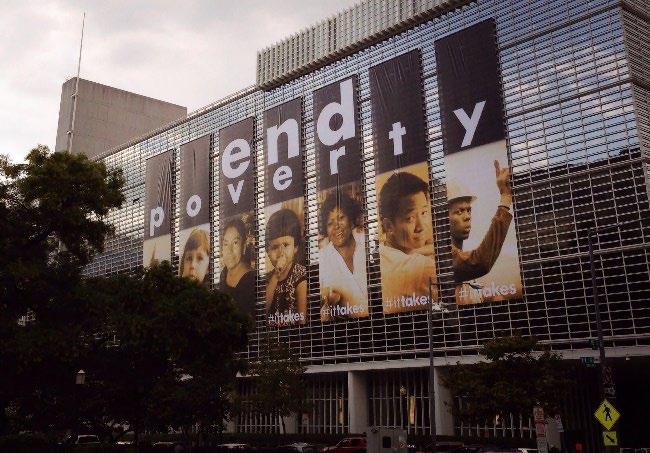
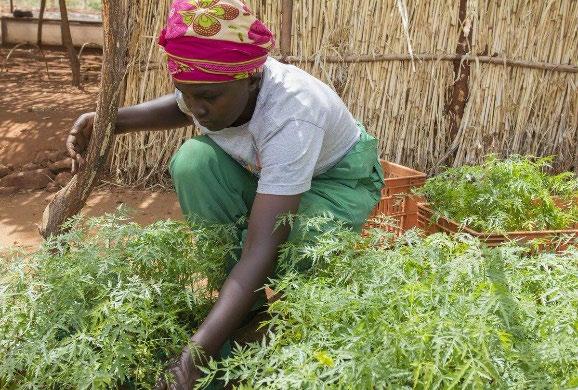

Since the 1997 financial crisis, the need to have an institutional foundation for low-income families to support themselves is increasing due to deepening income imbalances and concerns over the inheritance of poverty. The UN announced the role of microloans to fight poverty in Resolution 52/194 of the 1997 General Assembly, and microcapital loans are implemented and operated in "Joyful union" and "Social Solidarity Bank" in Korea. In 2018, the Financial Services Commission announced an inclusive financial policy plan that includes easing the financial burden on the working class, customized support for young, middle-aged, and elderly, strengthening protection of vulnerable debtors, and strengthening social responsibility in the financial sector.
The Republic Of Korea knows the need to gradually expand the microcredit system. Based on the experience that the ROK has grown from the position of the beneficiary country to the position of the donor country, it is expected to be able to provide help related to economic support. The reason why small loans fail to meet expectations and generally fail is because of the structural aspect of stagnation if continuous donations are not raised. In order to overcome this and achieve sustainable development, small loans should not have the character of "financial welfare" and should be a project that generates social value and financial profit at the same time as social finance. Noting that the qualitative and quantitative development of microcredit institutions and their capacity to reach marginalized groups requires the provision of an enabling environment, including a policy framework for the financial sector, as well as linkages to the formal financial sector, according to the United Nations General Assembly Resolution 52/194. Policy financial institutions and private microloan institutions must not compete but coexist in a complementary relationship.
“Practicing Inclusive Finance in Microloans to Expand Opportunities for the Vulnerable and Achieve Sustainable Development of Nations”
“In order to achieve sustainable development, microloans should be a project that generates social value and financial profit at the same time as social finance.”James Junghun Yang, Asia Pacific International School Economic and Financial Committee, Republic of Korea
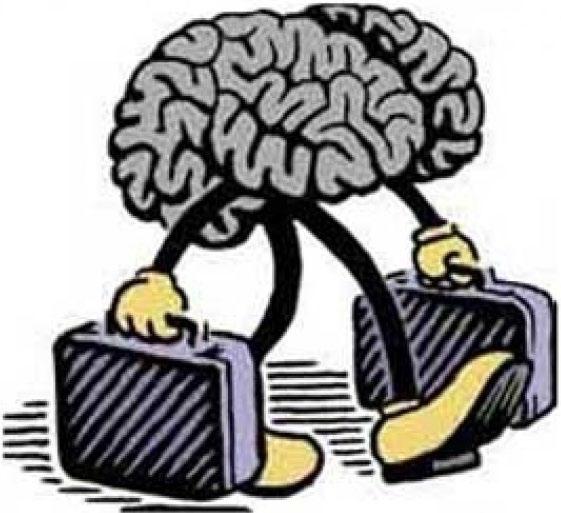


The outflow of high-quality human capital from developing countries to developed countries is called the “brain drain” and is emerging as a significant social problem in many developing countries. It is because brain drain causes developing countries to lose the ability to progress in economic growth. Developed countries mainly absorb a research labour force that is difficult to cultivate at the national level. Due to the social hierarchy, the number of such high-level personnel is limited, so it is one of the reasons that seriously are using hinders the development of developing countries.

The Republic of Korea also had a severe brain drain until the 1960s. A total number of 7,398 people studied overseas, and only 6% of these students returned home. The government went one step further from the passive policy of preventing brain drain and established government-funded special foundations. By giving them the same treatment as the developed countries, the government succeeded in high-quality human capital that had leaked abroad to return. Also, to prevent the brain drain of science and engineering talent, the Republic of Korea has a policy of allowing alternative services through expert research personnel. For reference, according to the Fragile States Index, Korea's brain drain situation is higher than other developed countries, but it has been steadily improving since 2006 till now.
This delegate believes that the Republic of Korea could be a great adviser for developing countries going through a brain drain. As the Republic of Korea also had the same problem with it and successfully overcame it, the Republic of Korea could give excellent advice to those countries. To fundamentally solve the brain drain, the Republic of Korea suggests that education that awakens a sense of patriotism in developing countries is essential. In fact, in countries with a strong sense of patriotism, leaked brains return to the country because they would be more likely to serve the country. Also, as the Republic of Korea used, giving them the same treatment as the developed countries by establishing governmentfunded special foundations will prevent brain drain and bring back

“To fundamentally solve the brain drain, the Republic of Korea suggests that education that awakens a sense of patriotism in developing countries is essential.”
excellent brains that had leaked abroad. The Republic of Korea also suggests a system of swapping. Developed countries could send some intelligent workers to developing countries to recover issues from brain drain, and developing countries could send some factory workers to developed countries. In this way, both developed and developing countries will benefit from this method. Developing countries could solve the problem of intelligent brain shortage, and developed countries could solve the problem of lack of human labour.

Inflation is a continuous and proportional increase in prices or a continuous and proportional decrease in the value of money over a period of time. There are many reasons for a decrease in the value of money, but usually, not a one-time increase in prices, but a continuous increase in prices, that is, inflation, is mainly related to the expansion of the money supply. In the words of Milton Friedman, "Inflation is always and everywhere a monetary phenomenon in that it can only occur when the quantity of money grows faster than the quantity of output." In other words, there is too much money, so the value naturally falls. In 2022, inflation occurred as all prices soared around the world.The reasons are the collapse of global supply chains due to pandemics and lock-downs, quantitative easing policies of each country due to pandemics, soaring demand due to gradual daily recovery, protectionist policies and export regulations, and rising raw material prices due to Russia's invasion of Ukraine.

“The government can reduce the level of inflation by directly reducing aggregate demand by reducing fiscal spending or suppressing public utility rate hikes.”
The stock market also collapsed rapidly as the overall economy stopped operating due to quarantine, online classes, and internetwork due to quarantine policies. The KOSPI fell by21.04% in 20 days. In particular, the speed of the stock market crash this time was different from the past. It took 83 days during the foreign exchange crisis and 55 days during the financial crisis to drop 20% from the peak of the KOSPI, but only 20 days during the current corona crisis. This meant that the KOSPI's decline had plunged at a faster rate than during past economic crises. Consumer prices rose 6% in June, the highest in 24 years. On August 25, the Bank of Korea raised its forecast for consumer price inflation this year to the early 5% range. At the same time, it lowered its expectations for annual real GDP growth this year to 2.6%.
First, the government can reduce the level of inflation by directly reducing aggregate demand by reducing fiscal spending or suppressing public utility rate hikes. In addition, the central bank, the Bank of Korea, can curb inflation through policies that reduce the money supply. The central bank's policies to reduce the money supply include selling bonds in the open market, raising the rediscount rate and the legal reserve requirement ratio. Second, companies should make efforts to improve productivity through efficient business management and technology development. Productivity improvement can absorb factors that increase product prices caused by workers' wages or raw material prices. Third, in the case of workers, they must demand a wage increase within the range that does not exceed labour productivity and strive to improve their technological skills. Fourth, when consumers anticipate further price increases and hoard for their own profit, this fuels inflation. Therefore, consumers should refrain from hoarding and lead a healthy and rational consumption life.


Numerous ethical concerns arise from the issue of the ethics of organ transplantation and donation, and we should strive to find a middle ground that can satisfy the demands and needs of society. Within the status quo, the ethics of organ transplantation and donation is brought more into light as the need for organ transplantation and donation increases for patients. Such patients can include those with kidney diseases, cystic fibrosis, heart defects, and much more. This also brings into the debate the individual will of citizens to donate their organs for the better good of society. However, organ transplantation and donations require not only the will of the donors to donate their organs but also ethical considerations, legislation, regulations, and government intervention. The United Nations’ third committee (social, humanitarian, and cultural) has approved 12 draft resolutions, including 8 regarding human rights and 2 regarding crime prevention over the years.

Specifically, within Switzerland, approved by 60% of voters in a referendum, organ transplants are legal as long as the deceased person consents to organ donation in their living. Within the status quo, it has been reported that approximately 1,400 patients are waiting for an organ transplant. It has been further notified that Switzerland has seen an increase in organ donation and transplantation in the previous year. Such a course of action can help the patients needing an organ to sustain their lives, with such ethical concerns regarded in its process.

Within this committee, we should aim for a shared/middle ground where mainly the donors and patients who receive the transplants can be satisfied under the consideration of ethical flaws. There are two approaches to such issues of the ethical perspective of organ donation and transplantation. Firstly, we must strive for a safe process of the trade of organs between the donor and receiver. This is important because such issues are related to the health and the donor's and receiver's life. Therefore, a transparent and well-established plan should be set up through regulations and legislation to ensure a safe organ donation and transplantation process. Furthermore, this can include having a more accessible organ donation system to reduce black markets for organ trading. This can therefore provide a more accessible and safer organ trade for citizens, ensuring the citizen’s safety and health. Secondly, the consent of the donor should be established in the process of organ trading. When donating organs, the donor's consent should be explicit and made when they are alive to provide their consent to donate their organs. With such a violation of the consent of the donor, such an issue can cause significant controversies and social backlash towards the government and also violate the rights and peace of the families of the deceased; therefore, should have clear regulations and policies regarding the consent of the donor and the consequences when such consent has not been regarded.
Science has always been an important factor in society and its development. Especially within modern-day society, science is one of the most vital factors in global industry. Science is crucial in the development of society and utilized for the sake of profit and benefits of individuals and corporations, as well as states. Therefore, the competition in the ownership and development of science only increases day by day. However, science is not a field that only impacts individuals’ and corporation’s needs and benefits, but also is a field that can improve and improve our society and world as a whole. Therefore, this comes into the questioning upon the ownership of science, and rather the shift of focus of calling in the topic of open science. Open science not only impacts everyday people, but also corporations, governments, and the world as a whole. The UN, more specifically, UNESCO has provided recommendations and suggestions upon the topic of open science, and has taken in account of academic freedom, gender-transformative approaches, and challenges of scientists and corporations in its process of constructing recommendations.
Within Switzerland, it has been shown over the years to put in effort to improve the circumstances of open science within Switzerland. For example, research projects that are funded by SNSF are mandatory to be self archived of publications and open access to monographs. Furthermore, such policy is also planned to be fully implemented in all Swiss higher education institutions (universities) by 2024. Furthermore, open science has been more actively promoted throughout the nation in the past couple years.
Firstly to solve such issues of open science globally, recognizing the pressing need to address issues affecting both people and the environment, such as poverty, health problems, educational access, growing disparities and inequality in opportunity, loss of biodiversity, land degradation, climate change, natural and man-made disasters, spiraling conflicts, and related humanitarian crises is needed.

Secondly, being aware of the critical role that science, technology, and innovation (STI) can play in finding solutions to these issues that enhance human well-being, advance environmental sustainability and respect for the planet's biological and cultural diversity. Furthermore, to promote sustainable social and economic development, and advance democracy and peace. Thirdly, given that more easily accessible and verifiable scientific knowledge improves the quality, reproducibility, and impact of science and thereby the reliability of the evidence required for sound decision-making and policy. As well as increased trust in science, for more open, transparent, collaborative, and inclusive scientific practices are also a more efficient endeavor is needed. Lastly, ensuring scientific knowledge, data, methods, and processes required to address current and upcoming global health and other crises to be freely accessible to all countries in accordance with the rights and obligations. This means by including the exceptions and flexibilities, under applicable international agreements. To add on, affirming the values of the Universal Declaration of Human Rights, particularly those included in Articles 19 and 27, as well as the 2007 United Nations Declaration on the Rights of Indigenous Peoples should be considered in this process.

The Dominican Republic has been suffering fro m the instability of animal husbandry due to inadequate climate issues despite its long development of the cattle, poultry, and pork industry and the importance of livesto ck. The livestock industry is responsible for 14.5% of h uman-created greenhouse gases while contributing to 1 7% of the world’s consumption. The World Bank has b een investing US$1.9 billion in sustainable livestock seeing its importance and the Livestock Environmental Assessment and Performance Partnership has been running since 2010.

Hurricanes; Fiona(2022), Irma(2017), and Maria(2017), caused by climate change, led to suf ferings like the destruction of milking parlour facilities, pens, fences and animal losses. 39 million pe sos worth of initial recompensation was made due to African Swine Fever(ASF) severely affecting th e pig population; 51,000 pigs had been slaughtered by August 25 according to Limber Cruz, the Dom inican minister of agriculture. Despite the difficulty with the livestock industry, sustainable developm ent has been the interest of the Dominican Republic and the global society. In addition to being a me mber of the Kyoto Protocol, our project FISH4ACP recognises and works for sustainable fishery valu e chains in Africa, the Caribbean, and the Pacific. The safe Agriculture/Food Export (SAFE) Project for the sustainable livestock industry had been under action for the last five years. Animal husbandry, being underdeveloped and underproductive, has been providing 13.4% of employment but only cont

“Animal Husbandry”
“This network would provide urgent financial aid and develop appropriate technology to stabilise the livestock population.”
ributing 5.8% to GDP.
The nation believes that international effort and help from international corporations are crucial in solving the crisis. That is, the United Nations’ SDG 2.4 should be better induced. The Dominican Republic proposes a resolution which mandates an international livestock network to be created. An international network should consist of a bloc of at-risk countries, nations with solid livestock industries, and experts in animal husbandry. This network would provide urgent financial aid and develop appropriate technology to stabilise the livestock population. The Dominican Republic would also welcome financial support for the bloc regarding disaster recovery, animal disease, and insufficient meat production. There are specific methods this delegate suggests the network should follow within the three main areas: sustainable breeding methods, feeding practices, and manure storage. Breeding methods such as selective breeding, crossbreeding, genetic engineering, and reduced use of antibiotics are possible solutions for sustainable breeding. Precision feeding, and feeding the livestock the exact amount of nutrients they need for optimal growth and health should be introduced with pasture-based systems, integrated farming systems, and organic farming to meet sustainability in feeding practices. Sustainable manure storage could be achieved by anaerobic digestion and methane capturing.
With climate change, the world has become prone to unpredictable natural disasters. The Dominican Republic is left vulnerable as well. Geoengineering is an internationally debated issue. As it came into the limelight as a solution to deal with urgent climate issues and investments and developments on geoengineering accelerated, the dangers of it arose as well, leading the U.N. to approve the Environmental Modification Convention. The artificial manipulation of climate is no solution to the source of the problem and brings the question of moral hazard.
being shared every 3 years under international interventions and conducted only for urgent issues.”
With 28.92 million tons of annual CO2 emission, the Dominican Republic makes a relatively low contribution to the world’s GHG emissions. The World Bank and the nation made further efforts signing an agreement to curb carbon emissions and an emission reduction program has been initiated. Regardless of his efforts, the Dominican Republic is exposed to multiple natural hazards including droughts, earthquakes, flooding, hurricanes, landslides, heat waves, tropical storms, and tsunamis. It is ranked 24th amongst 173 nations in vulnerability assessed by the world risk index. It has experienced 40 natural hazards in the last 30 years, caused economic damage of US$46.7 billion, and killed 1446 citizens. Although as a member of the Intergovernmental Panel on Climate Change, the Dominican Republic acknowledges the dangers that geoengineering holds,

“The solution to the appropriate use of geoengineering is technology
he also recognizes geoengineering as a response to urgent issues when needed. The nation saw the limitation of Disaster Risk Management in response to natural disasters.


The Dominican Republic believes that the solution to the appropriate use of geoengineering is technology being shared every 3 years under international interventions and conducted only for urgent issues. Issues of geoengineering arise from dependency and equality of access. All nations of interest would be free to develop geoengineering under their sovereignty. However, as geoengineering is challenging work that requires heavy investment and technology, not all nations that suffer from natural disasters have sufficient technology to develop it. To prevent a single nation from holding an “act of the god”, the technology must be open for sharing with other nations as well. This is to reduce the polarization of soft power and dependency of nations. Technology share can promote equality of access. To prevent abuse, legally binding sentences for geoengineering usage should be decided. The effect of geoengineering is still under investigation. Geoengineering is not a solution to natural disasters, only an alternative path. The backside which geoengineering can bring is still a world of mystery. The risk that the world would have to take; Societal impacts, Environmental impacts, cost, and permanence, outweighs the effects of geoengineering. Thus, geoengineering should only be conducted for urgent issues with no other efforts possible to be made.
The Republic of Korea has always been competent to ensure the trafficking of abusive drug use and assist the global community in annihilating the international drug market and the problems that come with it. However, this nation has faced many adversities regarding the impartial treatment of criminals facing or inhibiting jail due to drug use. With the rapid development of the internet and the increase of person-to-
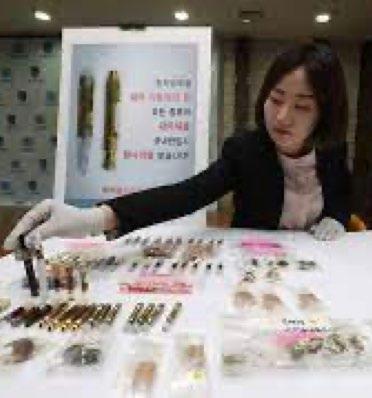

“The ROK Has Always Been Supportive of the Treatment of Drug Addict Patients in Confinement.”
“Not being a drug-abundant country, the people of ROK still think of drug addicts as criminals and not as patients to be treated.”
person transactions, the number of people using drugs illegally, including an astonishing percentage of 11% consisting of underage teens, has doubled during the past decade. Most of the drugs are from prescriptions, and people are continuously gaining access to drug sellers through social media, such as the widely-used message app KakaoTalk. Out of the total number of the arrested, including those concerned with abusive drug use, around 7% were women in 2020. Even at a significantly lower rate compared to that of men, there has been, and still is, a large demand for the impartial treatment of female inmates and others with special needs.
In regards to the treatment of drug addict patients in places of confinement, the government of ROK has been enthusiastic in funding and creating various programs and policies. For the prevention of the usage of illicit drugs, the Cannabis Control Act has been active since 1976 and was changed into the Narcotics Control Act in 2000. This law has been successful in that ROK has had a significantly low number of drug addicts and crimes compared to other countries. The Ministry of Justice has also made sure that the medical treatment of inmates is appropriately done, including an annual health examination identical to that of an average office worker, telemedicine programs, and consults with medical professionals. Classification reviews regarding the treatment of those in jail have also been prioritized, and inmates are asked about their lives since childhood, history of other crimes, former and current vocations, personal traits, mental state, and personal health needs. The classification system determines which facility to send the inmates to, how to treat them, and whether to treat them differently based on their mental or physical state. For former or current drug addicts, rehabilitation programs are available for those in and out of prison, with the government’s plan to increase funds in 2023. For the respect of everyone’s individual culture and religious beliefs, various religious events take place during confinement. Religious books and relics are also allowed as long as they don’t bother inmates, and one can stay in a designated religious room if he or she wants to.
Not being a drug-abundant country, the people of ROK still think of drug addicts as criminals and not as patients to be treated, according to the chair of the Korean Association Against Drug Abuse. This delegation believes that the education of the public, therefore ensuring the demand and understanding of urgency, is the most essential in creating change. Teens are the most vulnerable to drugs, especially the 9,000 juvenile prisoners in jail as of today. Methods of drug taking need to be noted in prisons so that secondary harm isn’t caused and that more of those addicted do not emerge. Despite the numerous policies already being implemented to ensure the fair treatment regardless of race or gender, ROK believes there needs to be a more specific classification for the health of women, including their menstruation and pregnancy. Pads, tampons, pregnancy tests, and other methods should be regularized to ensure a more impartial treatment of all. The ROK is supportive of the CND regarding the criminal justice reform, and is willing to discuss further during the assembly.
Image https://www.koreatimes.co.kr/www/nation/2019/12/251_280018.html


The Republic of Korea has always supported the CND’s actions and movements regarding the access and availability of internationally controlled drugs. And ROK itself is infamous for its strict laws regarding drug use. Korean Law prohibits Koreans from using drugs not only in the country, but abroad as well. However, with the increase of citizens going to other countries and experiencing drugs, and the travel ban lifting since the May of 2021, the estimated number of Koreans using drugs has increased to about 15,000 per year. The number of celebrities arrested for illegal use of drugs has also significantly increased, which caused many outbursts online. Through the numerous incidents shown on the front pages each year, the general public has had more exposure to drugs than they should have99. According to the National Police Agency (NPA), the app Telegram is the most commonly used program for drug dealers, since conversations are deleted automatically which makes it hard for police to track people down.
In regards to ensuring the access to internationally controlled drugs such as morphine, marijuana, fentanyl, and opioids, the ROK has reinforced various policies and laws. The Korean government decided as of 2023 to reinforce the social safety net of the trafficking of illegal drug users and their treatment. The drug prevention programs have been shifted from a supply-control perspective to a more demand-control one, and another rehabilitation center is to be built. Rehabilitation processes were previously limited to 12 months, but the duration of treatment is expected to become more flexible in relation to one’s needs and state. Drug prevention programs are to be focused on teens, as the percentage of teens affected by drug use is increasing by the year, and are scheduled to use metaverse or VR technology to ensure participatory sessions. ROK focuses on decreasing the overall number of those using drugs to ensure that those who really need medically can gain access to them. The Narcotics Control Act of 2011 has been exceptionally helpful in restricting the illegal use of narcotic drugs, marijuana, and psychotropic drugs. The act specifically regulates the possession or monetization of drugs, only including a selective few such as legally administered drug manufacturers, cultivators, exporters and importers, and most importantly, managers of narcotics, which are pharmacists working for a medical institution under the Medical Service Act.
“The press needs to be aware of the persistently rising problems directly or indirectly related to drug use, and has the responsibility to give voice to those who can’t get the medication they need in Korea due to its being banned."
The main problem in relation to the inaccessibility of certain medical drugs is the inappropriate uses of few. There has been an astonishing number of 3.56 million drug pills self-prescribed to doctors during the past 4 years, and there has been even more pills given out to people out of pity, inappropriately. However these incidents didn’t make it to the front pages, and people seldom know about them. The press needs to be aware of the persistently rising problems directly or indirectly related to drug use, and has the responsibility to give voice to those who can’t get the medication they need in Korea due to its being banned. There needs to be an increased sense of morale for not just oneself but for the general public, and especially for those with special needs regarding drugs. For this to be realized, the overall number of drug addicts needs to be decreased through a more thorough classification and examination system regarding the exchange of drugs both online and offline. The application Telegram also has to be examined and broken down to ensure that people don’t gain access to drugs online. The number of drug users cannot be exterminated; however, significant efforts can be made to decrease it. The ROK is willing to discuss possible resolutions with other delegates during the assembly.
Image http://www.avalontreatmentcenters.com


Even in 2022, women and girls have only a third of the legal rights that men and boys do. Issues caused by this misogyny and sexism are constant obstacles to human rights progress. The ongoing pandemic had caused the improvement in women’s rights to backtrack worldwide1, increasing the already dramatic gaps in education and employment. Although gender equality in Africa was enhanced in some aspects including the children's education rates2, it still has unsolved problems, evidenced by the increase in the number of cases of gender-based violence3 since the start of the pandemic and generally low women’s employment rates.4 Algeria thinks it is imperative that


“International Cooperation Needed for Women’s Empowerment”
“It is no doubt that educational and professional empowerment for women and girls is an international issue. Thus, solving this problem through international cooperation is necessary.”
the human rights council addresses these pervasive problems and comes up with meaningful and expansive solutions.
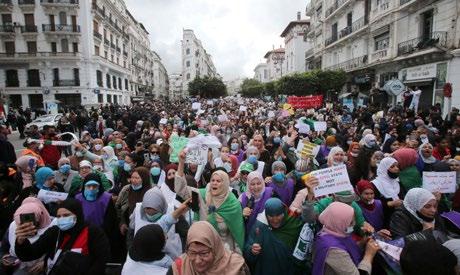

Algeria is in a state of progress in education but has some limitations on women’s pursuit of professional careers. Since Algeria’s independence, one of its primary goals was to provide education without sex discrimination. Its efforts to offer education brought positive results. Recent reforms to education laws made education for children between 6 and 15 years old mandatory and free of charge.5 Today, almost all boys and girls within the age range are enrolled in school.6
Moreover, the gender gap is reversed in higher education7, as more girls and women attend high school and university. There also have been governmental efforts to improve women’s professional empowerment. For the past years, policies were created to address gender equality; women can choose their profession by law, and forms of gender-based violence such as domestic violence and sexual harassment in public spaces are criminalized in the country. However, despite the efforts to ensure equality in career choice and education, women’s professional empowerment is still showing relatively low performance. As of 2020, women spent 21.67% of their time on unpaid domestic work, much higher than 3.75% of men. The proportion of women in managerial positions was low(8.36%) as well.8 Regardless of national law, the professional participation of women is still often discouraged in society.
It is no doubt that educational and professional empowerment for women and girls is an international issue. Thus, solving this problem through international cooperation is necessary. Algeria, as part of the Arab nations, is aware of how women’s rights to education and professional work need much improvement in this group of nations, often because of societal expectations based on religion. Algeria proposes a resolution that expands educational programs for women in the Arab countries so that they can better assimilate into professional work. The need for professional education was much felt since Algeria’s now-dropped quota system in the government led to women being elected to 30% of the seats in parliament but received backlash for their lack of experience in political leadership.9 To prevent similar failures in policies created for gender equality, the proposed program would include education in technical skills, business, and leadership skills needed in professional work.
Since the formation of various Kurdish insurgent groups in the 1970s, there has been consistent tension between these groups and the governments of Turkey, Syria, Iran, and Iraq. They also have been subject to fighting with the Islamic State(IS). The Kurdistan Worker’s Party(PKK) has carried out insurgencies against Turkish authorities since 1984 and has been fighting for greater rights to declare an independent Kurdish state. This conflict has been going on for a long time and there are some serious concerns about human rights abuses and terrorism in the conflict.
Human rights concerns have been raised from both sides: there has been violence against civilians at the hands of governments and terrorism by Kurdish groups. The ongoing conflict involving Kurdish forces has led to the killings of at least 6,366 people.11 In addition, the continued clashes have led hundreds of thousands of people to be displaced or become refugees.12 There have been violent events such as the suicide bombing in July 2015 by militants of the Islamic State which resulted in approximately 30 Kurds killed and the car bombing led by the PKK in Turkey’s Izmir which resulted in two deaths. They were the causes of deaths, injuries, and displacements across States with Kurdish populations, civilians not exempt from harm. The UN has expressed concern over humanitarian issues in some Kurdish regions such as Northern Iraq, an autonomous region ruled by Kurds.13 Fights between Kurdish forces and terrorist groups including the Islamic State and ISIL led to the fleeing of 2 million people from ISIL attacks. Other human rights abuses include the systemic abuse of children, such as the recruitment of child soldiers by the PKK within Kurdistan14, as well as drug trafficking by both Kurdish and Turkish forces.
Algeria has no direct involvement with the Kurdish conflict and no significant population of Kurds in the country. However, Algeria expresses concern about the various types of human rights abuses that have been happening since the conflict began which affected civilians, and believes that there should be proper measures to minimize the harm done to civilians.
Algeria considers minimizing the adverse effects of the conflict by protecting civilians and youth the primary goal in this conflict situation. Algeria proposes a resolution that provides humanitarian aid to displaced populations including IDP and refugees, supporting them with basic needs and protection from further violence. The program would help displaced and refugee populations find solutions to their situation by helping them resettle in their original countries or settle down in their host countries. It would also provide education to children as they are especially vulnerable due to their likeliness of being out of education and lacking societal protection.

“Algeria considers minimizing the adverse effects of the conflict by protecting civilians and youth the primary goal in this conflict situation.”
15
References
1 “Covid-19: Rebuilding for Resilience.” UN Women – Headquarters, 14 Nov. 2022, www.unwomen.org/en/hqcomplex-page/covid-19-rebuilding-forresilience?gclid=CjwKCAiAkrWdBhBkEiwAZ9cdcCAo9AXcBeUaKwsObi8aXvM8QC_Ig4gjV8h4qupVG MZNfd1EgDzDLxoCgx8QAvD_BwE.
2 “Primary Completion Rate.” Our World in Data, 2020, ourworldindata.org/grapher/primary-completion-rateof-relevant-age-group.
3 “Home.” SIGI 2021 Regional Report for Africa | OECD ILibrary, 2021, www.oecdilibrary.org/sites/a6d95d90-en/index.html?itemId=%2Fcontent%2Fpublication%2Fa6d95d90-en.
4 “Female Employment-to-Population Ratio.” Our World in Data, 2020, ourworldindata.org/grapher/femaleemployment-to-population-ratio?country=DZA~LBY~TUN~AGO~NER~ZAF~MLI.
5 “Education System in Algeria.” Algeria Education System, www.scholaro.com/db/Countries/Algeria/EducationSystem#:~:text=Education%20is%20mandatory%20and%20free,school%20day%20is%206%20hours.
6 “Undata App.” United Nations, United Nations, 2021, data.un.org/en/iso/dz.html.

7 Saleh, Mariam. “Algeria: Students in Tertiary Education by Gender.” Statista, 12 July 2022, www.statista.com/statistics/1180709/number-of-students-enrolled-in-tertiary-education-in-algeria-by-gender/. 8“Country Fact Sheet: UN Women Data Hub.” Country Fact Sheet | UN Women Data Hub, data.unwomen.org/country/algeria.
9 Marwane, Ahmed. “Women and Politics in Algeria: One Step Forward, Two Steps Back.” The Washington Institute, 2021, www.washingtoninstitute.org/policy-analysis/women-and-politics-algeria-one-step-forward-two-steps-back.
10 “Algerian Women Hit the Streets Demanding Equal Rights - Region - World.” Ahram Online, 2023, english.ahram.org.eg/News/405601.aspx. Accessed 21 Feb. 2023.

11 “Turkey's PKK Conflict: A Visual Explainer.” Crisis Group, 29 Nov. 2022, www.crisisgroup.org/content/turkeys-pkk-conflict-visual-explainer.
12 Internal Displacement Monitoring Centre (IDMC) - Norwegian Refugee Council. “Turkey.” IDMC: Internal Displacement Monitoring Centre | Countries | Turkey | Need for Continued Improvement in Response to Protracted Displacement, 26 Oct. 2009, web.archive.org/web/20110131234512/www.internaldisplacement.org/8025708F004CE90B/%28httpCountrySummaries%29/66D21F80E3A69E41C12573220025 5E35?OpenDocument&count=10000.
13 “Un Gravely Concerned about Situation in Northern Iraq; Calls for Urgent Response [En/Ar] - Iraq.” ReliefWeb, 7 Aug. 2014, reliefweb.int/report/iraq/un-gravely-concerned-about-situation-northern-iraq-callsurgent-response-enar.
14 United Nations High Commissioner for Refugees. “Child Soldiers Global Report 2001 - Turkey.” Refworld, Child Soldiers International, 2001, www.refworld.org/docid/498805c428.html.
15 Tanis, Fatma. “Syrian Kurdish Refugees Say Kurdish Forces Tried to Prevent Them from Fleeing to Iraq.” NPR, 7 Nov. 2019, www.npr.org/2019/11/07/777183277/syrian-kurdish-refugees-say-kurdish-forces-tried-toprevent-them-from-fleeing-to. Accessed 21 Feb. 2023.
Despite the fact that Ghana is the first country in sub-Saharan Africa to gain independence from colonial domination in 1957, it is not a great place for women where even the belief of witchcraft was widespread. Since the adoption of the multiparty system in 1992, a slow increase of women in Parliament has been shown, yet the percentage of the occupied seats of women is significantly lower than that of men. Government has also signed the CEAD(Convention on the Elimination of All Forms of Discrimination) in 1986, which was adopted by the United Nations General Assembly in 1979. Moreover, Ghana first established The Ministry of Gender, Children and Social Protection (MoGCSP) in 2013 that deals with issues specifically pertaining to women. Girls of Ghana did not continue after receiving the basic education certification, and even the drop-out rate among girls at the elementary school level caused a great concern. The percentage of girls at the secondary-school level dropped considerably, and only about 17 percent of them were registered in the nation’s universities in 1984.

In 2018, Ghana ranked 140 in the world in the UNDP’s Gender Inequality Index, with a score of 0.592 (UNDP, 2018). In 2012, only 19 women occupied seats in Parliament, while 246 men occupied the rest of the seats but as of February 2021, 14.6% of seats in parliament were held by women, indicating a slight improvement yet much to improve. Also, women and girls aged 10+ spend 14.4% of their time on unpaid care and domestic work, compared to 3.5% spent by men still in 2018. This is due to the traditional belief that women are protected under the men and, thus, should not have responsibilities outside home. There are new growing threats as online networks have been used widely. Reports related to online child sexual exploitation and abuse increased from 750 reported incidents in 2016 to


“The Professional and Academic Empowerment of Women”
over 13,000 in 2020. Preliminary data suggest that these reports will go up more. Especially during the covid pandemic, the introduction of different work systems in dealing with the pandemic by employers have left some victims with their abusers or harassers, who are in positions of power to manipulate victims to carry out inhumane acts. In the area of education, the country has made strides recently with a near parity in both primary and secondary enrollment, particularly since the launch of a nationwide free secondary education program in 2017. At the tertiary level, a gender parity of 0.8 for gross enrollment is an indication that learning opportunities still favor men over women. In the labor market, two out of every three young women (aged 15–35 years) in Ghana are in vulnerable employment with low earnings and no access to formal work arrangements including decent working conditions and social security.

Ongoing programs that UN Women are in progress are support to the new Ministry of Gender, Children and Social Protection (Review of the National Gender Policy, promoting an Affirmative Action Bill, Gender Responsive Budgeting (GRB) and Institutional Restructuring), training for the participation of West Africa Women’s Organizations in the CSW, enhancing the leadership skills of adolescent girls and young women in Nkwanta North and South Districts, promoting women’s economic empowerment through work with women smallholder farmers to adopt good agricultural practises (GAP) and reduce post harvest losses.
During the pandemic the International Development Association (IDA) funded the Ghana Accountability for Learning Outcomes Project(GALOP); It supported in delivering remote education to an estimated 4.45 million students. In addition, the GALOP helped to develop a Learning Management System for online learning, as well as facilitate ongoing communications between students, parents, and teachers. Inspired by this idea, I think promoting ICT friendly environments for all in schools, workplaces, homes, social centers particularly for women will further enhance the various opportunities to learn. Also, my resolution to solve the gender inequality issue is to break the traditional stereotypes existing even now which blocks a further change that should be achieved. I would encourage Ghana to plan programs that cooperate with developed countries as students can feel the fair and natural gender equality by interacting with each other, a very effective experience to understand firsthand. While ongoing programs of UN Women are more concentrated on the ways to develop based on the situation they are in, fostering women to lead a new, important issue especially on environment will ensure women to extend their influence towards the new era.
Great portions of Kurdistan have experienced relative autonomy under the rule of the Ottoman Empire. After the Ottoman Empire collapsed during WW1 by Allied forces including Italy, France, and Britain, however, Allied forces separated the Ottoman Empire territory in a way that had created an independent Kurdistan. The Turkish National Movement, led by Mustafa Kemal, resisted occupation of Turkey by the Allied forces by bringing forth a different agreement called the Treaty of Lausanne, which defined modern-day borders and prevented the creation of a sovereign state of

Kurdistan. In opposition to this, a student group led by Abdullah Ocalan developed into the Kurdistan Workers Party (PKK), a Kurdish paramilitary insurgent group with the aim to create an independent Kurdish State that is within Turkey. A Turkish military coup banned political parties which caused the PKK to seek refuge in Syria and gain military forces. Attacks from the Turkish government and PKK continued even after the declaration of the ceasefire. The Dersim Massacre is one of the major conflicts between the Kurds and Turkish state: An armed protest by the Kurds in Dersim against a Resettlement law, resettling ethnic minorities and better assimilating them in 1937, resulted in the protesters being killed by the Turkish troops. As a result of this event, a constant attack of Kurdish rights continued such as banning speaking the Kurdish language, broadcast of Kurdish, and political parties that are ethnicity-based.
Recently there has been an acknowledgment and apology of the Dersim Massacre by Tayyip Erdoğan, the Prime Minister of Turkey. Erdoğan also introduced permitting Kurdish language classes after the grade four. In 2013, the Kurdish conflict in Turkey was considered to be resolved with the ceasefire including the disarmament and withdrawal of all PKK forces from Turkey and northern Iraq and discussions of legal and constitutional changes towards the recognition of human rights of the Kurds. Although there have been improvements in resolving the conflicts, the continuing issue between the Turkish government and PKK still exists. A rebellion broke out in several Turkish cities on the 6th and 7th of October 2014 with the Kurds accusing the Turkish government of supporting ISIS and not letting people send aid for Kobane Kurds. As tensions over Turkey's involvement in the Rojava-Islamist conflict in Syria rose, the Turkish Air Force struck PKK sites in Iraq. The negotiations and the truce were undercut by the Turkish state's concern over a rising degree of Kurdish autonomy in Syria and PKK opportunism. Soon after the attacks, violence erupted across the country, and since 2015, the conflict has killed over 4,000 people, uprooted over 300,000 inhabitants, and caused extreme political polarization in the Middle East. By 2022, the PKK force in Turkey had lost some of its military power, and the frequency and ferocity of their attacks had lessened. Because so many potential peacemakers are behind bars, attitudes have become more rigid on both sides, leaving little room for compromise.
The United Nations adopted the Resolution 688 of 1991, which condemned the “repression of the Iraqi civilian population in many parts of Iraq, including most recently in Kurdish populated areas, the consequences of which threaten international peace and security in the region” (Resolution 688). It also established Iraqi no-fly zones to protect humanitarian operations in Iraq. Several UN agencies and organizations, including UNHRC, UNICEF, UNESCO, the World Health Organization, and the World Food Programme, have been working to raise awareness of the violations of human rights that take place in the Kurdistan regions for many years.

My resolution to this dreadful conflict is to first cope with the main barrier which is the fear by nations containing Kurdish populations that they will lose territory, resources, and regional influence if they concede to the Kurdish people. This will also guarantee the safety of Middle East countries as well as the active support for the Kurdish people. Moreover, the creation of an international agreement to halt the suppression of cultural, political, and linguistic rights to support the Kurdish populations is imperative in adhering

to the UN Declaration on the Rights of Persons belonging to National or Ethnic, Religious and Linguistic Minorities. Another important reason why it is important in helping the resolution concerning the Kurdish-Turkish conflict is because a Kurdish culture that has its own identity and unique ethnicity should not be destroyed, rather continued throughout the history.
Yu-Chien Chang, Cheongna Dalton School United Nations Environment Programme (UNEP), Republic of Korea

Every year, the global livestock industry produces 7.1 gigatonnes of greenhouse gas, which is equivalent to 14.5% of all greenhouse gas emissions (FAO). In 2018, the livestock industry of the Republic of Korea emitted 11 million metric tons of greenhouse gas, and the Hanwoo (Korean cattle) production was the primary contributor the emissions, producing CH4 (methane) from enteric fermentation, NO2 from manure management, and CO2 from onfarm energy use (Febrisiantosa). Reducing livestock production would be the easiest way to decrease greenhouse gas emissions, but the sector contributed to 30% of the ROK’s agricultural economy, so the ROK made technological approaches to reducing the field’s greenhouse gas emissions.
In efforts to reduce the country’s greenhouse gas emissions, the ROK enacted the Carbon Neutrality Act in 2020, pledging to reach carbon neutrality by 2050. Specifically for the animal husbandry industry, the act called for a 30% reduction of carbon emissions. Some key initiatives for the reduction included transitioning to low-protein, low-methane animal feed, introducing smart ranching technologies for higher livestock productivity, reducing the use of animal sewage for liquified manure production, and developing new forests to absorb greenhouse gas (The Government of the Republic of Korea). Out of all these initiatives, the mandatory transition to low-protein feed received the most attention because the enteric fermentation of Hanwoo (Korean cattle breed) cattles alone was responsible for 5 of the total 11 MMT of livestock carbon emissions. Low protein feeds reduced nitrogen in the initial feeds by 13%, and decreased methane emissions from enteric fermentation by restricting the growth of methane-generating bacteria in the Hanwoo cattles’ intestines. In addition, the feeds produce less sewage, reducing the emission of other greenhouse gasses including ammonia and nitrogen (Mcguire).
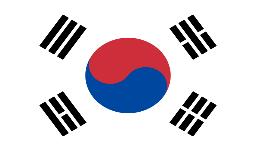
“If the international livestock industry adopts the low-protein feed practice, it would be able to reduce a significant amount of methane emissions”
Though the real outcomes of the low-protein feeding policy are yet to be seen, it is projected to show a significant reduction in livestock carbon emissions, close to 30% to meet the 2050 Carbon Neutrality goal. If the international livestock industries all adopt the low-protein feed practice, they would be able to reduce a significant amount of methane and other greenhouse gas emissions, therefore contributing to delaying global warming. Thus, the ROK proposes a resolution that recommends countries to adopt the low-protein feeding practice. However, transitioning to the practice may be financially burdensome to local farmers because it requires purchasing new ingredients. To incentivize farmers for the low-protein transition, the ROK suggests governments provide subsidies or grant financial support in collaboration with the NGOs that support sustainable animal feeding practices such as the Forum For the Future.
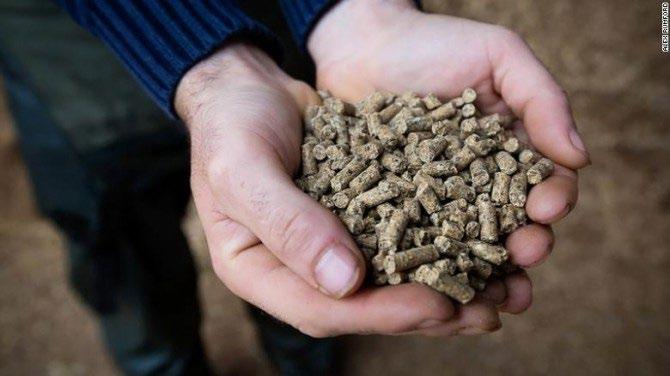
The ROK also proposes a resolution that recommends governments to provide scholarships for students enrolled in agricultural colleges. Agricultural colleges offer degrees and classes in agricultural business, plant and animal sciences, as well as environmental sciences, but recently, the admissions for the colleges have shown dramatic declines internationally. If governments provide scholarships or collaborate with NGOs that provide scholarships to agriculture students such as the ICRA financially support those attending agricultural colleges, countries would be able to produce more experts in the field and further advance research for innovative technologies for sustainable animal husbandry.
Works Cited
FAO. “FAO - News Article: Key facts and findings.” Food and Agriculture Organization of the United Nations, https://www.fao.org/news/story/en/item/197623/icode/. Accessed 31 December 2022.

Febrisiantosa, Andi. “Greenhouse gas emissions from cattle production sector in South Korea.” Repositori, http://repository.pertanian.go.id/handle/123456789/2789. Accessed 31 December 2022.
The Government of the Republic of Korea. “2050 Carbon Neutral Strategy of the Republic of Korea Towards A Sustainable and Green Society.” 2020.
Grossi, Giampiero. “Livestock and climate change: impact of livestock on climate and mitigation strategies.” Animal Frontiers
“Home.” YouTube, http://www.science.org/content/article/grass-fed-cows-won-t-save-climate-report-finds. Accessed 31 December 2022.
Mcguire, Tymothy. “Report Name:Korea's Low Carbon Green Growth Policy and Transition to Low Protein Feed.” USDA Foreign Agricultural Service, 23 May 2022, https://apps.fas.usda.gov/newgainapi/api/Report/DownloadReportByFileName?fileName=Korea%27s%20Lo w%20Carbon%20Green%20Growth%20Policy%20and%20Transition%20to%20Low%20Protein%20Feed_ Seoul_Korea%20-%20Republic%20of_KS2022-0014.pdf. Accessed 31 December 2022.
Quinton, Amy. “Cows and climate change.” UC Davis, 27 June 2019, https://www.ucdavis.edu/food/news/making-cattle-more-sustainable. Accessed 31 December 2022.
For the past decade, the ROK has been suffering with frequent droughts and unbalanced hydrological cycles as an effect of global warming and climate change, which harmed the crops and soil, ultimately raising concerns for national food security. Geoengineering including solar radiation management (SRM) is a growing field of technology that is visioned to quickly and effectively delay global warming by reflecting the incoming sunlight, and is asserted by some researchers to be ultimately helpful in combating the current agricultural and environmental challenges in the ROK. However, SRM is extremely risky. One of the greatest concerns of the ROK is that SRM may deplete the ozone layer, change weather patterns, and even bring severe droughts in Asia and Africa (Climate Analytics). If the crops are destroyed by the SRM-caused droughts, the food security crisis would not only be a problem in those regions because much of the world’s food source depends on Asia and Africa. Despite the possibility for a greener global climate, the ROK fears the unwanted possibility for droughts and detrimental disruptions in its environment, and therefore, disapproves of the usage of the SRM.
In 2020, the ROK created a long-term goal to reach carbon neutrality by 2050 in efforts to reduce greenhouse gas emissions and delay global warming. The plan included policies and potential technologies from a variety of fields, and yet, the SRM projects were not mentioned on the plan. The ROK is far behind research in SRM technology compared to other leading countries in the field such as the US and China, which are already preparing to launch their first projects, and realistically cannot proceed much research independently due to its lack of financial support. SRM projects, specifically the stratospheric aerosol injection technology, are extremely expensive, being estimated at a budget ranging from 7 to 72 billion USD (Smith). The ROK has already spent over 5 billion USD for the Carbon Neutrality Act (Donga Science), and realistically, cannot sufficiently fund such costly SRM projects. The lack of advancements in SRM research leaves the ROK extremely vulnerable to potential negative impacts or even climate terrors of possible projects conducted by the more advanced countries in the field.

To prevent dangerous SRM actions from the more advanced countries, the ROK proposes a resolution that mandates international agreement for the implementation of SRM projects. This resolution would not only restrict independent implementations with possibly dangerous effects including climate terrors, but also bring multiple perspectives into the projects’ launches. If certain regions are open to potential harm due to the projects, the countries may negotiate for safer alternative technologies for the SRM or devise ways to restore the potential climate damages as a group, seeking financial aid from NGOs supporting SRM such as but not limited to the Degrees Modelling Fund (DMF). In case the committee decides upon the usage of alternative technologies, the ROK is willing to make substantial

“ROK fears the unwanted possibility for droughts and detrimental disruptions in its environment”
contributions because it is one of the largest producers of semiconductor, which makes it one of the most technologically advanced countries. The ROK believes that although all SRM projects contain potential for harmful effects, gaining international consent to the enactment would at least enable thorough consideration and preparation for the worst situations in the global community.
Works Cited
Climate Analytics. “Why geoengineering is not a solution to the climate problem.”
Donga Science. “"탄소중립 내년 실질예산 삭감...전 정부 반대정책 매몰."” 동아사이언스 , 30 September 2022, https://www.dongascience.com/news.php?idx=56469. Accessed 31 December 2022.
Nicholson, Simon. “Solar Radiation Management.” Wilson Center, 30 September 2020, https://www.wilsoncenter.org/article/solar-radiation-management. Accessed 31 December 2022.

“지구 온난화의 대안 지구 공학 – Sciencetimes.” 사이언스타임즈 , 8 July 2021, https://www.sciencetimes.co.kr/news/%EC%A7%80%EA%B5%AC-%EC%98%A8%EB%82%9C%ED%99 %94%EC%9D%98-%EB%8C%80%EC%95%88-%EC%A7%80%EA%B5%AC-%EA%B3%B5%ED%95% 99/. Accessed 31 December 2022.
Smith, Wake. “The cost of stratospheric aerosol injection through 2100.” 2020. IOP Science Environmental Research.
Temple, James. “The US government is developing a solar geoengineering research plan.” MIT Technology Review, 1 July 2022, https://www.technologyreview.com/2022/07/01/1055324/the-us-government-isdeveloping-a-solar-geoengineering-research-plan/. Accessed 3 January 2023.
Zizhu, Zhang. “Has 'geoengineering' arrived in China?” China Dialogue, 9 November 2020, https://chinadialogue.net/en/climate/how-to-supervise-geoengineering/. Accessed 3 January 2023.
“Although a significant decrease in deforestation existed from 2009 to 2018, under the Bolsonaro administration, law enforcement for preventing deforestation has weakened. The loosened regulation has opened the indigenous land for exploitation.”

Being abundant with natural resources, the Amazon rainforest has been sought for cattle ranching, logging, and mining. Although a significant decrease in deforestation existed from 2009 to 2018, under the Bolsonaro administration, law enforcement for preventing deforestation has weakened. The loosened regulation has opened the indigenous land for exploitation. For instance, the Action Plan for Prevention and Control of Legal Amazon Deforestation (PPCDAM) was largely neglected, which exposed the indigenous population to violence caused by illegal ranchers and miners. Since the indigenous peoples live on forest resources, the displaced people are suffering from malnutrition. At the same time, the indigenous peoples are infected by the pollution in the fields and rivers. In response to the violation of indigenous rights, indigenous peoples’ organizations have been protesting the protection of the indigenous-occupied lands. As a member of UNFCC 5 and REDD+ 6. the Republic of Korea is concerned about the current situation and believes that deforestation of the Amazon rainforest should be banned to secure indigenous rights. 7
More than 60% of the Amazon rainforest belongs to Brazilian territory. Effective land use in the Brazilian Amazon would significantly improve the situation of Amazonian forests. Being the world’s largest exporter of beef, Brazil has been responding to the world’s want of meat. The consistently increasing demand for beef is contributing to the expansion of illegal deforestation occurs for cattle ranching. Similarly, soy production is also one of the drivers of Amazonian
4 Picture: www.bostonglobe.com/opinion/2019/08/26/the-amazon-fire-indigenous-rights-can-help-putout/QylcSQzyPPh52cYzwEvVSO/story.html
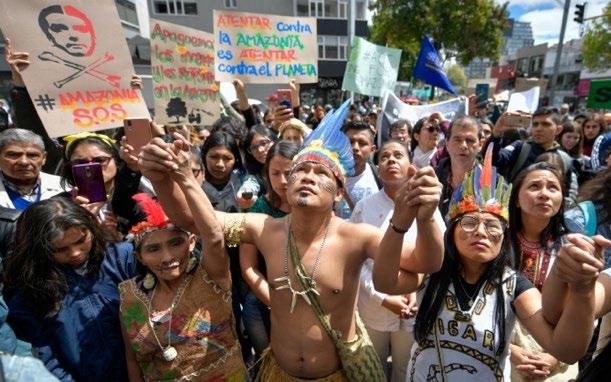
5 United Nations Framework Convention on Climate Change



6 Reducing Emissions from Deforestation and forest Degradation
7 Picture: rainforests.mongabay.com/amazon/amazon_destruction.html, www.washingtonpost.com/business/2019/08/27/how-beef-demand-is-accelerating-amazons-deforestation-climate-peril/
deforestation. The Republic of Korea has been relying on soy imports from Brazil, the second-largest soy exporter of Korea. In 2022, the Republic of Korea imported Brazilian soy about 4 times that of domestically produced, receiving 540,000 tons while about 130,000 tons were from local. The Republic of Korea shares responsibility for deforestation within the Amazon region as a consumer of the products that may have been inappropriately produced.
Reconfirming that illegal production from Amazon is the result of the global demand for meat, soy, gold, and oil, the Republic of Korea suggests the multi-dimensional collaboration of countries and industry leaders. The Republic of Korea offers that an inter-governmental moratorium for cattle ranching and gold mining in the illegally deforested Amazon should proceed. At the same time, the criminal ecosystem in illegal farming and mining should be eliminated with the cooperation of the local government and international forces. To effectively combat illegal deforestation, the Republic of Korea supports a resolution including the demarcation of indigenous territories. By specifying the indigenous regions, the indigenous populations can maintain their livelihoods and the regulation can be effectively operated. Keeping in mind the economic value of the Amazon rainforest, this delegate proposes the committee consider financing the affected economy of the countries near the Amazon basin. The government transfers employed during the Covid-19 pandemic left the Latin American governments with large debts. Funds for forest preservation and assistance from international organizations like World Bank and IMF would facilitate in actualizing the plans. The Republic of Korea is willing to deliver assistance in developing sustainable technology through ODA (Official Development Assistance) and proposing fellow DAC (Development Assistance Committee) countries to engage in facilitating sustainable development. This delegate, therefore, proposes a resolution that involves practical measures to keep indigenous rights by countering economic interests related to Amazonian deforestation and reinforcing the governance.
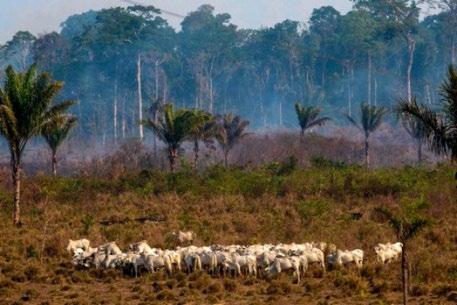

The Korean government has been maintaining a conservative attitude to the queer community. The most common two topics on LGBT+, same-sex marriage and acceptance of queer soldiers, are not
8 Picture: www.rd.com/article/how-the-rainbow-became-associated-with-gay-rights/

“LGBT+ Inclusion and Protection”
“The Republic of Korea emphasizes the rearrangement of the discriminatory government implementations to queer communities and promoting social advocacy for LGBT+. The Republic of Korea believes that inclusivity can be heightened when public and civil measures go together.”
addressed in Korea. Such as in 2020, a transgender woman soldier who received gender confirmation surgery was forcefully discharged from the military, since it regarded her change in the body as a physical handicap 9. In Korea, males must serve in the military, which makes queer acceptance in the military a significant issue. Influenced by the tradition of Confucianism, Korean society regards topics related to gender and LGBT+ rights as highly sensitive. Grounding on the disputable social background, the government is careful on publicly discussing queer issues. For instance, the guideline for 2025 of sexual education totally omits the content on LGBT. Queer community has been structurally discriminated throughout the history. Like other places in the world, discriminatory legislations are remaining in the Korean law system. The Prevention of Aids Act states, “a person who performs an act of carrying and spreading AIDS can be punished by imprisonment of 3 years at maximum,” which is a content stigmatizing queers and HIV/AIDS patients since MSM are the most susceptible to the contraction of the HIV. The Military Criminal Act 10regulates sexual interactions between same-sex soldiers even under agreement. To make queer-inclusive society, the legislative framework should be improved by revising unfair laws. 11
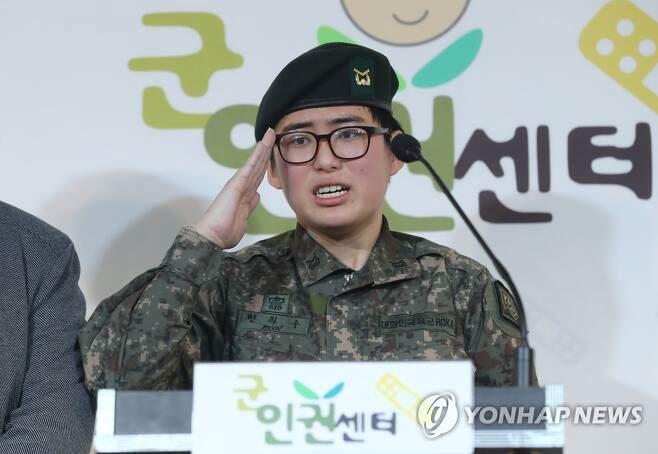
Although the Republic of Korea has signed on UNHRC resolution on “human rights, sexual orientation and gender identity”, discrimination based on sexual orientation and gender identity (SOGI) is still not prohibited. Anti-Discrimination Law proposed by president Roh in 2007 is in controversy because it includes contents of SOGI Receiving opposition from the conservative side, the legislation is still pending in the National Assembly. Fortunately, 4 members of Congress offered the bill again in 2020 and in the Congress Bill Review Sub Committee discussed on the submitted bill in December. Considering the report from the National Human Rights Commission 12, the public opinion is shaping to a more positive perspective. However, the public opinion is split in Korean society. Engaging in aggressive opposition rallies in Pride Parade (SQCF) each year, the conservative religious groups have been a long-time opposition LGBT+
13
The Republic of Korea emphasizes the re-arrangement of the discriminatory government implementations to queer communities and promoting social advocacy for LGBT+. The Republic of Korea believes that inclusivity can be heightened when public and civil measures go together. This delegate suggests member states start by decriminalizing LGBT+ individuals and ensuring equal treatment in the legal system, reinforcing the mandate of UNHRC. Wide-ranging equality
9 “SOUTH KOREA TRANSGENDER SOLDIER TO SUE OVER DISMISSAL.” BBC NEWS , 22 JANUARY 2020, www.bbc.com/news/world-asia-51204323.
10 “SOUTH KOREA SOLDIER: ‘CRIMINAL BECAUSE I’M GAY.” BBC NEWS , 27 SEPTEMBER 2017, WWW.BBC.COM/NEWS/AV/WORLD - 41400213
11 Picture of Byun Hui-soo, v.daum.net/v/20221201145230738.
12 National Human Rights Committee has announced that 88% of Koreans want a law ensuring comprehensive equality (2020), and 67.2% supports enaction of the pending Anti-Discrimination Law (2022).
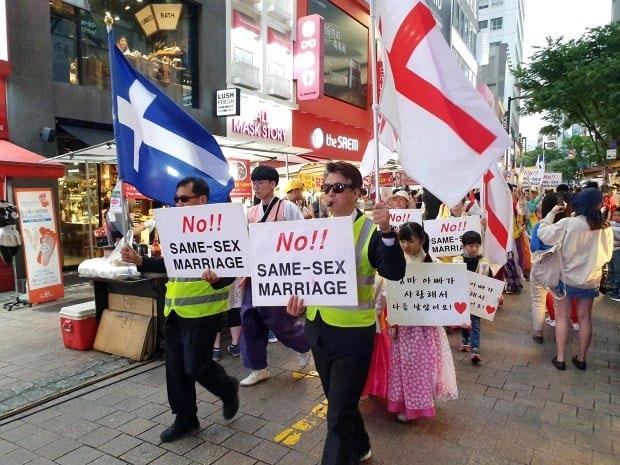
13 Opposition Rally, www.hankyung.com/society/article/201905315025i

laws should be strongly recommended by the UNGA 14 . The delegate of Korea also proposes government policies on HIV/AIDS prevention, testing, and treatment to be structured under UNAIDS. Not only AIDS treatment but also healthcare for marginalized LGBT+ individuals should become accessible. This delegate encourages a framework for the health of the LGBT+ community like ASPIRE 15
Since the enhancement of LGBT+ rights cannot be achieved solely by the government efforts, the campaigns should be organized in civil society to welcome individuals with different SOGIs. Affirming that education serves a critical role in upgrading queer acceptance, the Republic of Korea proposes to implement Comprehensive Sexual Education in each state and cooperate with professional organizations like GLSEN to construct an inclusive education environment. Deriving from Free&Equal initiative of the UN, this delegate advocates for campaigns using social media in cooperation with LGBT+ celebrities. The delegate of Korea also proposes the resolution to include supervision on the correct representation of LGBT+ in media with the assistance of GLAAD. This delegate believes that the protection of LGBT+ means recognition of queerness in our society.
After the outbreak of covid-19, more than 250,000people fell into poverty in the Dominican Republic. The statistic above clearly indicates the poor health response system of the nation. After gaining its independence from France, uprisings and internal instability continually led to creations of impediments in development. The immature growth of the public medical system has been deadly, as the Dominican Republic is going through various virus crises. During the past years, the republic has experienced numerous communicable diseases such as Cholera, Hepatitis, and Malaria, while failing to contain the infections successfully. The nation experienced the largest crisis due to the global Coronavirus pandemic, transparently revealing the need for dramatic reform in the medical system.

14 “Statement to the UN General Assembly Condemns Discrimination of LGBT people.” Equal Rights Trust, 19 December 2018, www.equalrightstrust.org/news/statement-un-general-assembly-condemns-discrimination-lgbt-people.

15 Acknowledgement, Support, Protection, Indirect discrimination avoidance, Representation, Evidence-gathering (ASPIRE)

“Financing global health in response to the modern crisis in the Caribbean.”
“ ⋯ transparently revealing the need for dramatic reform in the medical system.”
Resembling many developing nations, the Dominican Republic does not have enough budgets or medical foundations to sustain a stable healthcare system. As they face diverse problems such as high inflation, unemployment, and trade balance, only around 6 percent of annual GDP is invested in healthcare, which is a dramatically low rate compared to other nations. Although the United States government has donated “3,500 vaccines and 620 cold packs” (Pan American Health Organization, 2022), there is still a dramatic lack of resources such as masks or vaccines which eventually led to the suspension of fundamental Covid-19 measures.
Currently, Caribbean nations suffer from problems such as disease containment, and contamination of water and food. This is mainly due to the lack of basic foundations. The delegate proposes a resolution that mandates building systems through means such as producing beds, masks, and various medical supplies while investing in research and development of medical technology that will enable the containment and constraining of infectious diseases. In addition, as waterborne illnesses such as leptospirosis are common not only in the Dominican Republic but also in neighboring nations, the construction of stable water purification facilities is crucial for many nations.

The Dominican Republic also emphasizes the need for training medical officials.
Latin America and the Caribbeans are the regions with one of the lowest numbers of doctors. According to World Bank research, these areas currently have only 2.3 physicians per 1000 people, which is not enough to attend to the rising demand for medical support resulting from the ongoing pandemic. Solutions such as exchange programs, and increasedfunding and scholarship in high-class education can be long-term investments. Finally, the Dominican Republic proposes a resolution that includes increased supply and interest in the healthcare of the Latin American region by other nations and international organizations to create partnerships in diverse medical areas while containing deadly diseases from spreading domestically and internationally by means such as tourism.
Works Cited
Gonzalez, Nancie. “Dominican Republic.” Britannica, 2022, https://www.britannica.com/place/Dominican-Republic/Bosch-Balaguer-and-their-suc cessors.
“Physicians (per 1,000 People) - Dominican Republic.” The World Bank, 2022, https://data.worldbank.org/indicator/SH.MED.PHYS.ZS?locations=DO.
“The Dominican Republic Receives Cold Chain Equipment for Vaccines, Donated byUSA through PAHO.” Pan American Health Organization, 2022, https://www.paho.org/en/news/29-7-2022dominican-republic-receives-cold-chain-eq uipment-vaccines-donated-usa-through-paho.
Barria, Orlando. “Emergency Financing to Support the Dominican Republic’sCOVID-19 Response.” The World Bank, 2022, https://www.worldbank.org/en/results/2022/06/27/emergency-financing-to-support-the -dominican-republic-s-covid-19-response.
“Health Spending.” OECD, 2022, https://data.oecd.org/healthres/health-spending.htm.

A nation that is growing exponentially, but still has the majority of its citizens below the poverty level. The Dominican Republic’s development has been viewed asunstable and unsustainable for years. Based on trade, tourism, and agriculture, the middle class was growing slowly from the mid20th century. However, the lower income class, such as manual workers and agricultural populations has experienced economic impediments throughout the years. While wages remain the same, inflation and a tilting economy has led to a harder life. Cases such as the 2020 Dominican Republic protestsindicate the demand for reform and sustainable development of the nation.
Currently, the Dominican Republic is ranked as a moderate country that possesses a GDP that is higher than the average growth rate in Latin America. According to yearly reports made by the International Monetary Fund, the Dominican Republic’s GDP and PPP is all highly ranked on a regional level. The government’s privatization of companies and allowance of tax-free zones to be used as land for factories have also enabled development. Nevertheless, the economy has major defects that require immediate attention in promoting sustainability.
The first factor that prohibits sustainable development is overreliance. Currently, 10 percent of the Dominican Republic’s annual GDP is invested in trade and relationships with the United States of America. “Dominican Republic Exports to the United States was US $6.52 Billion during 2022⋯” (Trading Economics, 2021). In other words, the nation does not have enough relationships to perform diversification and trade of diverse resources. On top of that, the current inflation and skyrocketing interest rates in the US also have a direct effect on the Dominican Republic. Finally, the Carribeans are mostly an agricultural population that accounts for “5-18 percent of GDP in 20 countries in LAC…” (Roming, 2021). However, this industry has experienced a massive downfall since the Covid pandemic due to factors such as reduced trade. Therefore, the delegate suggests that other nations of the United Nations actively participate in international trade and relationships with the Dominican Republic, as it is more than ready to export agricultural items. In addition, the export of such materials will be able to benefit the lower class that largely relies on farming. The Dominican Republic also requests a creation of a regional microloan system to create stability in the LAC region while preventing over-depending on other nations. In this status quo, microloans will account greatly for breaking the glass ceiling of poverty and lead to a major shift in average income. The stabilization of the Dominican Republic and regional areas will not only benefit the nation but also others internationally. As the 21st century is an era with a lack of new markets, lively export and import will be able to take place in the Dominican Republic. Also, as the Dominican Republic is a huge supporter of cryptocurrencies such as BTT, NFT, and most importantly, TRX, global investment in the nation will be able to support the current dangerously swaying cryptocurrency market overall amongst nations.
Works Cited
“Dominican Republic.” Britannica, 2022, https://www.britannica.com/place/Dominican-Republic/Demographic-trends#ref54435
“Dominican Republic Exports to United States.” Trading Economics, https://tradingeconomics.com/dominican-republic/exports/united-states.
“Gross Domestic Product (GDP).” OECD, 2022, https://data.oecd.org/gdp/gross-domestic-product-gdp.htm.

“The Dominican Republic and Cryptocurrency.” Freeman Law, 2022, https://freemanlaw.com/cryptocurrency/dominican-republic-and-cryptocurrency/.
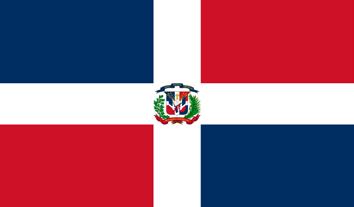
Seongwoo Ha, International Christian School of Lima World Health Organization (WHO), Dominican Republic
STDs, or sexually transmitted diseases, have drawn the attention of the world. The world even formed alliances all around the world such as PEPFAR, and UNAIDS to prevent STDs. Other significant figures such as Bill Gates, the creator of the Windows OS, supports India’s fight against AIDS according to the Bill and Melinda Gates Foundation. The STDs bring chronic symptoms, and many are their victims. It also claimed lives of many celebrities and loved ones, and the WHO should battle against them to end sufferings and deaths from the STDs.
The Dominican Republic, which has a deep tie with STDs, is eager to take part in stopping the spread of the STDs. The severity of the STD cases can be shown through the fact that the Dominican Republic scored, according to Wisevoter, 47th place in the most STD cases in the world. The Dominican Republic strongly agrees and supports the idea of stopping the spread and further creation of new STDs. It also has an alliance with UNAIDS, which is a branch of the UN that is determined to eliminate AIDS. Other alliances include PEPFAR from the United States, and COP22 shows this. The Dominican Republic on its own also has tried to stop the spread of the STDs since 1995 by passing an AIDS law.
Despite the world’s efforts to eradicate STDs by forming multiple coalitions and

“Preventing The Spread of STDs and the Dominican Republic”
“ThevictimsofSTDsare mainlyfromthelowerpartof thesocialpyramid”
cooperations, the world still has countless people suffering from them. To solve this problem, the world needs more forces that are directly for the suffering communities. For example, UNAIDS, a
branch of the UN operated through civil societies. However, this is not enough. The victims need special financial support from them. In an article written by Elizabeth Boskey Ph.D, STIs, or sexually transmitted infections, have a deep relationship with a person’s socioeconomic status. This indicates that the victims of STDs are mainly from the lower part of the social pyramid.

(Data from Prashant Kokiwar)However, medications needed to cure these diseases are clearly not affordable. According to Alexis Bryan who has a master of public health degree, expensive medicine such as Trogazo costs $9,000 per month, and even a single test costs $108 at the least. This states that there is a need for affordable medicine. The world also needs a vaccine for STDs, and the eradication of smallpox proves this. The same reason explains the creation of the COVID -19 vaccine. Likewise, the world can fight against STDs. Another way to prevent STDs is early discovery. STDs can be caused due to STIs. The difference between those two is the fact that STIs are infections that don’t carry symptoms, but STDs do. The definition of the word “disease” connotes the presence of the symptoms. For safe sexual intercourse, nations should provide free STI tests. If STIs are seen inside a person’s body, medical procedures could take place to prevent it from becoming chronic and lethal. Despite the solution’s benefits, it may face financial limits.

Health institution problems are one of the most serious infrastructure problems in a conflict area, and doctors and patients have to constantly worry about the ongoing war. The topic guide states that 49% of people in conflict areas are afraid to visit healthcare places in fear of getting attacked. This is also a problem involving SDG 3 and 16, and according to the objective of the SDGs that is set by the UN, this has to be solved before 2030. The world itself also knows about this severe problem, and many organizations are addressing it. One of those is USAID which is run by the United States. According to its factsheet from December 9th 2022, USAID is supporting about 480 hospitals in Syria with its partners. This is a global scale human rights infringement, and aside from that, this is also a mandate from the people, since the end of WWII.
“The IHL states that if a country in conflict can’t fulfill its obligations, the international community has the responsibility to ensure that humanitarian aid is provided. Using this aspect of the IHL, the UN can amend it to say that a war can’t be declared if a country lacks the power to protect and support humanitarian aid financially.”
The Dominican Republic is deeply concerned about the conflicts and the problems that they bring. In the WHO Regional Committee for Europe Special Session on the Health Situation in Ukraine, Dominican Republic and 5 other countries showed worries for Ukraine’s medical crises one of them being the prevention of cholera. To help solve the situation in the country’s line, the Dominican Republic has extended the visa and hotel stay for the Ukrainian tourists who had nowhere to take refuge. News about this was published by the Dominican Today, a local press. Other than this, the Dominican Republic has partners like Ukraine which traded $360.74 million, according to Trade Economics. Losing these partners would strongly affect its economy.
To make sure that conflict zones have good hygiene and disease prevention, the UN can amend the IHL. The IHL states that if a country in conflict can’t fulfill its obligations, the international community has the responsibility to ensure that humanitarian aid is provided. Using this aspect of the IHL, the UN can amend it to say that a war can’t be declared if a country lacks the power to protect and support humanitarian aid financially. This means that a country planning to start an international conflict has to give a certain amount, or maybe all of the monetary humanitarian aid that the organizations need. This ensures disease prevention and other medical crises in a conflict area. This also might significantly reduce international conflicts due to the great amount of obligatory minimum wage needed to start an international conflict. However, if a policy does not pass the Sixth Committee, the policy will not have any effect. To solve this problem, the Dominican Republic can call upon its allied countries, such as the South American Continent and the United States. To accomplish this, it will have to use SNS to spread the news. The key to delivering messages is to make it clear and entertaining, which the UNDP did with climate change. It used a dinosaur and a famous actor to draw attention. Along with that, it delivered an important message and data on climate change. The video got 173,000 likes and succeeded.
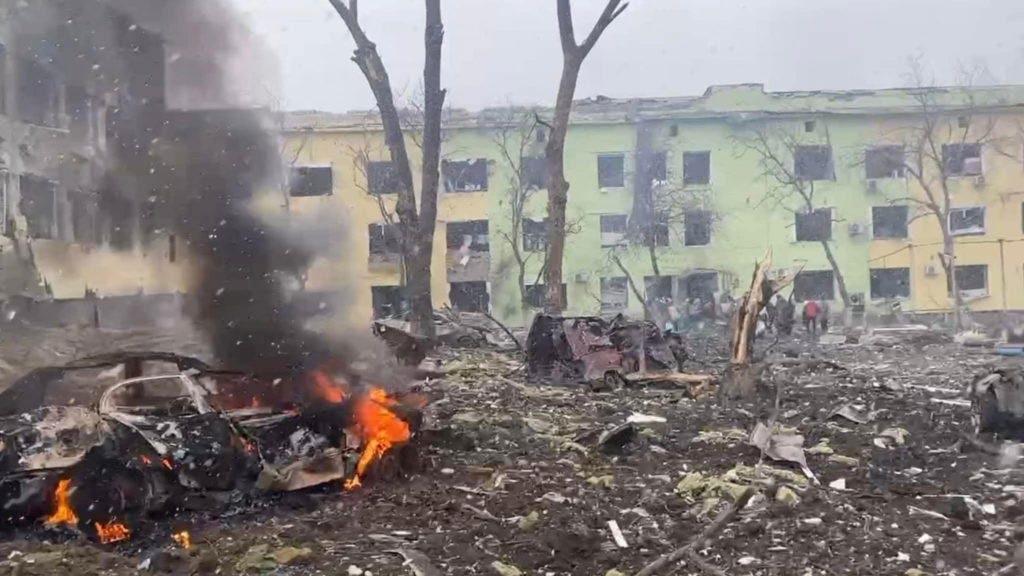



Starting as early as 2005, the Republic of Korea and NATO has had a history of strengthening cooperation, with their dialogues showing shared values. Korea being one of the few countries that doesn’t originate from the Euro-Atlantic area, they’re often referred to by NATO as “partners across the globe” - hence the organisation’s interest in developing their relation. Their Individual Partnership and Cooperation Programme was recently renewed in November 2019, while already strengthening the work in the 7 years before its renewal. Their political cooperation is currently focusing its development on multiple areas including cyber defence, counter-terrorism, securityrelated civil science projects, etc,..
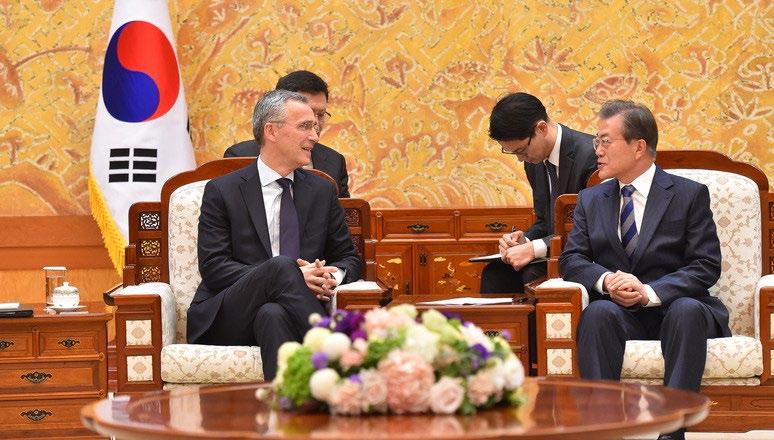

The Republic of Korea over the years has been known as one of the most powerful tech hubs, placing among the top five of technological innovators, making it one of the Asian economic powers to move up the hierarchy. The country is ranked third for the most broadband Internet users among OECD (The Organization for Economic Co-operation and Development) countries. However, this reputation has only made The Republic of Korea a tempting target for large scale cyber crimes. In the past couple of years, there has been an increase in cyber attacks aimed at private business, the republic’s public infrastructure and governmental institutions. Going into 2021, they are met with 7,000 cases of attacks across the country with 9 out of 10 cases sourced from hidden malicious codes. After a series of recorded incidents targeted at private businesses started to surge up by 119.5%, the serious problem of digital security became known in 2017.
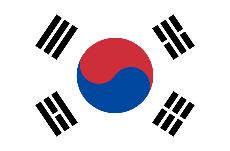
“South
“The CCDCOE is a cyber hub made to research, train and exercise the fields of cybersecurity, established in May 2008 and now gains The Republic of Korea as its 32th official member.”
These attacks have affected their performance for in-country and international businesses, bringing damage to their reputation and economy. In their continued effort to fight on their own, The Republic of Korea has developed a tool called the Korea Global Cybersecurity Capability Assessment (GCCA) which assesses the national competency level by comparing and analysing themselves using other countries as examples on a selected criteria.
The Republic of Korea put in an effort as they cooperate with NATO. According to an article written by Cho Mu-Hyun, South Korea’s intelligence agency confirmed on Thursday about the nation’s participation as the first Asian member country in a defence group of NATO. The CCDCOE is a cyber hub made to research, train and exercise the fields of cybersecurity, established in May 2008 and now gains The Republic of Korea as its 32th official member. “We plan to send more employees to the CCDCOE and expand the scope of joint exercises to reinforce our cyber defence capabilities,” NIS stated.
Nato. “Relations with the Republic of Korea.” NATO, 30 Jan. 2023, https://www.nato.int/cps/en/natohq/topics_50098.htm.

Cyberlands. “Top 15 Cybersecurity Breaches in South Korea.” Cyberlands, https://www.cyberlands.io/topsecuritybreachessouthkorea.
Cho Mu-Hyun. “South Korea Becomes First Asian Member of NATO Cyber Research Centre.” ZDNET, https://www.zdnet.com/article/south-korea-becomes-first-asian-member-of-nato-cyber-research-centre/.
Lau, Jack. “South Korea Has Joined a NATO Cyber Centre. Should China Be Worried?” South China Morning Post, 8 May 2022, https://www.scmp.com/news/china/diplomacy/article/3176944/south-koreahas-joined-nato-cyber-defence-centre-should-china.
So Jeong Kim, Sunha Bae. “Korean Policies of Cybersecurity and Data Resilience.” Carnegie Endowment for International Peace, 17 Aug. 2021, https://carnegieendowment.org/2021/08/17/koreanpolicies-of-cybersecurity-and-data-resilience-pub-85164.
He-rim, Jo. “South Korea's Intelligence Agency Joins NATO's Cyber Defense Center as First in Asia.” The Korea Herald, The Korea Herald, 5 May 2022, https://www.koreaherald.com/view.php?ud=20220505000162.
Gyu-lee, Lee. “'Money or Freedom': Is South Korea Safe from China's Infiltration?” Koreatimes, The Korea Times, 9 Sep. 2021, https://www.koreatimes.co.kr/www/nation/2023/01/120_315236.html.
Wikipedia. “South Korea.” Wikipedia, Wikimedia Foundation, 28 Feb. 2023, https://en.wikipedia.org/wiki/South_Korea.
Estonia. “NATO Cooperative Cyber Defence Centre of Excellence.” Estonian Defence Forces, Republic of Estonia Defence Forces, 30 Mar. 2022, https://mil.ee/en/landforces/ccdcoe/.
Power competition is not an untold story. Throughout history, the United States strived for more control over Latin America to exploit their markets in order to maintain a regional balance of power and uphold the Western Hemisphere’s consolidation. Now they face great competition with China after Beijing joined the World Trade Organization (WTO) in 2001; leveraging the blossoming economic, political, and cultural influence through existing Latin American communities to form long-term partnership. The two sides put unprecedented pressure on Seoul as the rivalry between China and the U.S intensifies, spilling over to affect trade and technology policy. South Korea stands as the middleman due to its historical ties with China and critical alliance with the United States.
South Korea plays a neutral role, expressing little concerns toward China’s growing military footprint in Asia when compared to their counterpart Japan, however, their public are much more vocal in comparison. In a Carnegie poll conducted in Seoul, November 2019, only few replied that they trusted the unification partner of China. On the other hand, in another survey that conducted a question on which countries are likely to be Korea’s biggest threat, only 8.3% picked the United States. Today, China holds a bad reputation to three quarters of the South Korean population in comparison to less than a third back in 2022. This has shifted the conservative government of Seoul to place a greater emphasis on their alliance with the U.S despite China’s efforts to keep them on their side.
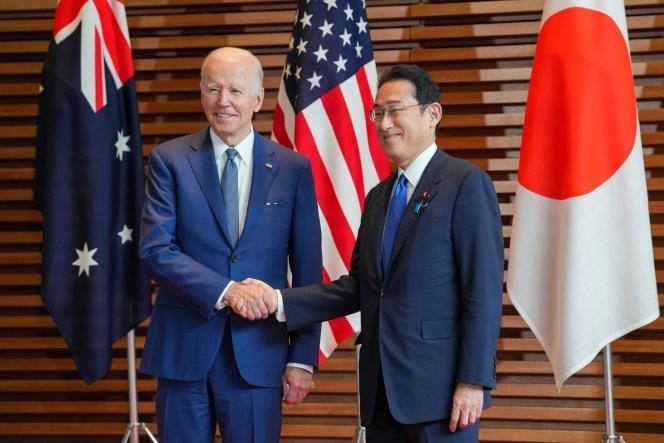

South Korea kept mindfulness over Beijing and Pyongyang’s relationship, when president Moon Jae-in stayed silent over North Korea’s human rights abuses. Being a democratic republic has made this prolonged decision from South Korea one that is against their interests, showing the nation's different values with China. Making it a core remark on why Seoul may not play in China’s favour in the end. In Joe Biden’s second in-person summit, he met in person with South Korean President Moon Jae-in in order to seek and

“It is time for South Korea to voice their views”
“South Korea kept mindfulness over Beijing and Pyongyang’s relationship, when president Moon Jae-in stayed silent over North Korea’s human rights abuses.”
broaden their cooperation with Seoul; tightening the coordination of policy toward North Korea and China-related issues. South Korea pledged their shared commitment in the peaceful method to complete denuclearization of the Korean Peninsula by using diplomacy on North Korea.
The U.S hopes to build its economy in cooperation with South Korea based on their resilient supply chain, challenging a greater part of the country’s premise as it still depends on China’s economic opportunity. With the State's involvement, it reduces the Republic of Korea's reliance on China while pushing growth on each other's research and development on emerging technologies, such as A.I and biotechnology.
Shorthand. “YMUN XLIX: Commission on Crime Prevention and Criminal Justice (CCPCJ).” YMUNK 2019: WHO, https://yira.shorthandstories.com/ymun-xlix-ccpcj/index.html.

Won-Ho, Kim. Korean-Latin America Relations: Trends and Prospect
https://citeseerx.ist.psu.edu/document?repid=rep1&type=pdf&doi=2c70e2d79c58366f98616f780ad700 a481f4f3c0.
Chung, Min Lee. “South Korea Is Caught between China and the United States.” Carnegie Endowment for International Peace, 21 Oct. 2021, https://carnegieendowment.org/2020/10/21/south-korea-iscaught-between-china-and-united-states-pub-83019.
Synder, Scott A. “The U.S.-South Korea Summit: A Relationship Restored?” Council on Foreign Relations, Council on Foreign Relations, 25 May 2021, https://www.cfr.org/in-brief/us-south-koreasummit-relationship-restored.
Mesmer, Philippe. “Joe Biden Visits South Korea and Japan Seeking to Rally a United Front against China.” Le Monde.fr, Le Monde, 24 May 2022, https://www.lemonde.fr/en/international/article/2022/05/24/joe-biden-visits-seoul-and-tokyo-seekingto-rally-a-united-front-against-china_5984549_4.html.
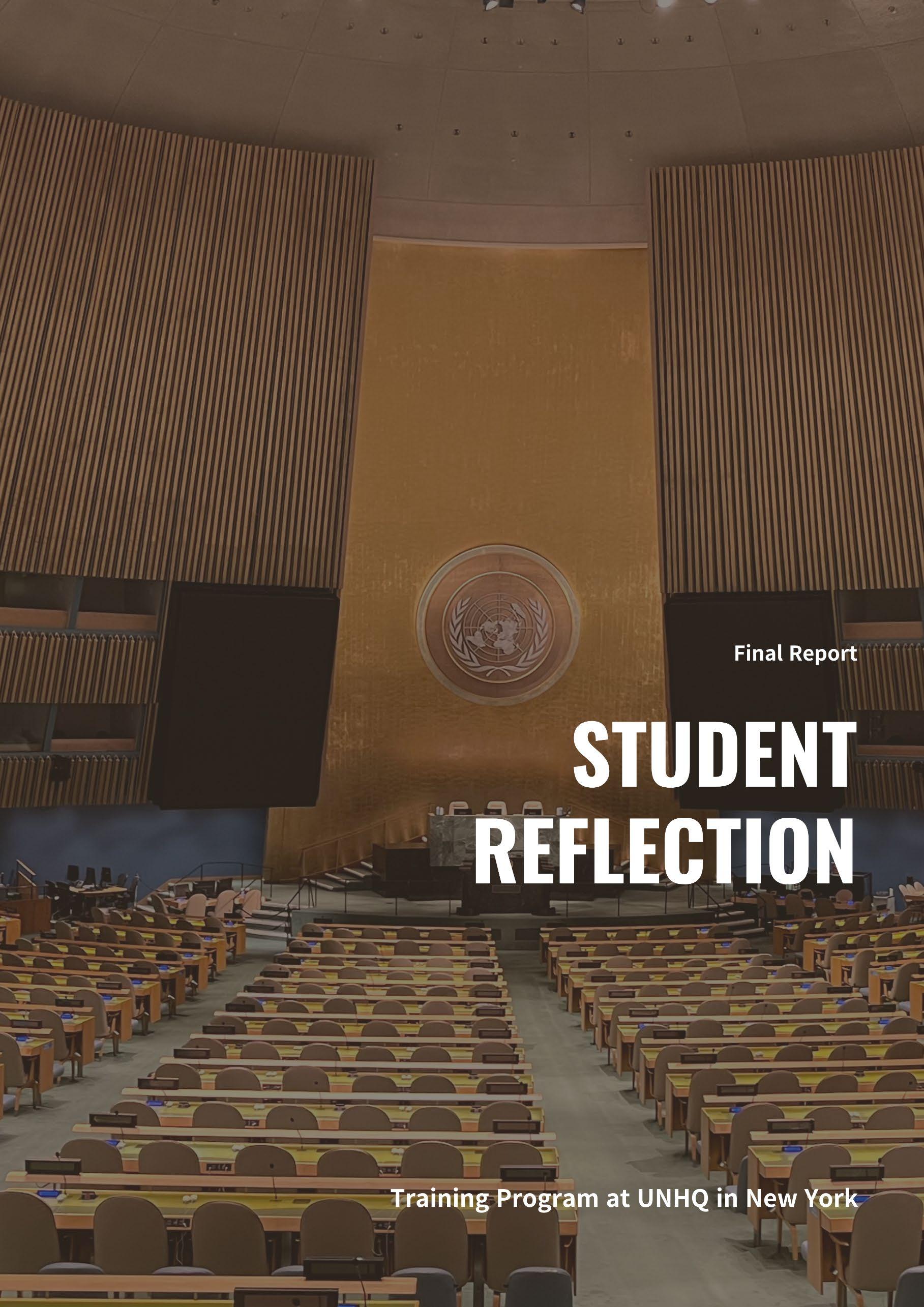 Geonhee Ko
Chungnam Samsung Academy (CNSA)
Geonhee Ko
Chungnam Samsung Academy (CNSA)
I participated as the delegate of Russia in the United Nations Security council. Through the sessions I had I was able to learn more in the perspective of Russia on current affairs and the extent of power one nation could possess. I also gained more knowledge about Russia as a country. Since it was my first time participating in a MUN conference I was very nervous and did not know how to prepare for it. But although it was my first try, I was able to pull off an award. So, based on the experience at Yale I want to share tips for the people who have never participated in a MUN conference before and are aiming to win an award.
When applying to the model UN try to sign up for a crisis committee that has a low number of delegates to increases your chances. Crisis committees are relatively easier to win an award than a General Assembly (GA) committee since there are various factors that decides who is the best delegate. GAs heavily rely on your knowledge in the order of procedure and the ability to write resolutions. These skills become more accustomed as you experience more sessions, putting MUN beginners in a big disadvantage. On the other hand, crisis committees have crisis notes that allow you to proceed any policy within your country or in collaboration with other nation as long as you have their signature. So, the most contributing factor to your award will be how appropriately and creatively you cope with various crises using your crisis notes.

Every committee has a different topic and the crises that will be presented in the future is unexpected as well. But regardless of the agenda, it is best to educate yourself on general knowledge about your country. In the crisis committee I was in, the most useful information was the economic and military allies. If your allies are in your committee, then form a cooperative body with them as the axis. If not, then utilize them as much as you can in your crisis notes and act like they support you in every aspect because you don’t have to get their signature. Current policies that are being carried out within your country, and various government agencies such as intelligence, are helpful as well. It is mandatory to know your country’s stance on the agenda that is presented. But don’t ignore global issues that are being discussed currently since it is likely that they might come up. Also, practice writing directives which are very short versions of resolutions. All you need to write are the operative clauses which actually do something. They don’t have to be long. Just single clause one line long can be good enough. Practicing this can help you lead your block when writing a directive which will definitely gain you points.
During the session make the most of your crisis notes. Having a clear goal before the starting is a good strategy. Try to think of something that your country wants to achieve but can’t, due to economic or geopolitical factors. Your objective should be to accomplish this in any way possible. You should work on completing this strategy when you have extra time, but otherwise focus on giving
speeches and responding to the crisis that threats your country the most. You should let your chairs know that you have been planning this since the beginning. The easiest way to do this is to develop your economy and invest in a field that have clear relevance to achieving your goal. All you need to do is obtain an economic partner’s signature on a crisis note and submit it. An example could be, “Russia increases trade with Brazil positively affecting economic development. From this development Russia would like to invest more on its intelligence agency.”.


Furthermore, invest more on intelligence agencies and use them to gain extra, unrevealed information. An essential part of current warfare is information. This directly applies to the crisis committee, the more information you have, the stronger you are. If you can, try to share some of the information to the whole committee. Raise motions on specific topics regarding this new reveal to show that you are leading the debate. If you are the only source of knowledge, then every nation would likely collaborate with you to solve the crisis related to it. Use this opportunity to debate on this topic for as long as possible to take control over the whole conversation. Plus, try to get more than the majority of signatures on a crisis note to act on the crisis. This is going to be a very efficient way of showing that you are a dominant member of the committee.
These are the tips I have after going through my conference. Because I have only done this once it is not perfect. You might have already heard some of my tips before from other people and some might not apply to certain situations. Although this worked for me it does not guarantee it will do the same for you. So, just use my tips as a reference and have fun at your own MUN conference. I wish you the best of luck!
By hearing various lectures at the UN headquarters, I was able to understand how certain organizations of the UN were contributing to achieve the Sustainable Development Goals (SDGs). Some organizations such as the UN-Habitat gave local support to help the people in need to become self-sufficient. Other organizations like UNDESA contributed by supporting intergovernmental work, analyzing data and help build capacity of governments. However, no organization was able to force any policy or solutions they concluded.
Most of my colleagues thought that UN was taking measures too slow regardless of the urgency of the problem. They thought that UN should force some of their resolutions to help solve various problems in the world. But after hearing the same lecture I disagreed. I thought that not enforcing policies was better in the long term. That way more people would agree to the UN’s perspective, and it creates lower chances of creating dissent. Also, ethical problems emerge when deciding the punishment for disobeying the order of the UN. For example, not allowing developing countries to emit green house gases will fabricate opposing public opinion against the UN from the citizens of developing countries. Since developed countries already emitted greenhouse gases it is unfair to developing countries. Just deciding the degree of penalty against the developing countries will create a lot of conflict. Even if by enforcing resolutions the UN might produce a positive effect on the environmental crisis, it is only temporarily stopping the crisis from worsening. In the long term, the dissatisfaction from developing countries will grow and if the worst comes to the worst, then the environmental problems will recur.
The essence of UN relies on education. UN is teaching everyone across the world that the SDGs sectors are worth the investment. By enlightening everyone on the planet and country leaders, they can change the world positively while minimizing dissent as much as possible. It is why UN is doing a perfectly fine job even without enforcing their resolutions.
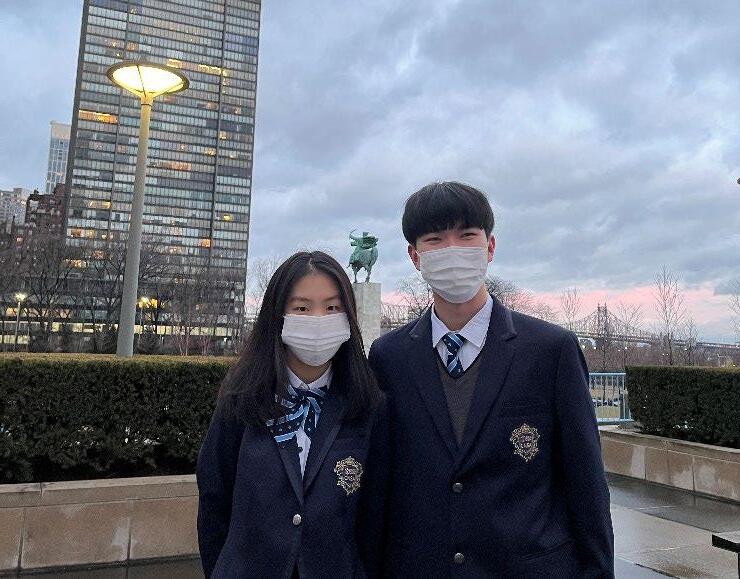
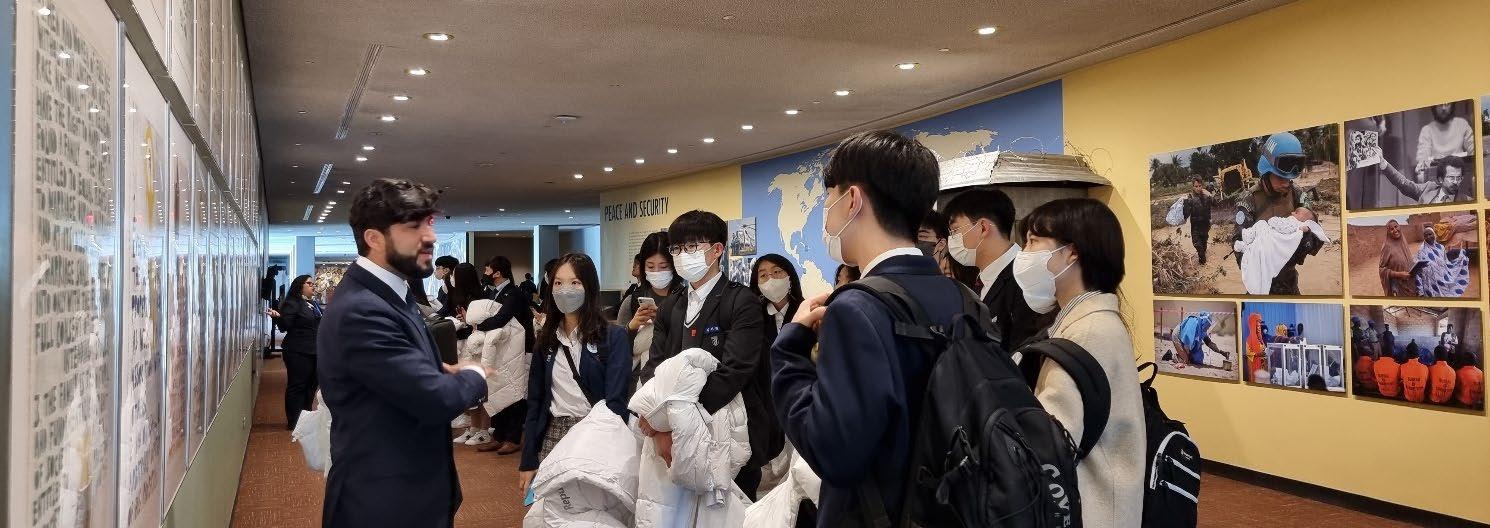

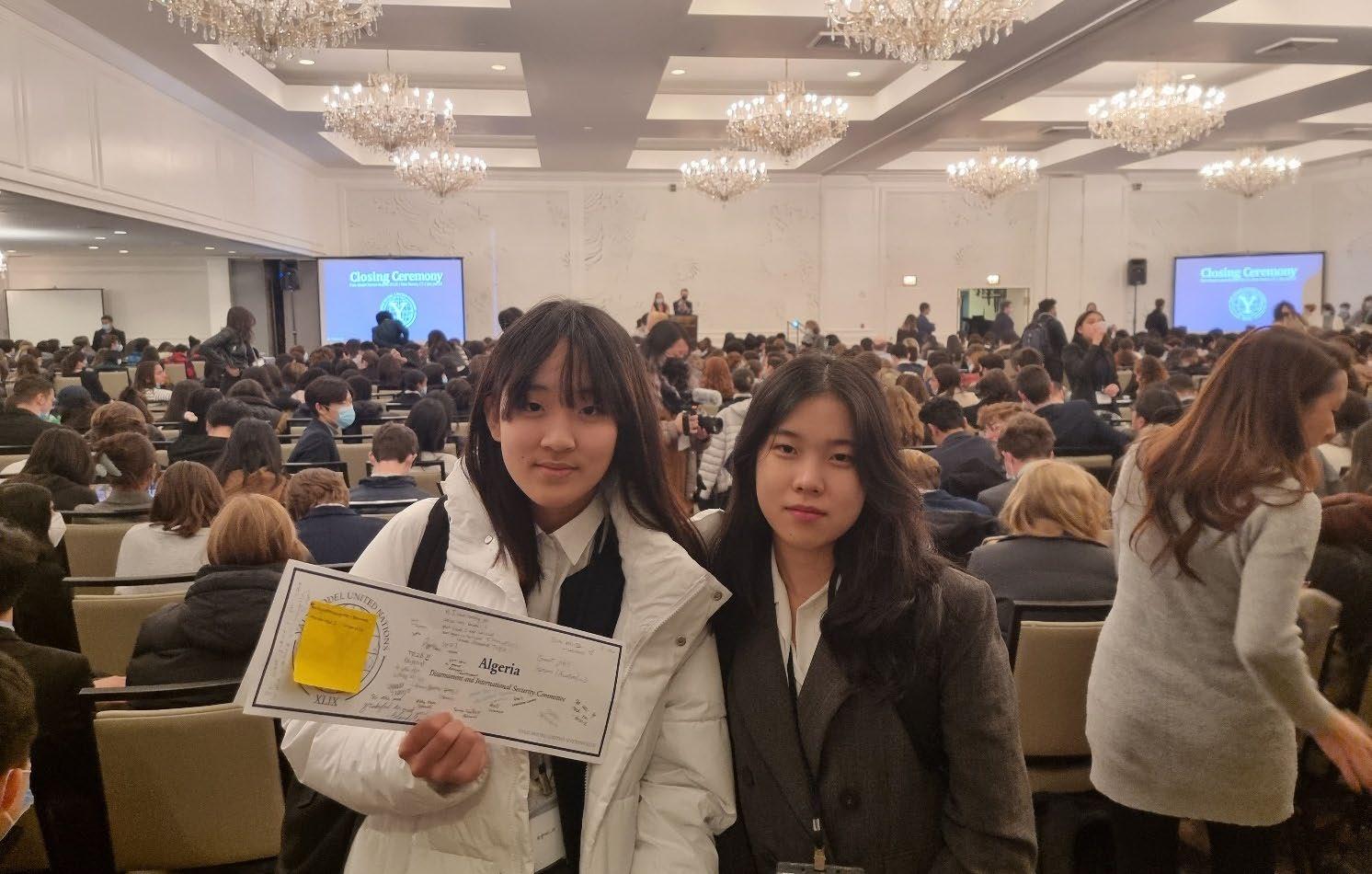
 Bogyong Ko Bakmun Middle School
Bogyong Ko Bakmun Middle School
When I first got to the opening ceremony it suddenly hit me that I was in one of the biggest Model United Nations in the world. I got really anxious and exited at the same time because this was also my first MUN conference ever. I soon forgot about the fact that I was even nervous in the first place, and started to make dozens of friends. At the first committee session I didn’t really know what to do, but tried to speak as much as possible. Right after I gave my first speech I got a few notes and got to form a block with the delegates that had a similar view on the topic. As we were debating, time flew, one session to the next, one by one. At night I prepared for the following sessions, and in the morning continued the debate. But the best part were the un-moderated caucuses. We were able to discuss freely, share our thoughts, and the best part was that you could make friends, from all over the world, all interested in similar subjects. After all the sessions I became close friends with most of the delegates. It was the most meaningful and wonderful experience of my life. I became more of a public speaker and gained confidence in each session. Also, It is true that it’s important to do well during the conferences, but it shouldn’t be your first priority. I think that MUN is all about making new friends. This will be the perfect chance for all of the delegates to make friends from all around the world, and this isn’t a chance that comes everyday. For all the nervous future delegates, I’m telling you to get up there and speak as much as you can and just have fun!
As we set our foot into the campus we could sense the cold winter breeze along with the wet campus. The rain and the fog made the campus look more ancient and mysterious. I felt as if I were in Hogwarts, a magic school in the novel, Harry Potter. There was a lot to learn even during a short tour. We learned about the history of Columbia, all the secrets behind the architectures, and especially about the life at Columbia. The core system that Columbia take pride in, sounded rather interesting to me, which took a minute for me to think about. We took a lot of pictures in the campus, especially with the Robert Goelet statue. We found a Easter egg inside the statue where there was an owl. It made the campus look more magical with the stone-made architectures as well. My experience at Columbia university was amazing, and I hope to come back here someday, in the close future.
Sumin Kwon
Before I attend the MUN Conference at Yale University, I was full of fear in fact it was the first MUN conference in my entire life. Therefore, every preparation process before the MUN conference was an adversity for me. When I first started the MUN conference, I was overwhelmed by the number of 80 people and my fears continued to grow. I was not even sure I can have a single speech in front of the conference because my heart was beating so fast when I even think about myself having a speech. However, contrary to my worries, the atmosphere of the MUN conference hall was not so compelling, and many delegates smiled and kindly approached me and reassured me not to worry. Therefore, I was able to have courage and for the first time, I had the opportunity to do a speech in front of countless foreigners. Additionally, watching the way how other delegates have speeches with great passion and confidence made me realize that I also have to live hard with a desire for life. The Yale MUN conference has allowed me to experience numerous valuable and precious experiences that are unforgettable through various nationalities and diversity. Moreover, I believe that YMUN has broadened my perspectives and gained confidence in public speeches.

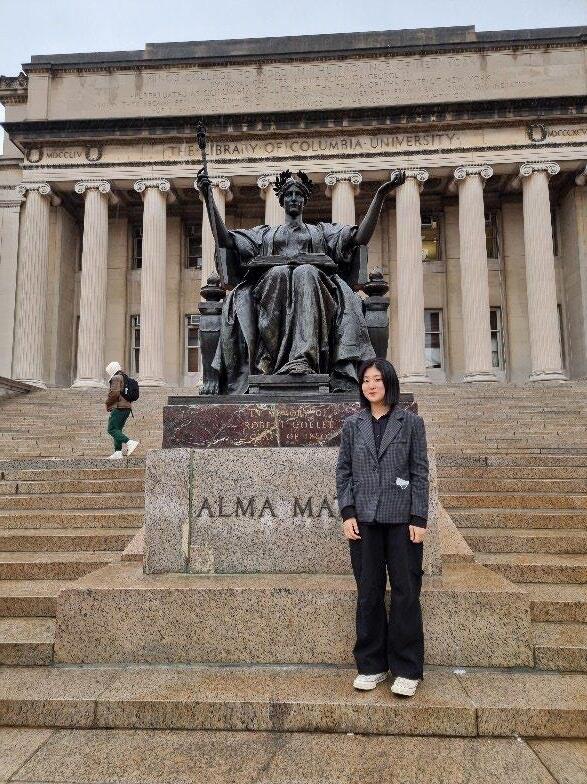

When we arrived in Columbia by bus, we were given a chance to tour the campus of Columbia University with an enrolled student. Despite restrictions on access to many buildings due to COVID-19, Columbia gave me a lot of motivation as soon as I saw it. Situated quietly in a crowded city, Columbia University showed both grandeur and beauty through the building itself. Especially after I saw the library in Columbia, I was amazed by its magnificence. The huge size of the building, the antique exterior design with philosophers’ names, and the arrangement of thousands of books in the library were beautiful and astonishing. Therefore, such images of Columbia university made me want to go there even more. After the tour, we had a meeting with our guide. During her speech, she said that if you pursue what you want to do, the road will eventually open. Add to this, she also said that you can find your dreams not only at your age but also in university by trying and studying many helpful lectures and activities, so don’t worry. Those words reminded me of the past I feared every day with worries about my future. Since I am turning to 12th grade in 2023, numerous times of days in my life were always with fears and worries. However, by listening to her speech, I was able to realize that if I always try to do my best, there will be a chance someday even if the situation seems to be dark right now. Therefore, it instilled the faith and hope that would allow me to be more stable and focus on many tasks.


It was my first time in participating the face-toface Model UN. I was not familiar with Model UN, and the specific works of the United Nations for the first time. Preparing for the MUN, I came to research deeply the UN’s work and the topic that my committee works on. My committee was CCPCJ, which finds better ways for international criminal justice. The topic was about finding new harmony between NATO and Vying influences in Latin America. When the MUN started, I was quite embarrassed as most of the delegates were native speakers, and seemed that they fully understand the topic to freely talk about it at any point of the topic. However, English is my second language, and I felt that I was not prepared as much as them. Participating in it for 4 days, I came to feel that those worries are meaningless. Rather than those factors that I worried about, the most important thing was confidence and logic. At the first time, I was quite passive due to my worries, however, after being a part of the MUN, and understanding all the arguments other delegates propose, I got some confidence. With confidence, I spoke with a powerful voice and the best logic that I could make. My first MUN, at Yale, was a great experience for me to enjoy English freely and came to know more about international issues.
Visiting UN Headquarters itself was a greatly meaningful experience for me. I was highly expecting for learning specific works of the UN, and its departments. We learned about UN DESA, UNIDO, UNDP, UN-Habitat, etc. Those were not familiar to me; however, those lectures attracted me getting into the UN’s work. Especially, Q&A sessions with professors were the most meaningful time. Listening to the lectures, there were many points that I did not understand, and which I wanted to learn deeply about. It was just a pleasure that I could ask any free questions experts of the UN. Starting from exact explanations on parts professors abstractly mentioned, moreover parts that I originally had curiosities on. Whatever, it was a great opportunity for me that I could listen to awesome lectures of UN experts, and became a tipping point for me to get more interest in the UN.

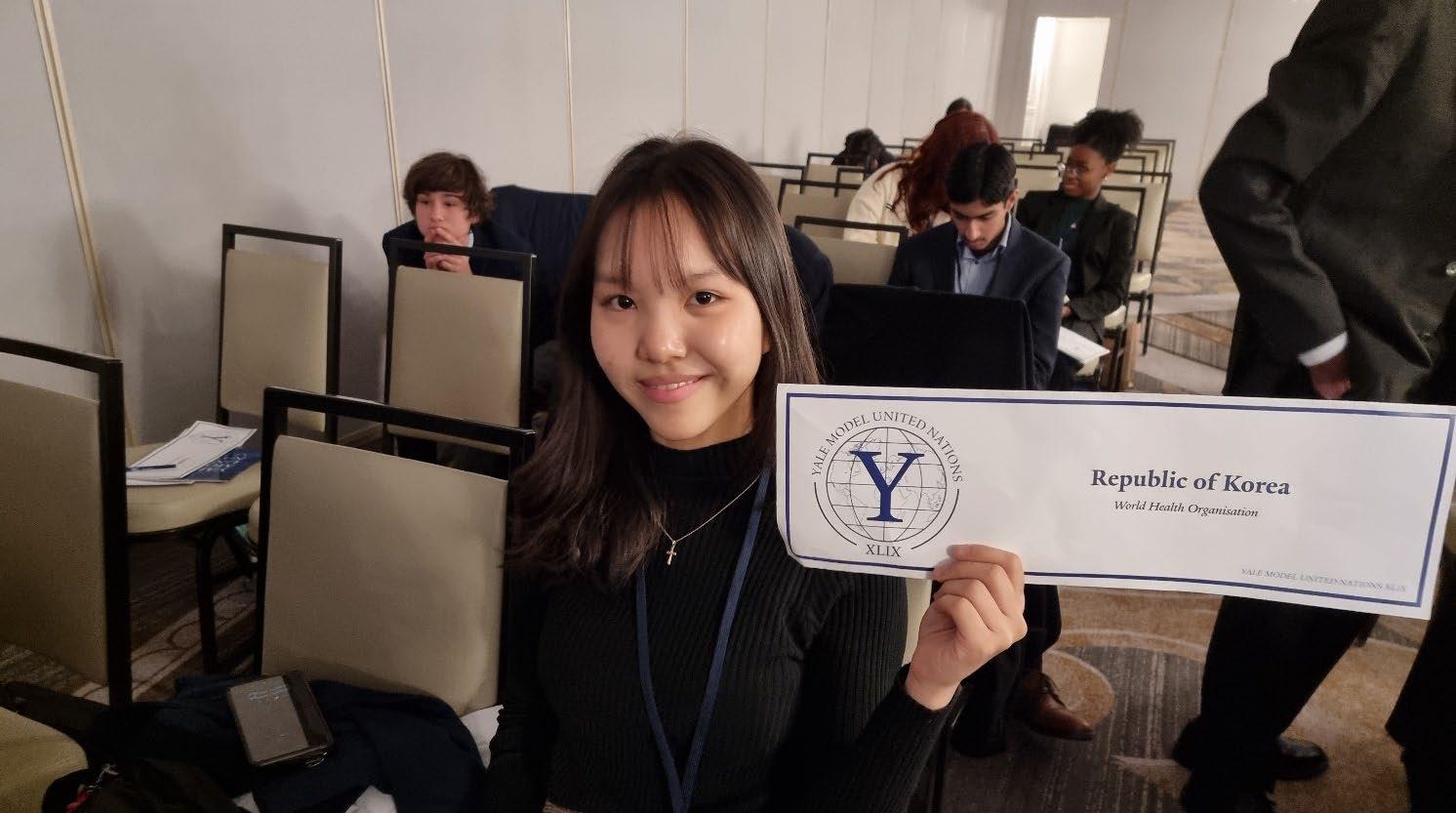
As an aspiring global citizen and an ‘ophthalmologist who types hope’, joining the 49th Yale International Model UN(YMUN XLIX) as my first overseas Model United Nations equipped me with a widened window of perspective. Soon as I entered into the tumultuous crossroads of culture and identities at the Opening Ceremony, I was amazed by the passion that emanated from the diverse crowd.
On the second day of the MUN, I participated in the Global Exchange Program, which was a kinesthetic and interactive lecture session with the topic of media polarization. Scrutinizing and debating on media polarization, its distinct forms, causes and effects that emerge with the fourth industrial revolution, I could accentuate my ethical insights on global citizenship. For instance, after joining the lecture on bioethics with Stephen Latham, JD, PhD, Director of Yale's Interdisciplinary Center for Bioethics, I could look into different case studies that highlight the need for bioethics. Even further, I could apply this codified knowledge to my Personal Project on strabismus, a misalignment in the focus of the eyes, so that it is completely non-invasive and safe to access.
Representing the Republic of Korea in the World Health Organization(WHO) council, I probed into the issue of sexually transmitted diseases(STDs) in the sociosphere. Through this experience, I adopted three key skills: negotiation skills by forming and merging blocs, public speaking skills by formulating my opinions into speeches on the spot, and critical thinking skills by considering multifaceted aspects of the STD crisis. Overall, the YMUN XLIX has elucidated my global citizenship and a flexible, circular mindset

A pedagogical lecture program on the United Nations and its 17 Sustainable Development Goals(SDGs), the Training Program at the UN Headquarters consolidated my persona into one of a global citizen. I could connect specific SDGs to different institutions under the UN, identify the arousing issues in such scopes, and learn to emphasize tenets and policies to maximize the achievements of such goals.

On the last day of the program, the lecture on global citizenship by Eunhee Jung, founder and director of Intercultural Virtual Exchange of Classroom Activities(IVECA) implanted a seed of motivation and hope into me to put my codified knowledge into action and spread the virtues of global citizenship to spread good influence to the most marginalized communities of the global society. This program not only encompassed one-dimensional explicit knowledge, but also inspired me to apply them into tacit knowledge and persevere in my pursuits of social services and activities.
Through the lecture with Georgette Mrakadeh-Keane, the communications consultant of UNDESA, I shared my experiences of promoting water sanitation and hygiene in rural communities through education and designing sustainable water filters. I also received fruitful advice on how to bring these social actions to the next stage by correlating with rural communities and bringing a scope of behavior change into their lifestyles.
Ultimately, on the last day of the program, I put together and delivered a group presentation on the UN Industrial Development Organization(UNIDO) and its endeavors to tackle inclusive, sustainable industrial development(ISID) along exponentially developing technologies. Ultimately, I expanded my insight on a circular economy, exemplifying cross-cutting technologies, fostering innovation, and safeguarding the environment. Through this participation, I could learn how ubiquitously UN SDGs and values should be implemented to ameliorate standards of life and promote shared prosperity for each constituent of the globe.

 Hyunjun Ryu
The Frederick Gunn School
Hyunjun Ryu
The Frederick Gunn School
The Yale Model United Nations XLIX (YMUN) conference proved to be a remarkable experience for me, exceeding all other Model UN conferences I have attended in terms of both enjoyment and entertainment. The conference presented a multitude of "firsts" for me, including interacting with a delegation composed of new people, rooming with a new friend, participating in a new committee type, and having a novel experience altogether. The International Court of Justice (ICJ), to which I was assigned, was among the smallest committees, comprising only 13 delegates. This intimate setting allowed for ample opportunities for individual delegates to engage with and get to know each other on a personal level. Although the size of the committee alleviated some anxiety about speaking in front of my peers, the structure of the ICJ presented certain challenges, such as the limited number of speech opportunities. In spite of the challenges posed by the ICJ, the professional and tense atmosphere of the committee made for a stimulating and rewarding experience. As our committee was comprised of experienced Model UN participants, the discussions were elevated, and I learned a great deal from my peers. In addition to the conference itself, YMUN allowed me to explore Yale University on a deeper level. Engaging in thought-provoking conversations with Yale students and professors allowed me to learn more about the university and confirm my interest. The experience of being surrounded by such a diverse and talented group of individuals was truly unforgettable. The YMUN experience proved to be a captivating and enlightening one. It allowed me to expand my network, try a different committee style, and learn more about Yale, leaving me with unforgettable memories. I am grateful for the opportunity to have participated in such a prestigious event, and I am excited to see what future Model UN conferences hold for me.

Participating in the training program at the United Nations Headquarters (UNHQ) is an experience I will always cherish and speak about with pride. Amidst the mix of cloudy and sunny days in the world-renowned city, I was able to live like a diplomat for five days. Every day was jam-packed with a rigorous schedule and engaging lectures. Rising early, retiring late, and often having little time to consume lunch were all typical occurrences during this immersive program. The experience of entering the UNHQ each day, as if it were my place of work, will remain etched in my memory forever. This training program proved to be a significant learning opportunity for me, enlightening me about the various arms of the United Nations and their intricacies. The Sustainable Development Goals (SDGs), International Labour Organization (ILO), and UN-Habitat were some of the topics that I learned about for the first time through the enlightening lectures. The tour of the UN was also an unforgettable experience that gave me a glimpse of the representatives and their meetings. Witnessing these proceedings firsthand was undoubtedly a cool experience. Moreover, the program fostered leadership skills and teamwork among the participants. Every night, we would gather to collaborate on team presentations, and our collective efforts resulted in remarkable teamwork. This opportunity to learn, listen and experience the lifestyle of diplomats and one of the most influential institutions in the world was indeed eye-opening. It was an honor to be part of the program and an immense privilege to witness the UN's inner workings. The training program at the UNHQ was a life-changing event that broadened my horizons and gave me a new perspective on international relations.
The Opening Ceremony for the 49th iteration of YMUN XLIX was held in the grandeur Woolsey Hall auditorium in the Yale Campus. I had instantly fallen in love with the atmosphere– it seemed as if I were walking into a historical cathedral, embellished in gold and emerald colors. As I gazed around in awe, I noticed the numerous people that had filled the entire auditorium. First floor, second floor, right wing, and left wing. Students and advisors from various countries were disseminated everywhere. Although I was jet lagged and admittedly exhausted, coming from Korea that has a 13 hour time difference from New Haven, I simply could not contain my excitement and that was what woke me up immediately. Attending an Opening Ceremony was definitely an experience that I have been through a myriad of times before. However, there was something inexplicably different about the one I had gone to for YMUN XLIX. Perhaps it was the diversity of nationalities of the people that surrounded me or the magnitude of persons in the same majestic auditorium.
As a student that has been involved with MUN at school since 6th grade, I have taken part in several MUN conferences before, but none at an international level beyond Asia. In fact, I have never had the experience to participate in a UNA-USA Model United Nations format and was unfamiliar with many terms and Rules of Procedures. To be frank, on the first day when my committee commenced the meeting, I was stunned and nervous after I found out that many delegates were seniors and about to apply for universities or have had numerous MUN experiences. I helplessly thought to myself that I was inexperienced and would not be as good as the others. However, as time elapsed, I unexpectedly found myself deliberately sitting near the more experienced peers and asking them questions while observing everyone when they made their speeches as well. I even found myself taking brief notes on my small white notepad on techniques of how to deliver a better speech more persuasively with more details while meeting the time constraints. Better yet, as more time progressed, I started feeling the emotion of joy as satisfaction whenever I finished my own speeches.
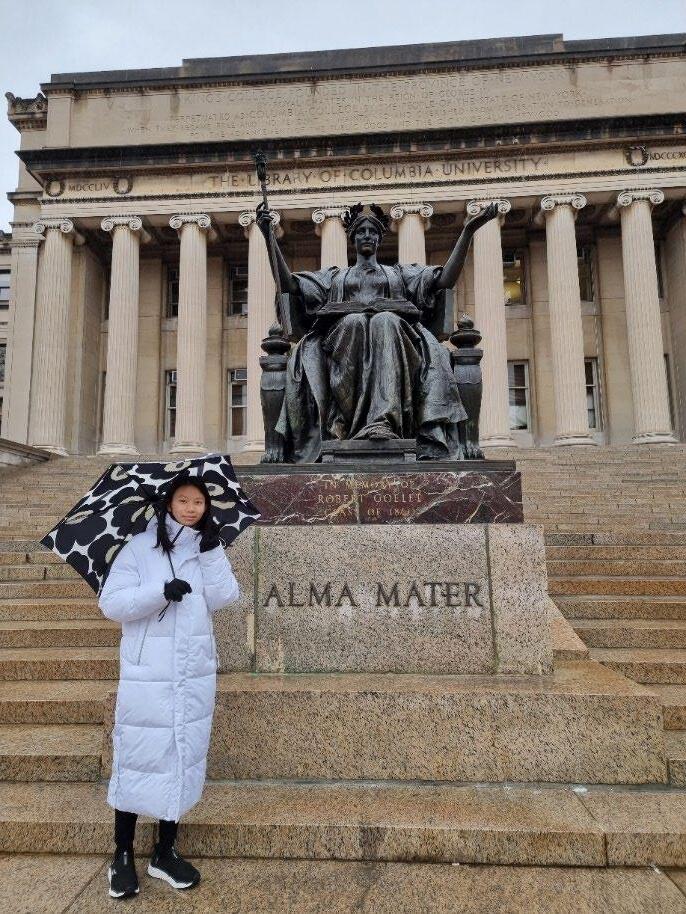
I finally found the fun parts of participating in a Model United Nations conference with people whom I have never met before because the ones I had done before at school seemed sometimes tedious as they were often virtual due to COVID-19. I felt that I had learned to make more natural impromptu speeches on the spot by learning from the other delegates who are now my friends that I still keep close contact with. I am still very grateful for the fact that I was given the opportunity to experience this YMUN XLIX conference and obtain even more knowledge.
Yueun Park Homeschool''At a time when humanity must invent new ways of producing, traveling and heating, we know we need the basic sciences and the potential they possess. More than ever, we must allow the basic sciences to expand in all directions in order to explore, investigate and experiment. For this capacity to imagine, innovate and discover will determine whether we are able to rise to the major challenges of our time''.
These are words from Audrey Azoulay who is the director general of UNESCO.
The United Nations designated 2022 as a year of fundamental science. According to the IYBSSD website, fundamental science is one of the indispensable elements of sustainable development. Basic

science can provide essential ways to achieve major goals such as food, energy, and health, and provide clues to understanding and solving global problems such as ozone layer destruction, climate change, depletion of natural resources, and extinction of wild animals.

These are the main themes of the international year of basic sciences for sustainable development.
● Science as a global public good
● Basic sciences as sources of international dialogue and peace
● Innovation and economic development
● Education and human development
● Meeting global challenges
● Strengthening the presence and the visibility of women
In many parts of the world, countries have committed to devoting 1% - or even as much as 3% - of their GDP to financing research, using contributions from both the public and private sectors. Indeed, evidence shows that such a high level of expenditure nurtures the economy and a country’s international influence, or ‘soft power’. However, most countries are struggling to reach their own targets for the level of research investment.
Here are some examples of how science can contribute to achieving the SDGs:
1. Goal 1: No Poverty - Scientists can contribute to poverty reduction by developing innovative technologies that increase agricultural productivity and food security, as well as by conducting research on the socio-economic factors that contribute to poverty.

Solving poverty and fundamental science are interconnected in some ways. Fundamental science is focused on advancing our understanding of the world and expanding our knowledge without any immediate practical applications. However, such research can lead to transformative breakthroughs that have the potential to address global challenges, including poverty.
i) Fundamental science can contribute to solving poverty by informing the development of new technologies and innovations that can improve access to basic needs such as food, water, and healthcare. For example, advances in biotechnology, chemistry, and materials science have enabled the development of new agricultural techniques, medical treatments, and water purification systems, which can help reduce poverty and improve the quality of life for people living in poverty.
ii) Fundamental science can help us understand the root causes of poverty and develop effective strategies to address them. For example, social sciences and economics research can help identify the underlying factors that contribute to poverty, such as income inequality, lack of education, and limited access to resources. This knowledge can inform policy decisions aimed at reducing poverty and promoting economic development.
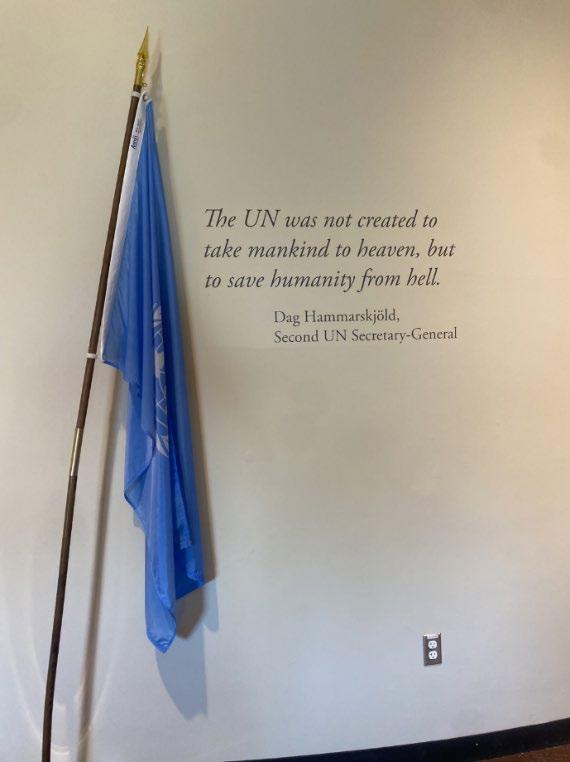

iii) Investment in fundamental science can create new opportunities for innovation and economic growth, which can in turn lead to poverty reduction. Scientific research and development can lead to the creation of new industries, technologies, and jobs, which can help stimulate economic growth and create opportunities for people living in poverty.
2. Goal
Hunger - Science can help to achieve food security by developing climate-smart agricultural practices, improving crop yields, and reducing food waste.
Smart farming is one of the sectors which the Republic Of Korea(ROK) is specially advanced in. As an example, there is a smart farm village in Jeolla province which helps youth to start smart farming. This not only helps youth to start a new project, but also this technology can increase the total amount of production and lessen the work in the long-term.

3. Goal 3: Good Health and Well-being - Science can contribute to improving health outcomes by developing new drugs, vaccines, and treatments, as well as by providing evidence-based guidance for public health interventions. Having a capacity in basic sciences is in the interests of both developed and developing nations, given the potential for applications to foster sustainable development and raise standards of living. For example, many people around the world suffer from diabetes. Thanks to laboratory studies of the ways in which genes can be manipulated to make specific protein molecules, scientists are able to engineer genetically a common bacterium, Escherichia coli, to produce synthetic human insulin. The polymerase chain reaction (PCR) is a technique used to copy tiny segments of DNA which was invented in 1983 by Kary Banks Mullis. PCR makes it easier to analyze these DNA segments. It can be used to detect the presence of bacteria and viruses. Over the past two years, PCR has been used countless times to test individuals for infection with Covid19. According to nature, PCR can also be used to detect a genetic disorder or to further our understanding of evolutionary relationships between different organisms. In forensics, PCR can be used to identify a criminal on the basis of a sample left behind at a crime scene, such as a hair follicle.
Mathematics for Action: Supporting Science-Based Decision-Making ( 2021) recalls that mathematical methods have been used during the Covid-19 pandemic to design vaccines more efficiently and to model vaccine hesitancy as a social phenomenon.


The key to CEE’s clean coal use strategy is to increase efficiency by using novel coal conversion technologies. Their new staged conversion method combines pyrolysis, gasification and combustion processes to achieve gas, tar, steam and electricity co-generation. The coal is first pyrolyzed to produce tar and gas, which can be converted into high-value chemical products, substitute natural gas, or liquid fuel. The resultant char can be burned directly in a combustor to produce steam for power generation. The utilization rate may be increased on a large scale with significantly reduced pollutant emissions.
A collaborative innovation center on power poly-generation with staged conversion technology was established to promote academia-industry collaboration in this field, and was selected for the
national ‘2011 plan’. With its R&D platforms, the center developed key technologies for polygeneration through a staged coal conversion system. Their work successfully addresses national demand for cleaner power from coal. A 150MW demonstration plant has been jointly constructed with an industry collaborator for power co-generation with synthetic natural gas (SNG) and liquid fuel.
Post Combustion Capture


Pre-Combustion Capture
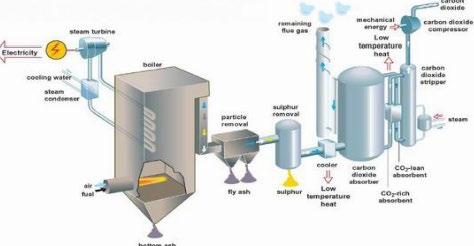
Oxy-Coal Combustion


A team at ZJU’s State Key Laboratory of Clean Energy Utilizatio has been searching for ways to efficiently process solid waste with minimum pollution. They found that garbage collected from Chinese households is mostly kitchen waste, with high water and alkali metal content, and low heating value. To enable stable combustion of these materials, they have developed a circulating fluidized bed boiler, in which solid waste is quickly heated, and anything not burned is recycled for combustion. This process ensures high rates of heat and mass transfer, and efficient burning.
Researchers also invented an inhibitor, and degradation technologies to minimize the generation of dioxins in the process, enabling ultra-low emissions of this pollutant. As well as lowering pollution, through these technologies, up to 80% of energy derived from waste processing can be recycled.

5. Goal 8: Decent Work and Economic Growth - Science can contribute to promoting economic growth by conducting research on the factors that contribute to economic development, and by developing technologies and innovations that create new jobs and industries.
i) Innovation : Pure science research can lead to the discovery of new knowledge and ideas that can be applied to practical problems. These new ideas can lead to the development of new technologies, products, and services that can generate economic growth.
ii) Increased productivity : Pure science research can lead to more efficient and effective ways of doing things. For example, new scientific discoveries in materials science can lead to the development of stronger, lighter and more durable materials that can be used in manufacturing. This can increase productivity and reduce costs, leading to economic growth.
iii) Innovation and Invention : Pure science research often leads to new discoveries, technologies and inventions that can be commercialized and generate economic activity. For example, the development of the transistor in the 1940s, which was based on pure science research, paved the way for the modern electronics industry.
iv) Job creation : Pure science research can lead to the creation of new jobs in a variety of fields, including research and development, engineering, and manufacturing. This can provide a boost to local economies and contribute to economic growth.
6. Goal 13: Climate Action - Science plays a crucial role in addressing climate change by providing evidence-based guidance for climate policy, developing new renewable energy technologies, and conducting research on the impacts of climate change.

For ultra-low emission of pollutants from coal-fired utilities, researchers have devised an effective approach that efficiently removes sulphur dioxide, nitrogen oxides, particulate matters, mercury, and other pollutants simultaneously. This can reduce emission levels from coal-fired plants to that comparable with gas combustion. The technology works in complex combustion processes, offering ultra-low emission solutions for different furnaces, with varying unit capacities and loads.
CEE's technique has been used to reduce emissions from industrial boilers, and has seen broad applications in the iron and steel, and marine industries.
Further work uses ozone to remove flue gas pollutants. Taking advantage of ozone’s oxidizing ability, researchers turned low-solubility pollutants into dissolvable chemicals.
They have also led or participated in developing more than 30 national and industrial standards. Such innovation promotes the development of clean electric power, and informs policy-making in China.
7. Goal 16: Peace, justice, and Strong Institutions - There are many ways to maintain peace within nations around the whole globe. However, there are some reasons that make disarmament crucial.
Disarmament and science are closely related in several ways. The advancement of science and technology has led to the development of increasingly sophisticated and powerful weapons,

which have the potential to cause catastrophic harm to humanity and the environment. Therefore, scientists have a responsibility to ensure that their research is not misused for harmful purposes.
In addition, disarmament efforts often rely on scientific expertise to develop effective verification and monitoring mechanisms for disarmament agreements. For example, the International Atomic Energy Agency (IAEA) uses scientific methods and technologies to verify compliance with the Nuclear Non-Proliferation Treaty.
Furthermore, disarmament and science share a common goal of promoting peace and security. By reducing the availability and use of weapons, disarmament can help prevent conflicts and reduce the risk of war. Similarly, scientific research aimed at improving human welfare and protecting the environment can contribute to a more peaceful and stable world.
Disarmament can create new opportunities for scientific cooperation and development. The resources currently allocated to military spending could be redirected towards scientific research and development, promoting innovation and technological progress in fields such as renewable energy, healthcare, and environmental protection.


Disarmament efforts can benefit from the insights and discoveries of pure science. For example, advances in fields such as materials science, chemistry, and physics have enabled the development of new technologies and materials that can be used in disarmament and arms control efforts. Such technologies can include sensors and monitoring systems that can detect nuclear weapons or other prohibited weapons, or new materials that can improve the effectiveness of protective equipment.
Furthermore, pure science contributes to disarmament by providing a better understanding of the consequences of nuclear weapons use or other weapons of mass destruction. Scientists have conducted extensive research on the environmental and health effects of nuclear weapons, which has informed disarmament negotiations and contributed to the development of international treaties such as the Comprehensive Nuclear-Test-Ban Treaty (CTBT) and the Treaty on the Prohibition of Nuclear Weapons(TPNW).
References
https://www.unesco.org/en/year-basic-sciences
https://sdgs.un.org/sites/default/files/2022-06/ONLINE_STI_SGDs_GUIDELINES_EN_v3_0.pdf
https://www.un.org/en/ecosoc/innovfair2013/docs/unesco1.pd

https://unece.org/media/Environment/news/207
https://www.nature.com/articles/d42473-020-00342-2
https://nma.org/wp-content/uploads/2016/08/Fact-Sheet-Clean-Coal-Technology.pdf
https://www.pennmedicine.org/news/news-releases/2021/october/new-gene-editing-technique-offers-scientists-ability-to-turn-onenzymes-that-cause-dna-mutations
http://www.farm8.co.kr/17054
Credit: Zhejiang University
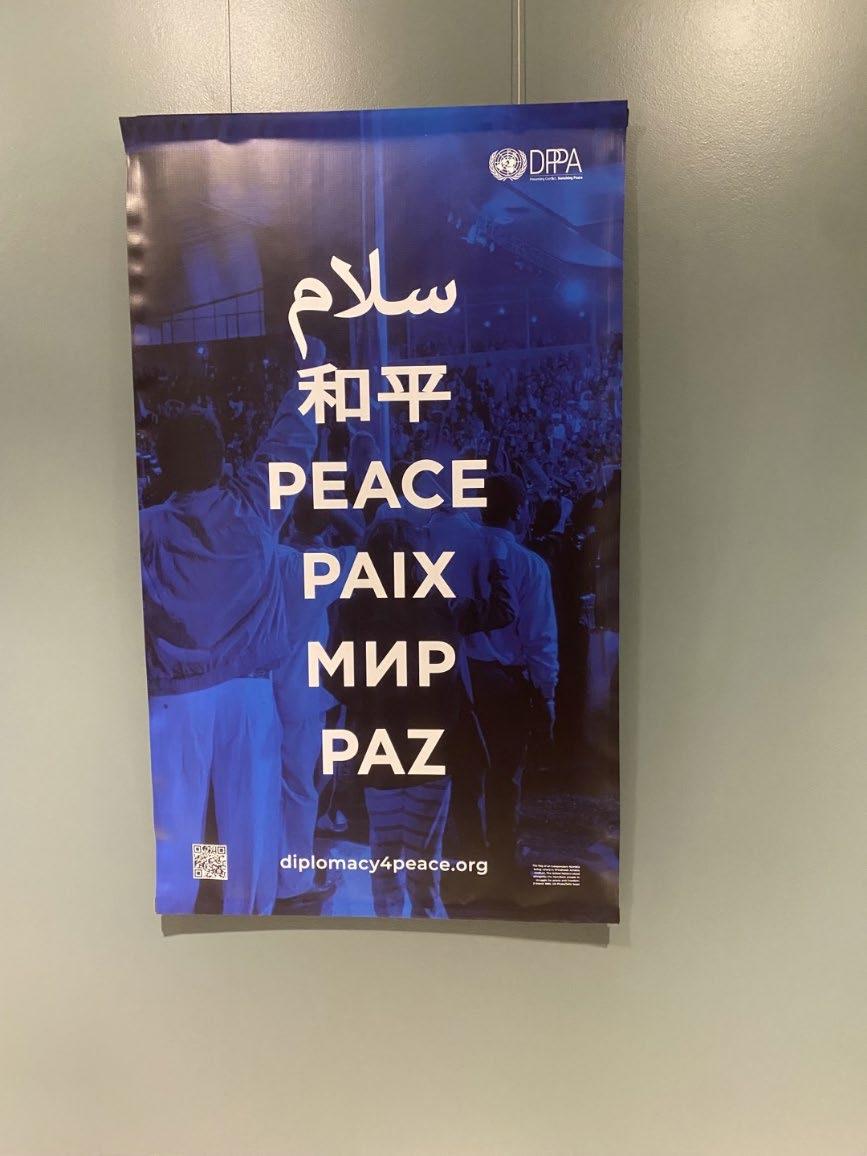
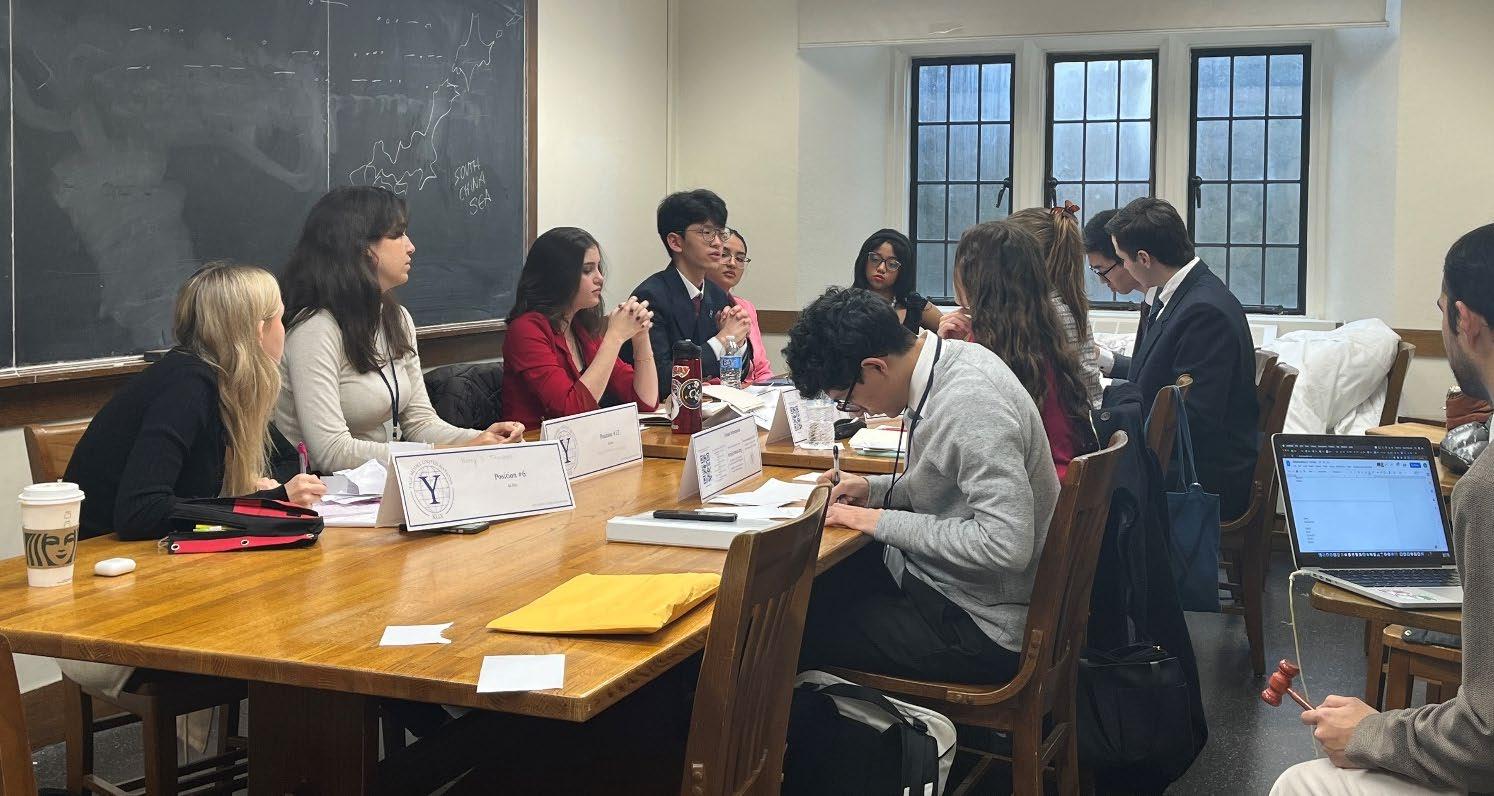
Kicking off the journey at Yale, I was elated to stay on campus for the next few days. Yale MUN XLIX featured fresh opportunities ranging from committee sessions to the Global Exchange Program. As a delegate in Ad Hoc, I burned my creativity to produce innovative solutions. As Ad Hoc is a crisis committee, every component, such as the topic was given on the day of the conference. I revved up my impromptu brain and performed to the best of my ability to represent James F. Byrnes at the Potsdam Conference. On the other hand, “connections” is another keyword that describes my experience at Yale. I fostered valuable connections with delegates, chairs, and experts. For example, I exchanged contacts with a speaker from the New York Times during GEP. In a nutshell, Yale was a wake-up call to the importance of networking.
As another prominent educational institution, Columbia University featured compelling qualities ranging from a magnificent campus to the core program. Hearing from a 2021 graduate, I dug deep into Columbia’s values and culture. The core program dropped my jaw. Columbia offers a core program to all undergraduates that provides exposure to a wide variety of topics, opening doors to opportunities for its students. Although some students with a set path may not find Columbia’s core as

attractive, I am enamored with Columbia’s open-mindedness and attention to detail. Overall, the campus tour and fireside chat with a graduate were worth every second.
The first lecture of the program featured Mr. Cheng (the Economic Affairs Officer of DESA) as a speaker.
UNDESA is part of the UN secretariat headed by the UN Secretary-General under the umbrella of the UN’s Principal Organ. The committee has deep ties with UNDP, UNICEF, and specialized agencies such as the IMF and World Bank. UNDESA focuses on environmental support work, organizes and facilitates conferences/meetings, provides intergovernmental support, conducts analysis, and invests in capacity building. Capacity building stands at the core of UNDESA’s work as it translates policy frameworks developed in UN conferences into action. Essentially, UNDESA is the counselor of the United Nations.



The Economic Analysis and Policy Division of UNDESA forecasts economies under 3 branches: monitoring and analyzing economic trends (short-term), analyzing long-term development trends, and capacity building.
The World Economic Social Survey is an annual development report that tracks the evolution of global economies mandated by the Secretary-General in 1948. However, this report is suspended at the moment but highly anticipated to resume in the aftermath of COVID. UNDESA issues other reports, such as the Financing SDGs report to help UN Organs and NGOs to track progress and learn from mistakes.
Guided by the UN development agenda, the evolution of UNDESA dates back to 1961. From the First UN development Decade to the 2030 Agenda for Sustainable Development, UNDESA shares a rich history in development. As a fun fact, the SDGs was envisioned by the founding decades of development. There are two major outputs from UNDESA: MDGs and SDGs

The Millenium Development Goals (MDGs) are the first incident where the global community gathered to tackle social issues. It is also the predecessor of the SDGs that specially targeted issues in developing countries. On the other hand, the Sustainable Development Goals (SDGs) target issues generated by developed and developing countries. In the words of Mr. Cheng, “the SDGs is the United Nation’s Frankenstein” that required years of negotiation and deliberation. The SDGs are built upon the 3Ps: People, Prosperity, and Planet.
DESA works on reports such as overlapping crises, frontier tech, demographic transition, rural development, inequality, and financing for sustainable development. All reports revolve around inequality. They all aim to reduce inequalities in sustainable development. Hence, there are two flagship reports that keep DESA in progress: the Sustainable Development Outlook 2021 and the SDGs at a turning point in 2022 July (HLPF).
Reports are more important than ever because society is halfway through the SDGs. Now is a good time to measure our progress and reflect on what can be done better. Moreover, reports provide insight into what can be done before 2030. Nevertheless, the international community is unlikely to achieve the SDGs by 2030.
Coming back to overlapping crises that impact the progress on the SDGs, climate change, COVID, and the war in Ukraine work together to cause trillions in economic losses and generate delays.
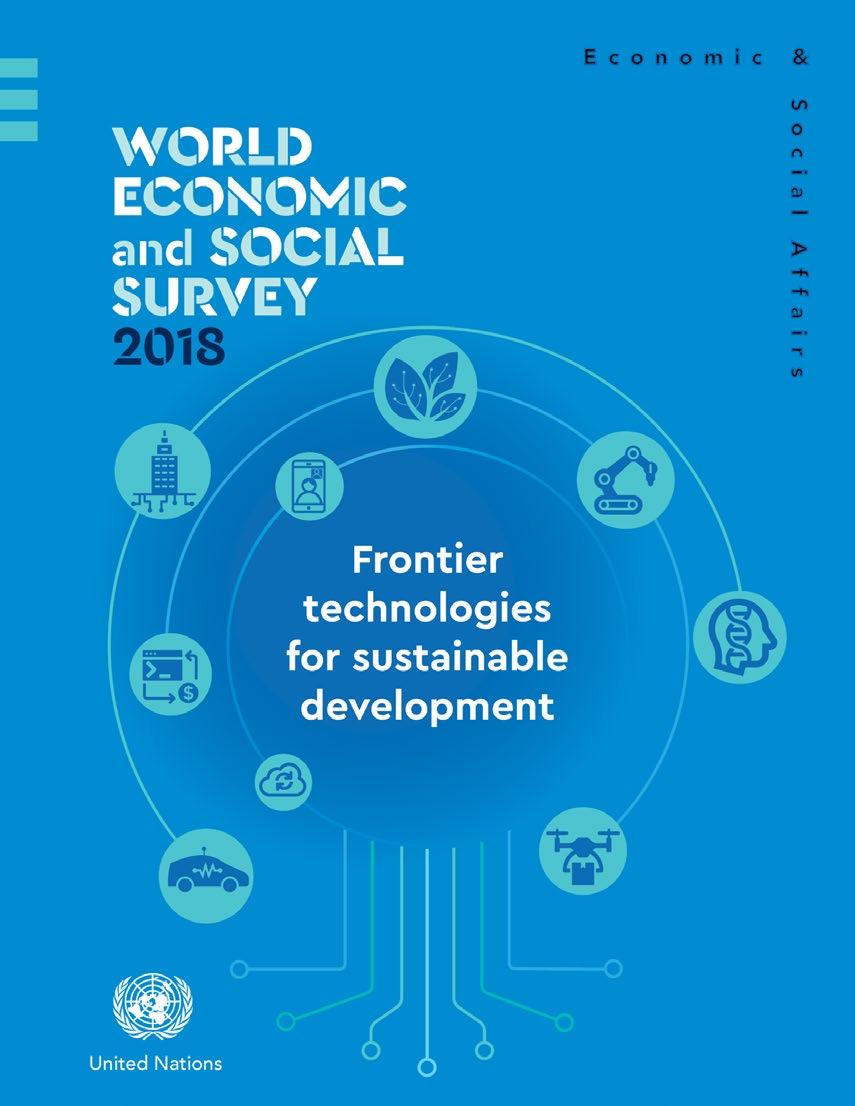
Therefore, Reducing inequalities is more difficult. That brings in the Gini coefficient that measures inequalities between countries. The higher the worse, and the lower the better.
COVID bears the most responsibility for the hike of the Gini coefficient. COVID puts inequalities in a vicious cycle where existing inequalities exacerbate. In simple words, pre-pandemic inequalities increased over time. People more exposed to COVID, more susceptible to collateral health damages, less represented in clinical trials for vaccine development, less represented in policymaking processes, and unemployed are the direct channels of inequality. For example, regarding clinical trials, vaccine trial participants were mostly from the western population (80%), while Asians and Africans account for 80% of the global population.
Inflation is another troublemaker for DESA. While developed countries are relatively more affected, as crises amount and time elapse, inflation reaches all corners of Earth. To accelerate the progress on the SDGs, society must focus on SDGs that are interlinked, target people directly, harness new opportunities for faster SDG progress, invest in policy and infrastructure resilience to counter unexpected events, listen carefully to warnings, and strengthen multilateral cooperation for universal progress.

Regarding a few questions asked to Mr. Cheng on “How does the United Nations come up with statistics and numbers on big data, such as inflation, Gini coefficient, etc?” and “Are data forecasts often accurate?” he answered that DESA harnesses its convening power and connections to crossreference and assess to retrieve data. However, he confesses that data predictions are often off, and unexpected crises derail DESA’s efforts.
After the first lecture, I moved on to the Holocaust museum, which portrayed the horrors of Nazi atrocities. The #Fake Images section stood out as it presented a philosophical question on preconceptions. Society floods humans with bulks of information every day. We have reservations and preconceptions that subconsciously label people with connotations and pair them with specific objects. Presumption and prejudice should never serve as justification for evaluation, instead, evidence should be at the forefront.


The Knotted Gun Statue, located outside the General Assembly building serves as a wake-up call to the international community on the threats that violence poses. Viewing the statue in person was absolutely surreal.
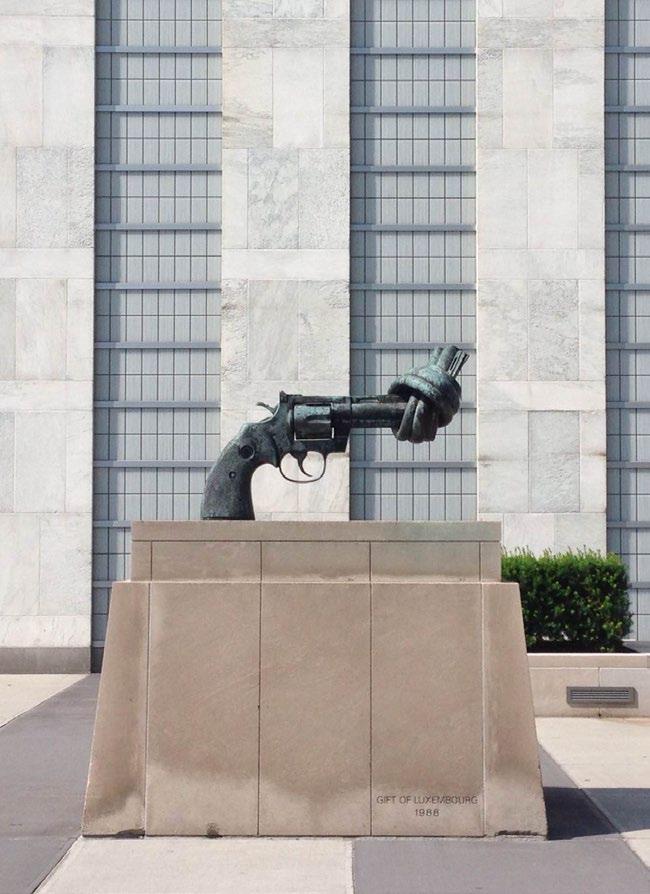
With a tour guide from Madagascar, I refreshed my brain with the history of the United Nations and visited conference rooms where resolutions were passed. The highlight of this tour was entering the UN General Assembly. I still need to pinch myself to fully fathom that I stood at the very place where heads of states gathered to resolve pressing issues ranging from poverty to climate change.
The first lecture of the program featured Director Christopher Williams from UN-Habitat.
The UN is a collection of departments that facilitate different sectors (UN bureaucracy). Relationships between governments and the UN are essential to the functioning of this body. The UN-Habitat is governed by the general assembly. Fun fact, the ‘boss’ is the president of the general assembly, not the secretary general. Coming back, UN-Habitat represents 139 countries and collaborates with domestic ministries and UN agencies to tackle specific issues regarding sustainable development.
Concerning SDG 11, UN-Habitat provides guidance to countries on what aspects of urbanization and housing should be prioritized. For example, they encourage reducing dependence on private transportation (ties to SDG 13) as it leads to a better quality of life, reduced poverty, etc.

Director Williams highlighted the importance of targets and indicators because they help the UN keep track of progress. Indicators measure whether progress is successful or not. He also mentioned that the SDG Summit in September 2023 will serve as the halfway checkpoint that will guide the UN on what steps it can take to recalibrate itself.

UN-Habitat was created by governments that sought to look into the built environment. The agency created the center for human settlements and UN habitat assembly where heads of states convenes. UN-Habitat is driven by 3 major conferences: Habitat 1, Habitat 2, which laid out a 20-year plan of action, and Habitat 3 with a new urban agenda.
UN-Habitat aims to improve access to decent housing, climate mitigation, adaptation, financing, and crisis management. For example, it passed “Road to Zero” to reduce carbon footprint to zero. Moreover, it aims to tackle crises, such as man-made conflicts in cities, health emergencies, climate change (environmental crises), and localization (Local 2030 coalition) to promote the role that cities play in shielding world economies
When asked a question about the significance of SDG #11, Director Williams responded that all SDGs are equally important and that countries should make integrated approaches through strategic entry points. Instead of making separate investments into different SDGs, countries need to identify strategic entry points to generate several by-products with connections to other SDGs

The third lecture featured Matthieu Cognac, a Senior Multilateral Cooperation Specialist at ILO.
UN Charter Article 55: The UN shall promote a high standard of living, full employment, and conditions of economic and social progress and development. The ILO fights for Labour Rights. The speaker highlighted that labor rights are human rights for workers. He also stressed that labor is not a commodity.
The ILO was founded in 1919 at the Treaty of Versailles. After the dissolution of the League of Nations, the ILO automatically fell under the United Nations. “Governments + Employers +Workers = Tripartism.” The ILO is a tripartite agency where recommendations are formed from the consensus of those three sectors. “Si Vis Pacem, Cole Justitiam” is the slogan of the ILO which translates to if you desire peace, cultivate justice. The ILO believes that promoting social justice and fair globalization through decent work is essential. Decent work means that people should have productive work, reasonable protection of personal life and family income, dignity, etc.

There are 190 International Labour Standards. Some examples include: an 8-hour working day, minimum wage and age, access to social protection, leave benefits, safe working conditions, etc. There are 4 fundamental pillars that build the foundation of the ILO:
1. Freedom of association and collective bargaining
2. Elimination of forced labor
3. Abolition of child labor
4. Elimination of discrimination at work
On the flip side, without Labour Rights inequality increases, leading to a domino effect of socioeconomic issues. Therefore, the ILO issued a human-centric development agenda for the future of work:
1. Increasing investment in people’s capabilities
2. Increasing investment in the institutions of work
3. Increasing investment in decent and sustainable work
I believe that this hashtag accurately represents the work of the ILO: #PeopleoverProfit.
When the speaker was asked, “how can the ILO directly engage with domestic communities and institutions to embed Labour Rights?” he answered that the ILO issues recommendations and capacitybuilding to allow domestic institutions to pursue ILO’s mission. However, the ILO rarely intervenes in certain situations where significant labor values are at stake. For example, when a factory was pulled out from Samoa (a small island with a small population), the ILO intervened to ensure that 300 workers were not laid off.
Also, he explained that countries that ratify ILO recommendations are put under the supervision of ILO. When there is a complaint on a labor rights infringement, experts gather to assess the issue and convey future recommendations.
Korea and the UN

Korea and the United Nations share a deep history. The ROK was officially recognized by the UN in 1948 and the UN dispatched troops during the Korean war. The ROK and DPRK became member states and Korea was selected for a non-permanent seat in the UNSC (1995). Moreover, Ban Ki-Moon served as the 8th Secretary-General. As a fun fact, Korea is the 9th largest contributor to the UN’s budget.

Korea’s UN Multilateral Diplomacy stands at the core of its mission to the UN. Korea maintains international peace and security through UN peace operations, non-proliferation, and disarmament. For example, Korea engages in peacekeeping activities and development including Action for Peacekeeping (A4P). On the other hand, Korea is committed to international disarmament and non-proliferation efforts (NPT, CTBT, FMCT, etc).
Korea also anchors on addressing Humanitarian needs. COVID derailed efforts and created discrepancies in forecasts; therefore, Korea pledged to focus on vulnerable groups. Korea firmly believes that international cooperation in addressing COVID is paramount. Protecting human rights, including the rights of DPRK citizens, vulnerable groups, and people using digital tech are crucial to the protection and promotion of democracy.
Overall, Korea’s efforts fall under the umbrella of promoting sustainable development. Korea is fully invested in advancing the 2030 Agenda for Sustainable Development and seeks to reverse the impact of COVID on the SDGs. Through the TRUST (Transparency, Resilience, Unity, and Safety Together) policy Korea shares experiences and lessons learned with the international community. Regarding climate change, Korea aims to reach carbon neutrality by 2050 through Green Grown (P4G), GCF, and GGGI.
The speakers briefed on UN opportunities and their structures. When asked about a question on youth inclusion, both speakers responded that Korea is pouring in an effort to allow youth to enter this field. However, they confess that there are not many opportunities at the moment.
UNIDO
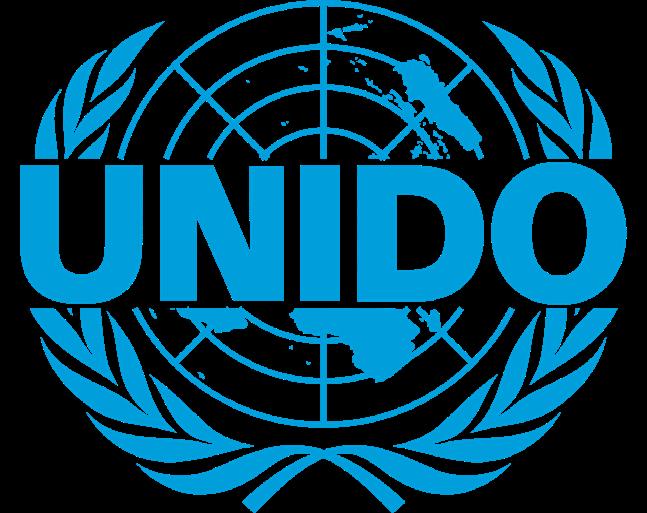
This lecture featured Ralf Bredel, Director and Representative to UN Headquarters.
SDG 9 aims to promote resilient infrastructure, inclusive and sustainable industrializations, and foster innovation. UNIDO was created in 1961 under the department of DESA by ECOSOC and became a specialized agency in 1985 with its own budget apart from the UN budget, member states, executive head, own mandate, and framework. UNIDO is a global agency present in 156 countries. For instance, they have an investment and technology office in Seoul.
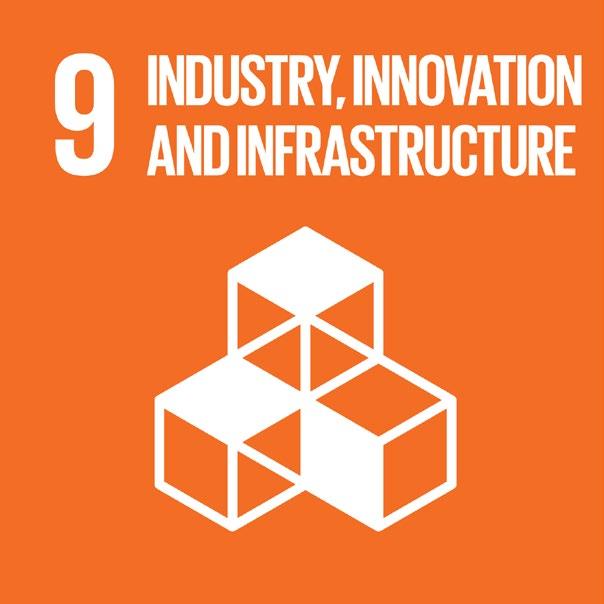
In the Asia and Pacific region, UNIDO has 32 member states including developing and developed countries. The agency has a 3-way channel where it prepares the IDC to UNGA every two years then the biennial UNGA resolution is passed on IDC, leading to contribution to the HLPF. UNIDO will co-head a review of SDG 9 with DESA in 2023.

SDG 9 plays an integral role in achieving all the interlinked SDGs. None of the SDGs can be achieved without achieving an SDG. SDG 9 is intertwined with economical goals (SDG 8). For example, UNIDO believes that structural transformation generates industrialization and high productivity. Moreover, the organization has emphasized that countries that adopt innovations and align themselves to new industry trends tend to develop faster.
SDG 9 also shares ties with poverty and inequality as industrialization stimulates poverty reduction with increased economic and employment opportunities. On the other hand, industrialization drives less income inequality as manufacturing provides well-paid jobs and

enables economic mobility. Essentially, SDG 9’s success automatically drives up the achievements of other SDGs.
The United Nations and countries can measure SDG progress through targets and indicators. Targets tell us where we need to aim our arrow, and indicators determine what success may look like. The SDG Global Indicator Framework shows where we stand in terms of the SDGs, what we have accomplished, and what we need to achieve. There are 12 indicators that assess infrastructure, innovation, and industry (UNIDO’s focus). UNIDO focuses on economic, social, and environmental sectors.

SDG reporting stands at the core of this year’s goals. At the national level, countries can report their progress on the SDGs through Voluntary National Reviews (VNRs). Thematically, countries can assess inclusion, equality, and decent work. Regionally. organizations, such as the UNECA and UNECE can guide countries. Then, it all boils down to the HLPF where countries gather to assess the SDGs on a global level.
Regarding progress, targets 9.2 and 9.4 stand at the forefront of achieving SDG 9. For example, the MVA GDP of all LDCs has significantly increased.
With the expiration date closing in (2030), UNIDO seeks to act as a “custodian agency” for SDG 9 by ensuring inclusive and sustainable industrial development. UNIDO’s core functions are analytical and research work, technical cooperation, SDG 9 monitoring, reporting, and implementation. The agency uses tools, such as the SDG 9 Data Platform and the UNIDO SDG industry index to measure each country’s progress. UNIDO displays that Korea is on a good, substantial track.
UNIDO prioritizes supporting sustainable supply chains, stopping climate crises, and reducing hunger. Therefore, the agency successfully produced projects, such as the SDG accelerator in Latin America. Industrial policy paves a way for SDG 9 to strive. UNIDO believes that industries should aim to support sustainable development to bounce back on the paradigm shift in industrial policy. The emphasis today is on long-term interventions.
UNIDO serves as a mediator for countries, providing consultations and assistance. UNIDO aims to rescue the SDGs under world crises: poverty and hunger, COVID, and the Fourth Industrial Revolution (increasing gaps). UNIDO helps nations prepare for these crises to bounce back on SDG 9 progress. Greening Industries are the future with the world growing towards incentivizing green products.
When the speaker was asked, “how does UNIDO ensure that member states abide by its recommendations and continue progress on SDG 9,” he responded that there have been attempts to legally enforce industrial policies through UNIDO-sanctioned conventions. However, as a non-
normative and technical organization, UNIDO finds it easier to implement its recommendations as it can directly approach countries and domestic issues to support and provide financial assistance.

This lecture featured Angelica Shamerina, Environmental Specialist.

Energy is ubiquitous. It’s like having 100 servants. However, not everyone has equal access to energy. Therefore, the UNDP aims to advocate for SDG 7 to promote clean energy.
SDG 7 aims to ensure access to affordable, reliable, sustainable, and modern energy for all. However, progress has slowed due to overlapping crises. For example, progress on energy efficiency and access are on the decline, and 2.2 billion people do not have access to clean cooking fuels, contributing to issues related to zero hunger (SDG 2).
Regarding SDG 13, historic agreements, such as the Paris Agreement aim to limit global warming to 1.5-2 degrees Celsius above pre-industrial levels, and NDCs are key to achieving these goals. Currently, emissions are increasing, the Earth is warming, investments are declining, and the environment is taking all the hits. Therefore, it is essential for governments and global citizens to advocate for clean energy.

Clean energy is essential to solving climate change as energy is the key contributor to CO2 emissions, and the carbon budget is running out. Renewable energy technology exists, but implementing it is an obstacle. Therefore, the global energy system must be reinvented to address all the SDGs.
The same goes for sustainable development. 1 in 10 people doesn't have access to reliable and affordable energy. Hence, decarbonization is dubbed as the hero to drive economic and environmental success. Moreover, investing in the energy transition and sustainable energy is the path toward a resilient society.
The UNDP’s efforts in Mauritius and Peru proved that clean energy helps solve hard labor, food waste, lack of healthcare, and lack of opportunities. The UNDP issues Mini-Grants of up to 150,000 dollar grants for communities aiming to launch renewable energy projects for countries aiming to transform their vulnerable energy system.
On the other hand, the UNDP believes that young people can help with activism and advocacy while initiating projects within communities and schools. The UNDP programs support youth through innovation programs on education, skills development, grants, etc.
This lecture featured Eunhee Jung, Founder, and Director of IVECA.
Global Citizenship is the keyword for this lecture. As all SDGs are interconnected, it is crucial for people to be interculturally connected. Regarding BTS’s song “Permission to Dance” played in the lecture, the song affirms that humans are inherently born with rights and that we don’t need permission to exercise our rights.
IVECA stands on four pillars that solidify and advance its mission: Global Citizenship, Intercultural Competence, the SDGs, and Global Citizenship for the SDGs. IVECA believes that opportunities, such as Model United Nations act as a bridge for students to have exposure to the UN and the global community.
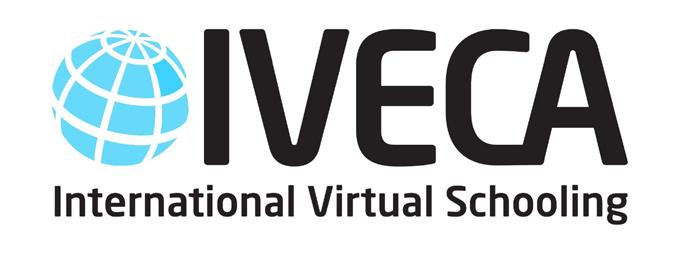
Global Citizenship is constructed of cognitive, socio-emotional, and behavioral human characteristics. A cognitive individual must wield the ability to consume, digest, and accurately evaluate knowledge. On the other hand, people must learn how to interact with communities to hone their socio-emotional skills. Finally, people should have behavioral instincts to act on pressing issues. Global citizens value justice, equality, dignity, and respect to accurately understand global issues and embrace their identities. They also act collaboratively to tackle global issues to understand interconnectedness and interdependence. Moreover, those with intercultural competence approach issues holistically with an aware and knowledgeable mindset to communicate with confidence and proper attitude.
Looping back to the SDGs, there are 6 factors that make up the 17 goals: poverty, inequality, climate change, environmental degradation, conflict, and injustice. Ultimately, the goal is to sustain humanity and Earth. Moreover, interconnectedness (Goal 17) is essential to achieving the SDGs.


This lecture featured Roy Small, a Consultant of the UNDP.
SDG 3 contains 13 targets related to health MDGs, emerging health priorities, and means of implementation. For example, target 3.3 aims to end epidemics of AIDS, TB, and malaria. However, the UNDP states that the lack of investment derails efforts to advance SDG 3.

The UNDP views the entire SDGs as health goals (interconnected) and believes that progress on many SDGs depends on improving health outcomes. Therefore, the organization came to a consensus that when there is a limited budget, it is essential to find strategic approach points.

The UNDP highlights that current health threats, such as COVID and the climate crisis, inflict tremendous impact on health, social, and economic factors. For example, COVID brought employment, housing, and education levels down to a record low.
In order to tackle these issues, the UNDP creates tailored frameworks. For example, for HIV, the organization emphasizes that economic inequality, poverty, education, and inequality can all either increase or decrease the risk of HIV (Distal factors). The Zomba study in Malawi proved the effectiveness of this framework by showing a 64% reduction in HIV risk.
The UNDP created action areas and development strategies for 2025 to reduce inequalities and exclusion that affect health (SDG 10), promote effective and inclusive governance of health through partnerships (SDG 16), and build resilient and sustainable health infrastructure (SDG 3). For example, the Global Fund helps end public health crises by 2030. Also, the UNDP uses an index called the NCDs to measure economic burdens. An increase in NCDs causes a downtick in economic output. For example, premature deaths cause reduced labor supply.
Countries are currently set up towards reacting, not preventing. Moreover, COVID is described as a “perfect storm” as around ¼ of the population has underlying conditions that make them more vulnerable to COVID. Therefore, we can not afford another pandemic like COVID. Therefore, people-centered health services are essential to avoiding another global pandemic.
When the speaker was asked how students can contribute to achieving SDG 3, he mentioned that it is essential for students to help resolve misinformation and disinformation, engage in politics, and promote scientific literacy.
SDG 6 is essential to tackling the global water crisis. Around 70% of the population is under severe water scarcity for at least 1 month a year, and ⅓ people are exposed to unsafe drinking water.
The UNDESA believes that the effects of Climate Change (SDG 13), unsustainable production and consumption (SDG 12), and the water footprint of products (SDG 2, 12) are felt most strongly through water. Regarding water footprint, the world uses 3800 liters per day. For example, 1 kilo of beef needs 15,000 liters of water. Moreover, as more than 80% of used water is not collected or treated, water also can cause pollution. Therefore, 3.5 million people die every year due to inadequate water supply and hygiene.
As of now, the world needs to work 4x times faster to achieve SDG 6 by 2030 and water can be the dealmaker of all the SDGs due to the interconnectedness of SDGs. The world is responding to the global water crisis to ensure the availability and sustainable management of water and sanitation for all. For example, several organizations in the UN have water-specific programs and projects. Case in point, UN-WATER, helps coordinate activities, inform policies, monitor, report, and inspire action.

HLPF’s SDG Summit 2023 focuses on a selection of SDGs (SDG 6 is one of them) to report on the progress of the SDGs. On the other hand, the UN 2023 Water Conference provides plenaries for member states to announce commitments and share lessons learned. However, there are some key obstacles that slow progress on SDG 6, such as politics, lack of investments, and capacity.
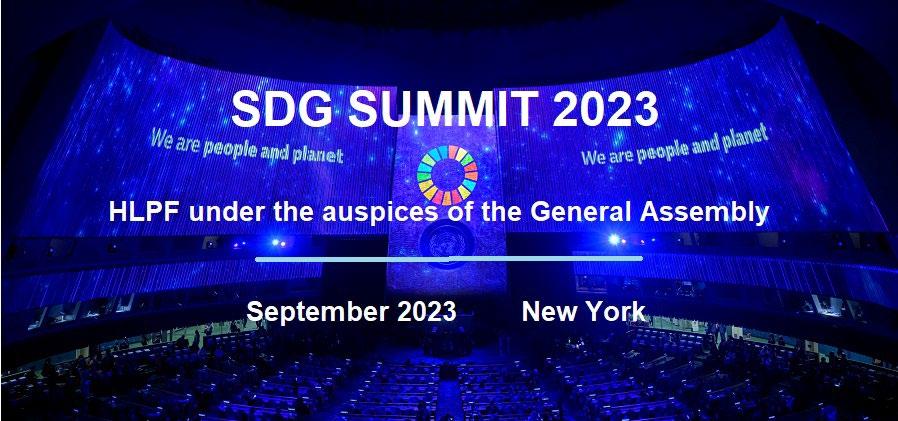
The UNDESA believes it is a shared responsibility for humans to achieve SDG 6. Therefore, it encourages people to take individual action, such as saving water, and Major Groups and other stakeholders (MGos) to leverage their power to tackle the water crisis.
When the speaker was asked how can DESA branch out to water-related issues and provide the capacity to solve them, she answered that DESA does not have the capacity to tackle local issues one by one; however, it can share knowledge and use convening power to allow several domestic institutions to engage in the issue. Moreover, when she was asked to expand on the role of technology and innovation in tackling the global water crisis, she responded that they are accelerators toward achieving SDG6.
References:
https://www.un.org/tr/file/70662
https://www.un.org/development/desa/dpad/document_gem/wess-report/
https://www.un.org/ungifts/non-violence-0
https://www.un.org/youthenvoy/2013/08/un-habitat-united-nations-human-settlements-programme/
https://sdgs.un.org/goals/goal11
https://www.un.org/youthenvoy/2013/08/ilo-international-labour-organization/
https://www.unido.org/
https://sdgs.un.org/goals/goal9
https://www.undp.org/jposc/undp-0
http://www.website.iveca.org/
https://sdgs.un.org/goals/goal17
https://sdgs.un.org/goals/goal3
https://hlpf.un.org/

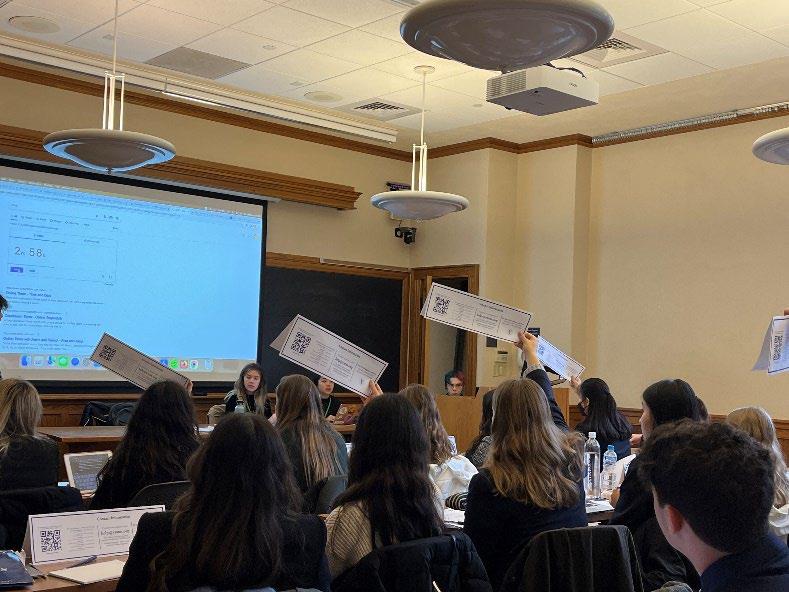
The 49th YMUN was a high hurdle that made me develop in all directions. When I got the Dominican Republic as my country, and the CSTD as my committee, I was stumped to face unfamiliar factors. Vaccine development and global supply chain which were the agenda of the CSTD were new topics that I didn't consider before too. So, my preparatory process for YMUN was the same as the study from the ground up. Then, I started to realize the overall situation of the Dominican Republic and the seriousness of the topics. Sympathizing people who had suffered from problems with vaccination and the supply chain, I prepared YMUN with a sincere passion.
From the opening ceremony, I realized that positiveness is needed to effectively argue my opinion through other delegates who actively greeted each other. The speaker's words, "Come out from your comfort zone!" amplified this enlightenment and excitement.
During the first session, I was busy alerting other delegates who proposed solutions from a different perspective from mine. However, as other delegates' opening speeches were conducted, I learned that MUN is not a competition, but an Agora nowadays. Although delegates argue different analyses and solutions, all of us pursued a single goal, the happiness, and well-being of all mankind. Cooperating with other delegates to make a unified resolution for those goals bring me a lot of achievement. When the resolution of the bloc including me was passed, I was so proud since it was a result of all delegates' cooperation and efforts.
YMUN taught me that United Nations is an institution that concretizes vague and necessary values, and achieves them eventually. Although it was a "mock" UN, I was fascinated by the works that are being conducted by the UN through that experience. Therefore, YMUN XLIX was a great foundation and opportunity for me who took a first step towards the more broad world.
Although I didn't attend any lectures yet, UN headquarters was enough to fascinate me as soon as I saw it. All kinds of stuff in UN headquarter such as a bent gun statue, SDG posters, and GA conference hall symbolized the soul and value of the United Nations. I couldn't believe that I am in the UN headquarters which I saw and learned through a textbook.

Also, all lecture that was conducted through the training program was amazing and inspirational for me. Although all speakers were in different committees and countries, they have the same pride, value, and mood. I was so surprised that they answer and discuss merrily the considerable amount of questions though it took a lot of time.
Especially, the fact that the UN is the same as the government of the world which I learned through the lecture about UN-HABITAT was interesting. Before this program, I thought that the UN is a unified organization that simply works in unison. However, that fact told me that the UN is the more complicated and practical organization that reaches its influences in every direction. Also, through the lecture about UNDP, I was sure that the UN is related closely to my value and the biggest goal, "happiness". It was an amazing experience to see the same goal, "happiness" scribbled on a piece of paper during the lecture by one of our speakers, Roy Small. I realized a vague goal could be a driving force to change the world through his lecture.
Since the training program at the UN gave me a lot of new information and enlightenment, the last day at UN headquarters felt too short for me. However, as our UN tour guide told us, I could know that sharing my experiences and all knowledge with others will be another procedure as an extension of the training program. After this program, I realized that I naturally imagine my future in United Nations. Since I saw personally that all workers in the UN have strived to realize important values for all humanity, I thought that working while being a part of them would be an honor. So, the training program at the UN was a valuable opportunity that changed my direction of life completely.
SDG4 was the first trigger that I started to be interested in being an international civil servant. When I first learn about SDG17 at a school, the red-colored SDG4 which means "quality education" fascinated me. Since I had been interested in the welfare and happiness of teenagers and kids since I was a middle school student, I started to consider SDG4 as my goal and to search for various committees in the United Nations. Among several committees, UNICEF which is highly linked to my future plans seemed the best option for me. At that time, I decided to work at UNICEF in the future. However, the program at the UN headquarter taught me that my plan for the future was too vague and ignorant.

Hoisted national flags standing in front of the building of the UN headquarter were the most noticeable one when I first visited there. Hoisted flags without considering which is a developing country or developed country were enough to indicate the power of the UN which influences

globally. The next thing I saw was a statue looking like a bent gun. The statue named 'non-violence" showed the UN's goal to remove any violence, war, and the Holocaust. An exhibition that was made to prevent a stereotype and discrimination also showed the UN's other goal to enhance the dignity of all minorities. When I walk downstairs, I could see the inner part of the building which is filled with SDG17. The character statue representing each goal of SDG17, and all products based on SDG's design made me realize the importance of SDG17 in the UN. However, although I knew that SDG symbolizes universal values, I didn't know why the UN concentrate a lot on it. I just felt vaguely that if all of SDG17 are achieved in the future, it will be the starting line of a better future for humanity.
The most meaningful program at UN was listening to the lectures of amazing speakers. Speakers who are from different nations told us the overall value of the UN and certain SDGs that they had worked hard to achieve them. Since most speakers were from different committees, I could get various knowledge about the rights of laborers, energy, health, development of developing countries, and so on. But the most impressive thing was that I felt a very similar mood to all speakers who had lectures with diverse topics. Although they talked about different contents, the conclusion that they wanted to reach was the importance of the UN and SDG, the necessity to make a better society, and the roles of the future generation including us. Through their conclusion of lectures, I could sense indistinctly the spirit of the United Nations. Also, I realized that the goals which the UN had pursued such as peace are not just a desire, but a descriptive objective that should be achieved necessarily to enhance the quality of life of all humans. After the final lecture, I researched the origin and spirit of the UN to know whether my assumption is right or not.

When World WarII towards the end in 1945, representatives of 50 countries started international cooperation to prevent another war and to guarantee a peaceful future. On April 25th, 1945, 50 nations started the conference about establishing an international organization in San Francisco and signed the Charter of the UN before the conference. The origin of the Charter of the UN was the Atlantic Charter which was signed in 1941, and its meaning is "certain common principles in the national policies of their respective countries on which they base their hopes for a better future for the world". That is, the UN is an international organization based on a desire for peace, not individual profits or financial benefits. Although several international organizations such as ILO had existed before the UN, an allinclusive organization like the UN was the first case. On the back side of the Charter of the United Nations, the reason for the existence of the charter and the ultimate goal are written. The charter pursues saving humanity from war, reaffirming human rights and the dignity and worth of the human person, proclaiming equal rights of men and women and of nations large and small, and promoting the prosperity of all humankind. Likewise, the UN has worked hard to accomplish these values which seem ideal. Of course, I also learned that these values are important through classes and books, but I wondered how the UN works to achieve these seemingly unrealistic plans.
The lecture of Christopher Williams from UN habitat was a clue to my curiosity. He said that the "UN system is a reflection of a government". After that, he emphasized that the UN doesn't always work in unity, but work by separating all goals and department as a government in each country. Additionally, he told us that SDGs are linked together closely and if one of them collapses, the whole SDGs will be interrupted by that. Through his lecture, I could learn new ideas that I can't think of before. Firstly, SDG4 which I have thought important cannot achieve independently. I usually thought that doing work that only fit the SDG4 is enough to enhance the quality of education. However, children in low-income countries cannot take education because they have to do work. Girls in a country that has gender discrimination are taken away from their opportunity to study. Children in a disputed country have to risk their lives to go to school. Like this, I realized that when other SDGs that are linked with education are satisfied, SDG4 can be achieved finally. Secondly, working in UNICEF is not the only option to
work for teenagers. Although each committee influences the other, I have thought that UNICEF is the only selection to pursue my goals. However, through the lecture, I learned that I can help teenagers in various ways in every committee if I sustain my interest in them.
At the same time, I thought that the connected system of the UN can be applied to each government also. Separating public goals, each government has to run its departments based on a big aim. However, I thought that nowadays, many governments are not forming a sustainable system like the UN.

For example, the suicide problem in South Korea is the most representative case of this consideration. South Korea has had twice as many as the average of OECD nations. Practically, the rate of suicide in 2022 increased by 1.2% than before, and it reached a scale that is the same as a person's suicide every 36.6 minutes. To solve this problem, the Korean government tried to increase counseling workers and form an online counseling program. However, the suicide rate is still growing every year. But, is the scarcity of counseling workers or centers the reason why students suicide? When an institution investigates the reason for it, the stress of studying(47.3%) and a competitive society(51.4%) made up the largest proportion. That is, to prevent more deaths, a government has to change the overall educational system and the social atmosphere. For this, many aspects of society have to start a movement for change. To decrease a competitive mood, the school performance system has to be modified, and to prevent an excessive pursuit of admission to prestigious universities, guarantees that people who only graduate high school can live happily are needed. However, many countries including South Korea are leaving this problem to an only departments without multifaceted analysis. Although the speaker said that the UN is working similarly to a government, the real government is not working by considering relationships between each department.
Therefore, I think that each country should have a big goal as the UN has done. The thing that I got in the UN headquarters was that every worker never forgets the biggest goal of the UN while they are working on small aspects. I think that government has to make their catchphrase that includes all descriptive policies to make a better future. Also, I realized that the UN has to form close relationships between the UN and governments. Each country's governments have to modify its system by referring to the UN which conducts its role brilliantly as the government of the world, and the UN have to lead governments to share the biggest goal of the UN and pursue it together. When the UN and each country recognize each other as a great partner and try to work together, SDGs and important targets of each country will be achieved more easily than before.
The next most important experience in the UN was the tour at the UN headquarter. Though of course, many artworks are impressive, our tour guide was the most amazing factor of the tour. After the tour was finished in the GA conference hall, she told us several pieces of advice to build a better society. There are two pieces of advice: exercising our right to vote and sharing information that we learned in the UN to make another partner to work with. Of course, these two pieces of advice were meaningful. But, I was moved more by the attitude of our tour guide, because although advising students is not a duty for her, she shared her values and knowledge with pure passion. Her explanations seemed based on her real belief which is similar to what the UN has pursued. Through this experience, I realized that the most important factor to becoming a global citizen and even a worker in the UN is "paying attention". To be a worker in the UN, multilingualism, and knowledge of international affairs are highly needed. But, I learned that the foundation of these factors is pure interest in a better future and other countries. Indeed, all people I met at the UN headquarter was paying attention to the international society and SDGs, working hard based on their interests. Thus, I reflected on myself to study international affairs by obligation for homework and made myself a promise to improve the interest and awareness of international society.
If there is anything that has changed the most through this program, it will be my future path. As I mentioned before, I was interested in education and the mental health of teenagers. Although I hoped vaguely to work in an international organization, I didn't know the real values of that work. However, as meeting people at the UN and learning their work, I realized that working at the UN is the same as working for humanity and our planet. Therefore, I started to think that it will be great to work with them in various methods. So I'll remember all people and experiences that I met in the US, striving to be a worker in the UN someday.
 Chaeeun Ahn Dongtan Global High School
Chaeeun Ahn Dongtan Global High School
The 49th Yale International Model UN was the biggest challenge that I’ve ever had in my whole life. Since I haven’t tried MUN a lot, I was concerned from the beginning of the preparation. When I went to the Omni hotel for the International Delegates Reception, I heard various languages from all around the globe and it was only then that I realized I was in America. Walking around the room, I had a short conversation with other people about the committee, country of origin, etc. At first, I was nervous and did not know what to do, but as time went on, I was able to adjust to the atmosphere and find myself participating in the conversation. We went to Woolsey Hall to attend the Opening Ceremony which was held 2 hours after the reception. Woolsey Hall was really large and grand. I was somewhat overwhelmed by the scale of the conference when I saw so many people filling the hall. After the Opening Ceremony, we moved to the conference room by committee. I was in the World Bank and acted as a Republic Of Korea delegate. The first committee session was so embarrassing at first because it was a lot different from the MUN that I’ve done at school. The conference was held at a very rapid pace and everyone participated passionately. I was impressed by the speech that the Ukraine delegate gave. His appealing and clear argument was convincing. I joined a block at unmod and made some possible solutions. After the schedule, I was worn out and felt anxious for the next few days. However, I tried to think that this is the only chance that was given to me which will never come back again if I lose. When we arrived at the hotel, I spent my whole time preparing for tomorrow’s committee session.
Today was Yale day. I was excited because I was looking forward to it. I registered for Expert Lectures which are ‘International Law Goes to War in Ukraine’ by Oona Hathaway and ‘Killing, Letting Die, and the Trolley Problem’ by Shally Kagan. The lecture by Oona Hathaway was very useful for me to understand the brief concept of International Law. And the one by Shally Kagan was about the trolley dilemma which I was interested in. Sitting in the second seat from the front, I felt that the ability to immerse all students without PPT was great. We vented into the two options that could be divided on
the trolley dilemma, went deeper and deeper into the Fatman dilemma and the Organ Transplant dilemma, and I felt that the synergy between the professor and the student was very strong at that moment. It was a lecture that I took without knowing the passage of time. I became more interested in philosophy, ethics, and dilemmas. For the last Yale day schedule, I applied to the Yale campus tour. I got together at the Phillips Gate and started with a guide student, hoped for good luck by touching the feet of the statue, and went around Yale University to listen to the history and hidden stories there. After finishing Yale day activities, we moved to the Omni hotel again, and have taken committee sessions since then. I tried to adapt a little more than yesterday and contributed to the resolution work. I thought I found a little fun now. Of course, it's hard, but I thought I can improve little by little while doing it. I liked the dim night atmosphere and the occasional glow of Yale's Gothic building with an academic atmosphere while I was waiting on the Yale campus after finishing the committee session late at night.
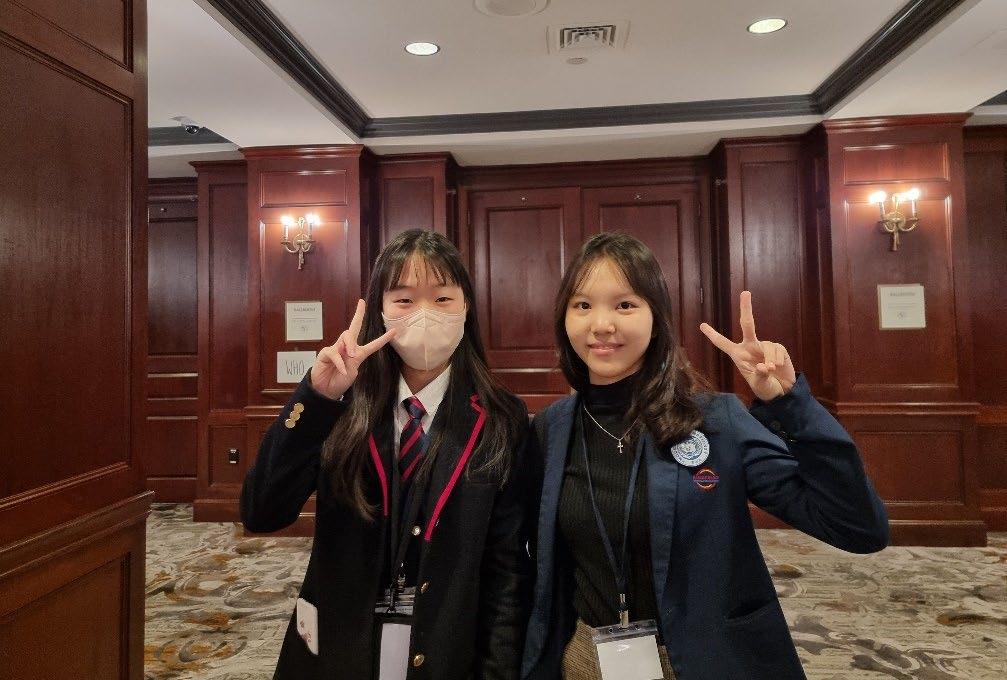
Our committee finished writing a resolution for the first topic which was ‘Financing global health’ during Unmod and we looked through all three resolutions and voted. After lunchtime, we went through the second topic which was ‘Microloans and the Sustainable Development of Nations’. The conference on this topic went a little fast, and as soon as the General Speakers List opened, I picked up a flat card. I presented the speech at this time. I wasn't as nervous as I thought I was and I think I did well. We had Unmod after 2~3 Mods, which I became more confident of the process and contributed to the resolution a lot. The resolution on this topic was also reviewed, resolved, and the session was concluded. After dinner, I waited for a while until 8:30 then went back to the Omni Hotel and joined the Dance Party. I didn't expect much and imagined it, and I was surprised because it was louder and more energetic than I thought. I thought this party was a great opportunity to gather around and hang out with friends from other countries. Today was a very busy but fruitful and good day. I was glad that I was enjoying it more and more.

It was the last day of the MUN. I was so worried about it and I thought that my skills were far lacking compared to other friends at first. However, on the second day, I became interested for some reason and I was getting used to the atmosphere. And by today, I was so sad that there were only two and a half hours left for the MUN. I would have had a hard time if I had more, but I wanted to continue sincerely. Our committee finished Topic 2 yesterday, so we had FUN MUN today. I remember what the Co-Chair said to us. “It is not unconditionally outstanding to come to Yale, nor is he unconditionally lagging not coming to Yale, and someone who learns his goals and what he will get from Yale will truly be able to get help.” I was touched and impressed by her words. After finishing the last committee session, we had Closing Ceremony. The screen showed ‘You've survived YMUN’ in the video, and it was funny and touching. I survived. Next time, I want to ‘live’ beyond ‘Survive’. I wanted to show myself alive and behaving.

I participated in YMUN as a delegate of the Republic Of Korea at the World Bank. Since I was interested in the international community with a focus on environmental issues, I was very worried when I was assigned to the World Bank related to the economy. Even the topic was 'Financing Global Health' and ‘Microloans and the Sustainable Development of Nations’, so it came more unfamiliar to me. Even when researching, it took a long time in the process of finding data, and it seems that it was not easy in the process of understanding the subject, studying the country's position, and think about solutions. However, what I learned during the YMUN was that those concerns and my thoughts were very meaningful. While researching the topic, I recognized myself looking at the world only with the keyword environment, and I reflected on such a narrow perspective. There are so many issues, problems, and phenomena that must be discussed and solved in the world. I realized that I shouldn’t think about global issues fragmentarily. Everything was connected. It made me look back at myself, who had not been deeply interested in various issues. After getting enlightenment, I searched for and prepared for new topics at the World Bank that I was assigned to more diligently. Searching about Global Health issues was more interesting than I thought, and I learned a lot of facts because it was related to the recent COVID-19 situation. While discussing the possible solutions, I realized what I have missed and was able to think about various perspectives. For example, our block came up with 4 key goals for the resolutions which were ‘Anti Corruption, Infrastructure, Independence, and Data Collection’. Before the resolution set the direction with four keywords, we did a lot of mods on whether the solution should be long-term or short-term oriented, and which target to focus on, and it was amazing to feel that the conclusion was gradually refined through such a process. The second topic which was ‘Microloans and the Sustainable Development of Nations’ was also interesting. I researched

deeply about the microloan system and knew that this was related to the social economy. It was a great opportunity to venture into topics that I’d never looked at before. With friends from many countries around the world, I was inspired by their persuasive speeches, and I could break stereotypes by listening to their thoughts.
I felt that efforts in the international community were made difficult, and could feel the true value of communication and cooperation. I gained hope and faith that we could come up with a solution that could eventually solve problems if everyone joined forces with a common problem around the world. Yale MUN was a memorable time and I am very grateful for the opportunity. After participating in the Yale Model United Nations, I decided to continue to challenge the MUN, take a step closer to solving world issues and problems, and continue to make efforts to contribute to the international community. It was a very unforgettable and precious experience for me.

The 20th training program at UN Headquarters was an honorable chance for me to experience the atmosphere of the actual UN. I always imagined myself working for an international organization, contributing to world peace, and negotiating various international issues, and I will never forget the feeling of actually facing the UN Headquarters building. An ideal and distant place called the United Nations unfolded before my eyes, and I had various thoughts. I was so grateful and happy to have this opportunity. As I stepped into the UN building, I saw many meaningful statues, monuments, artworks, frames, etc. related to the international community. There was also a portrait of former SecretaryGeneral Ban Ki-moon, and pictures of the past conferences that were held to discuss various issues. I remember the message that was written in a mirror,
‘Before I flew I was already aware of how small and vulnerable our planet is; But only when I saw it from space, in all its ineffable beauty and fragility, did I realize that humankind’s most urgent task is to cherish and present future generations.’
This message was very moving, and I was impressed because it was so similar to my thoughts. Yes, we have only one Earth. We have to protect the planet for ourselves and future generations.
Starting with UN DESA, we met various people from UN-Habitat, ILO, UNIDO, UNDP, etc., listened to lectures, and explained what they were doing. It was an opportunity I had been looking forward to so much that I tried to understand and remember what they were saying. It was great that I could ask questions to the lecturer. I prepared some questions and I was able to get useful answers. I made a firm resolution that I would study hard and become an international civil servant dealing with environmental issues at the United Nations and come back here again. It felt like I was one step closer to my dream, and I was able to see and feel so many things.
The 49th Yale International Model UN

Participating in the Yale Model UN conference was an enriching experience. I was interested in international relations, diplomacy, and global issues since I was very young. Yale Model UN provided an opportunity for me to learn about the complexities of global governance and the challenges facing the international community. Through role-playing and negotiation exercises, I was able to improve my public speaking, critical thinking, and leadership skills. Furthermore, the Yale Model UN conference exposed me to diverse perspectives and worldviews, as I engage with peers from different countries and cultures. This promoted cross-cultural understanding and empathy, which are essential qualities for effective global citizenship. In addition to these benefits, the Yale Model UN conference also helped me to develop a sense of civic responsibility and an appreciation for the importance of international cooperation. By simulating the workings of the United Nations, I was able to gain a deeper understanding of the role that international organizations can play in addressing global challenges such as Brain Drain and Inflation. Overall, participating in the Yale Model UN conferences was a rewarding experience for me who was interested in international affairs and wanted to develop my leadership and communication skills.


Participating in a training program at UN Headquarters was a unique and valuable experience. As a student who is interested in international affairs, diplomacy, and global governance. The program provided an opportunity to learn from experts in various fields and gain a deeper understanding of the UN's role in addressing global challenges. Through lectures, discussions, and interactive sessions, I was able to improve my knowledge of international law, human rights, sustainable development, and other relevant topics. I also improved practical skills such as public speaking, negotiation, and strategic thinking, which are essential for effective leadership in the global context. Moreover, participating in a training program at UN Headquarters provided an opportunity to network with professionals working in international organizations, NGOs, and government agencies. This facilitated the exchange of ideas, fostered collaboration, and broaden perspectives on global issues. Additionally, attending a training program at UN Headquarters was a highly inspirational and transformative experience. By being immersed in the UN environment and exposed to the work of UN staff and delegates, I could develop a deeper appreciation for the importance of international cooperation and the potential impact of collective action. Overall, participating in a training program at UN Headquarters was a highly valuable experience for me, who wanted to develop my knowledge, skills, and perspectives on global issues, as well as for those who aspire to a career in international affairs.
Dwight School Seoul
I think that I can divide this trip into three significant parts: Yale MUN, college campus visits, and the Training Program at the UN Headquarters.
Starting with the Yale MUN conference, I was genuinely able to interact with a diverse range and number of people within this conference. This has been the biggest conference I have attended in my life at such a prestigious level. Being able to interact with individuals and students from all different types of backgrounds, cultures, and environments has truly allowed me to be exposed to the larger society, and interact with diverse people. This was truly a valuable experience in terms of my MUN skills as well. Through this conference, there were so many talented and knowledgeable individuals, and it was an eye-opening experience to be able to interact with them and share, and debate my thoughts on social issues and conflicts within the status quo together.
The second aspect is the college campus visits. Within 10 days of our visit to the United States, we were able to step foot on the campus of Yale University, Columbia University, and Columbia’s sister university, Barnard College as well. Despite always hearing and listening to stories and experiences at these prestigious ivy league colleges, I have never been able to step foot in, let alone, visit these campuses in my life. As I understand the college location and environment is also very crucial aspect when considering colleges to study in the future, being able to visit some of the top universities in the world and visit their campuses was truly a new and exciting experience, especially
for a junior who starts her college apps in six months. It was also really nice to get to see the architecture and buildings of more old gothic campuses at Yale and Columbia.
Lastly, the Training Program at the UN headquarters. I think this was truly a great way to finish off the program. Especially because we started the program with experience and simulating the United Nations in Yale MUN, and being able to view and visit the actual UN headquarters was a good way to link our experience at Yale to New York. I think the most memorable parts were being able to see actual conferences going on in headquarters, and getting to see the actual General Assembly conference room, which is yet so memorable it is one of my favorite parts of the headquarters visits. Furthermore, being able to listen to lectures and ask questions to people who have actual experience in the UN was also a great knowledgeable experience.
Although some might say Model UN is not effective, I can confidently state that it contributes to developing future leaders. Model United Nations, is where individuals represent a nation's stance. In this experience of my first ever model UN, I got assigned a nation that I was totally unaware of with a topic out of my usual interest. Did I ever care about how animal husbandry and geoengineering in the Dominican Republic before? No! Therefore even the process of research taught me greatly. I learnt to think with a bigger mindset, concerning not only my own surroundings but the whole world. I finally saw the uncountable threats that the globe faced. When you get caught up in your current situation, you start to neglect various issues and struggles in the world. Model UN gives the youth a chance to look at the bigger reality. It is necessary for the young to be interested in the crisis as this means the future generation would put in effort and actions to address the problems. It not only widened my perspective through research but the MUN itself taught me public speaking skills as well. There were elite speakers from all over the world who were ready to flourish all their ideas. I was able to modify various speaking skills and tips as well as make connections with future leaders. This experience surely helped me to develop a global mindset and speech skills, both crucial abilities that a future leader must hold.


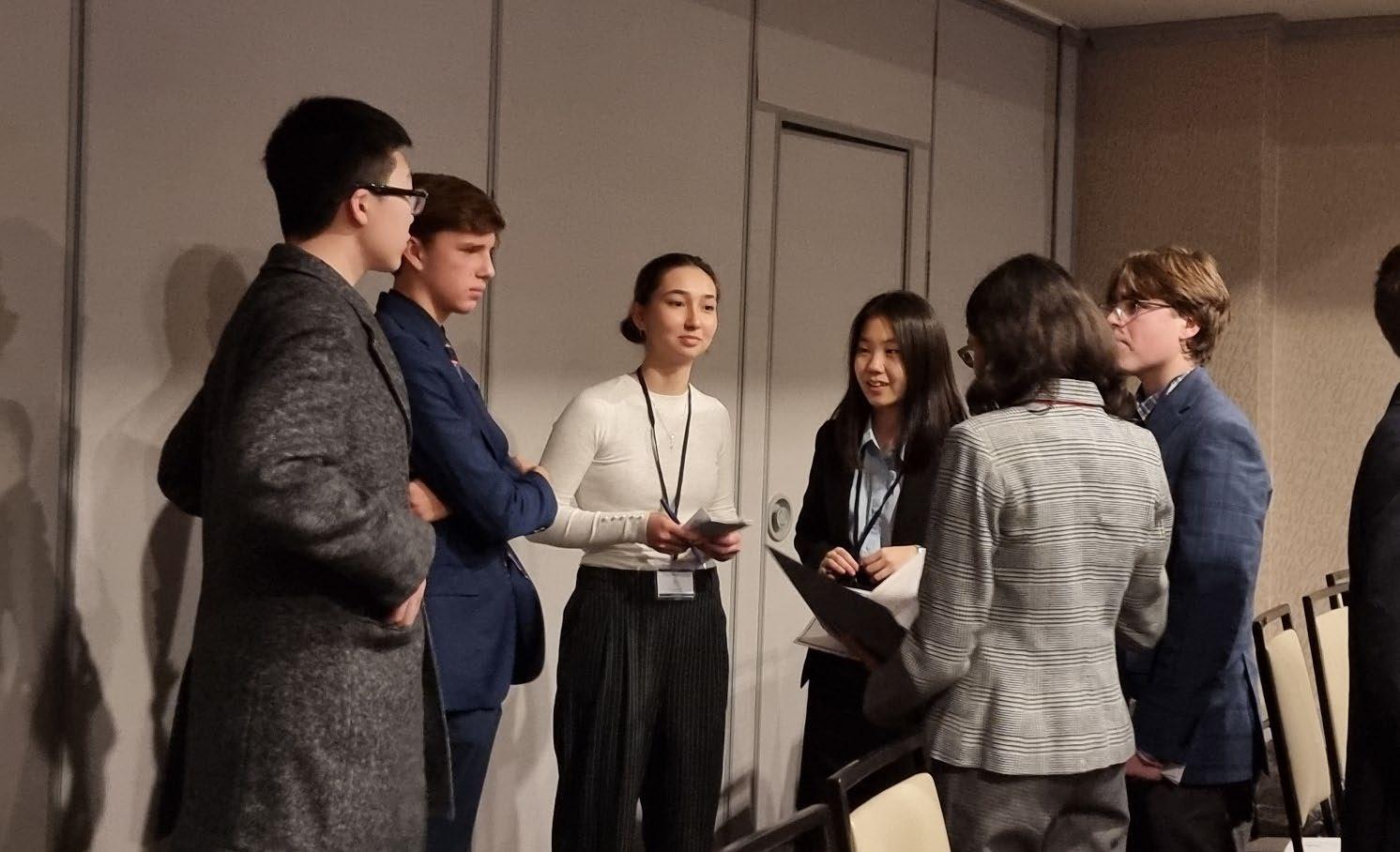
The United Nations was the world of experts and officials to me. I thought of the UN's actions as too ambiguous and ambitious. No achievement of the suggested level seemed possible and I felt like a single SDG could not change much. The training for the UN totally changed my mind. First, I learnt that the UN was fully aware of the difficulties towards achieving all SDGs. The UN officials stated that they do not think all SDG goals could be achieved by 2030 but are trying their best to get one step closer to those goals. This proved to me that the UN was not simply putting out impossible aims but giving out the most optimistic scenario to encourage people to maximize their contributions. When the standards are low, people hardly see the severity of the issue and act a bit lower than the bar. Raising the bar high up would help raise people's awareness as well. Next, all the SDGs were interconnected as the UN knew that only achieving a single sector would not be enough. The UN focused greatly on an SDG that could in turn meet other SDGs. according to UN officials. Solving SDG6 clean water and sanitation would help achieve SDG3 and SDG1 as well. The UN is working towards the same goal under different categories. Lastly, the UN is not only experts and officials but an organization that encourages everyone to participate. This can be primarily suspected from the website 'The Lazy Person's Guide to Saving the World' but I realised this further during the UNHQ tour. The last thing that the tour guide told us was that we now have the duty to teach our neighbours, donate when we can, and keep being aware of the issues. The fact that they directly encouraged us surprised me as it showed how the UN believes everyone could take action and be a part. The United Nations turned out to be outdoing my expectations with its aim to reach a better future.

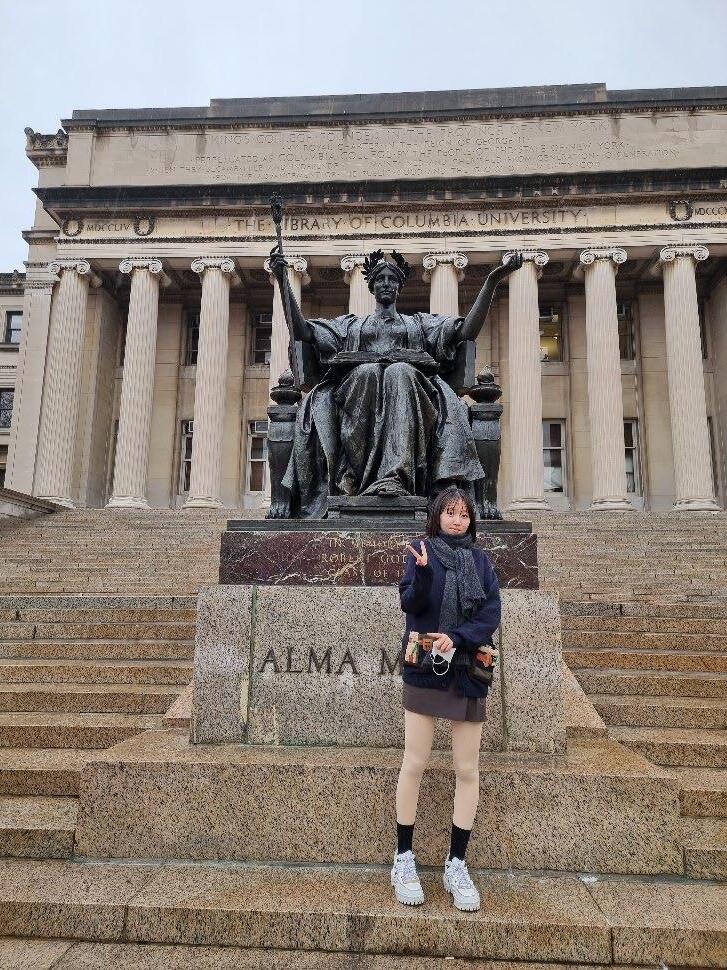
I remember looking forward to going to one of the most prestigious and renowned universities in the world. The excitement alone was enough to get me worried as well, but nonetheless, having the chance to listen to people speak about their values on the UN and various committees was exhilarating.
Participating in YMUN, I was able to voice my opinions on a topic that I was not very familiar with. I don’t think I would’ve had the chance to do research on drugs this deep if it weren’t for the YMUN. Having the chance to learn about what my own country was doing on the issue of drug control and trafficking, and comparing that to the methods of other developed and developing countries in the world, was an exciting 4-day journey on its own. I had the opportunity to listen to other students my age who were excellent speakers, and also learned about various speaking methods as well. The glint in each of their eyes, eager to learn and share with others, was shared mutually by me as well, and the collective enthusiasm acted as an effective driving force for all.
Other than model UN, it was also a great experience to experience the Yale campus guided by an enthusiastic student. Yale Day was very enjoyable, and I remember gawking at the paintings at the Museum for British Art. The campus was filled with history in its making, and the story everything created altogether was beautiful.
Overall, YMUN was an event for new things to learn about and making friends. I still can’t believe that I had the chance to participate in one of the biggest model UN competitions.

UN was thrilling. All these big people, coming down to this classroom just for us? It was both an honor and a great opportunity.
I, unlike most of the students who went on the trip with me, wasn’t very informed about the UN or what each of its committees do, so was initially worried that I might not be able to understand much of the lectures. Well, that was proven wrong on the first day, and for 4 days I was able to take notes on some of the most successful projects and programs that various committees of the UN have carried out to realize the SDGs. It was interesting that most of the speakers did admit that achieving everything that the SDGs aim to do is a long
stretch, and that so much more effort needs to be put in. Even though they knew that the goal was still too far away, these hardworking people, these workers for humanity, didn’t think of it as negative. Look at the progress we’ve made over the last decade! It really was astounding to hear some of their stories, and naturally as people with such passion and love for their work, the lectures were very entertaining as well.
The Holocaust exhibition on the first floor was a sight to see as well. There were artifacts from those who were actually there and pictures of troubled children standing in line, frightened of the Nazis. The UN Headquarters was filled with history, and one could easily see the love and adoration the workers had for humanity’s past, present, and future. It was such a privilege to be able to participate in this program and listen to these wonderful people, and I will cherish the memories I’ve made forever.
Branksome Hall Asia
Yale Model United Nations

I did not have high expectations for my experience at YMUN; unfortunately, those expectations were met. While I gained helpful knowledge from this experience, I found that MUN was not suitable for me and some parts were challenging negatively. In this reflection report, I will describe my experiences and takeaways from each part of YMUN, from preparation to the actual debate.
The first step in YMUN was researching and writing my position paper. While this part was not easy, it was the least challenging since it was closest to my comfort zone. However, writing a position paper was still a new experience for me, and I had to become accustomed to writing in a format that was unfamiliar to me. During this process, I gained in-depth knowledge about countries and topics that were previously unknown to me. Before MUN, I only had experience in traditional debates, where teams were divided based on whether they agreed or disagreed on a topic. I was surprised to learn that MUN had a much more complex process, as delegates had the option to choose their position based on the situation in their assigned country.
The debate sessions in YMUN consisted of moderated and unmoderated caucuses, both of which posed significant challenges for me. Despite attending preparatory classes, I struggled with ideas and how to present them. I spent the first few hours observing other delegates to learn the common speaking format in MUN. Once I had an idea and raised my placard, I found that the lack of opportunities to speak was the issue, not the lack of ideas. The chair selected delegates who had already spoken, limiting my participation. Unmoderated caucuses and forming blocs were even more challenging due to their lack of clear structure and guidelines for engagement.
Generally speaking, the experience was rather hard to enjoy since it mostly consisted of activities that caused me much discomfort. It could be said that one of my takeaways from YMUN was that I am not suitable to be participating in MUN. However, my experience at MUN affected me positively, as well. I acquired knowledge of global issues that were previously unfamiliar to me as well as meaningful insight into how global politics can work from researching as well as investigating how the delegates strategize and build relationships with others.
The primary goal of my participation in the UN Training Program was to visit the organization's headquarters and receive insights from experts working there. This made my experience both enjoyable and eyeopening. In this reflection, I will share my experiences during the program, including some of the lectures I listened to and the process of working on a team presentation.
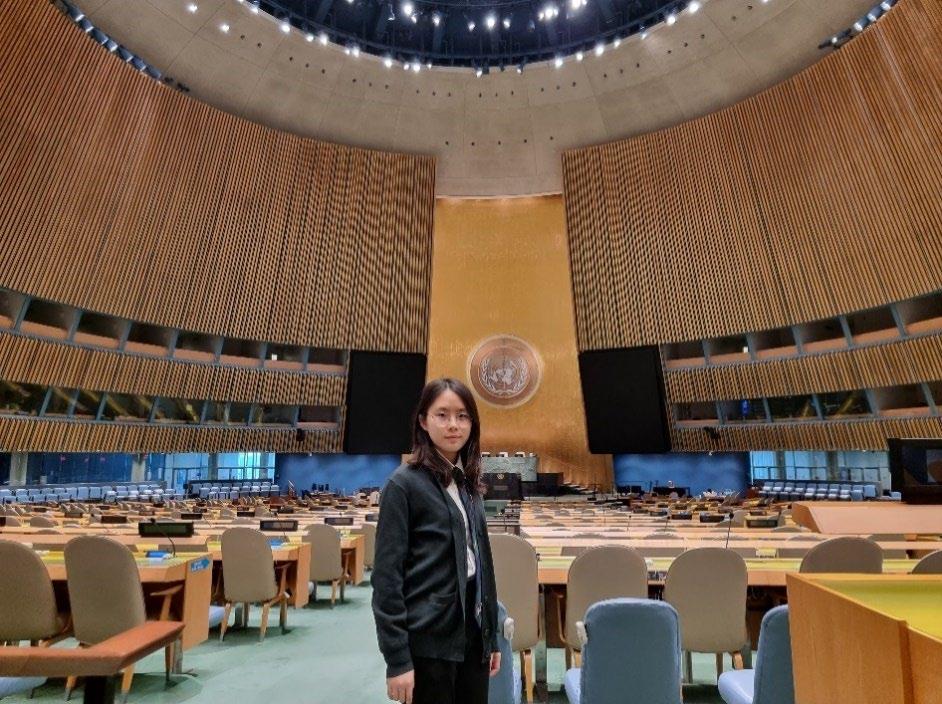
Compared to my previous experiences with UN Training programs, which were online, there were fewer lectures. However, the content was no less meaningful. Among the nine lectures I listened to, two were particularly memorable. The first, by Ralf Bredel, Director and Representative of UNHQ, covered SDG Goal #9 and gave me useful information about the work of UNIDO and how Goal 9 is connected to various issues linked to the other SDGs. This lecture provided me with new information and concepts specific to goal 9, including the definition of informal/formal economies and manufacturing value. These insights were particularly helpful in preparing our group presentation. The second, the last lecture about SDG Goal #6, was particularly interesting to me because it presented many ideas and connections I had not considered before. For example, I was surprised to learn that the lack of water access could lead to women experiencing violence and missing out on education or their career. After completing the program, I was able to use the knowledge I gained from this lecture in a school activity related to sustainable development.

Creating a presentation about one of the UN organizations or SDGs with a team was another primary activity, partly based on the lectures. Before the program, I expected teamwork to be less challenging since we were working offline, but that was not the case. It was harder to distribute work evenly and plan what topics to research because there was generally less time available for us to work on the presentation compared to the last time I participated in the training program. Despite the obstacles, my teammates and I distributed the work evenly between us. We chose industrialization in India as the topic, as we thought it could be an interesting case study of a country that is industrialized but has various environmental and social issues. Although I was not completely satisfied with the final result, I played a major role in structuring the presentation. The research process was rigorous, as it took much time for all the teammates combined with the effort of reorganizing them, but I also acquired much knowledge by sharing information with my teammates.
In summary, the UN Training Program was an enriching experience that provided me with valuable information on both familiar and new topics. During the program, I had the opportunity to attend insightful lectures by renowned experts. Moreover, the interactive nature of the program and the collaborative work we engaged in as a team provided me with a deeper understanding of the subject matter and allowed me to gain a fresh perspective on it. Overall, the training program was an excellent opportunity for personal growth and academic development.
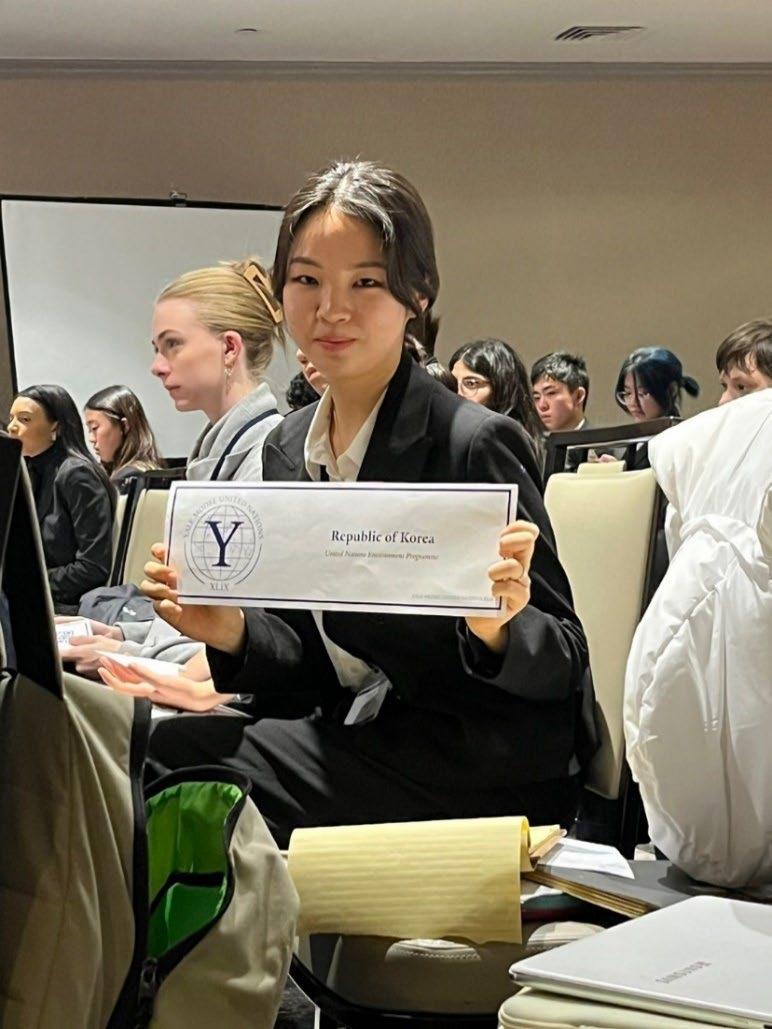

January 19-22: I had one of the most memorable experiences in my life, participating in the Yale MUN XLIV. Over the course of just 4 days, I found myself exploring and expanding my boundaries of public speaking skills, knowledge, relationships, and self-awareness.
In the beginning of the conference, I have to admit I was pretty scared. Not only was I nervous about the fact of taking part in such a big event, but I was also intimidated by my new surrounding. The campus, the conference room, and most importantly, the unfamiliar faces of delegates coming from all over the world stiffened me. However, as the sessions progressed, I got more and more confident and comfortable with speaking up. Though the size of the audience scared me from time to time, overcoming my fears allowed me to break through my limits to project and negotiate with the fellow delegates. Watching students around my age present and defend their ideas and later negotiate to produce resolutions of consensus, I learned much from them, and I am sure they taught me more about public speaking, debate, and leadership more than any lecture can.
What I unexpectedly loved about Yale MUN was that it came with so many fulfilling activities other than just the conference sessions. On the second day of MUN, I attended campus tours, lectures, and workshops hosted by Yale professors and alumnis for an event called Yale Day. During the campus tour, I got to take a closer look at the campus buildings, halls, dorms, libraries, and streets. I was also informed about some school and campus history, in addition to the real experiences in Yale as a student. During lectures and workshops, I got to learn about topics and fields I never payed much attention to in the most fresh perspectives ever. Though I couldn’t attend all lectures and workshops due to the schedule, I could attend the lectures by professor Carmen Black on black representation in the medical field and by professor Thomas Graham on why Putin engages in the Russo-Ukrainian War, and a workshop on entrepreneurship by a Yale alumni.
Though all three lectures and workshops were fully refreshing, Graham’s analysis on why Putin gages war introduced a truly enlightening perspective which caused me to view the tragic issue in a fuller aspect. Before the lecture, I only thought of the political relations betweent he countries when
thinking about the war. However, Graham introduced a fresh point of view, analyzing the conflict in Putin’s personal perspective discussing his possible internal conflicts. Graham’s lecture, along with many other, gifted me the vision to face the world in multiple perspectives, thinking critically in diverse dimensions, instead of blindly accepting the conventional information exposed.
In addition to the academic aspect, I was able to make truly admirable friends in my committee. The Yale MUN was an amazing opportunity to meet people in my age from all over the world with different passions and backgrounds. New people with different cultures brought fresh and innovative ideas, which fully inspired me to learn more about the world and myself. Their passions and dreams triggered me to think deeply about my personal interests and desires for the future. It was an opportunity for me to reflect on my life so far and look forward to a path I wish to explore further to hopefully make our world a better place.
The 4 days at Yale was a truly unforgettable experience which made me reflect on and look forward to my life. In addition to the regular MUN conferences, the unexpected tours, lectures, and even the party contributed tremendously to make my experience truly memorable. The Yale MUN presented me with priceless inspirations that made broadened my perspective on the world, and I hope I can carry the skills, knowledge, friendships, and passions I have gained throughout the course of days to steer my future towards my unaffected passion.
For a course of 4 days following the Yale MUN, I got to enter the United Nations Headquarters for its youth training programs. Not only was I given the opportunity to receive lectures from professionals from the actual UN, but I also got to tour the building, experiencing the functioning of the organization first-hand. The training provided me with 9 lectures discussing a variety of topics handeled by the UN, and though every lecture was based on targeting its own unique issue, it came across me that, afterall, the whole world shared similar problems and most problems were interconnected, influencing one another. The biggest takeaway from the lectures combined was that the overarching issues the UN takcled were not from a single cause, and required the embracement of multiple sustainable development goals intertwined to be addressed effectively. However, because the causes of the problems were so complicated and intertwined, solutions were mostly very difficult or impractical and often needed international cooperation. This reality strongly resonated with the quote “the UN was not created to take mankind to heaven, but to save humanity from hell”, for countless problems crucial to the wellbeing of humanity strongly relied on the efforts of the global community to be improved. Personally, the UN Youth Training Program was a truly enlightening experience which opened my eyes to the broader problems existing in the world. It awakened me of great of a change the awareness and passion an individual can make for the ultimate betterment of our world, and inspired me to become a global citizen who can bring humanity a step away from hell and towards heaven.



An auditorium was full of youth from distinctive countries. It was a sight that the world missed for the last 3 years of the pandemic. I have never seen a landscape with such diversity in my life. With excitement, the 49th Yale Model United Nations started on the evening of January 19th, 2023.
Attending the Yale Mun and UN Training Program was a challenge for me. As a high school senior, I had tons of work to prepare for the next semester. Spending 10 days in the United States during the short winter break and preparing for the MUN would demand a lot of time. In November 2022, however, I decided to take part in this program following the voice inside me: “This is an opportunity that you don’t want to miss.” I found that voice to be true.
Every day, I started new relationships with friends from different countries. The beautiful Yale campus, the talented delegates, and the enthusiastic sessions aroused something inside me. Receiving great inspiration from the interactions, each day of the YMun was so meaningful.
Having so many events in a day may be overwhelming sometimes, but the experience didn’t distract my mind. Rather, being with various people made me learn about myself. I could look back on myself from an objective perspective and reflect on my personal characteristics. Since the competition was a succession of first encounters, I had to be certain of who I am and what I like, to introduce myself appropriately. The experiences reaffirmed the value of diversity. I have realized the importance of sharing individual insights: it expands the group’s ideas and promotes growth in personal perspectives. I could refine my thoughts by comparing mine with others. The benefit of MUN is not only in the proficiency in impromptu public speaking but also in the skill for social engagement. After the committee sessions, I made new connections and found many friends with similar concerns. Starting a conversation with a stranger, exchanging notes, and forming a group by hinting at one’s perspective, I was being trained in an intense social decision-making situation. Experience always grows you the fastest. Through my first in-person MUN, I could identify myself clearer in a group environment.
Aside from what I gained through the Mun conference, the program showed the student life at Yale University. During the Global Exchange Program, Yale professors attended the meeting and lectured on topics like journalism, platform economy, and bioethics. The delegates who joined in Global Exchange Program were intelligent and asked questions without break. Thanks to their acuteness and the respectable Yale faculties, GEP opened me to new knowledge. I am grateful to the professors, chairs, and Secretariats at YMun for
introducing the great environment of a prestigious college like Yale.
Yale Mun led to self-discovery and ignited ambitions for my Senior year in high school. This was an experience that I would never regret!

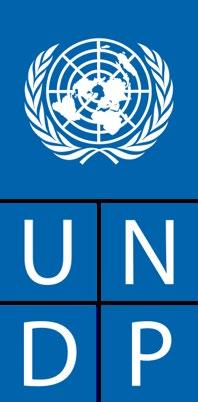
An illness affects us physically and mentally. Since our body is directly influenced by a disease, it is easy to neglect impacts other than the bodily ones. Epidemics like Covid-19 and HIV especially cause repercussions throughout society. For instance, covid-19 has transformed our ways of living. Most of the economic activities changed to online, children attended online classes, and lived with half of their faces covered by masks. What would be the expense of the covid-19 in the socio-economic sector? A consultant of UNDP, Roy Small, mentioned that the younger population seems unaffected by the pandemic when only focusing on mortality. However, considering the missing classes of the children, it would have had unmeasurable disadvantages in their education and development.
Achieving ‘SDG (Sustainable Development Goals) 3: Good Health and Well-Being’ requires a medical and social multifaceted approach.


HIV/AIDS is deeply related to social factors. About 2/3 of HIV infected population lives in Sub-Saharan Africa 16. HIV/AIDS can be controlled through ART (Antiretroviral Therapy), but most of the people living with HIV in Sub-Saharan don’t receive proper education and treatment for the disease. Historically, HIV/AIDS has been tied to the prejudices against MSM (Men who have sex with Men), making the prevention and the testing more complicated. The stigmatization of HIV/AIDS patients not only discriminates against homosexuality but also strengthens the systematical alienation of HIV-infected heterosexual women and girls. In fact, women and girls represent nearly half of the world’s living with HIV people. This result drives by diverse societal structures with gender inequalities, sexual violence, and health service issues. Also, young people ages 15-24 account for 31% of newly confirmed HIV infections, causing premature death.
The consultant introduced the Zomba study in Malawi 17 which shows the handling of structural factors to reduce HIV risk. In the study, funding girls in Malawi for school resulted in a 64% decrease in their HIV exposure. The research suggests that analysis and management of social structure are important in preventing a virus. Along with the study, Roy Small mentioned improving inequality, governance, and resilience is necessary to deal with health problems. His lecture provided insight into the proper control of a pandemic and that building a sustainable social structure is crucial to the better health of the people. He also brought up the economic burden of NCDs (Noncommunicable Diseases). NCDs, such as diabetes, lead to premature death and treatment costs that diminish productivity. The combined effect of covid and NCD produced a great economic loss, and NCD patients were more vulnerable to covid 19. During Q&A, I asked him about the Korean HIV Prevention Act that criminalizes HIV/AIDS patients. As a UNDP Consultant who focuses on legal work, he answered that it is crucial to inform the public about the problem of the law and sustain the efforts to make an inclusive process. Referring to ‘neglected tropical disease,’ he emphasized investment for the neglected ailments. After his session, I could think about the framework of future pandemic prevention, realizing that experts from the medical, economic, social, educational, and so on should gather to analyze the effective measures. The overview of UNDP’s mission on SDG 3 was meaningful since everyone could empathize with the destructiveness of the pandemic.
16 “The Global HIV/AIDS Epidemic.” KFF, 27 July 2022, www.kff.org/global-health-policy/fact-sheet/the-globalhivaids-epidemic/
17 “Malawi: The Zomba Cash Experiment- Does Paying Girls’ School Fees Reduce Their Risk of HIV Infection?” World Bank, www.worldbank.org/en/programs/sief-trust-fund/brief/the-zomba-cash-experiment.



Whenever there is a global crisis, the flow of capital is often viewed as the most accurate reflection and indicator of the effects. As the economy is an area of study that incorporates many factors, any groundbreaking event is enough to contribute to the graph. Accordingly, modern markets experience severe fluctuations and impediments due to various reasons. For example, the economic downfall brought by the Covid Pandemic led to world governments inevitably implementing huge quantitative easing policies. These policies return with consequences of inflation and skyrocketing interest rates. With three overlapping crises of climate change, Covid-19, and the war on Ukraine, possessing the ability to interpret thebasic shifts in the global market is necessary when understanding issues surrounding the world today.
The biggest effect of the crisis on the modern economy is stagflation, which is a combined word of inflation and stagnation. In ordinary conditions, prices tend to decline due to economic inactivities, as people cannot afford to spend money, creating leftover materials that need to be sold. However, stagflation is a mutant of the system that leads to high prices even in stagnancy. The lack of supplies to match customer demands while free capital in the market continues to increase created a mismatch in the fundamentals of economics. The mostrecent stagflation was primarily caused by quantitative easing policies in response to the pandemic. Supply was significantly reduced during this period due to a series of reasons. First, many companies and factories became nonfunctional due to restrictions. Second, international trade was reduced. On the other hand, demand was rising exponentially for reasons such as the rapid expansion of fiscal expenditure and the largest financial aid in history. As supply and demand started to move in inverse proportions, experts started to express concerns about stagflation. Nevertheless, such a serious economic crisis seems unlikely because of factors such as the low rise in price and the belief that trade reduction is temporary.
The Russo-Ukraine War started to cause stagflation in earnest. The unprecedented economic sanctions placed on Russia, the nation that acted as a hub for international trade, accelerated inflation while damaging the international supply chain drastically. Economic unbalance was brought about
by the war due to three reasons. Primarily, the import andexport of nations are blocked. Second, a large portion of global production is occupied to produce supplies necessary for war instead of fulfilling customer needs. Investments in war equipment are not only happening in countries at war but also in neighboring nations such as Poland and Germany. Finally, governments are tempted to print money to afford their spending and reduce their loss during the Covid pandemic. One of the effects of these factors is the rise in oil prices. The costs of fossil fuel doubled, leading to a shortterm effect of increased capital spending on oils by individual households and a long-term effect of more costly transportation of materials. Since supplies cannot be accessed easily because of sanctions, are costly because of dropping money value, and are expensive to transport, peoplehad to spend more money on daily materials even during economic crises.

The solution to this stunning event was an aggressive raise of interest rates by the Federal Reserve. The fundamental reason for an increase in interest rates is to reduce the spending of people. People, especially entrepreneurs with huge capital, are reluctant to buy or sell. By lowering the demand, supply will be able to meet expectations shortly while reducingthe overall free money in the markets. The multiple enthusiastic raise in interest rates by the federal reserve created the highest rate in 15 years of 4.5 and continues to rise. Although short-term damage is inevitable, experts view this action as a necessary sacrifice. Inflationand the current economic flaw will only worsen if left to the invisible hand to handle.

Global debt has also increased significantly as government expenditures experienced rapid expansion. In 2021, global governmental debt reached $303 trillion, a number that was never seen in history. To stabilize internal conditions in economics, public, and industries, investments in various areas to prevent any from collapsing inevitably were made. Factories had to keep up with increasing demands, while thousands of dollars were spent as subsidies to individuals and businesses. Governmental debt is crucial in international relationships and the economic growth of nations but is deadly when exploited, resembling any other tool in capitalism. If debts continue to increase, the ability and the credit of the nation are often questioned by investors and experts. This prohibits partnership and allocation of foreign capital, which are crucial factors in areas of economic expansion and opening trade and markets. China and regions of East Asia especially experienced massive growth in their national debt, resulting in the prohibition of cheap, affordable production of materials.
One of the many solutions to debt problems is debt limits by each nation. In many meetings, global officials have agreed that it is crucial to place restrictions to prevent national debts from increasing continually. The United States of America and Denmark are the only nations that possess regulations of debts based on the amount of actual capital, while other nations mostly restrict their debt from growing up to a specific percentage of their yearly GDP. Debt regulations are suggested and mandated by international organizations to their members. One example is the EU, where its signatories cannot possess a debt that exceeds 60percent of its GDP. There are also methods such as manipulating interest rates. Lowering interest rates allow an easier payback of debt and prevents the debts from increasing dramatically. However, this is unlikely as high-interest rates are crucial in the modern economy to control the major problem of inflation.

The current peculiar unemployment status is also a crucial issue that should beattended to prevent long-term economic impacts. This was because the Federal Reserve took into consideration the Wage-price spiral, where excessive wage rises lead to prices rising and therefore promoting inflation. In today's America, the unemployment rate has never been so low. Jerome Pawell also mentioned that “⋯ below-trend GDP growth would be ‘helpful’ in fighting inflation.” Bringing Stagflation back to mind, the current unemployment status is an economic downfall with jobs left over. Many experts point out Covid-19 to be responsible for this phenomenon, as the global lockdown and relief funds provided encouraged the elderly to stop working. If this event happened in the past, it would not have been a serious issue as there are always new generations to fill in. Nevertheless, low birth rates created empty seats for jobs and occupations in fields that are not often favored and do not have high wages. Due to the lack of manpower, the EU even released a statement welcoming the Ukrainian refugee influx that will occupy such empty parts of society.
Eventually, the current status has left developed countries with two options. First, if global GDP recovers and national economic growth continues to increase, there will be a raise in average income due to the scarcity of manpower. This scenario requires the nation to prepare for heavy inflation by aggressively raising interest rates. The second possibility is if the national economy experiences continual downfall and businesses go bankrupt. Botheconomic growth and employment cannot take place during this period. In conclusion,unemployment will happen either way, although it is unlikely that the second scenario will come true unless another crisis strikes the world economy.
Global GDP also experienced stagnation. Before the pandemic, the national economies of countries were focused on growth. Money was invested to expand trade, create jobs, and produce materials to enlarge the economy and maximize benefits. Nevertheless, the Covid pandemic changed the key work of focus from growth to stabilization. Nations prioritize control and containment of the virus and fix the damage it has caused. Millions of dollars were invested to cure the scars of covid, while industries continued to shake and fail. Almost all nations around the globe experienced negative growth in GDP as national debts continued to increase. Although the global economy will recover, the speed of recovery will differ by nation based on population, economy, industry, and geography.

Climate change is unexpectedly a huge impediment to the modern economy. One of the biggest outcomes of the climate crisis is unexpected, unpredictable extreme weather. For example, Korea suffered torrential rain last year. Rural areas especially had to sustain heavy damage as farms were destroyed and the excessive rain prevented the growth of plants and vegetables to sell. Simply speaking, modern environmental destruction leads to the rise of various food prices and therefore inflation.
Yet, this is not the end of the crises the world faces today. Surprisingly, even problemssuch as poverty, gender inequality, and energy directly damage the modern economy. Therefore, organizations and governments must attend to various issues without leaving out any. Individuals, on the other hand, should possess an interest and gain insight and understanding of the world around them for the current situation to improve.
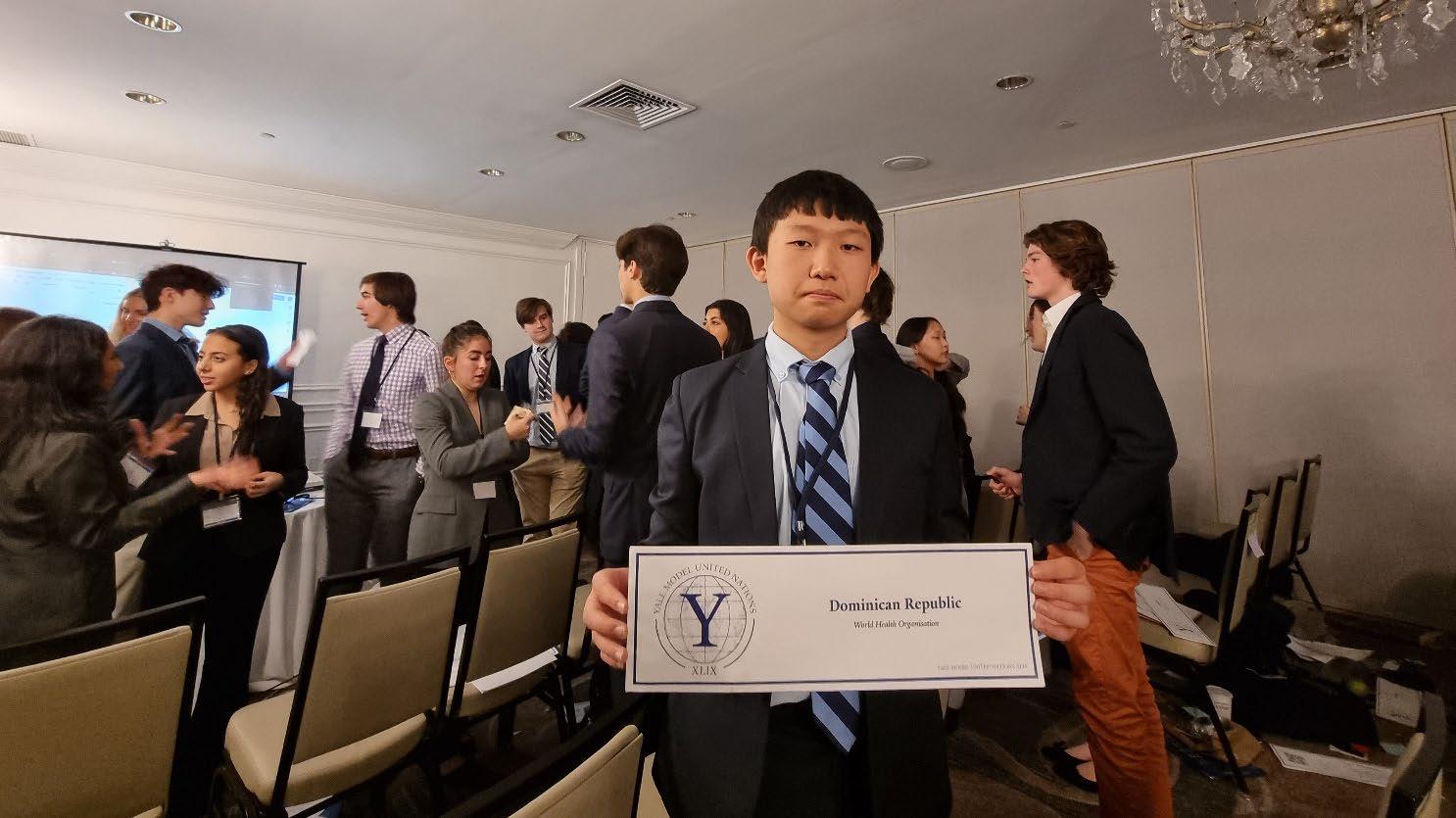

I have always enjoyed debating about things. From petty topics to the most serious ones, I liked to scrutinize the topics and logically explain my reasoning to people who had different opinions. This eventually led me to participate in YMUN XLIX. At first, I was surprised to see almost 60 debaters, or delegates in this case, in one room to discuss the same topic. Until that point, I didn’t have a chance to even imagine such a big group of vigorous people, so this got me anticipated like never before. Despite all of the excitement, I also did feel constricted due to the serious atmosphere that was present during the sessions. I eventually did go through that stage, and when I did, all I did was enjoy the sessions.
The topics that my committee was given were about the prevention of STDs and protocol for disease prevention in conflict areas, which wasn’t my field of interest. However, as I continued to do more research, I found interesting data and a whole new field of study. Especially on the topic of protocol for disease prevention in conflict areas, I could extend my insight regarding the effects of war. Before YMUN XLIX, I could only think of the geopolitical changes that it would bring, and I never thought about the medical factors. I also had to set my viewpoint as a delegate of the Dominican Republic, so I could experience what the delegates of the Dominican Republic felt and considered. To conclude, YMUN XLIX has both helped me improve my logical thinking through debate and helped me widen my insights by offering a different viewpoints and intriguing topics.
The UN Headquarters is where almost all of the international decisions are made. There, we could hear from the officers of different departments of the UN. The most remarkable officer who gave the lecture was from UNDESA. UNDESA gives statistics on matters that the UN is working on. It gives the path and things that the international society has to consider. Mr. Cheng vigorously presented to us the matters our world was facing, which were COVID-19, the war in Ukraine, and especially global warming. The fact that every problem has its basis in global warming was engraved in my mind since that day. Other officers explained urgent matters that we need to solve, and they were mostly on water, laborer rights, city plans, and more. These all are crucial to our everyday life, and they all have small and big problems. The thing that we could take away from these lectures is the fact that it is best to recognize the problems and solve them using what it takes to eliminate the factors that are undermining our daily lives. By doing so, we could become global citizens who can develop in a multilateral manner
Nguyen Huynh Ngoc KhanhVietnam Finland International School


“America the land of dreams” or so that’s what I have always heard of from others who visited it before me. I had always thought of going to the United States of America for many reasons but never have it ever crossed my mind that it’d be to participate in one of the most diverse and inclusive events, the YMUN. It was a short week, but it left me a lifetime of remarkable memories that I’d be willing to relive again anytime.
I myself had never been in a Model United Nation event, let alone such a big one. I believe there were thousands of delegates gathering that day at the opening ceremony. To feel like a fish finally meeting its waters is the phrase I’d describe from the experience. Delegates who attended the YMUN all originated from a different background, many travelled from the other half of the world like me to be there and that was what made the experience so special. I got to open myself up to new cultures and meet different people, it was a new level of diversity that I’d never be able to experience in my monoethnicity home country.
The YMUN offered many activities for delegates to participate in. I was unfamiliar with the basis of a Model United Nation meeting and hence to my surprise had a lot of culture shocks in

our first meeting session. I was the Delegate of the Republic of South Korea, set in the ECOSOCs committee. There were many open discussions and competent debates among the delegates; keep a reminder that these sessions were going 3 hours at a time and use for electronics was prohibited. I felt extremely underprepared and nervous on my first day, everybody seemed to understand what was going on except me. The fear of messing up kept me from voicing my own points in debate, and rendered me a quiet person within those sessions. I strongly believed at the time that this amazing experience would go to waste because of my social anxieties.
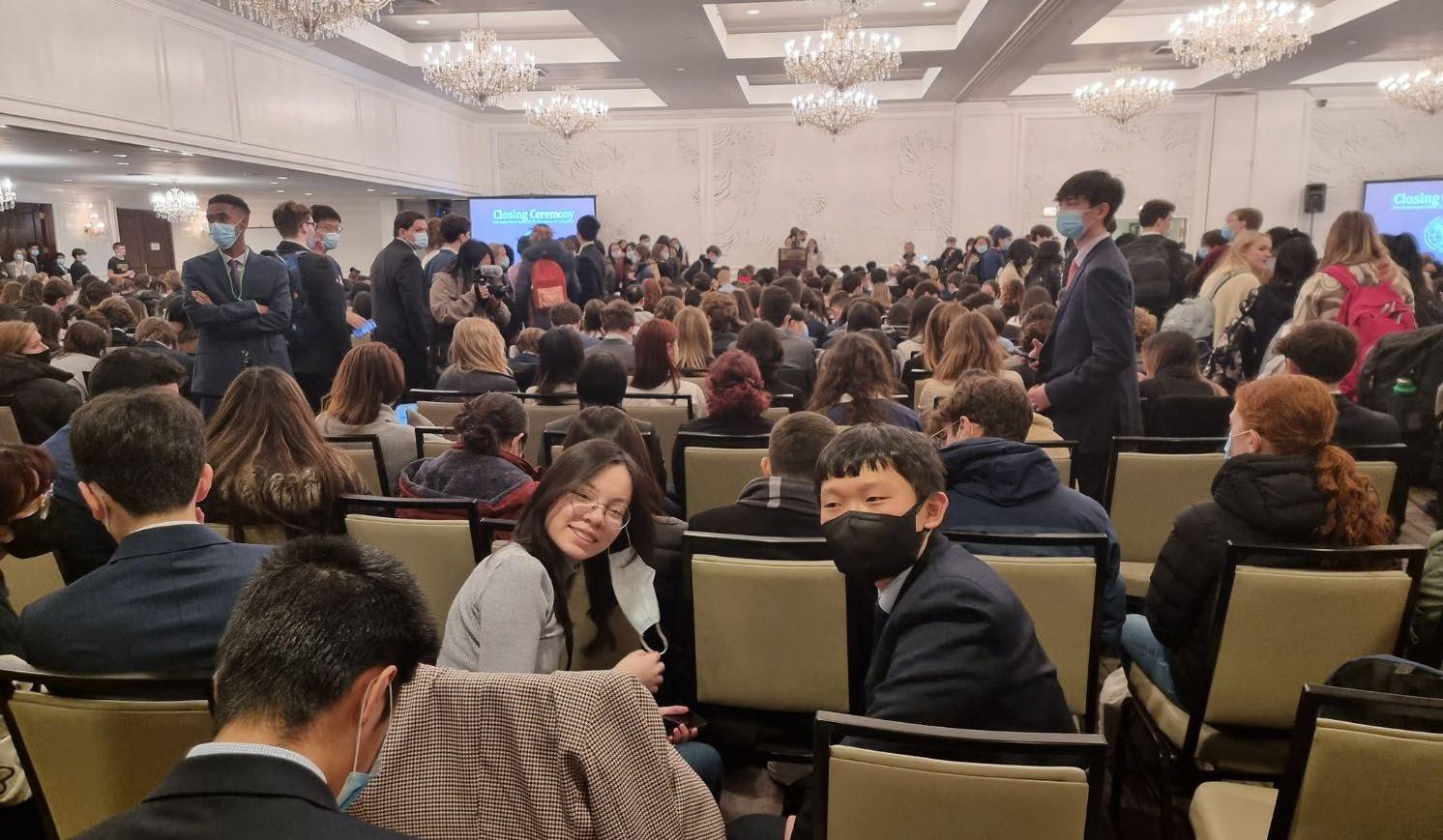
In the end, the reality was far different from my expectations. I was constantly trying to put myself outside of my comfort zone, in order to socialise and improve what I realised I lacked, confidence. To my surprise, as my confidence grew I also acquired new skills; I was stepping into debates with my fellow delegates, continuously growing, learning and adapting to the culture of MUN. I made friends along the way, so many that I still can’t keep count of. That was the magic of YMUN. I would describe the experience as eye-opening, for the first time in my life I was able to see a world outside of what I’ve always known; it made me realise how small I am compared to it, yet how special I could be.

If the YMUN experience were to be first in building confidence, I could only describe the training program as second to none in learning. It was with pleasure that I got to meet so many great figures who are contributing to shaping our current world. I felt much respect and appreciation for the UN representatives who took their time to share a piece of what our current world status is like. My peers and I had our fair share of questions and they were just as glad to answer them.

When I first stepped inside the Headquarters in the city of New York, I felt like a little child all over again. There was so much I didn’t know and so much I could learn from this experience, I had never been so much more enticed to learn. Our schedule was intensive throughout the 5 days we were there; being busy from dawn to sunset, we were burying ourselves in work. During that time in the Headquarters, I got to learn from my peers and picked up a lot of habits that kept me productive.
What really stood out to me was the presentation given by Miss Angelica Shamerina, an environmental specialist at the United Nations Development Programme (UNDP). She had shared much to us of her insights on the topic of Climate Change. She was straightforward in her answers and that was what kept it so engaging. A simple and common expression we heard in our daily life was to protect the Earth, but little did we truly understand the damage we’d have caused to our universal home. Her speech opened my views and motivated me to be a more active individual, I strive to participate in more campaigns in the future to raise awareness toward the goal of preventing climate change.
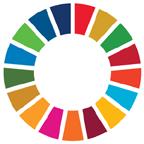

I was getting homesick by the time I reached this point of the journey. It was a strange feeling because I never thought I’d miss my home country so dearly. When you’re in such a diverse place, it’s less likely you’ll meet your representative. But it made the UN experience so special to me for that reason. As the only Vietnamese within the room, I felt proud to be there. It was with joy that I was able to represent my nation and its people.
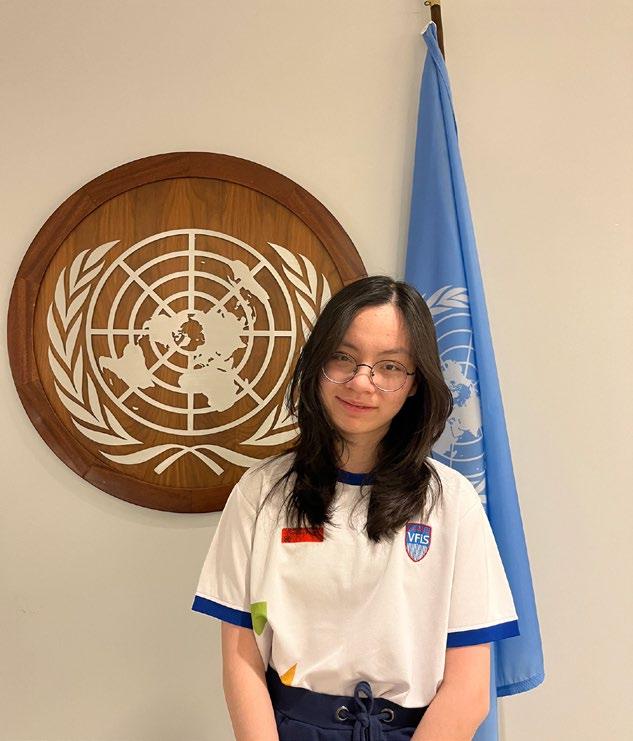
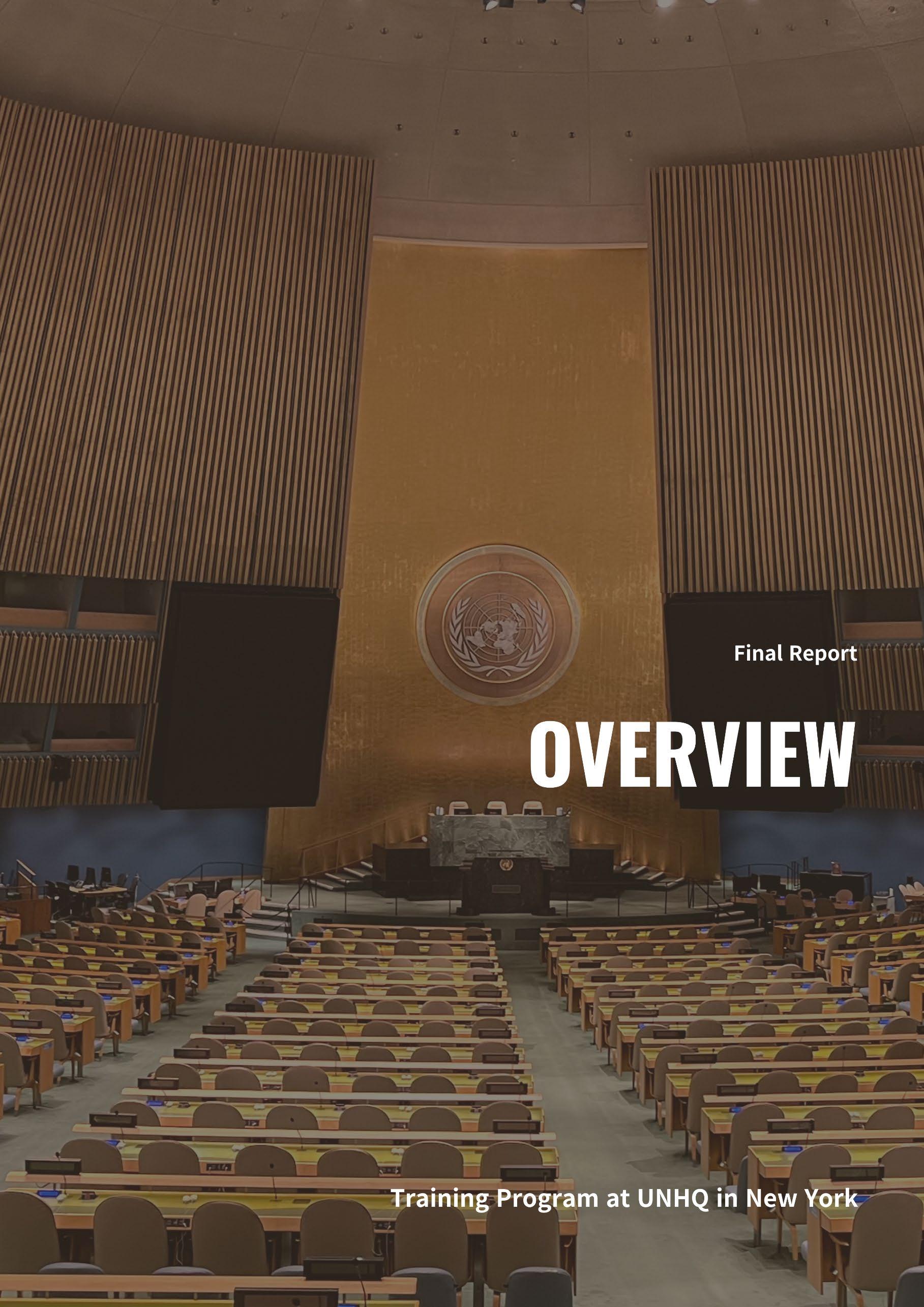
Status NGO Representative at the United Nations Department of Global Communications (UNDGC)

Program
Youth Education Programs and Sponsor Programs supporting the United Nations and its works, Global Citizenship Education Development, and Sustainable Development Goals (SDGS) in both domestic and international level
Website www.hopetofuture.org
www.hopetofuture.org
Email webmaster@hopetofuture.org
Contact +82-2-6952-1616
Hope to the Future Association (HFA) is a non-profit organization registered under the Ministry of Foreign Affairs of the Republic of Korea. Since 2014, HFA has been associated with the United Nations Department of Global Communications (UN DGC) as a Civil Society Organization, and in 2018, it registered as an official member of United Nations Academic Impact (UNAI) Korea, expanding its scope as an educational institution.
HFA's mission is to foster global competence and raise awareness about the importance of global citizenship education and international development among domestic and international youth. HFA provides guidance and academic inspiration with a global focus, empowering young people to become active global citizens who can positively impact their communities and the world.
To achieve its mission, HFA offers International Understanding Education Programs and Sustainable Sponsorship Programs. These programs provide a platform for youth to discuss and explore international issues, including the United Nations and its agenda regarding the Sustainable Development Goals (SDGs). HFA believes that advocating for the United Nations and its agenda as a common goal is essential for creating a sustainable and peaceful world.
Overall, HFA strives to inspire and empower the global youth to become leaders and advocates for positive change through global citizenship education and a focus on international development.
(1) UN Headquarters Training Program in New York and Geneva
Youth UN Training held at the UN Headquarters in Geneva and New York
Attending Lectures by UN High Officials and International Organization Experts such as the Secretary-General of UNEP and the President of General Assembly
Build Professional Knowledge on the SDGs and Global Issues that the UN mainly deals with
Discussion with the UN Ambassador of the Republic of Korea

(2) International Model United Nations - ’Yale MUN & Yale MUN Korea’
On February 2018, Hope to the Future Association and the Yale MUN Secretariat signed an official MoU and agreed to a collaborative partnership on organizing YMUN Korea
Participating in International MUN Competitions as Korean Delegation
Attending MUN Training by UN Ambassadors and experts from International Organizations
(3) Global Youth Forum on the United Nations – ‘Academic Forum on the United Nations’
The forum is a pedagogical four-day program that aims to improve the degree of understanding and professional knowledge on the UN and the role of International Organization.
The theme of the forum is ‘Sustainable Development Goals and Peace’

(4) Donation Campaign for Children in Africa - ‘Container of Hope’
Sending 40ft long container to African developing countries filled with translated English books, shoes, school supplies gathered from donation campaigns raised by students
Group Programmes Unit, Visitors Services, United Nations Department of Global Communication

Hope to the Future Association has acquired the status of an ‘Associated NGO with the United Nations Department of Global Communication’.
https://visit.un.org/
With kind cooperation and support of the DGC Group Programmes Unit, HFA is able to organize a diversified and a high-quality UN Training curriculum the Korean Youth every year. The Visitor Centre provides UN Expert briefings and guided tours to the visitors from around the world.
ⓒ HOPE TO THE FUTURE ASSOCIATION 2023. All Rights Reserved.
All images included in this report are copyrighted to Hope to the Future Association, except for particular images noted with references on the pages. Materials can be freely used for informational purposes only.
Produced by the Education Department
Production Director: Hyeonkyung Ha
Publish Date March 19 2023
Publisher Hope to the Future Association
Address 4F Dana Bldg, Bongeunsa-ro, Gangnam-gu, Seoul, Republic of Korea 06125
Telephone +82-2-6952-1616
Fax +82-2-538-5928
Website www.hopetofuture.org
Facebook www.facebook.com/hopetothefuture
Email webmaster@hopetofuture.org

